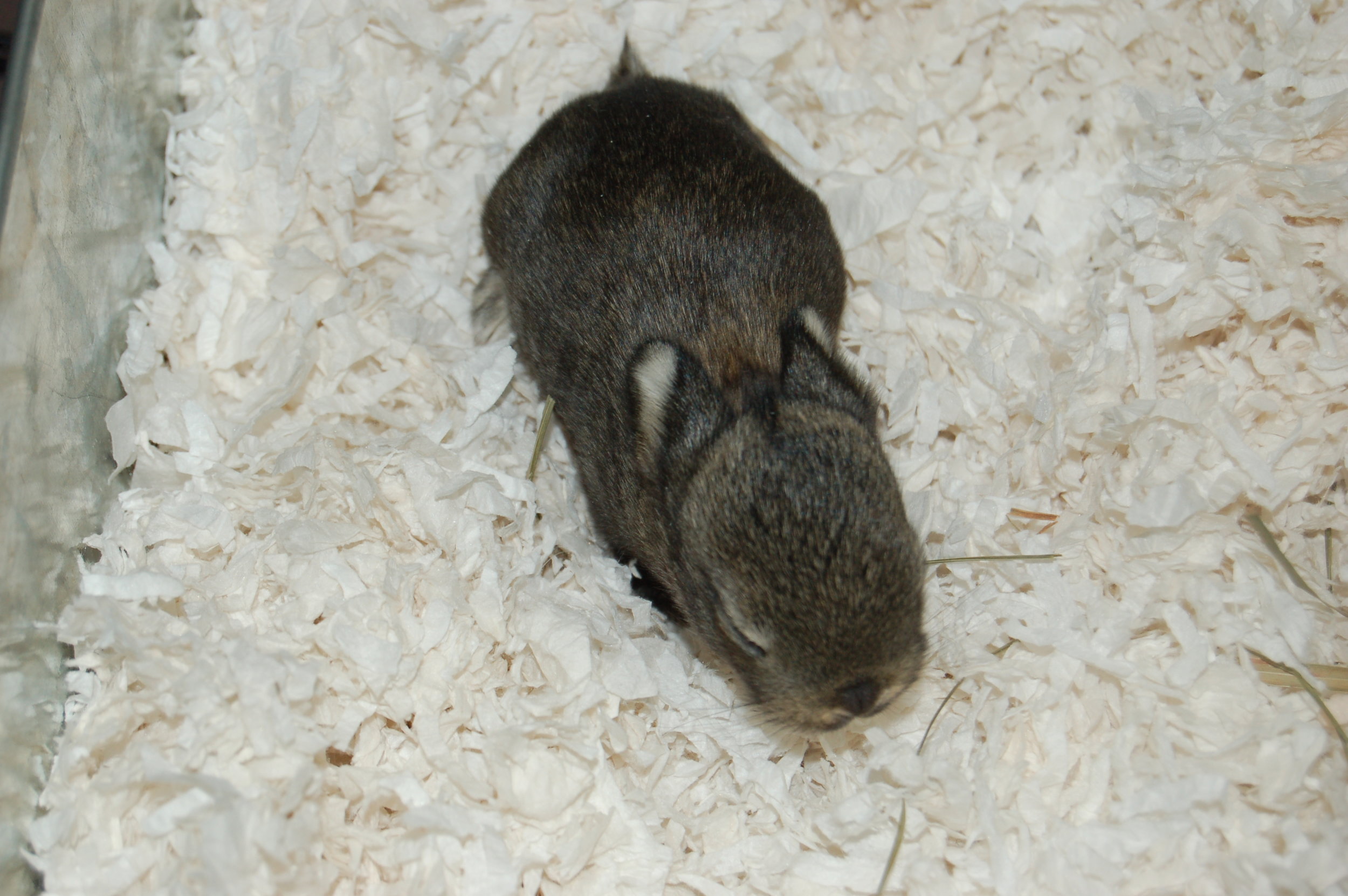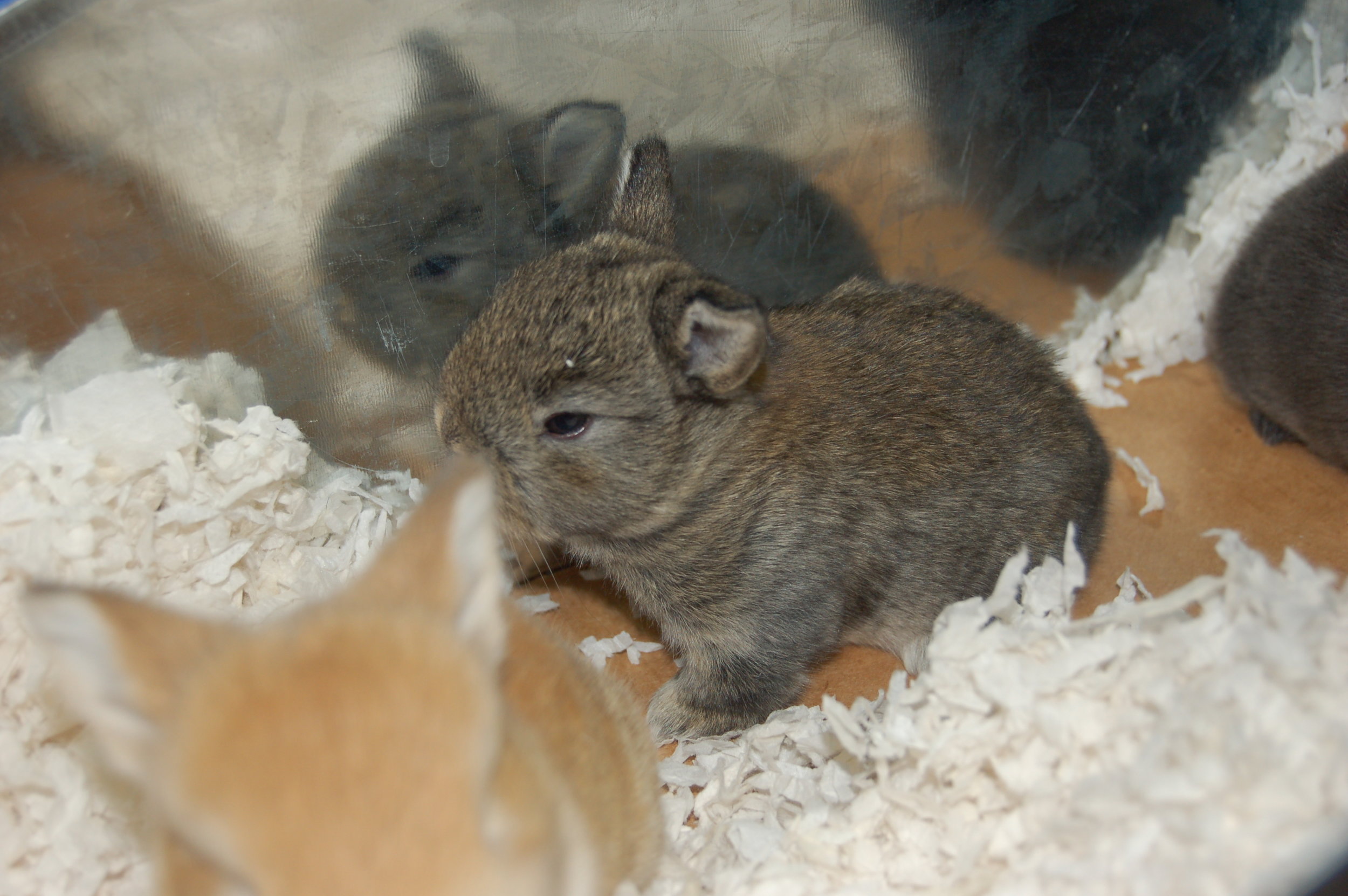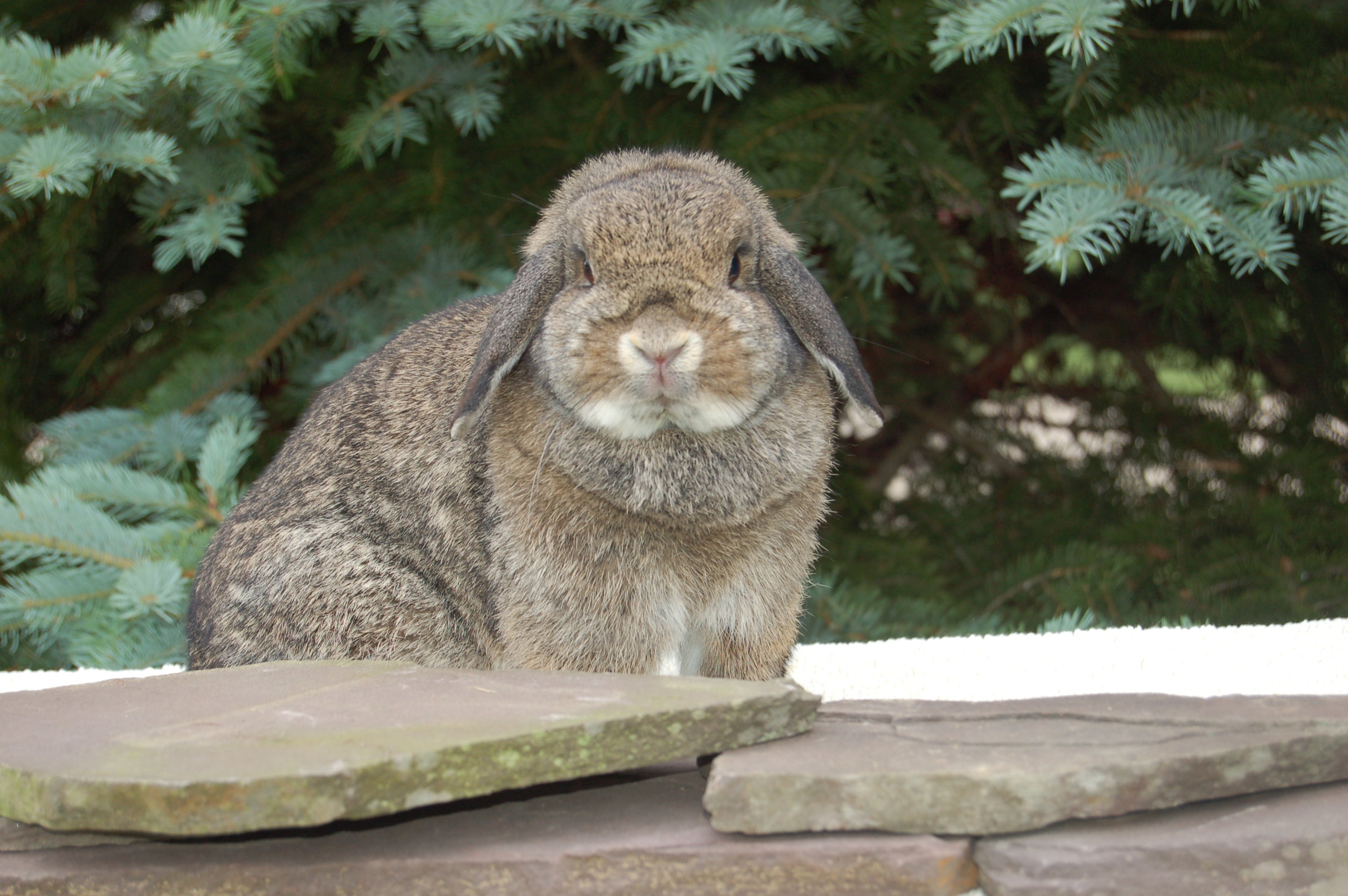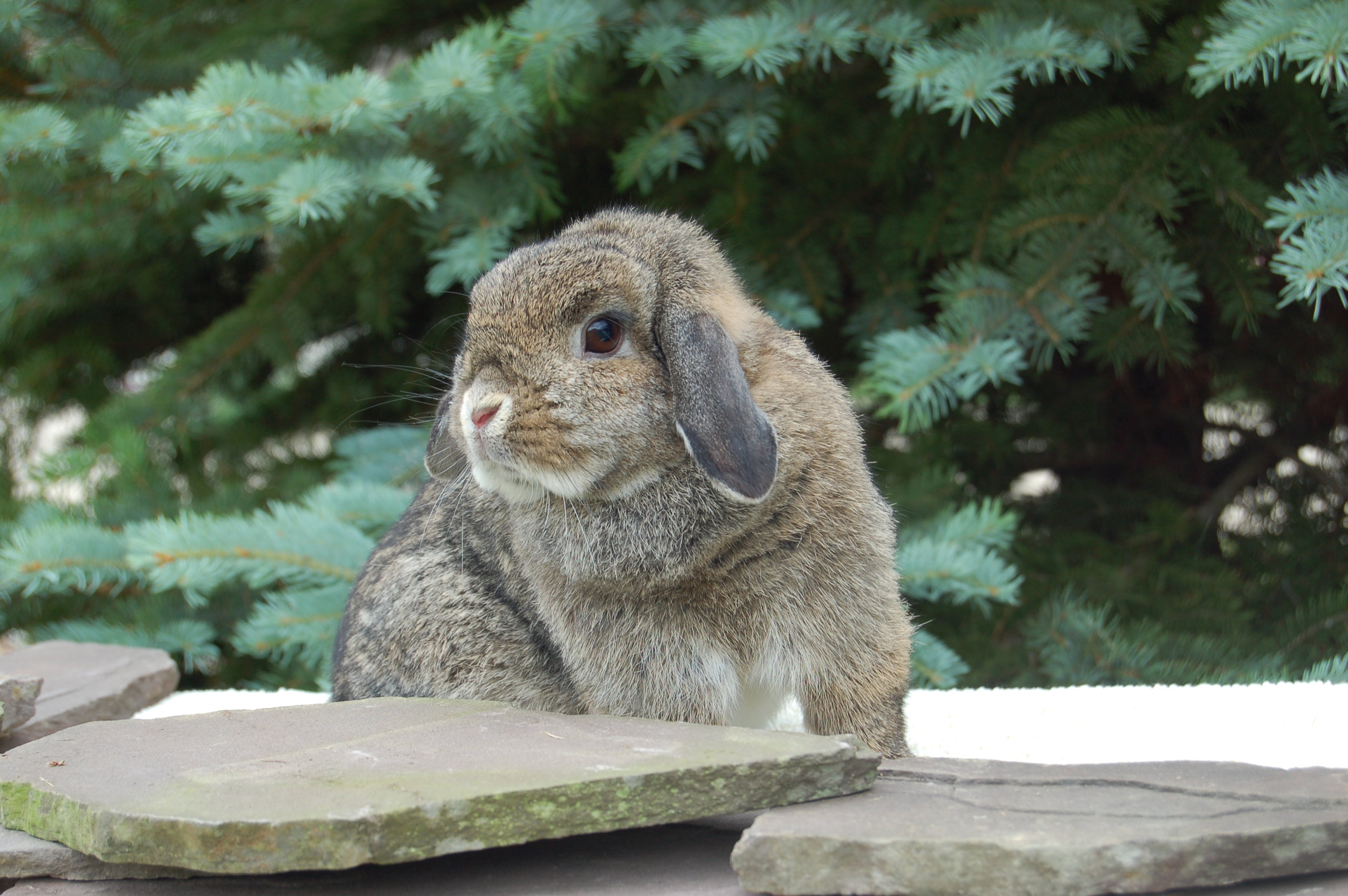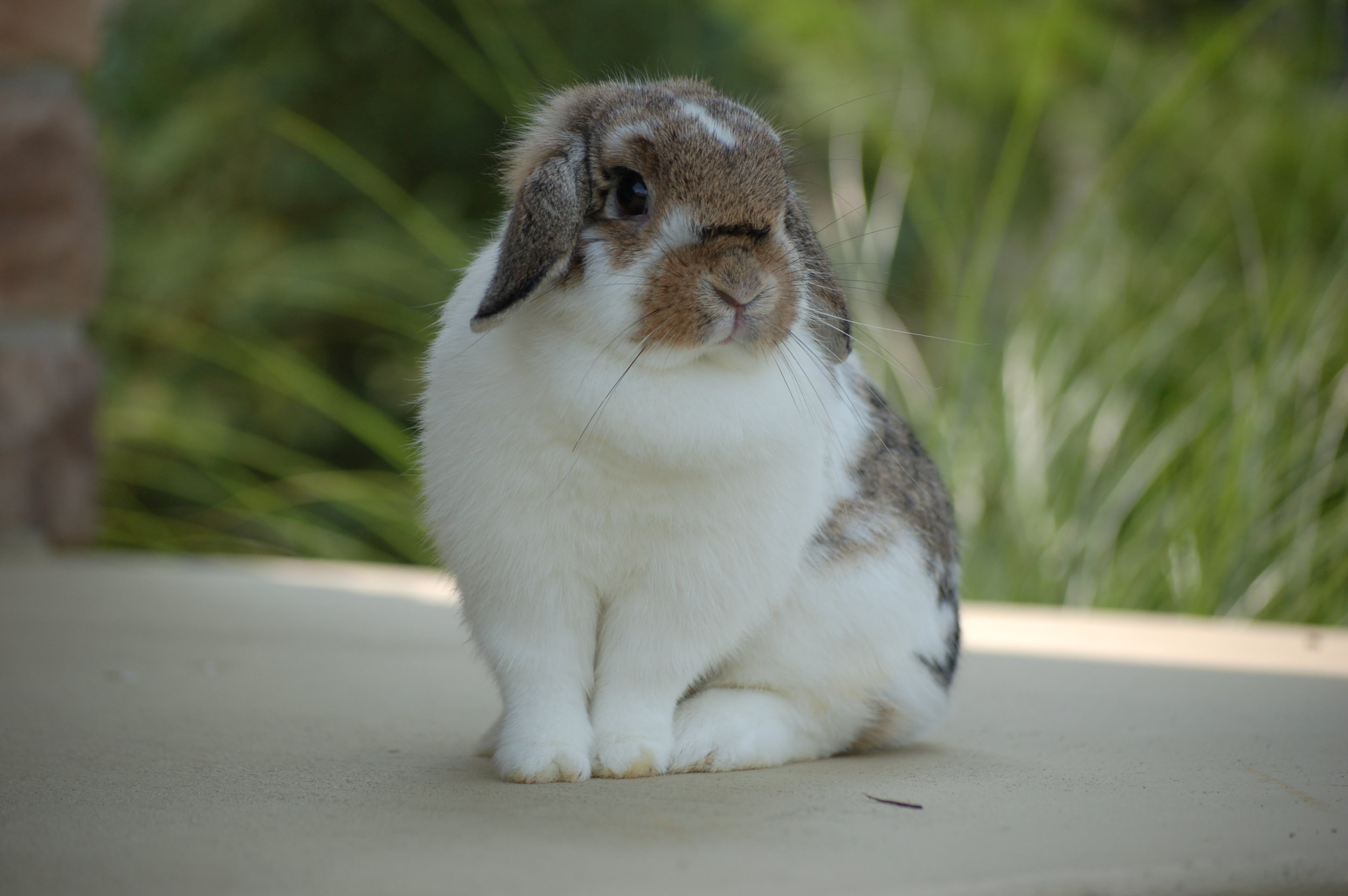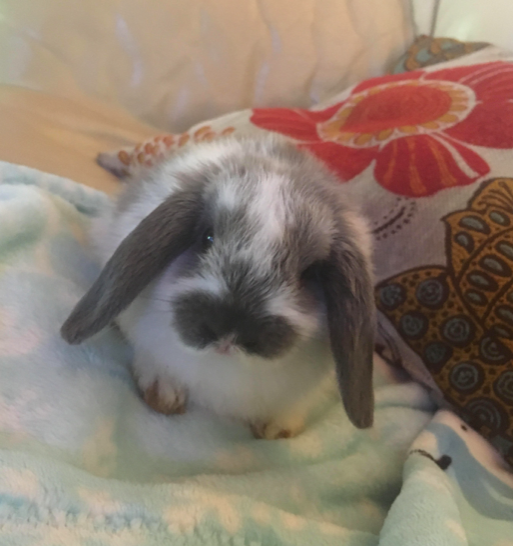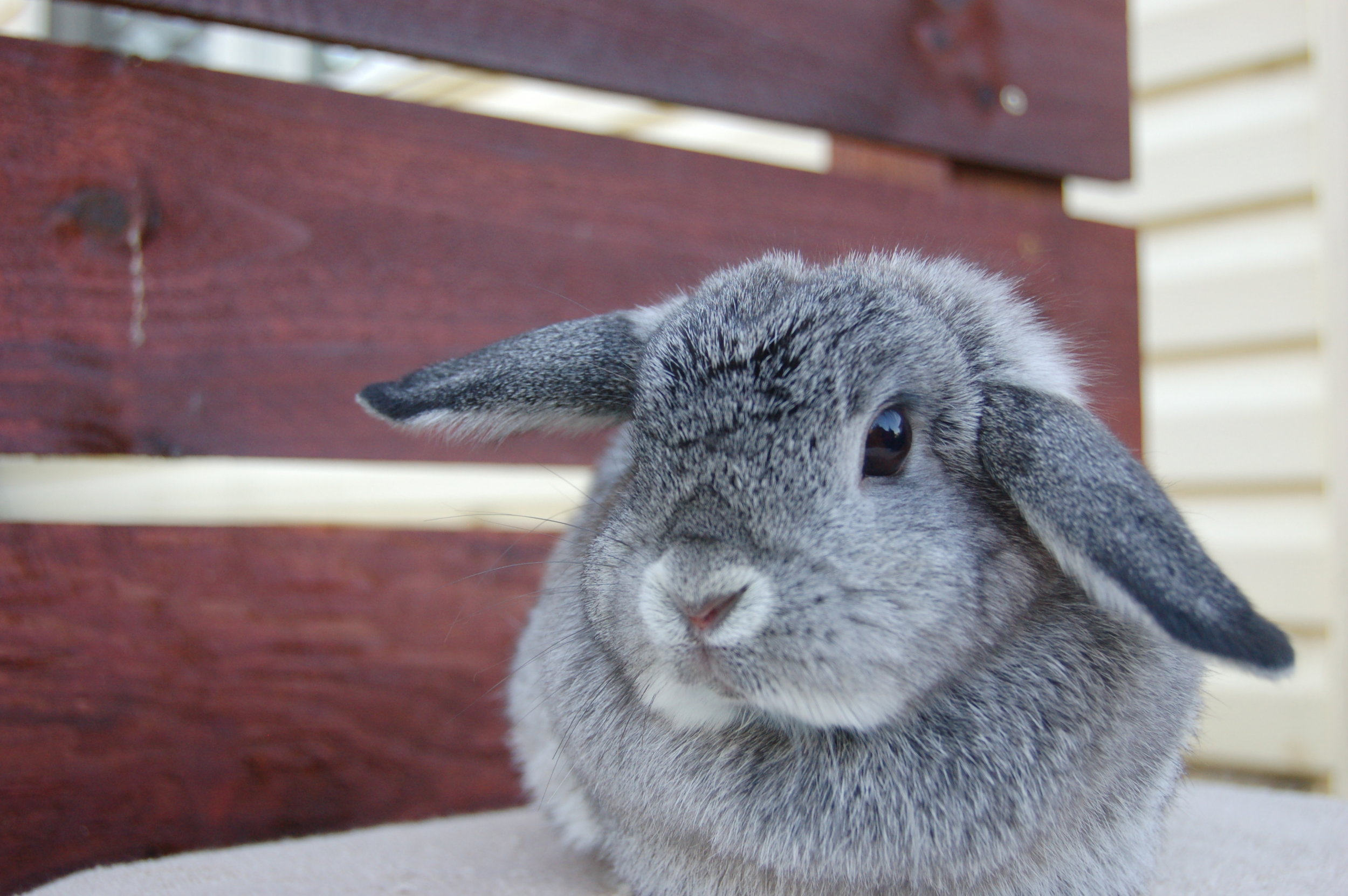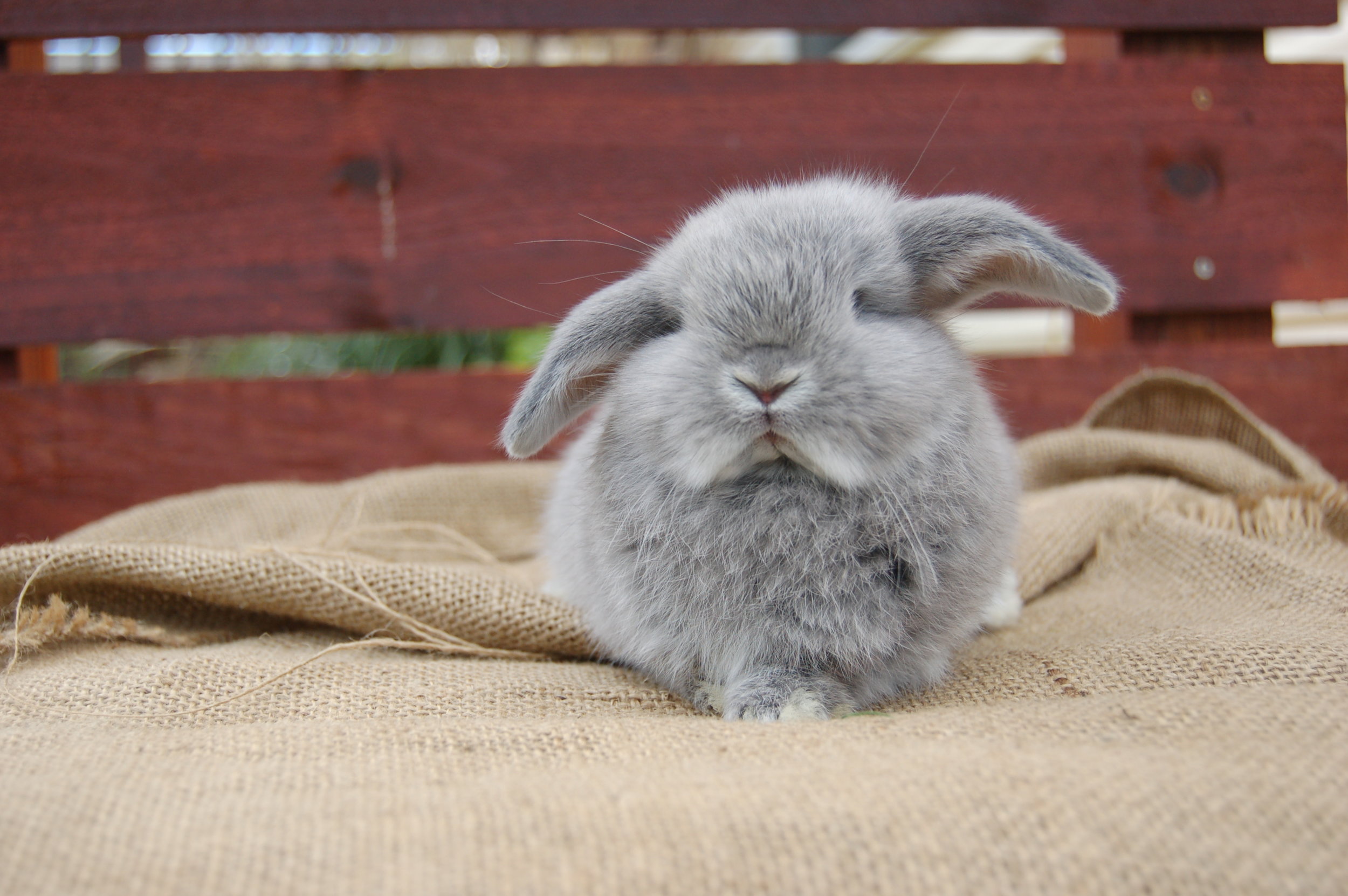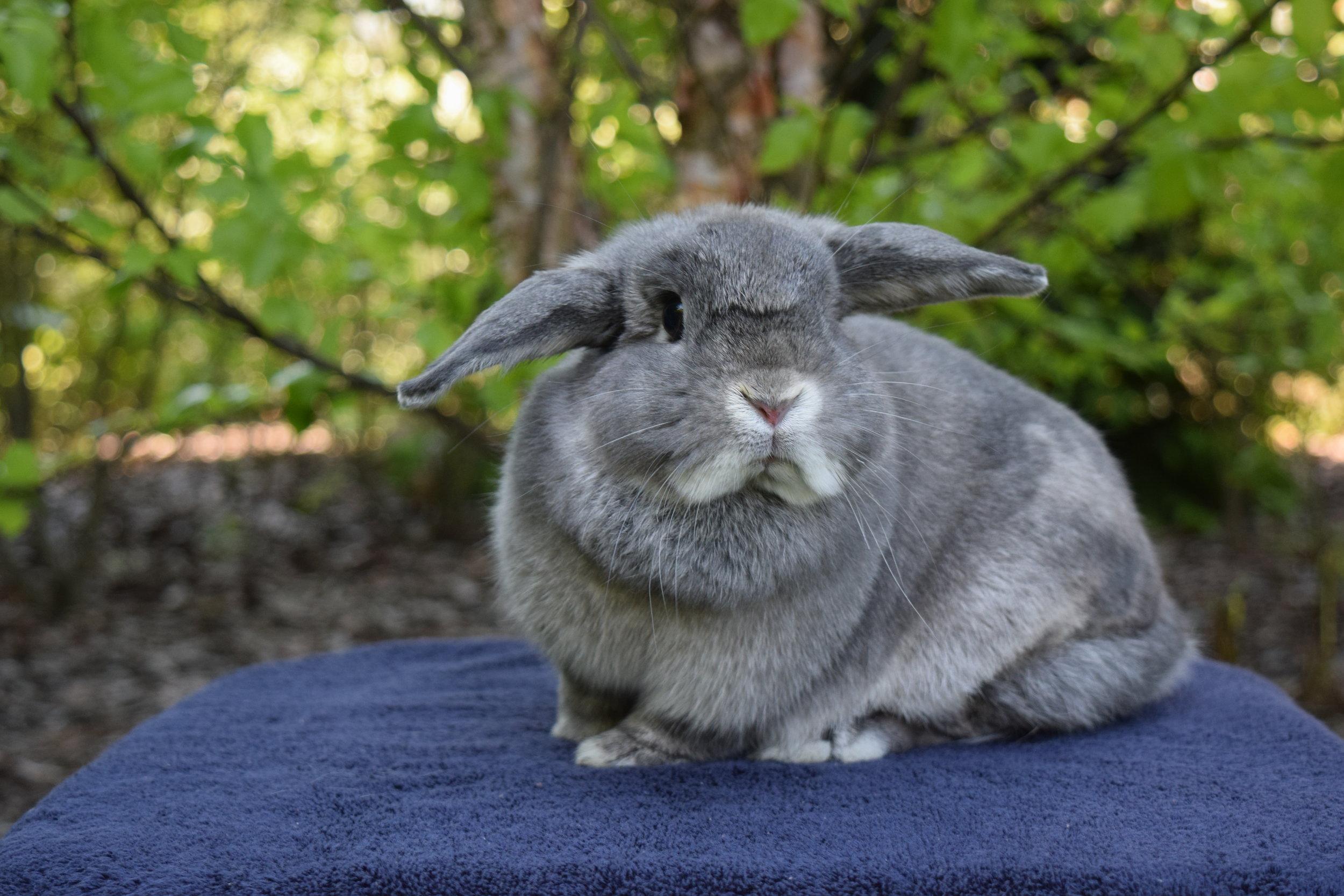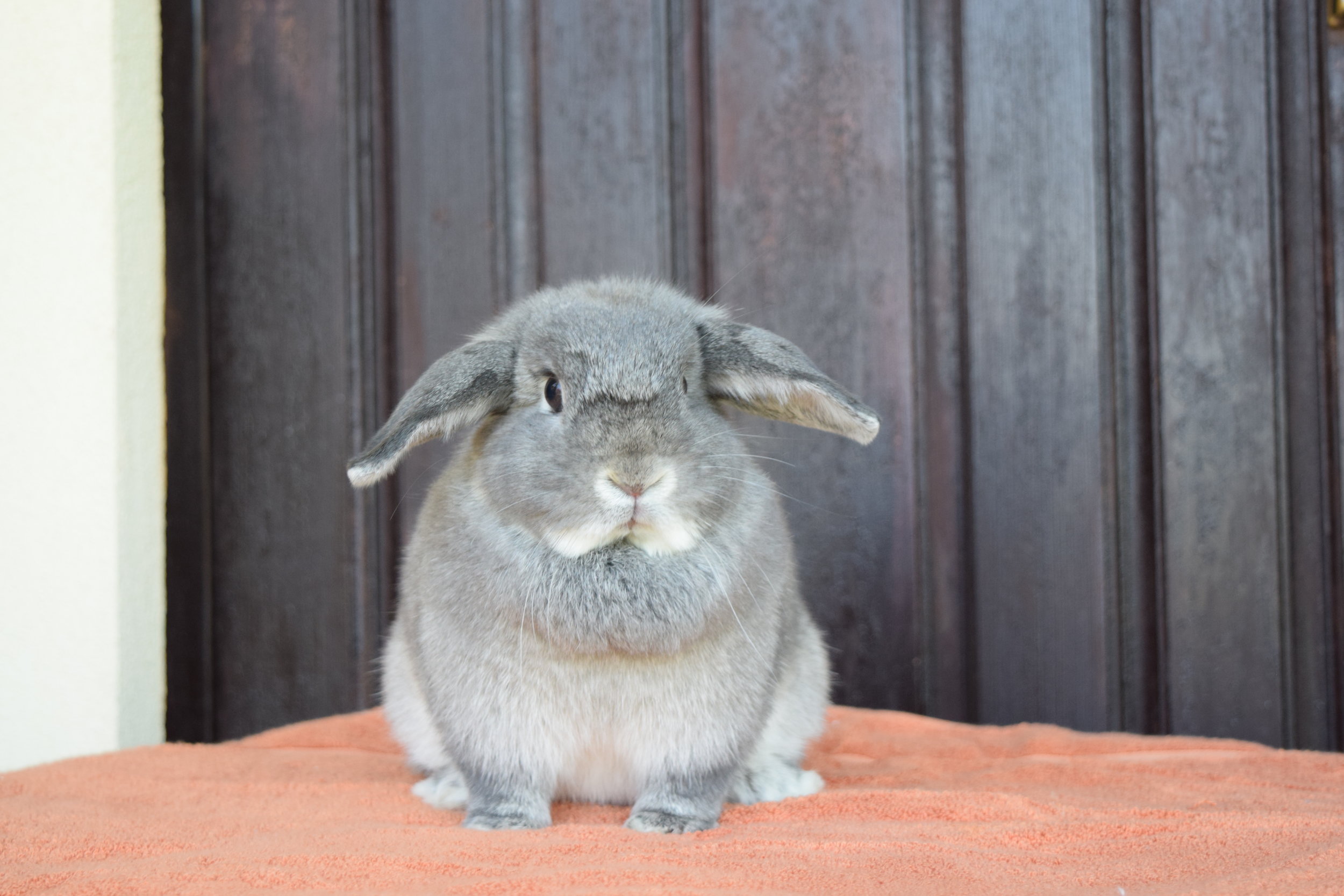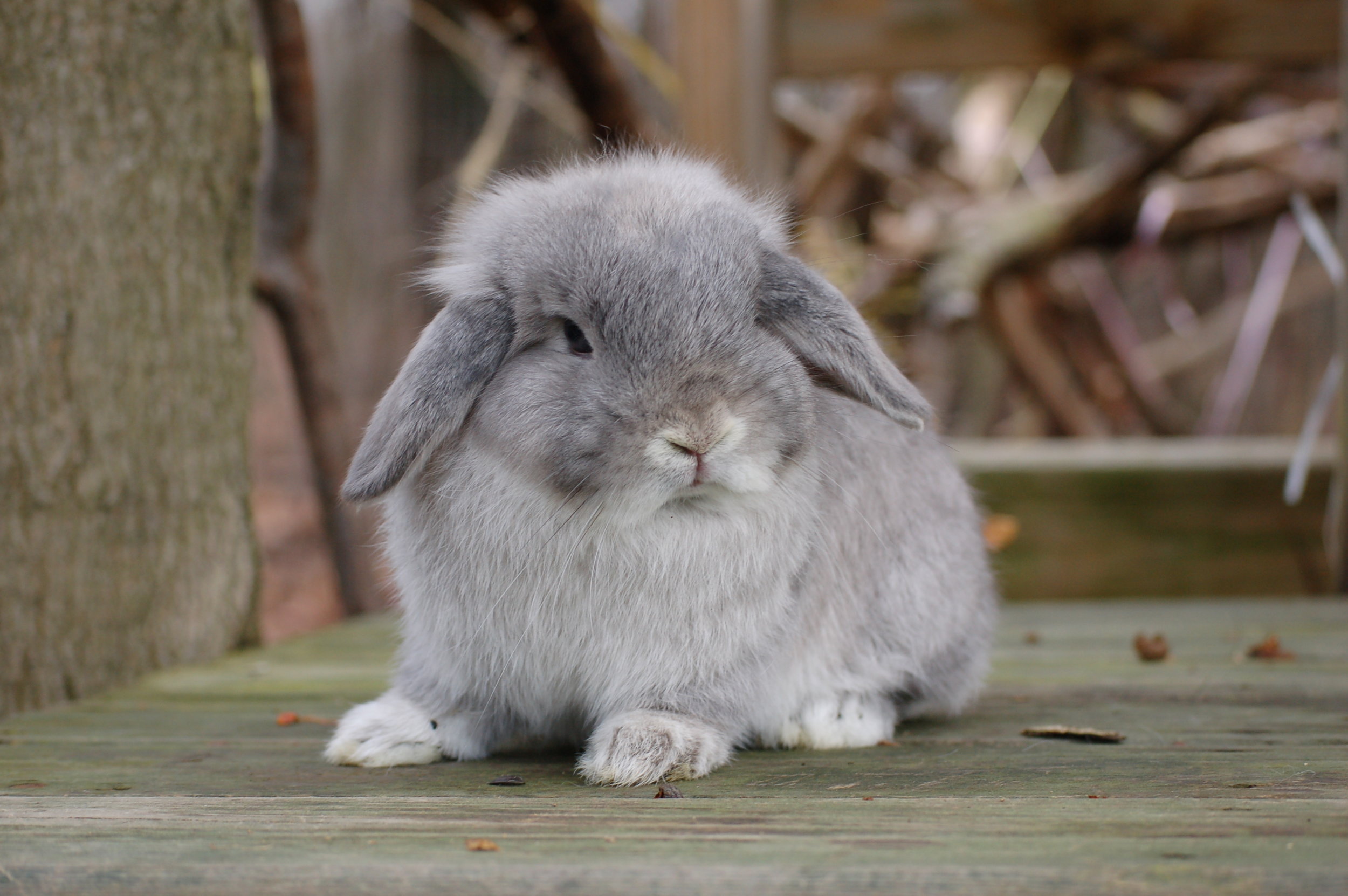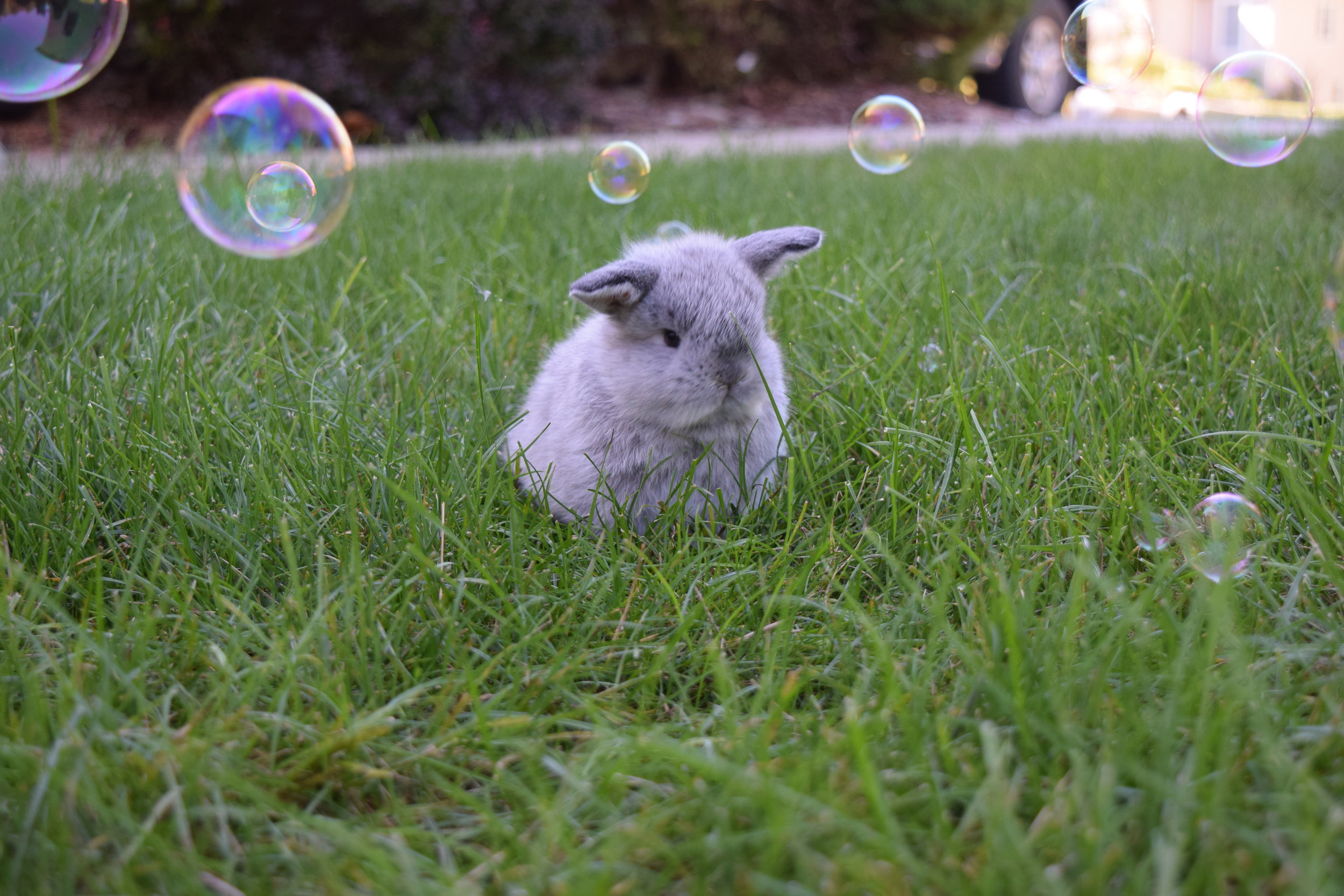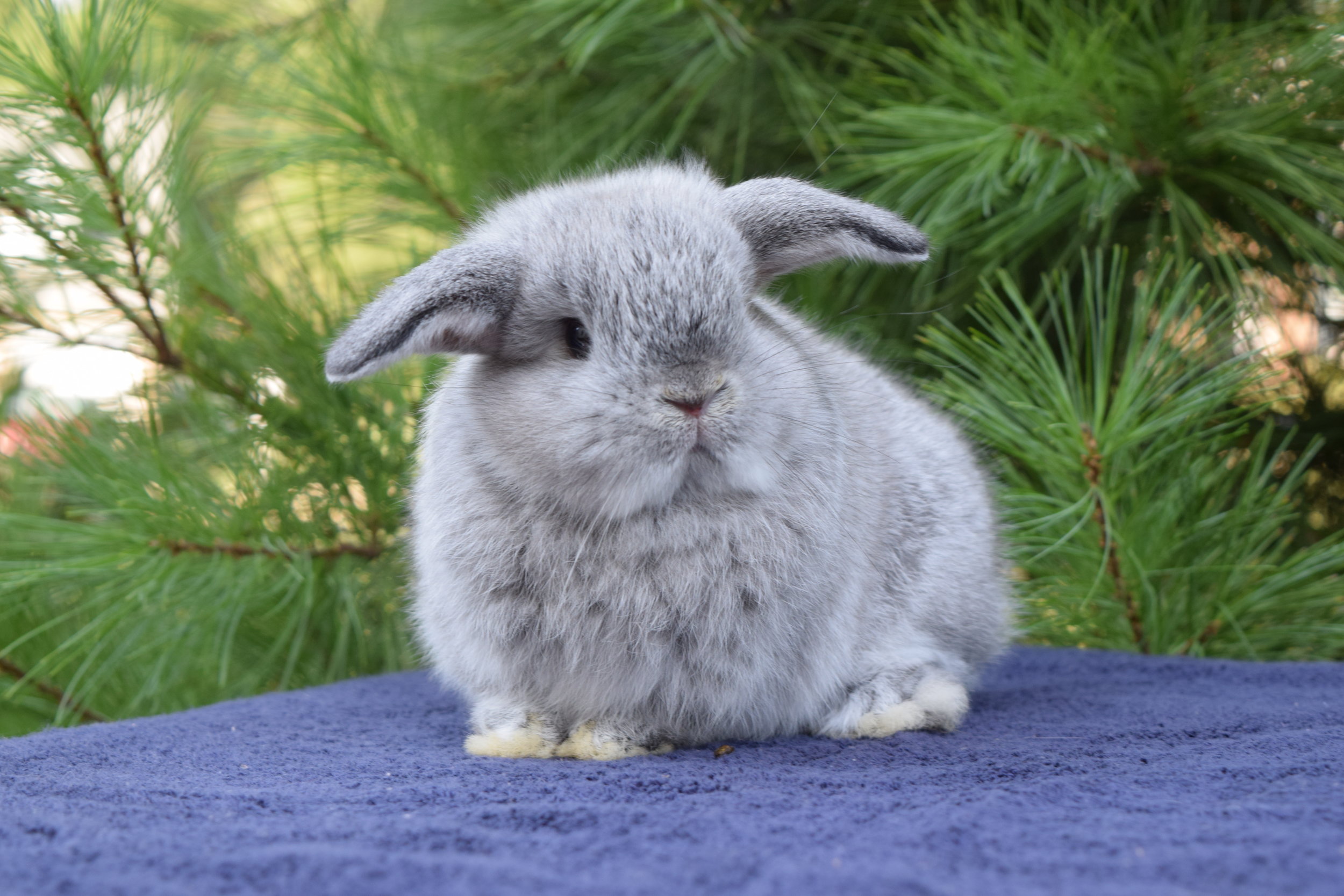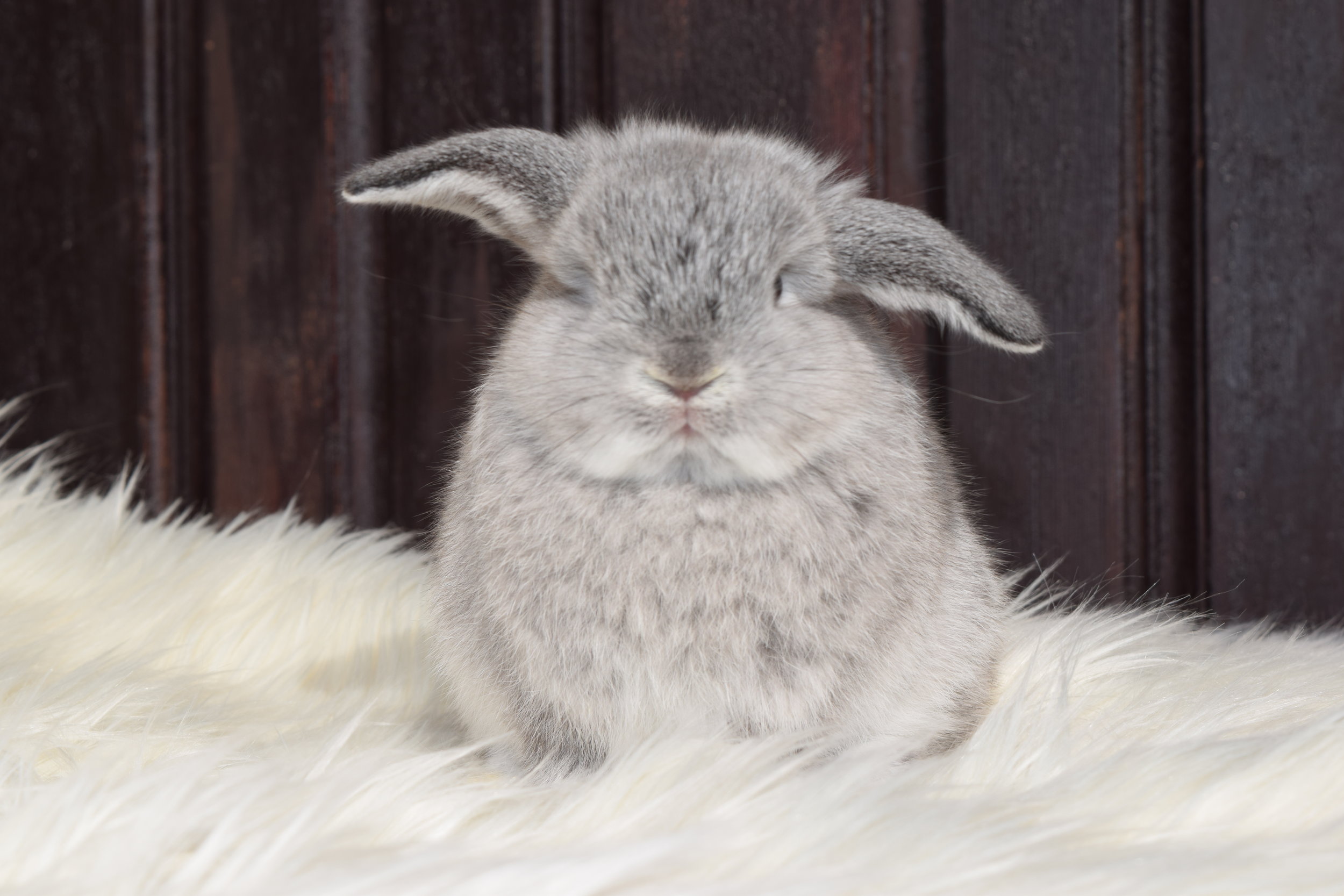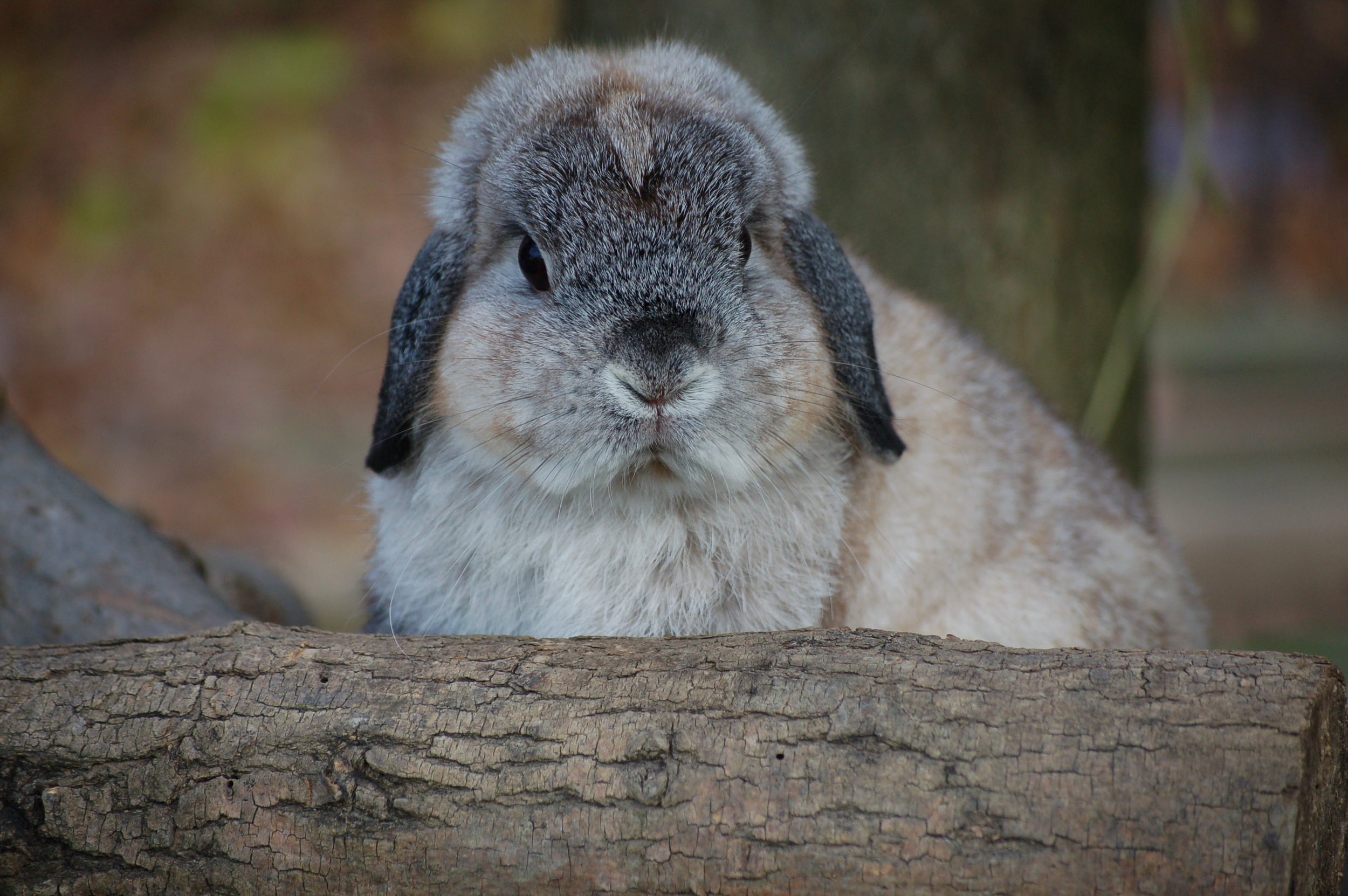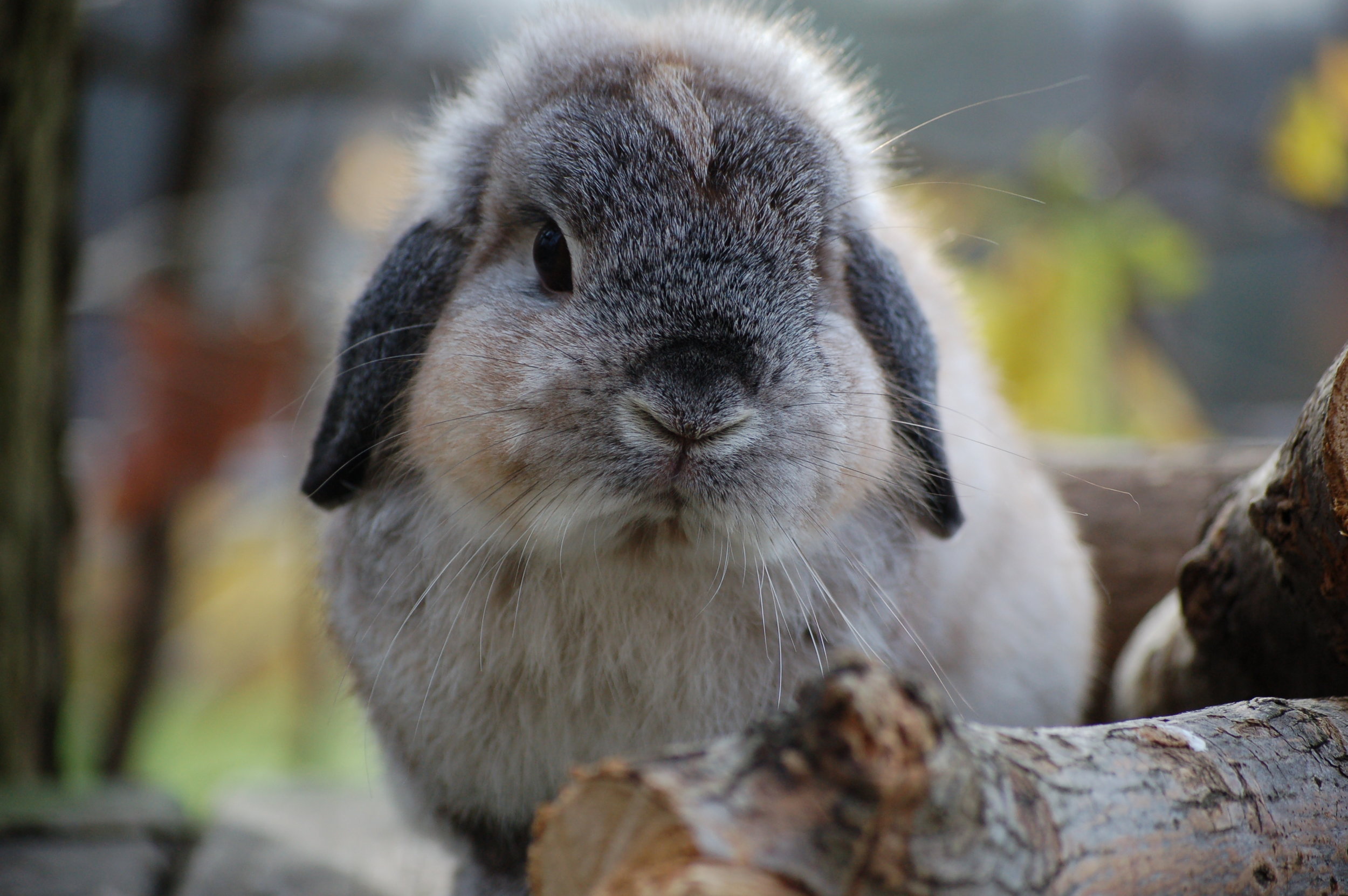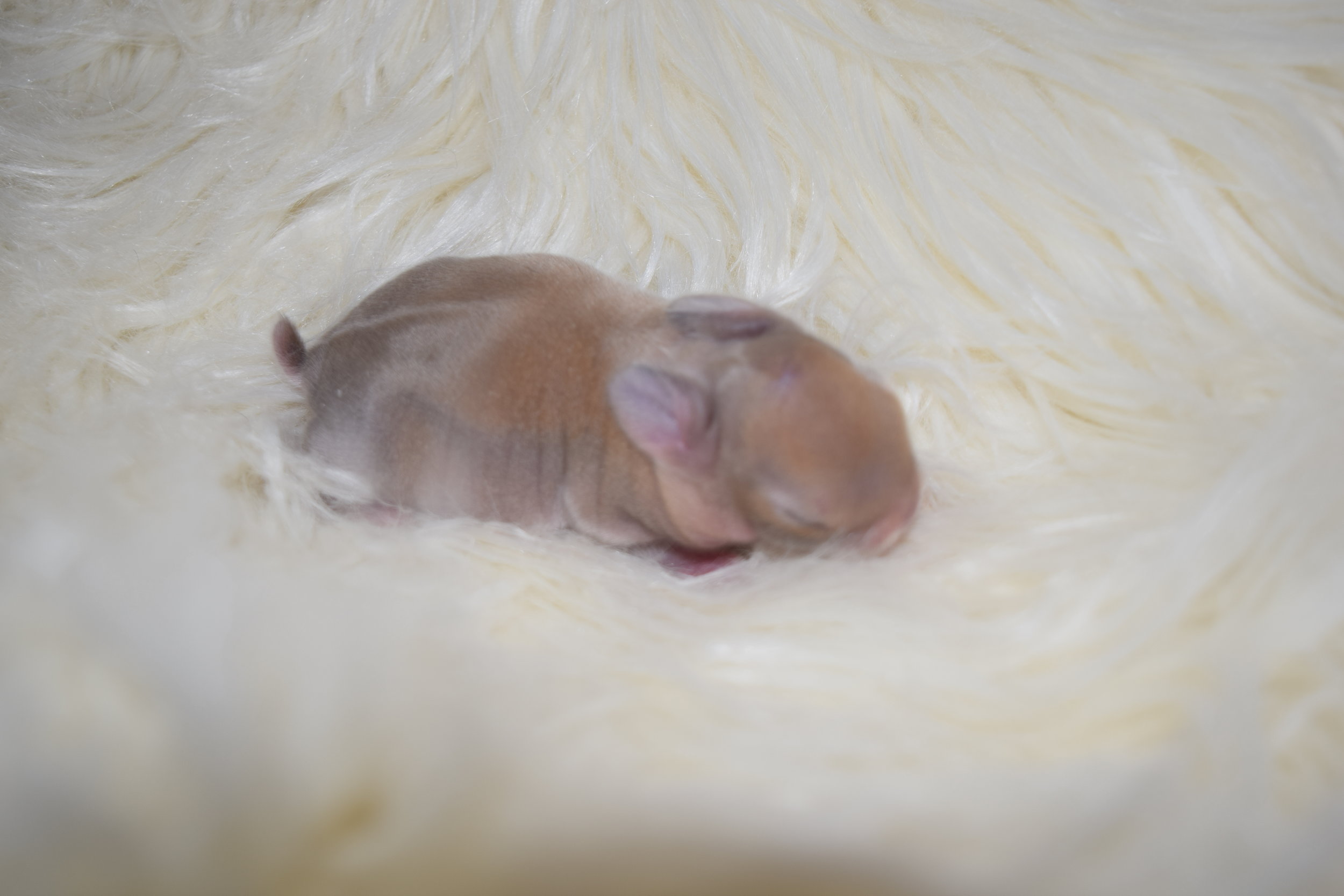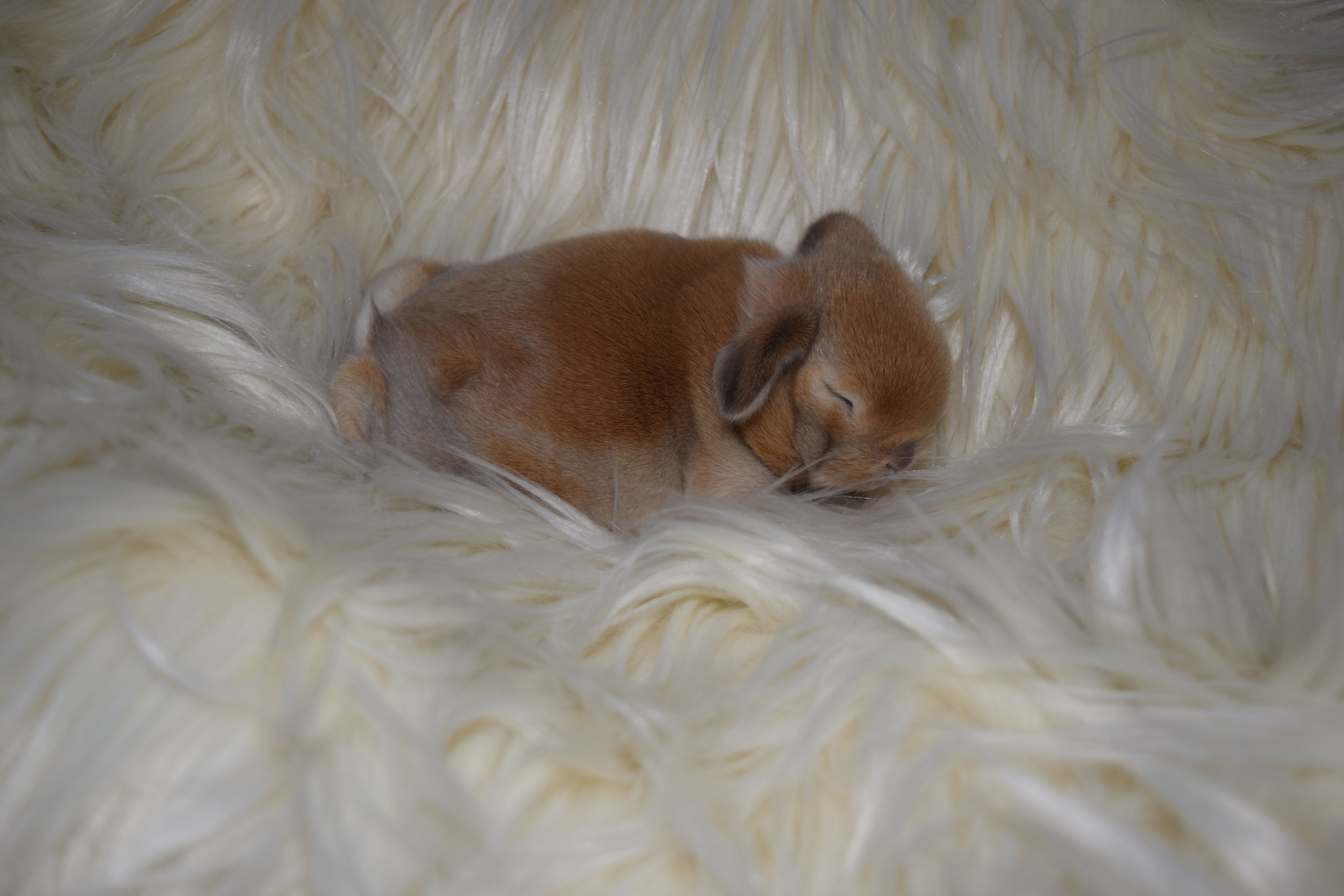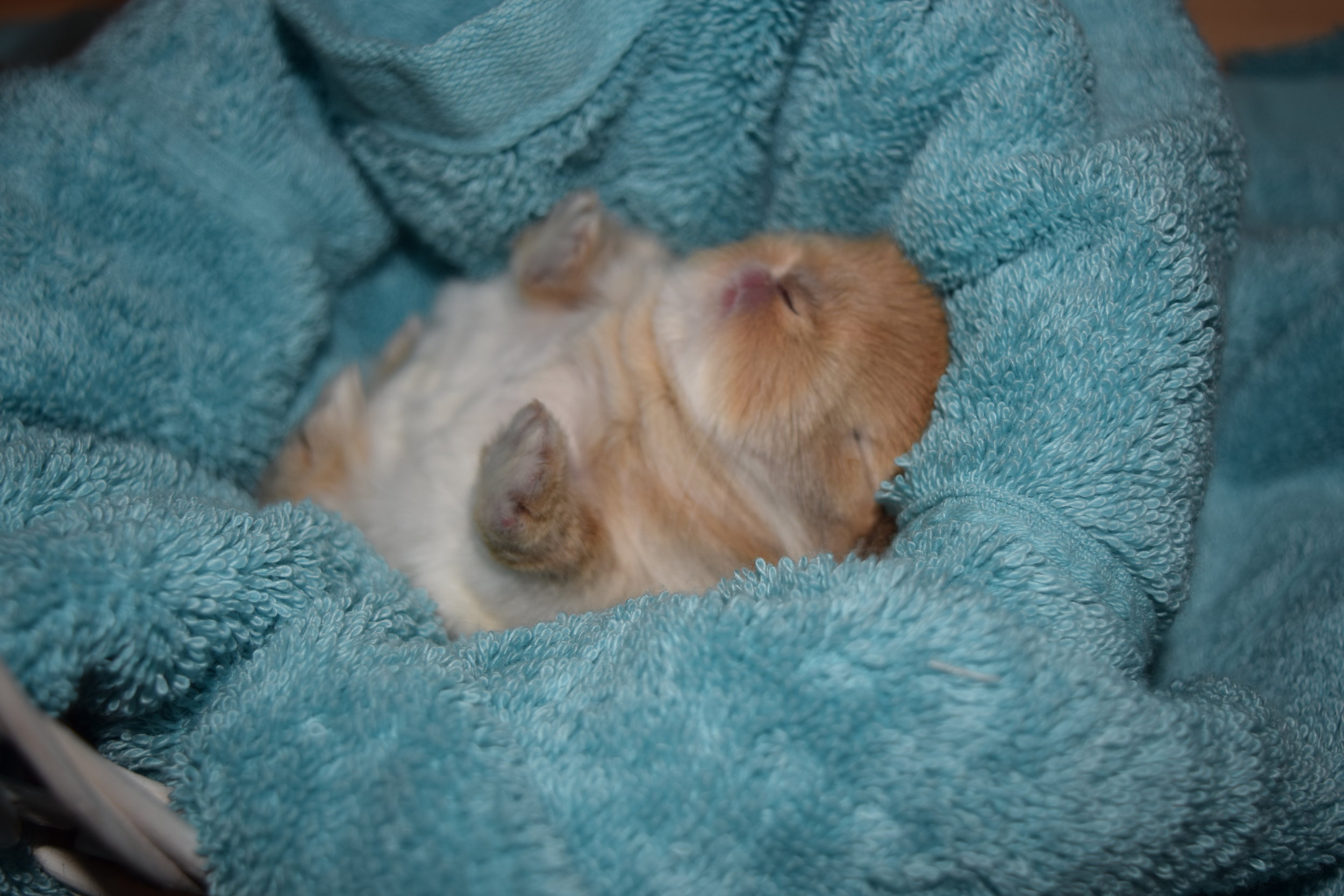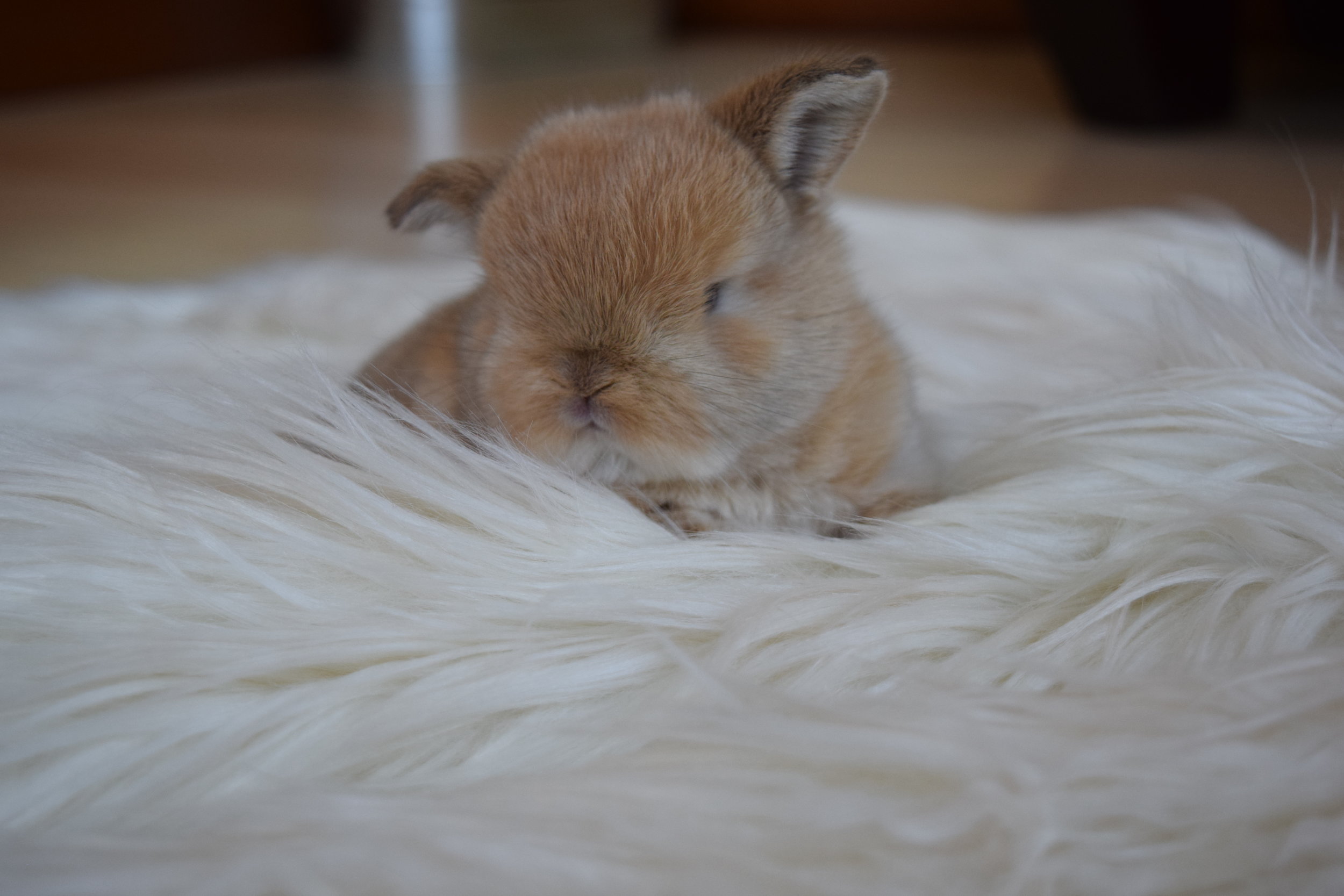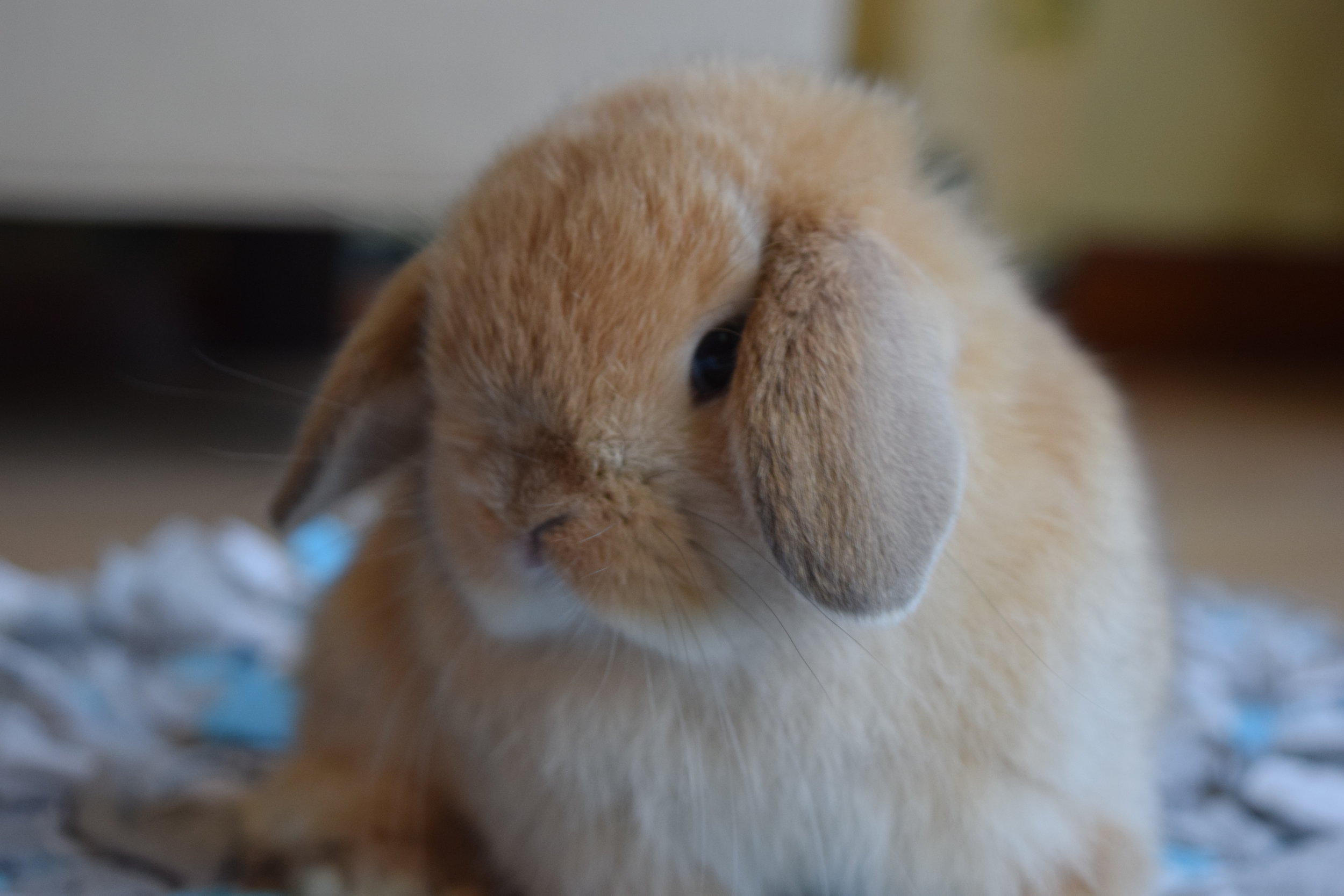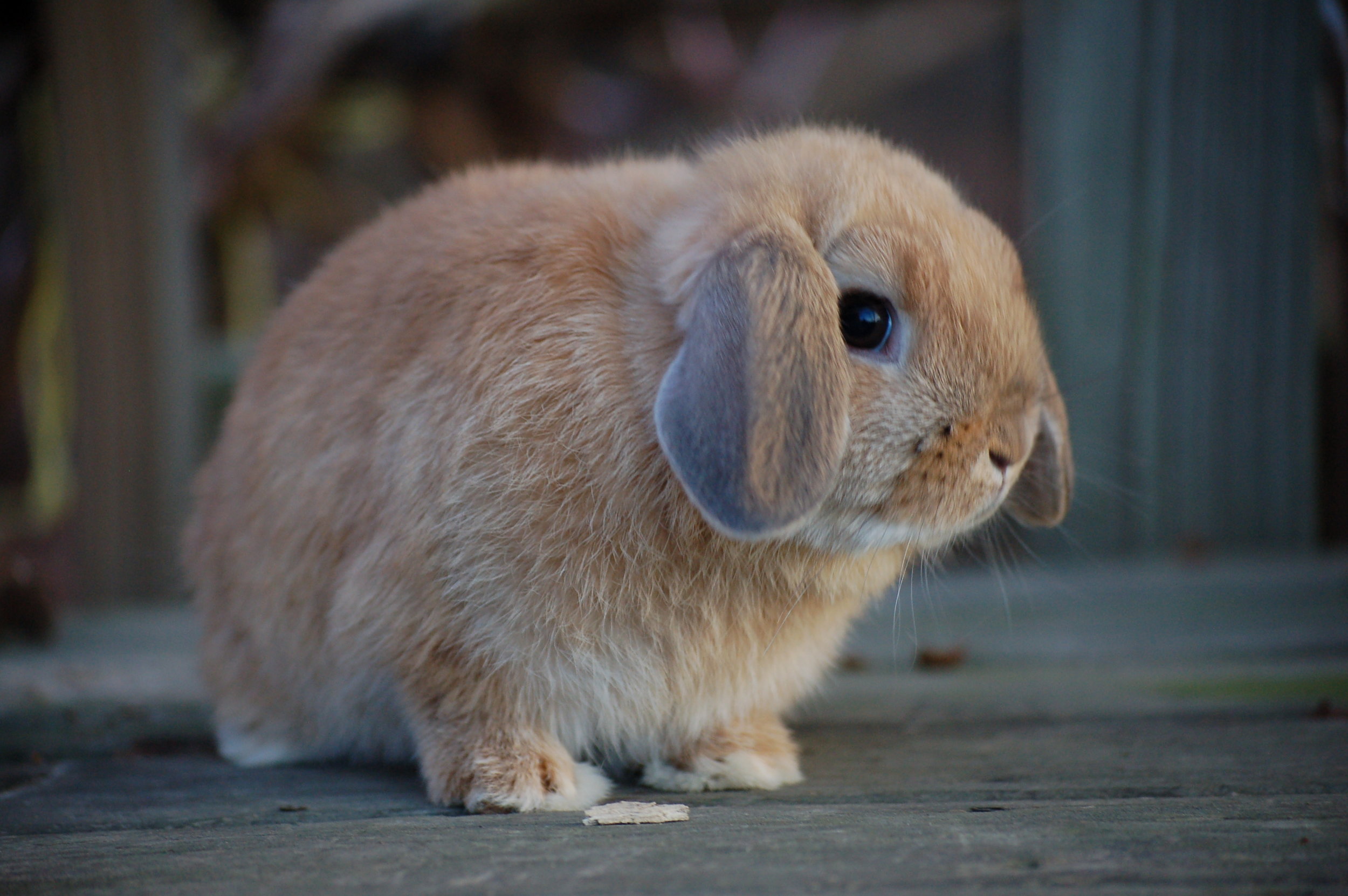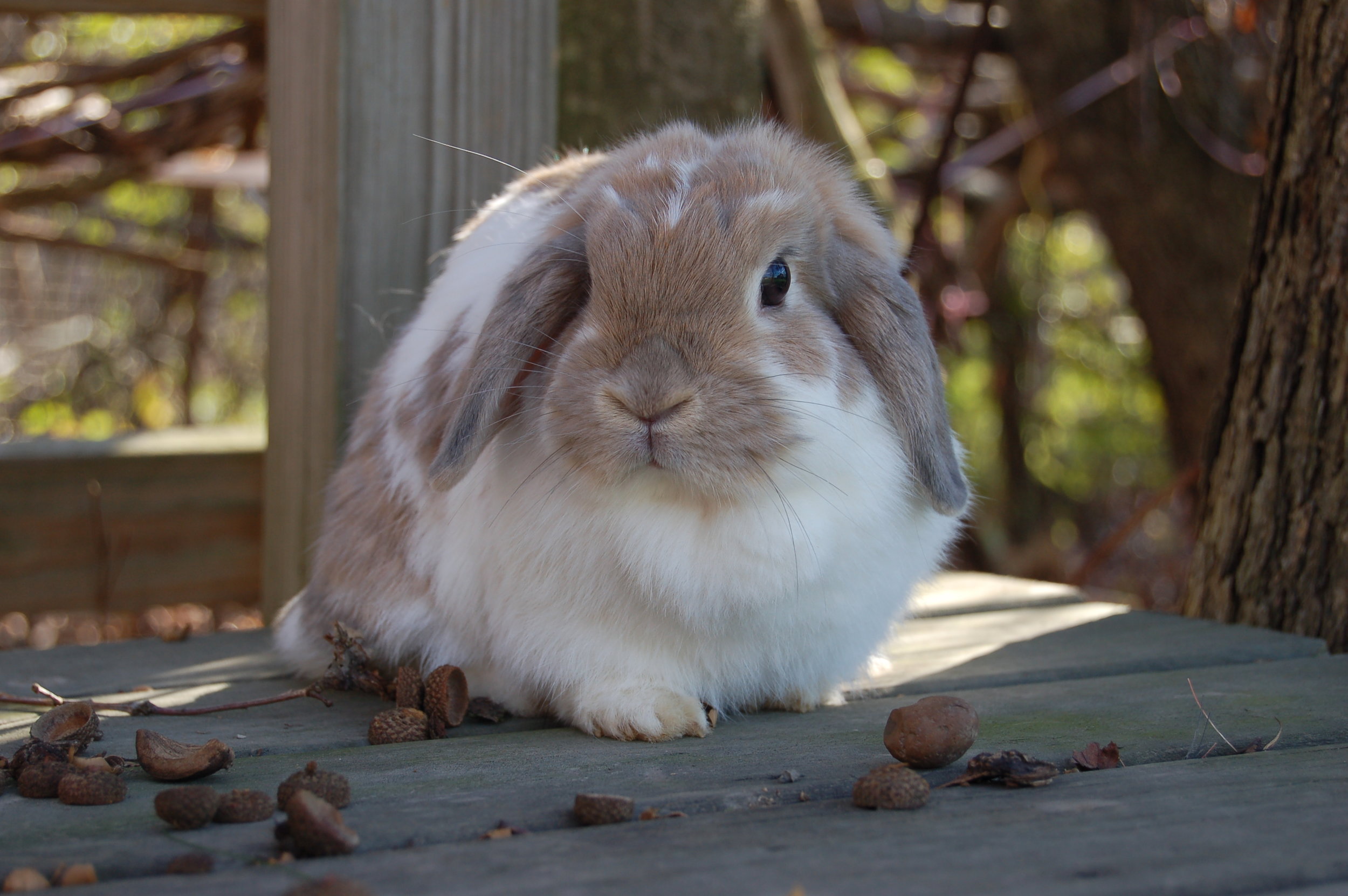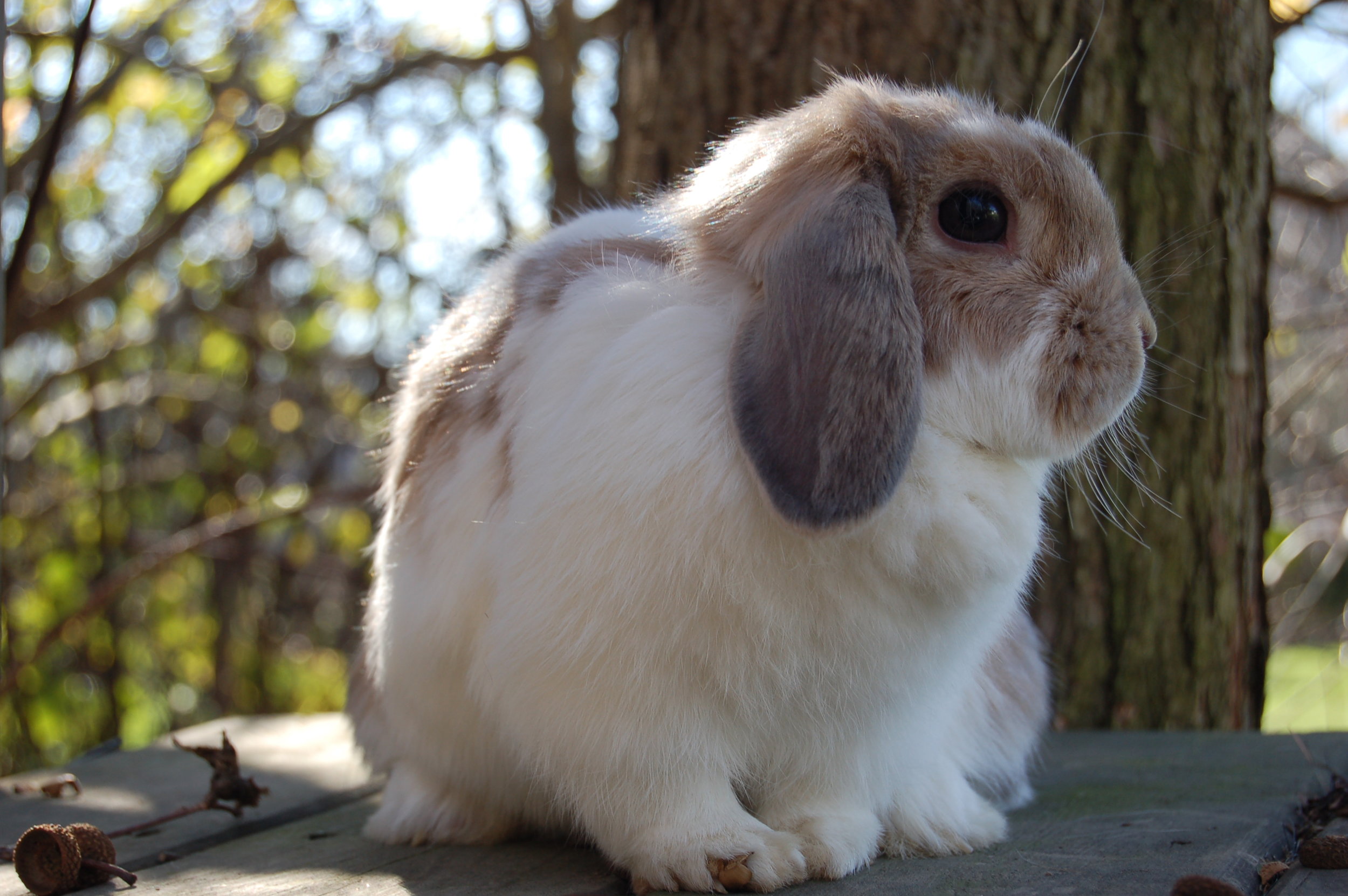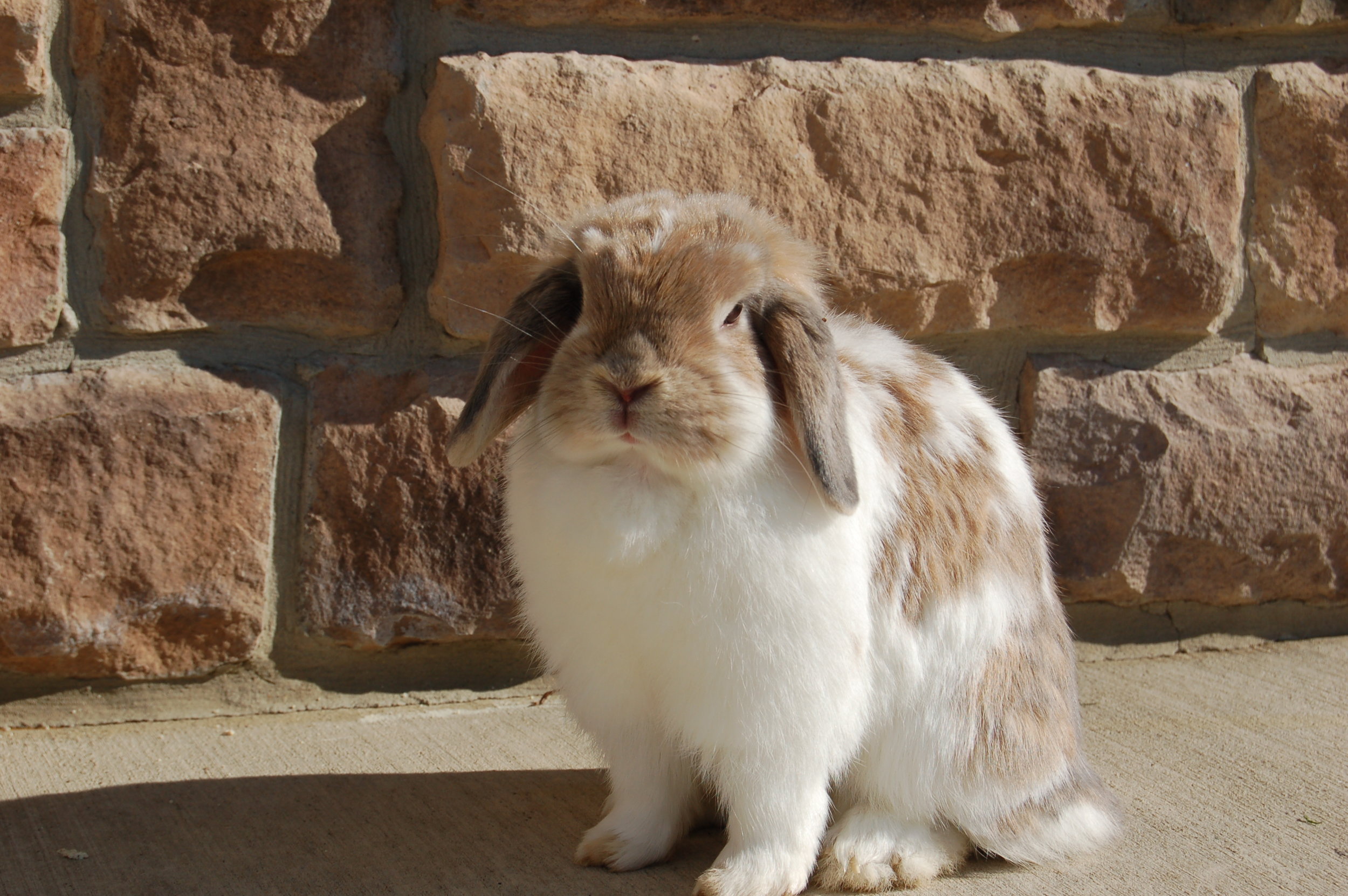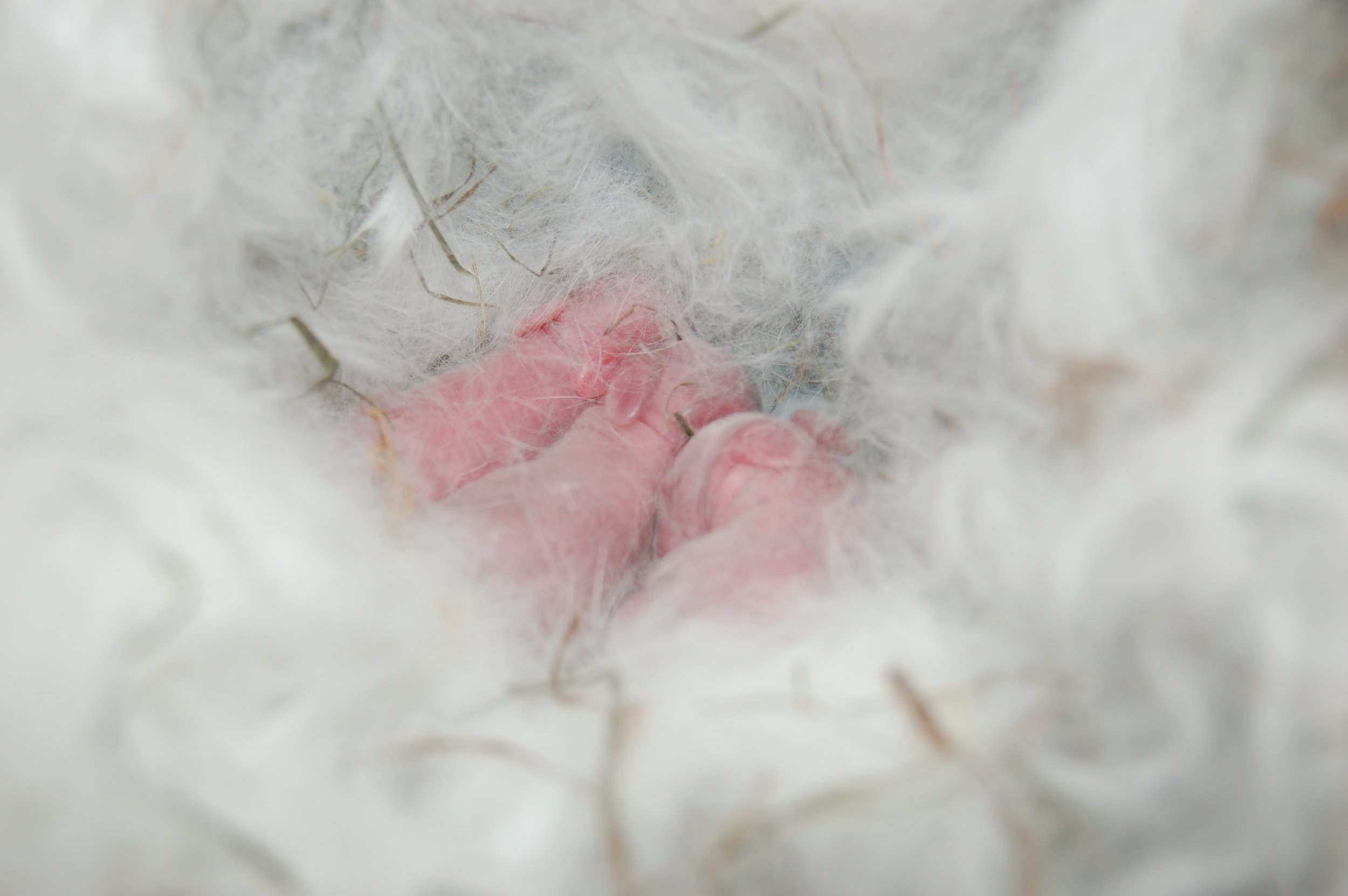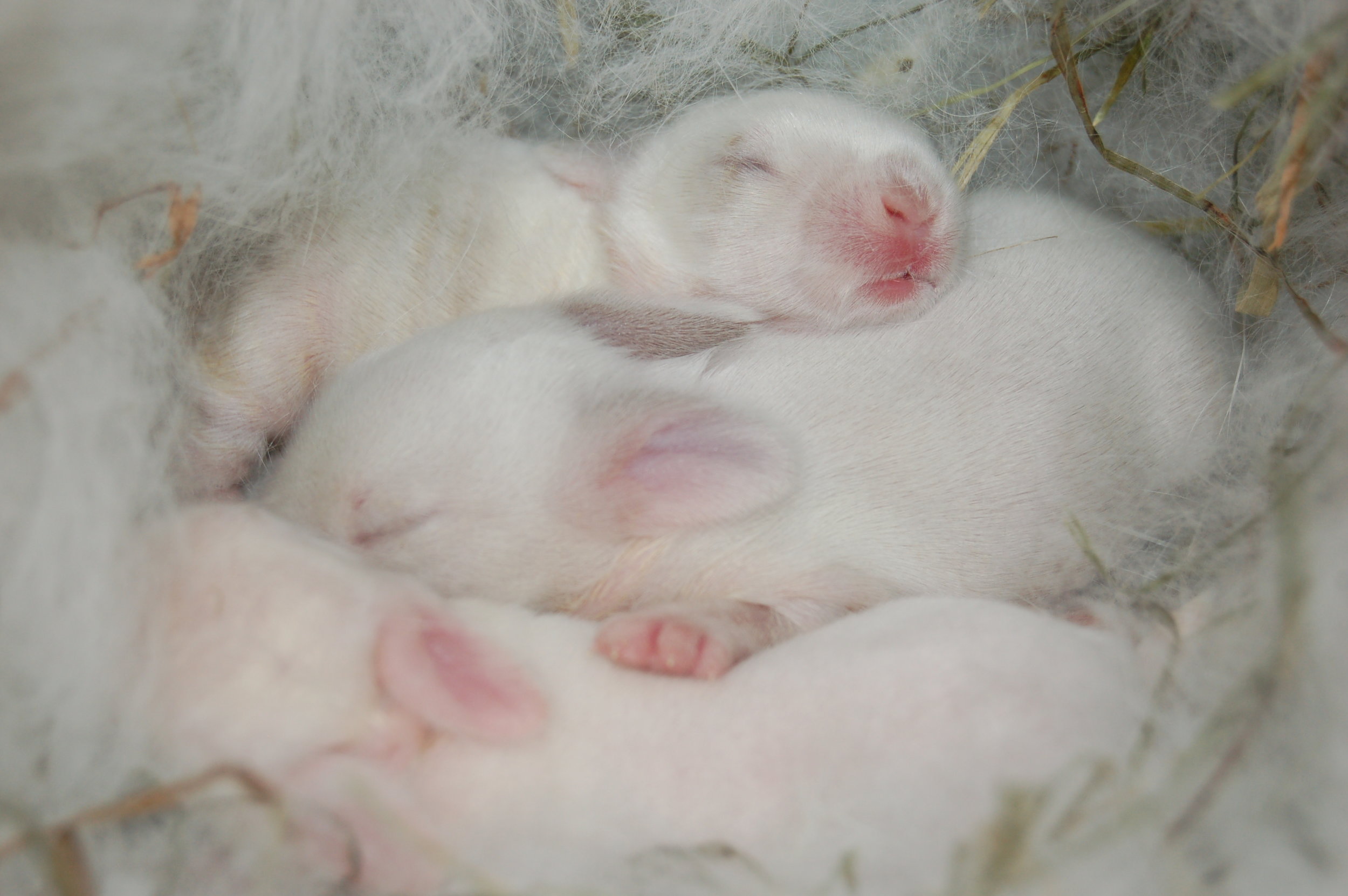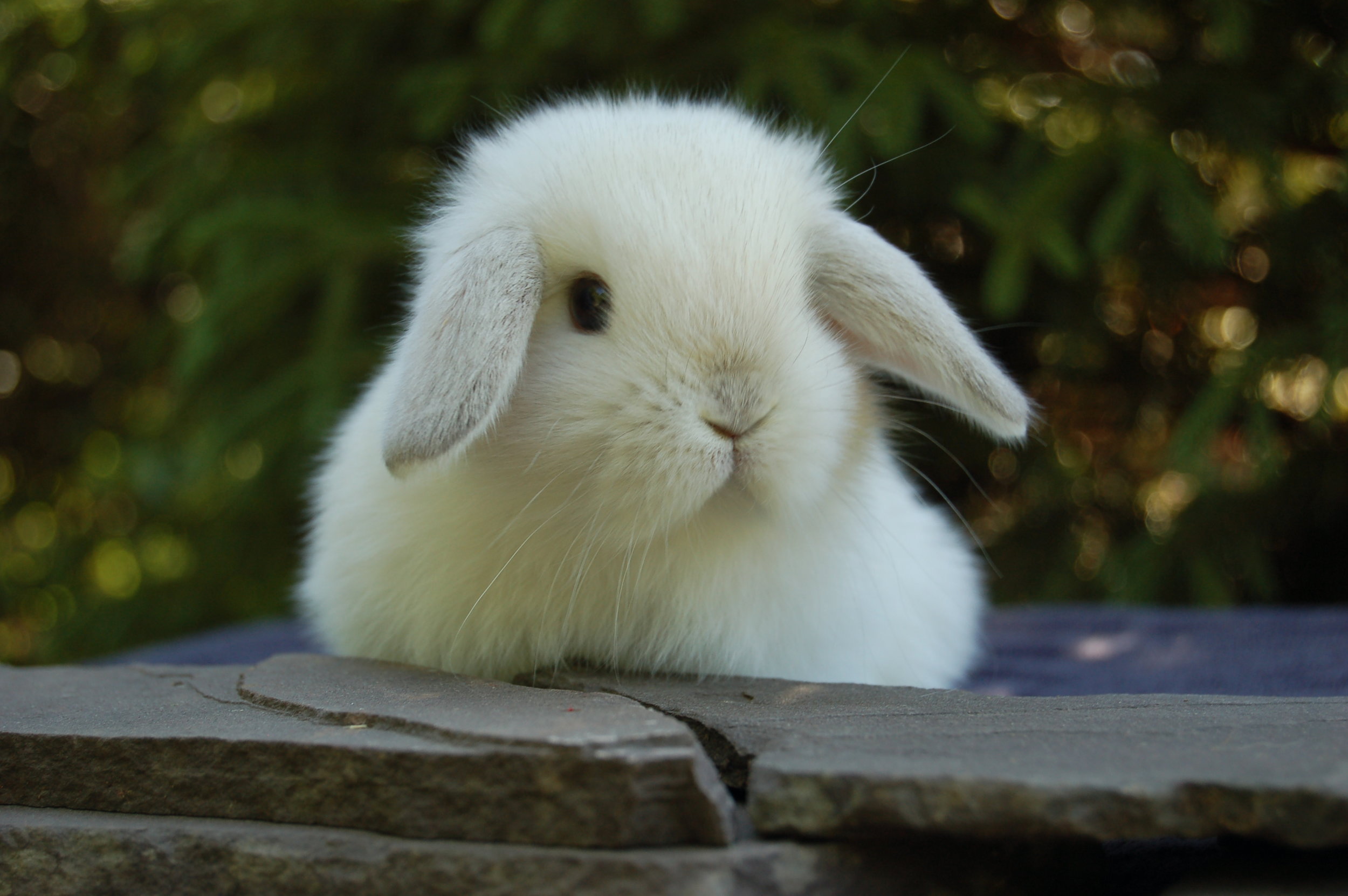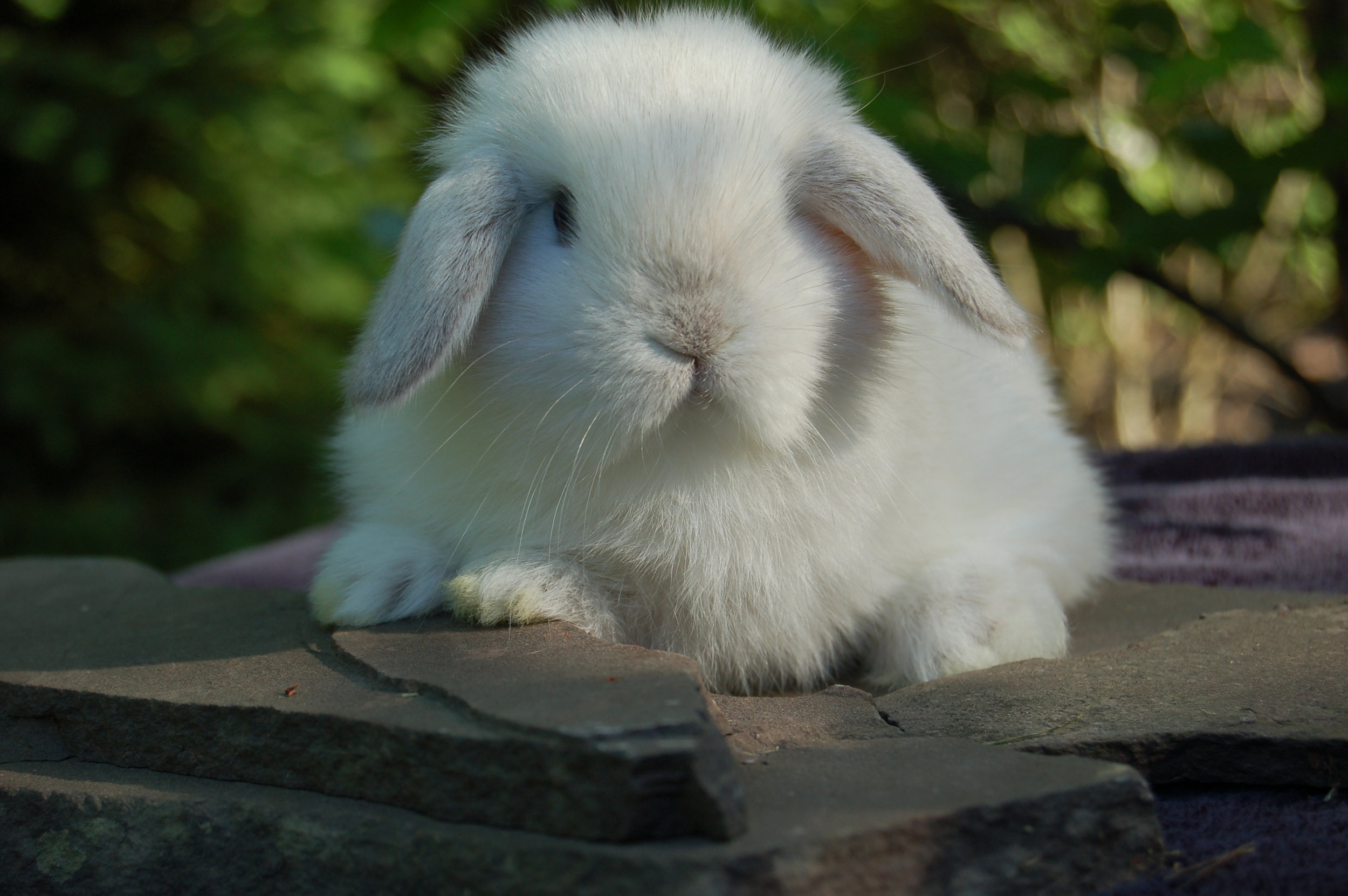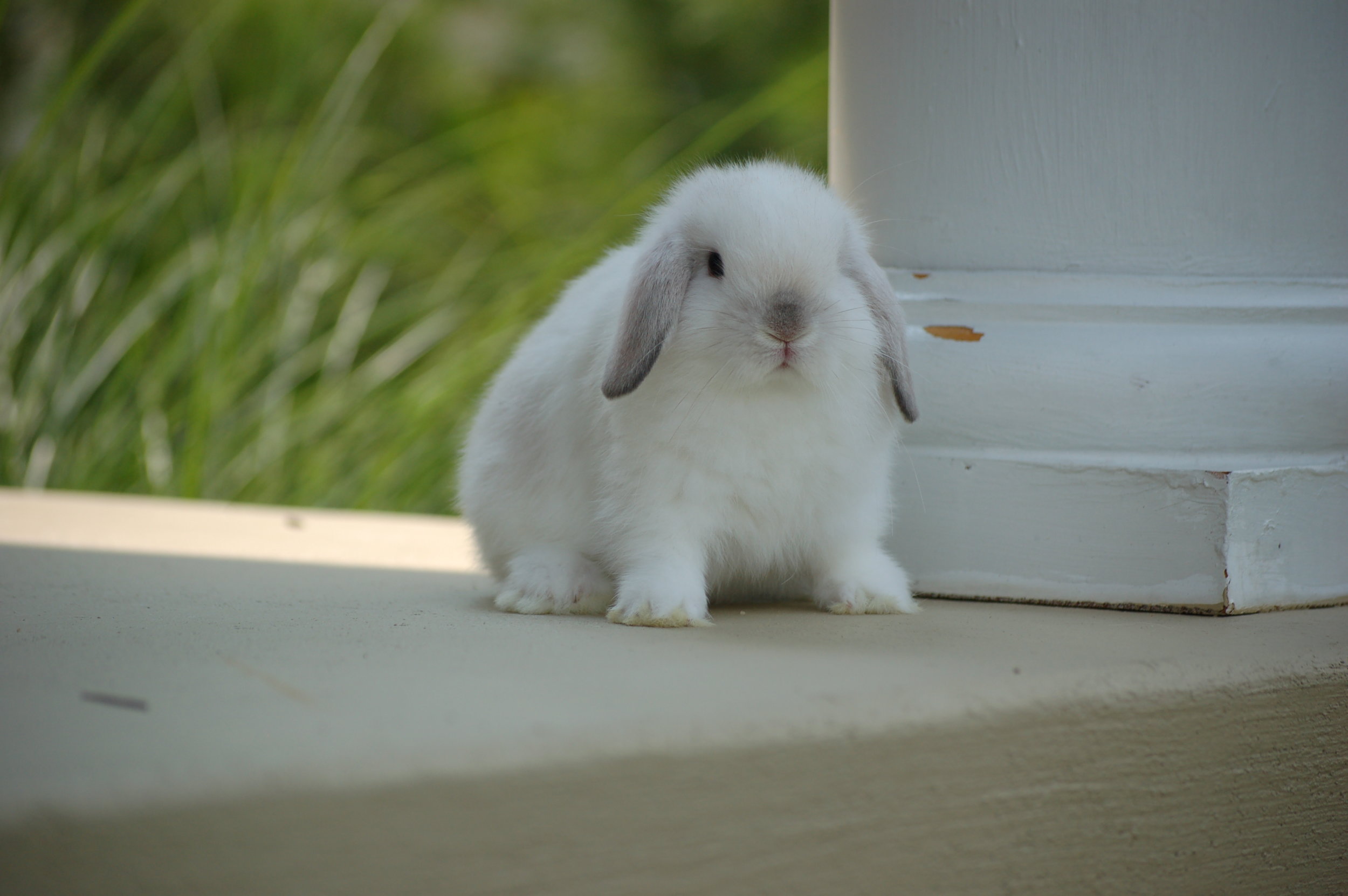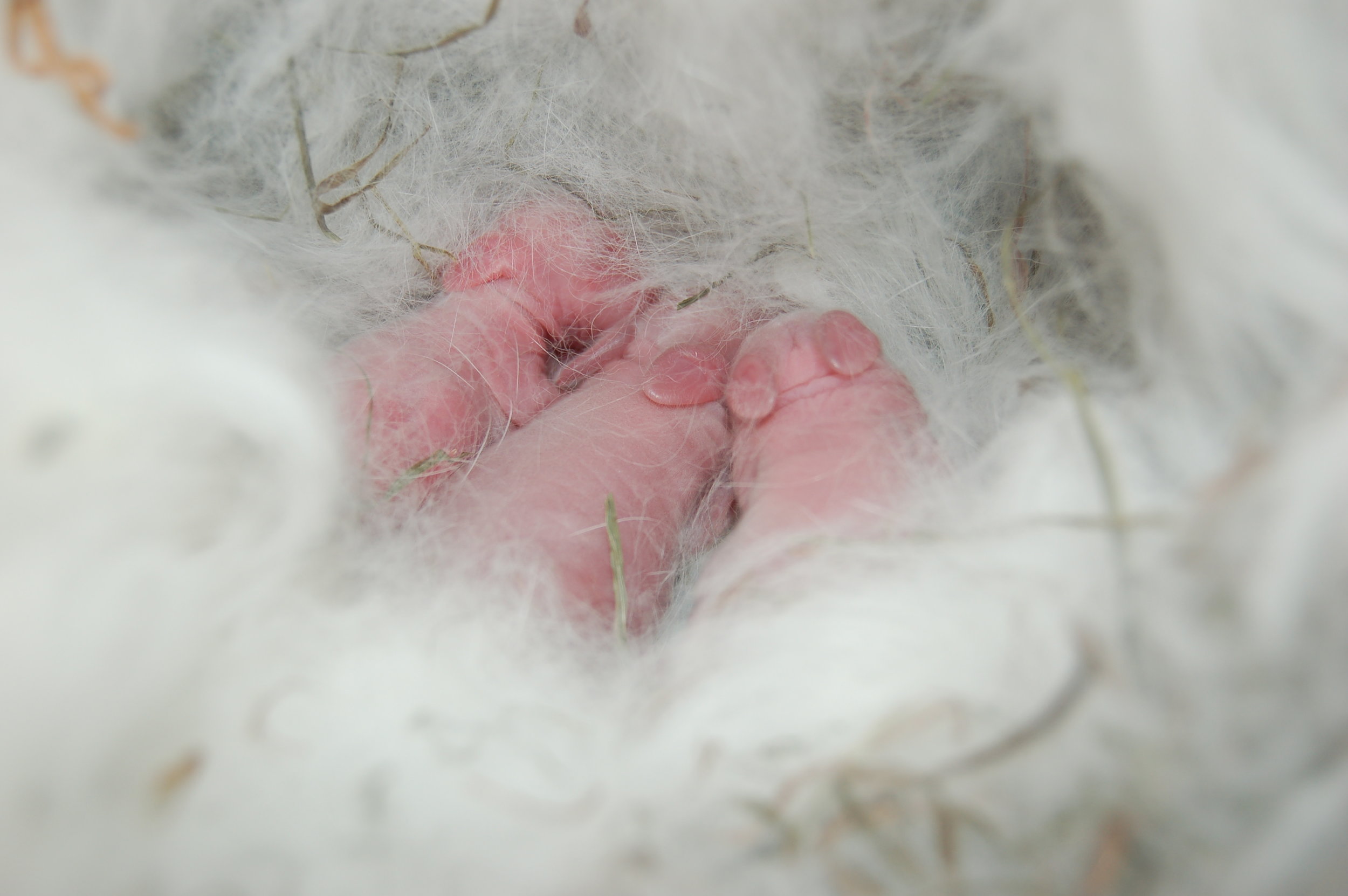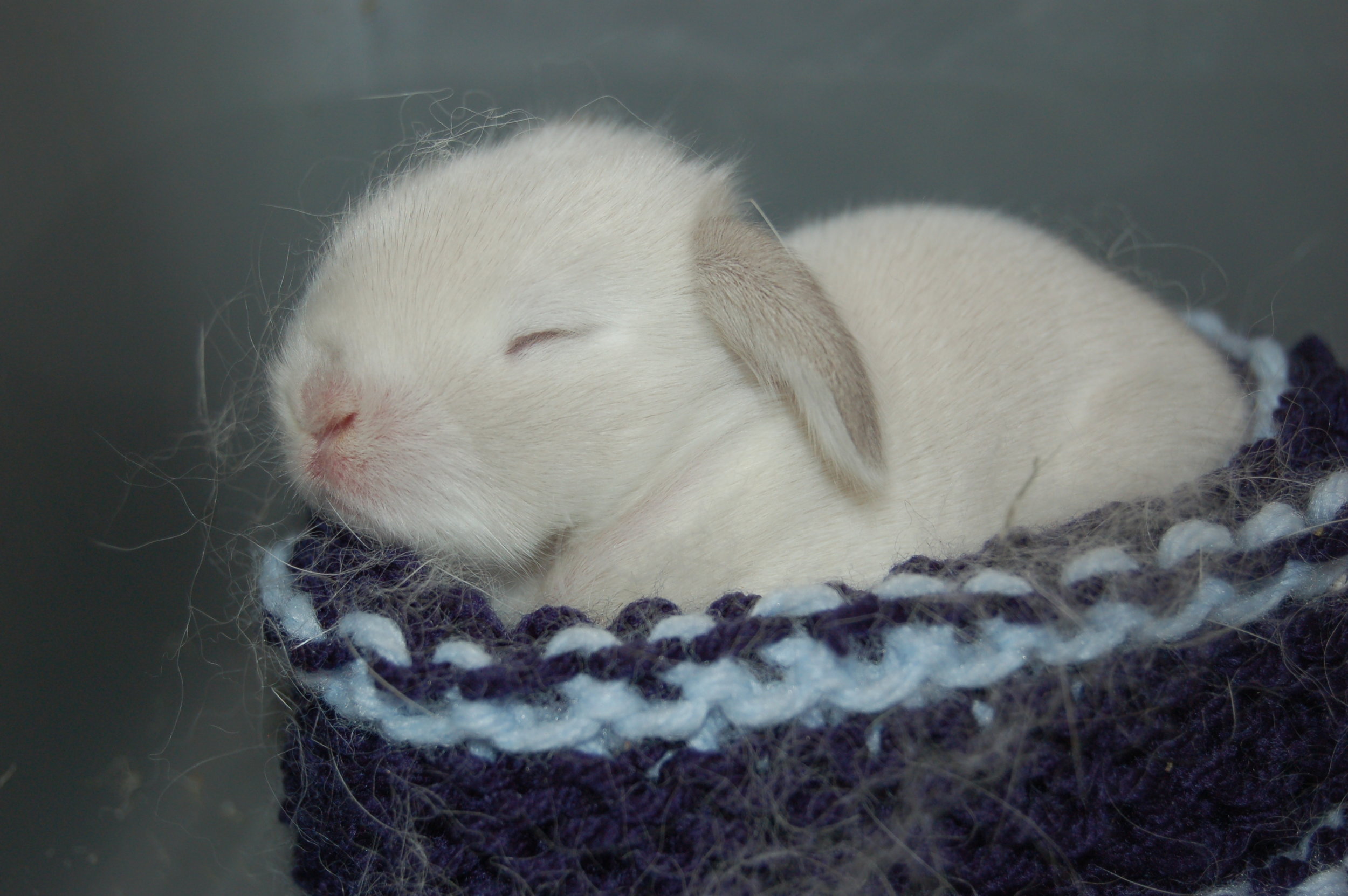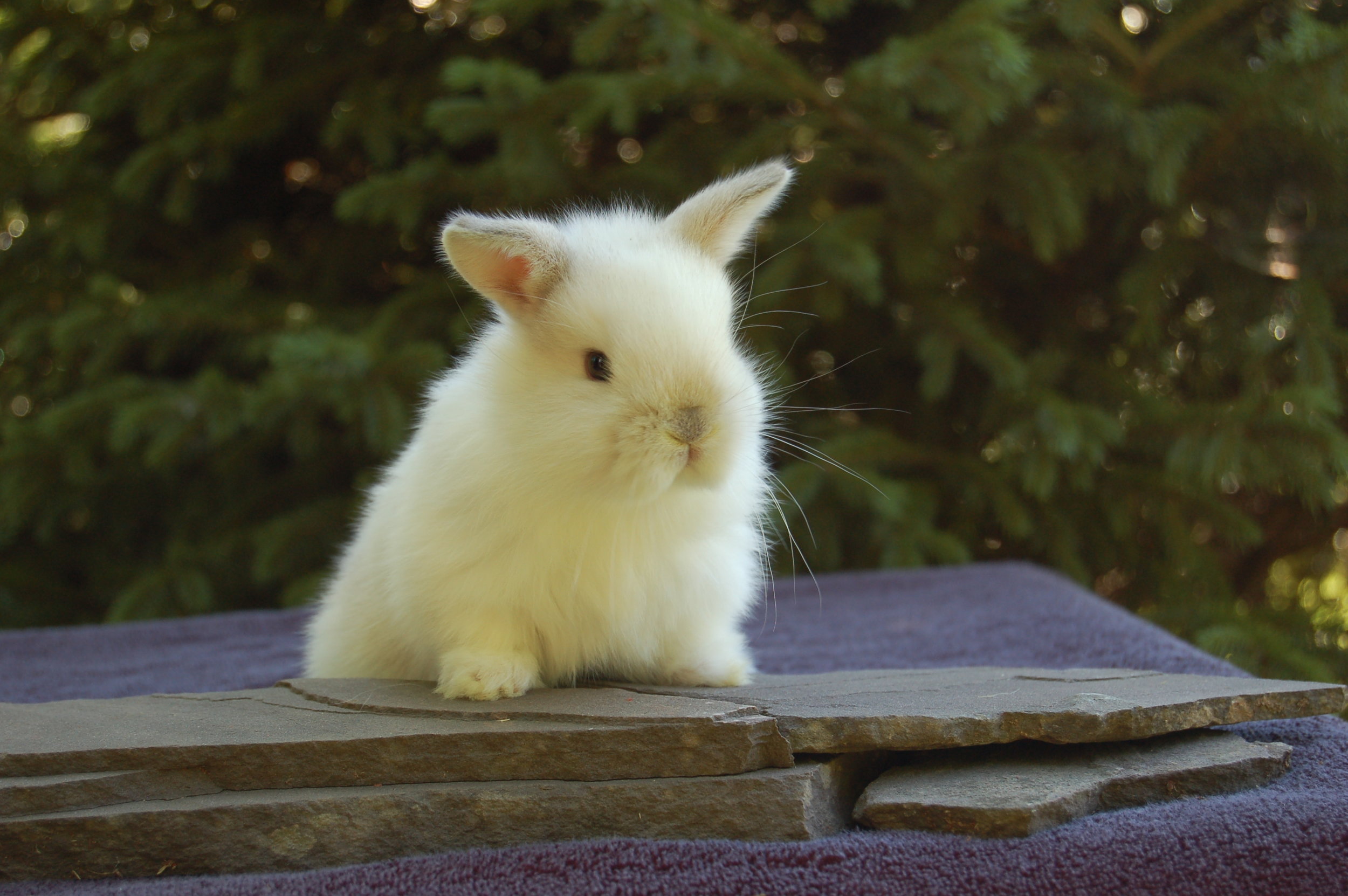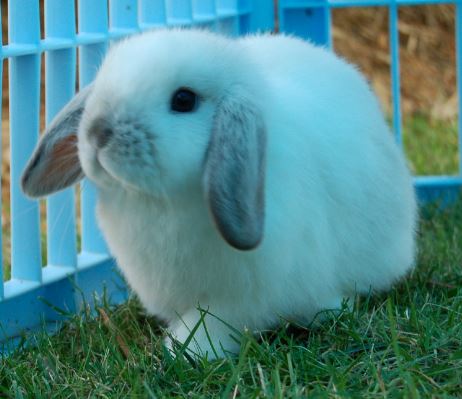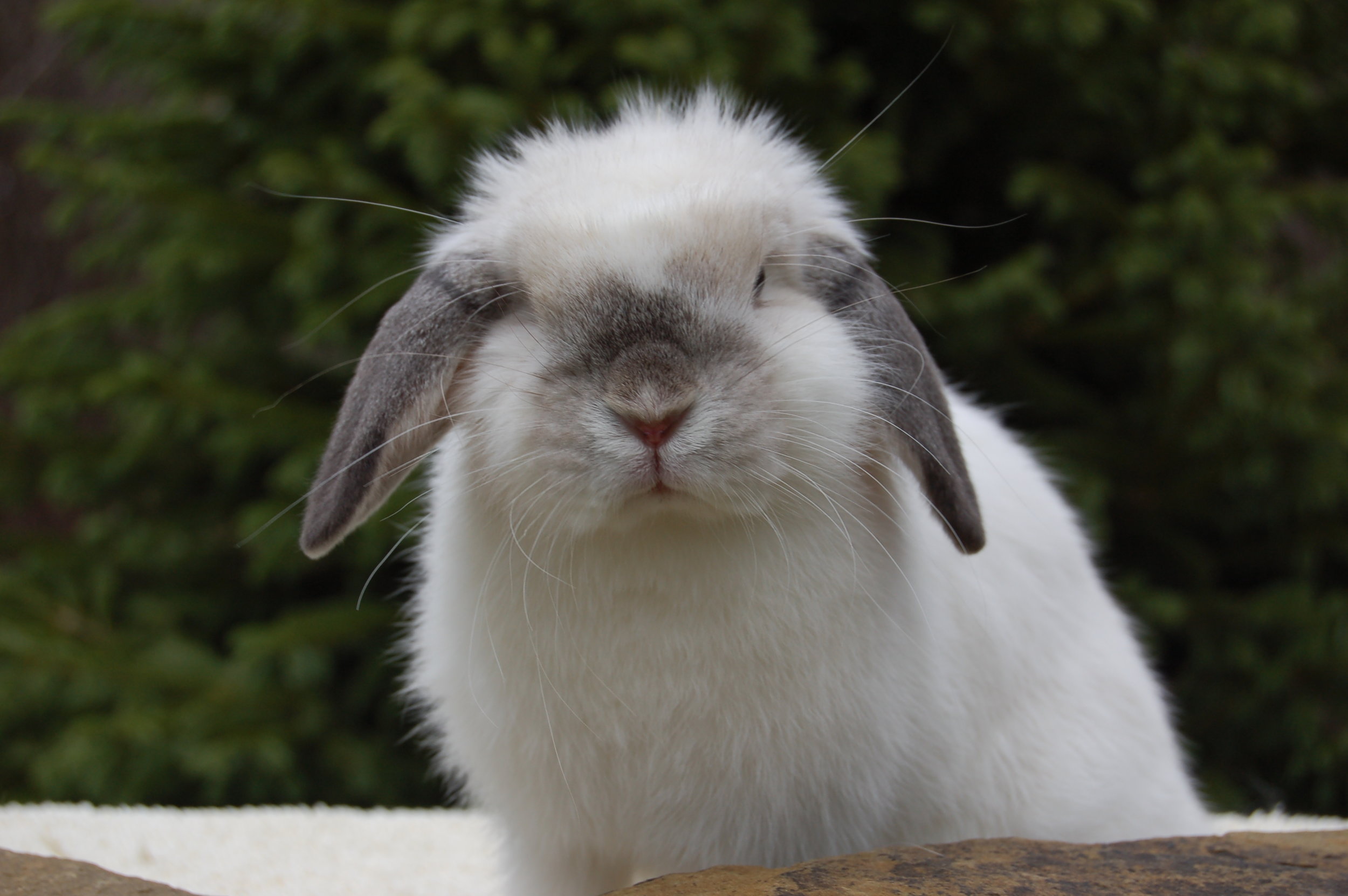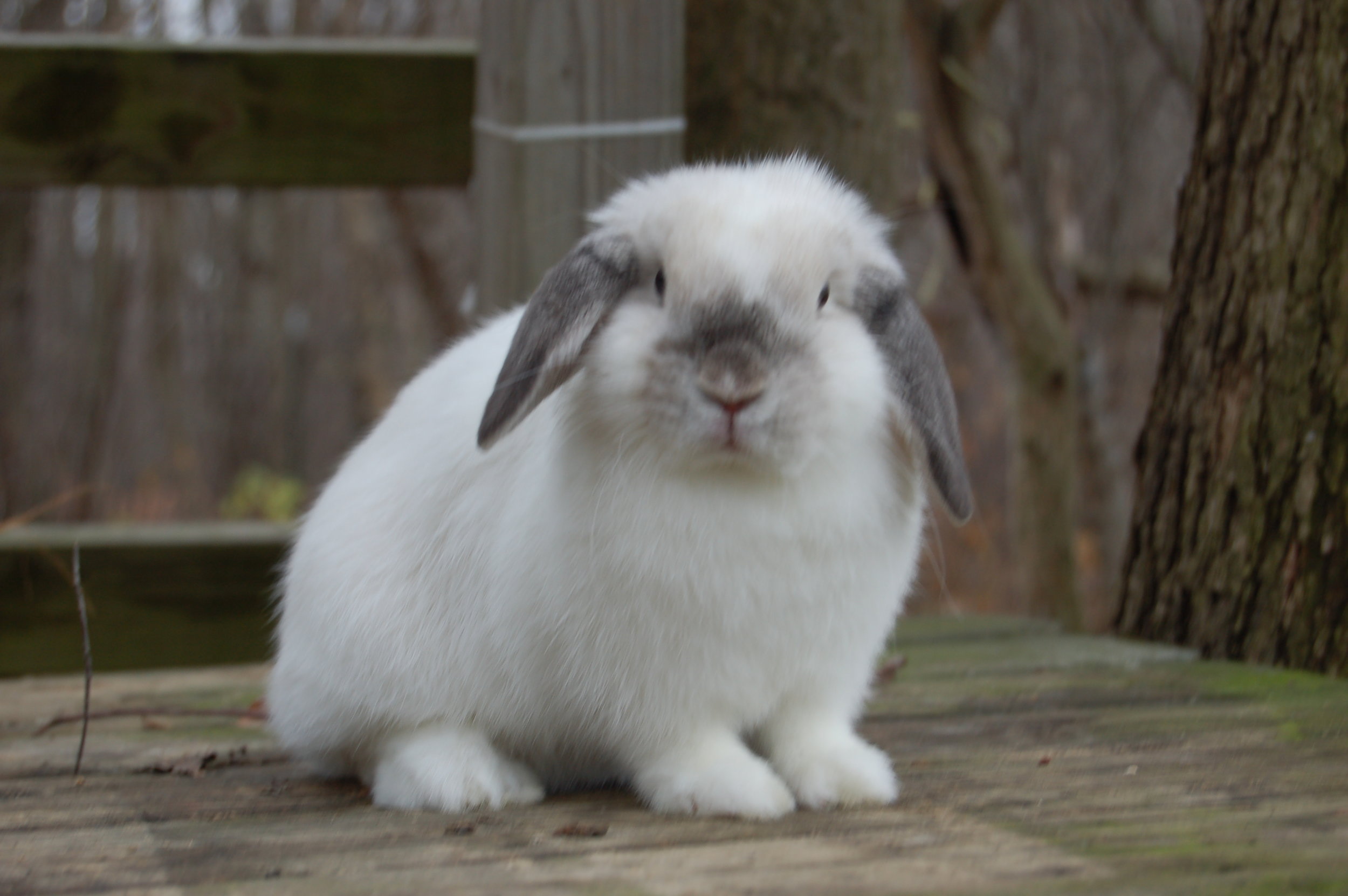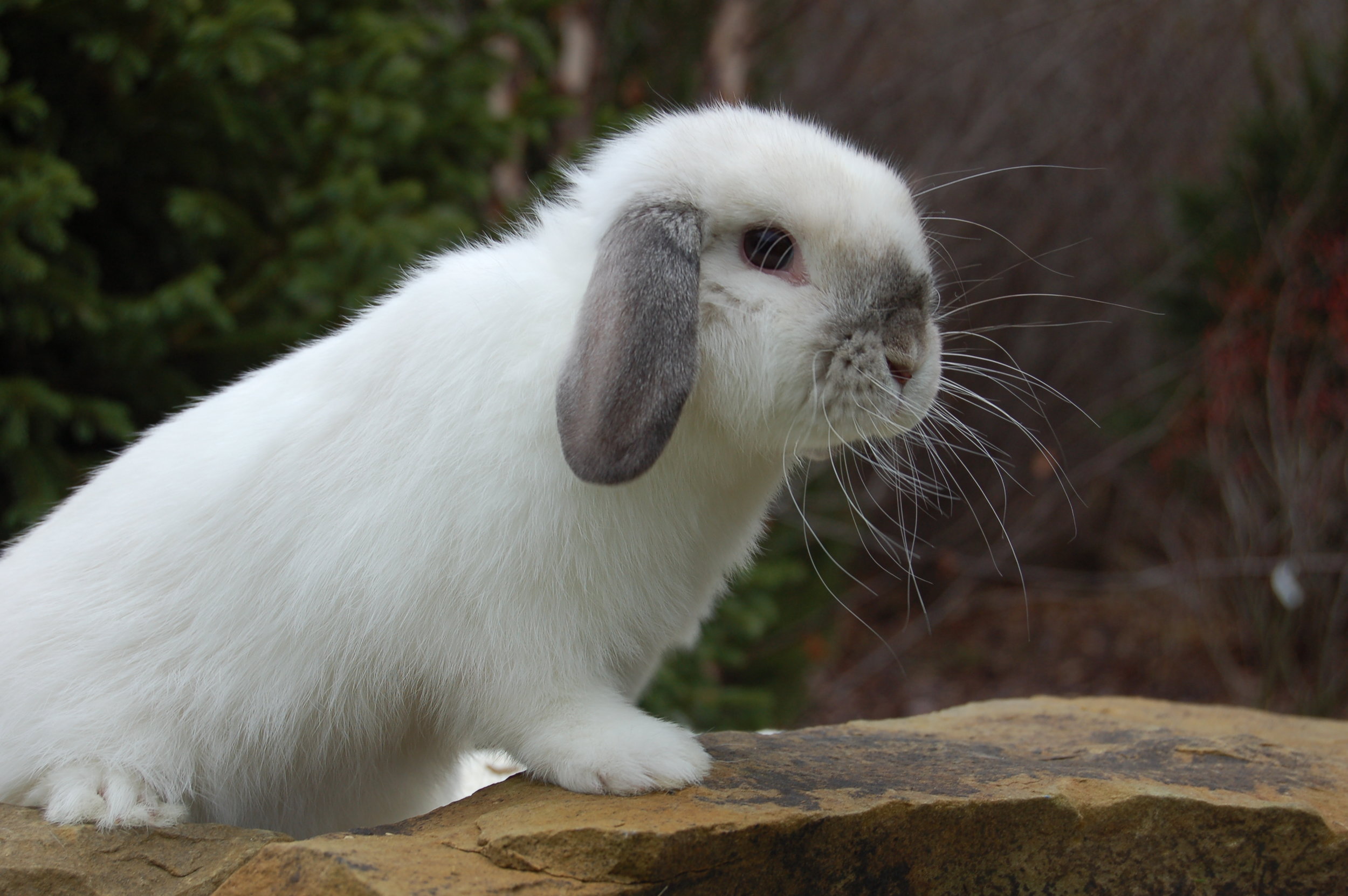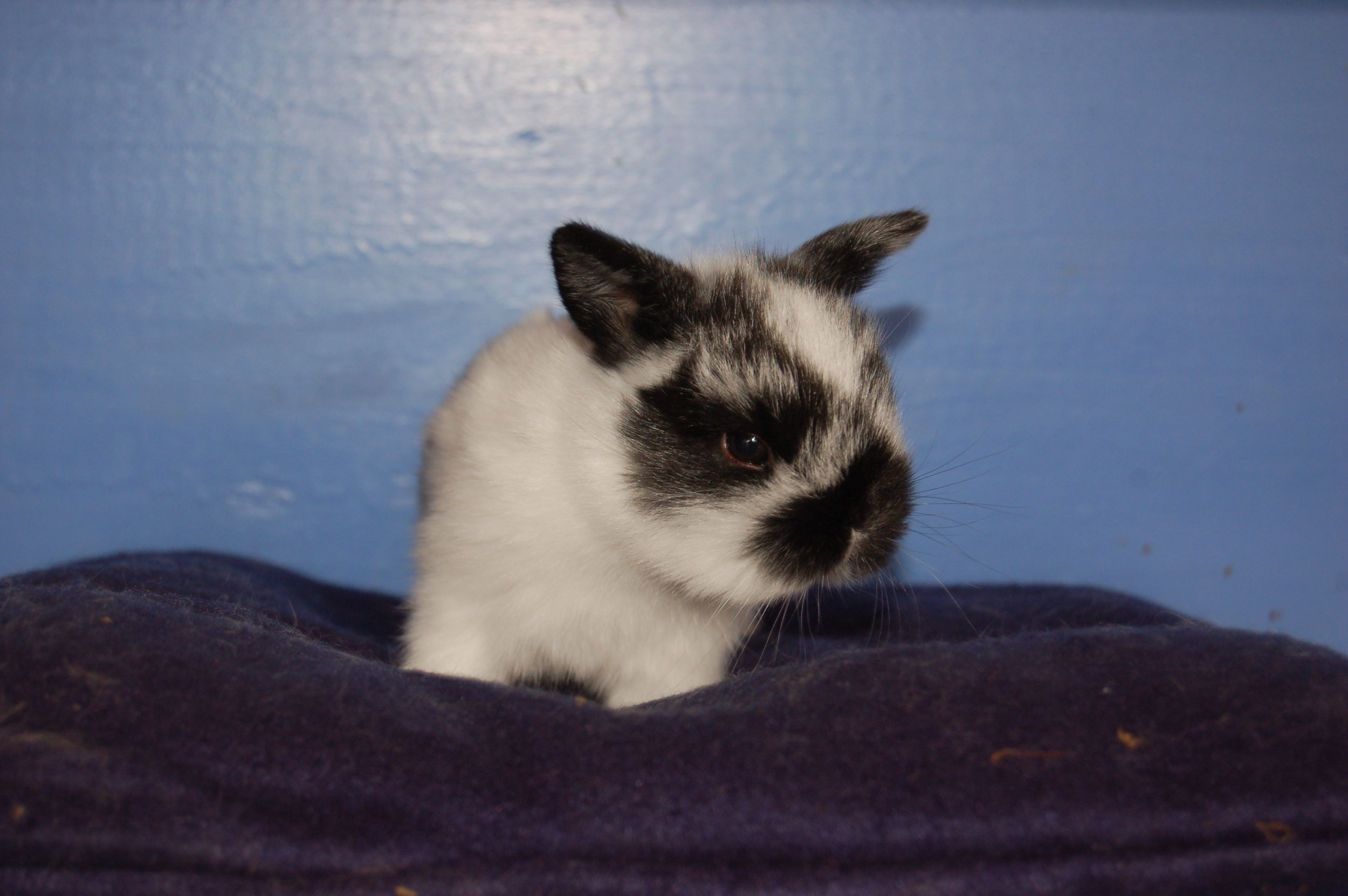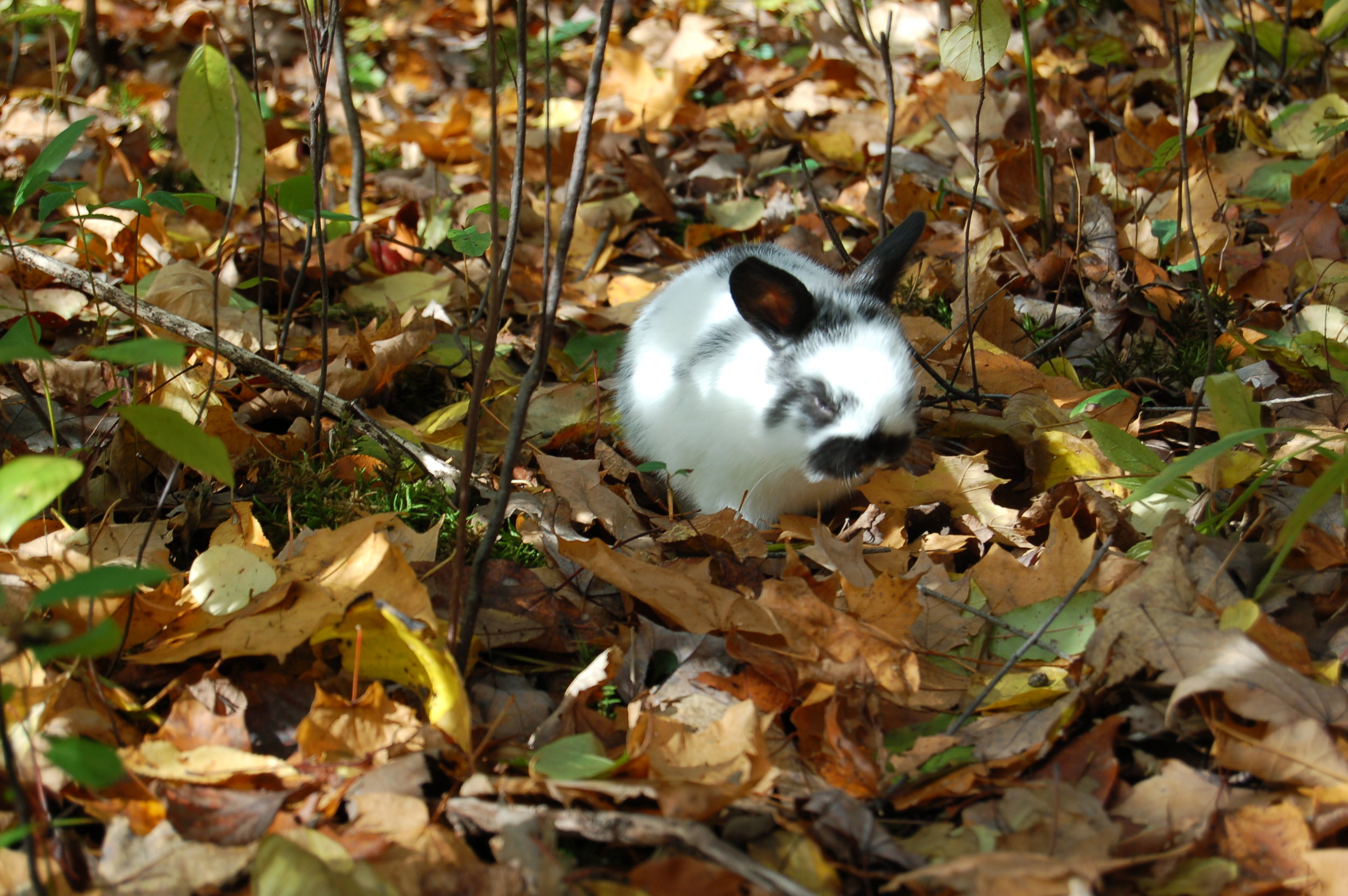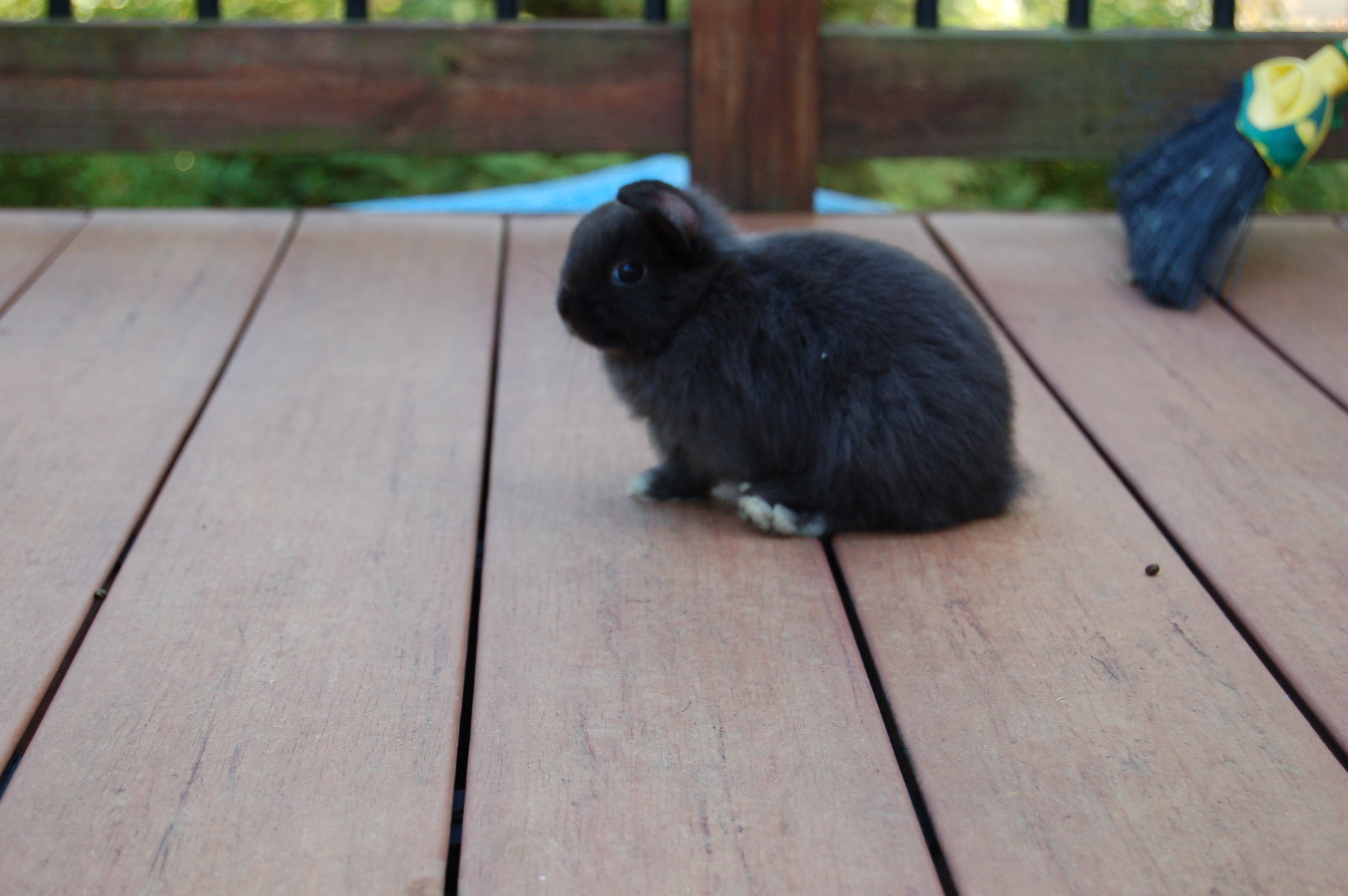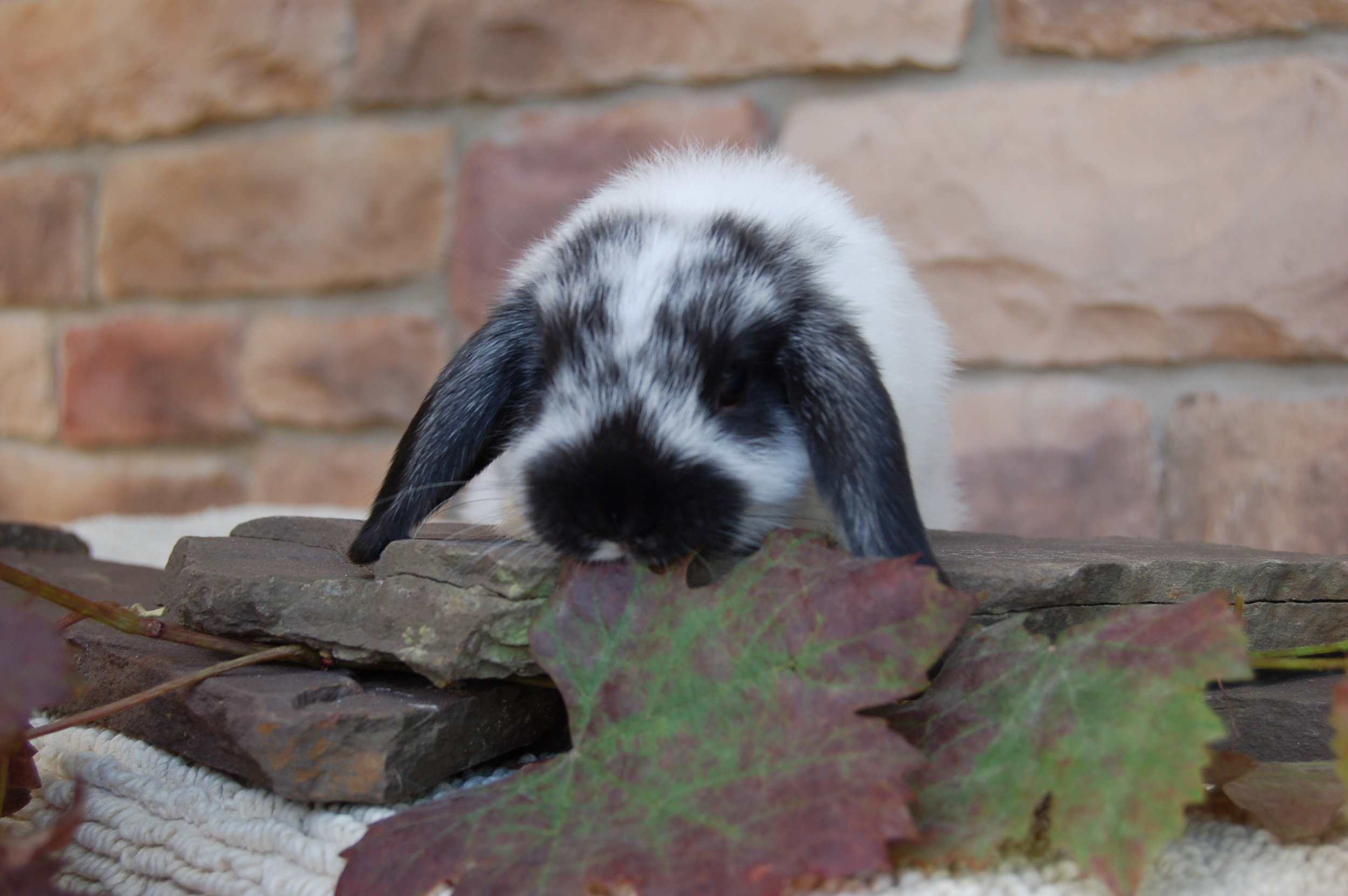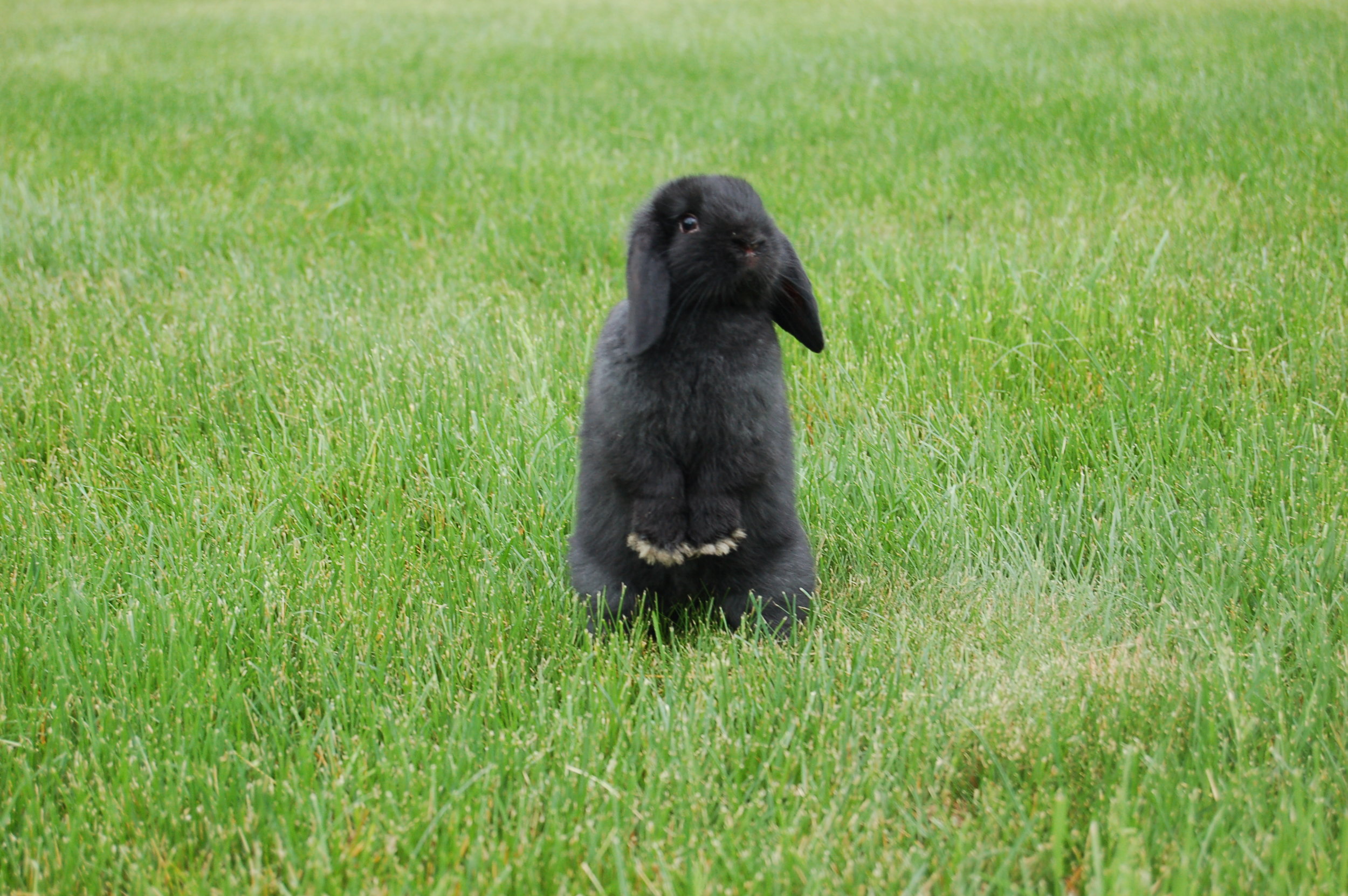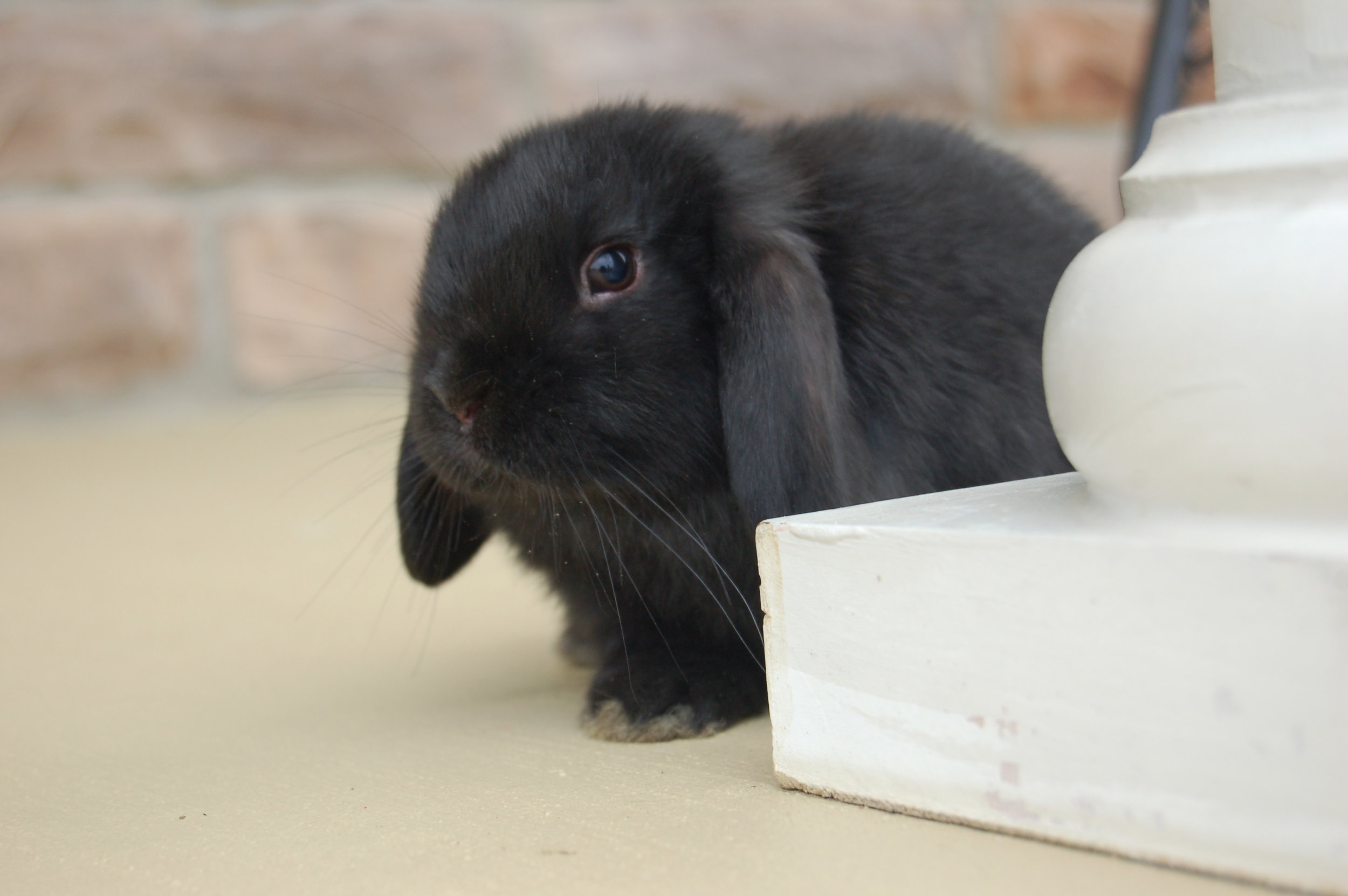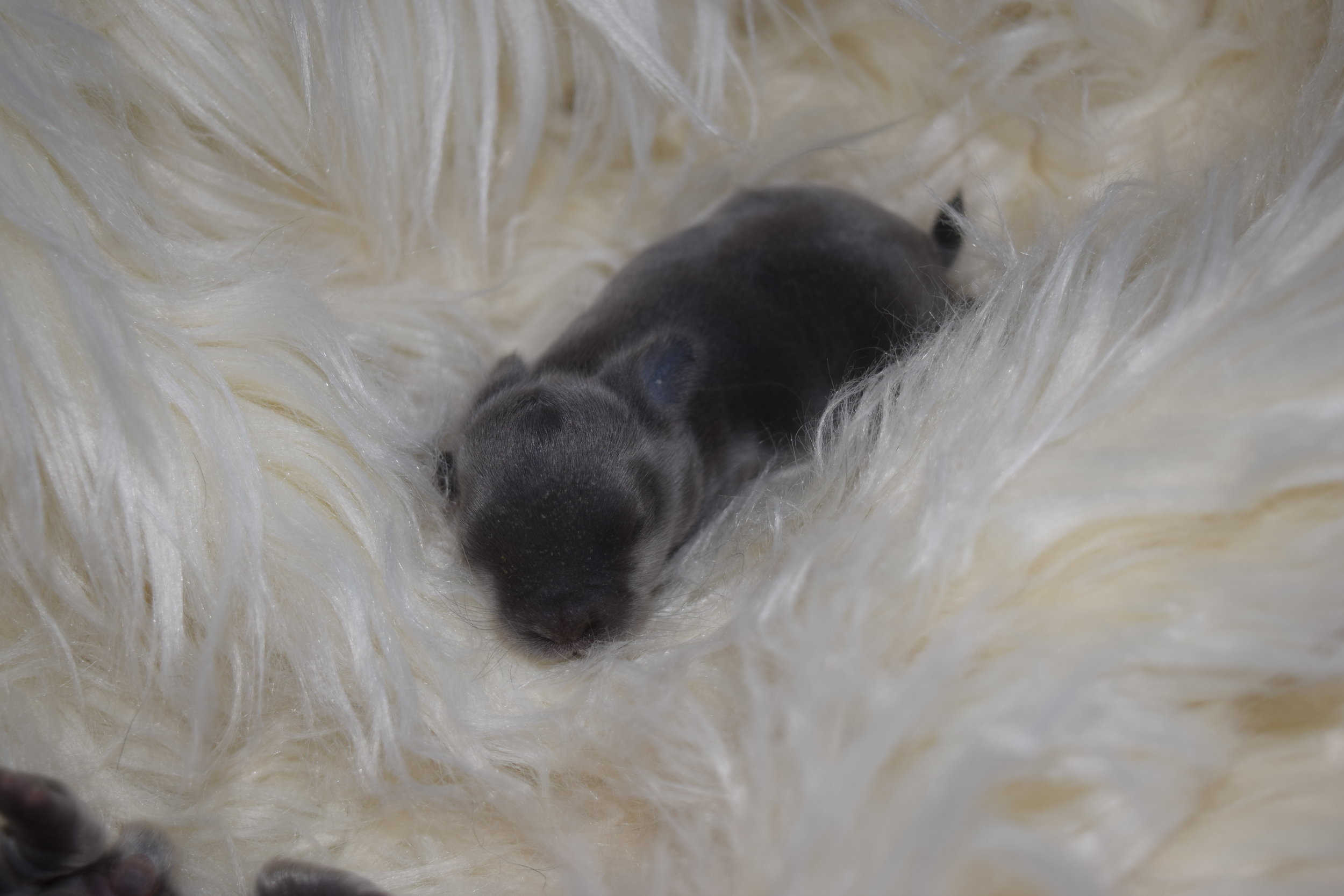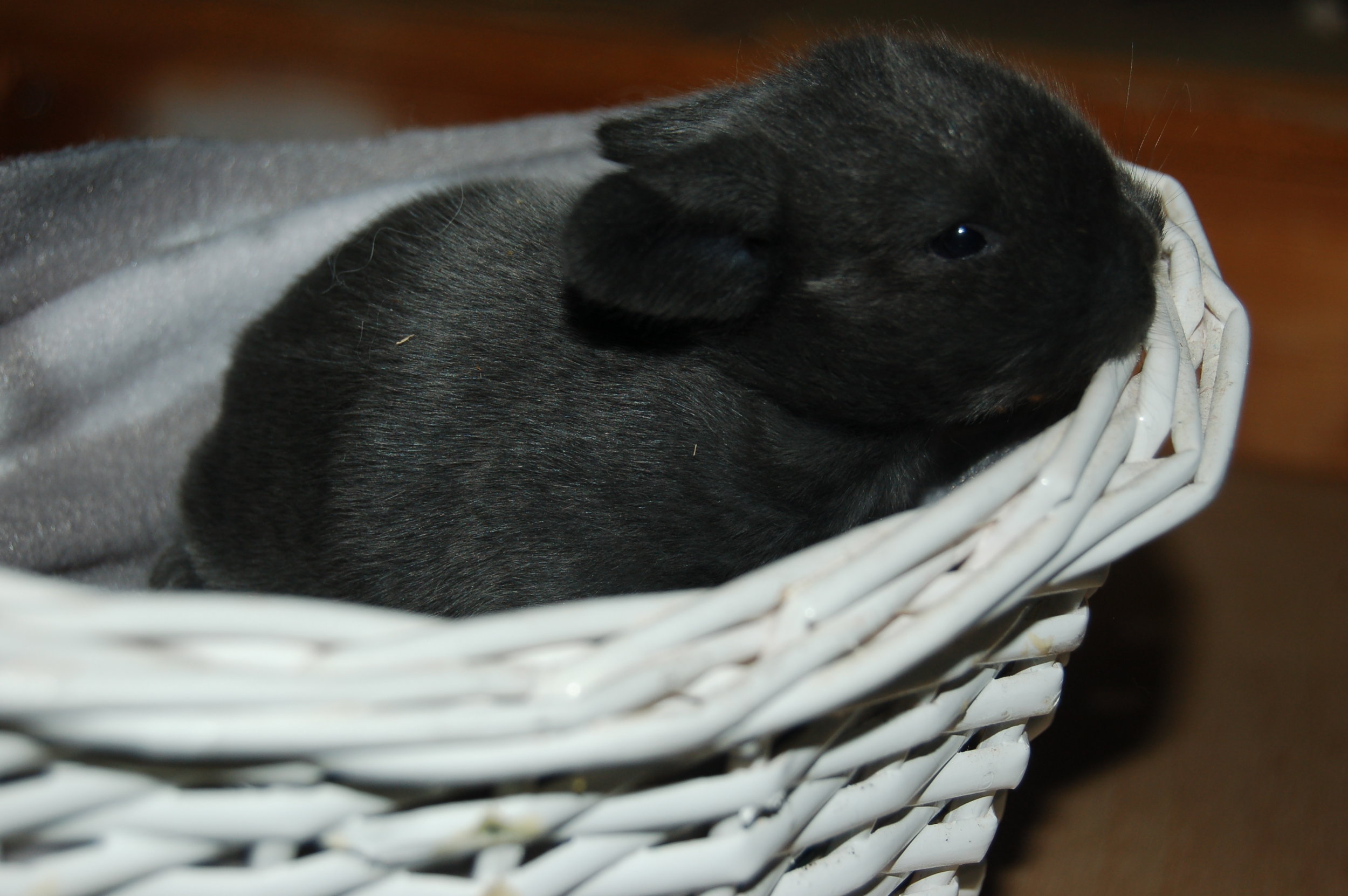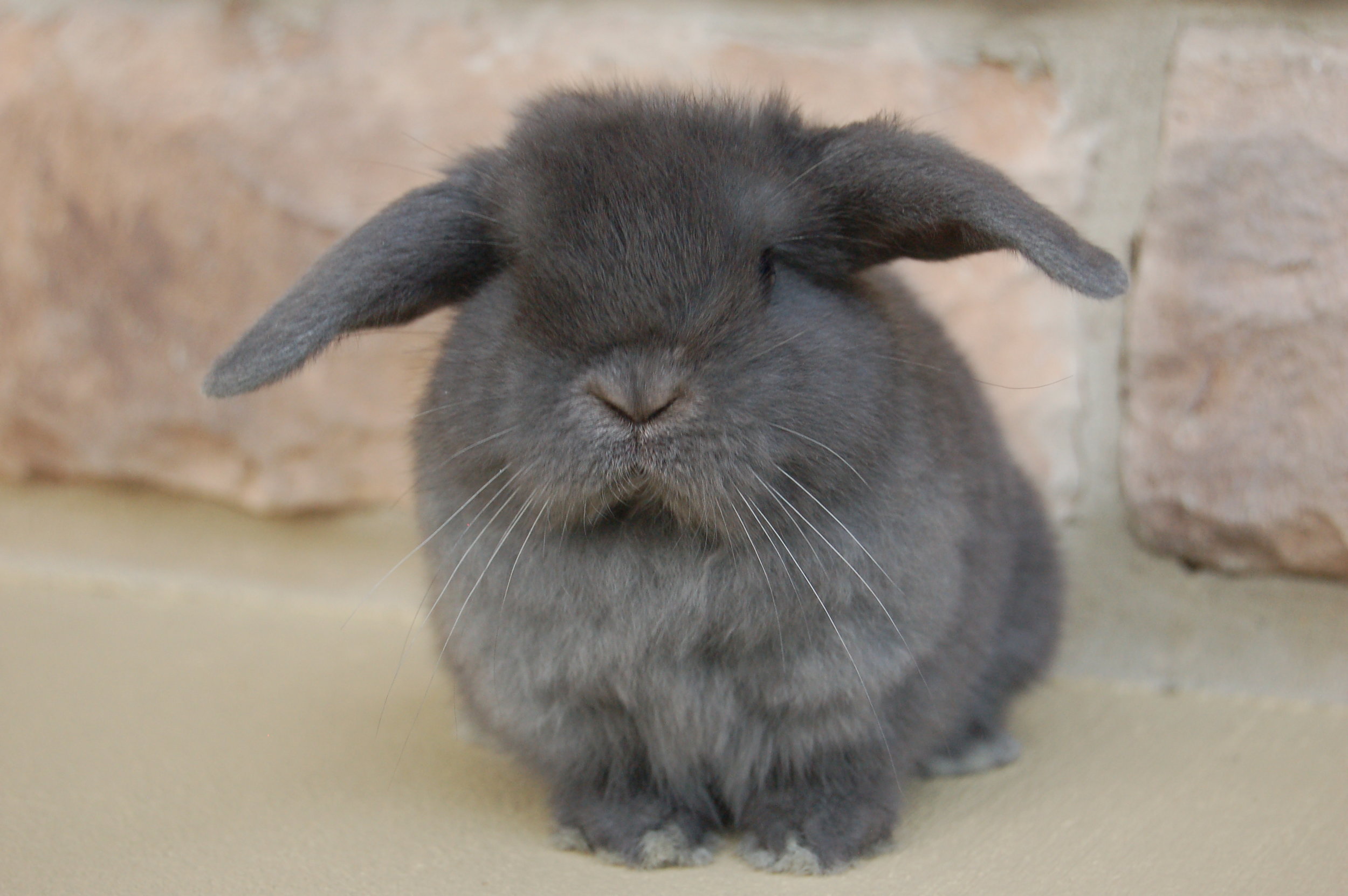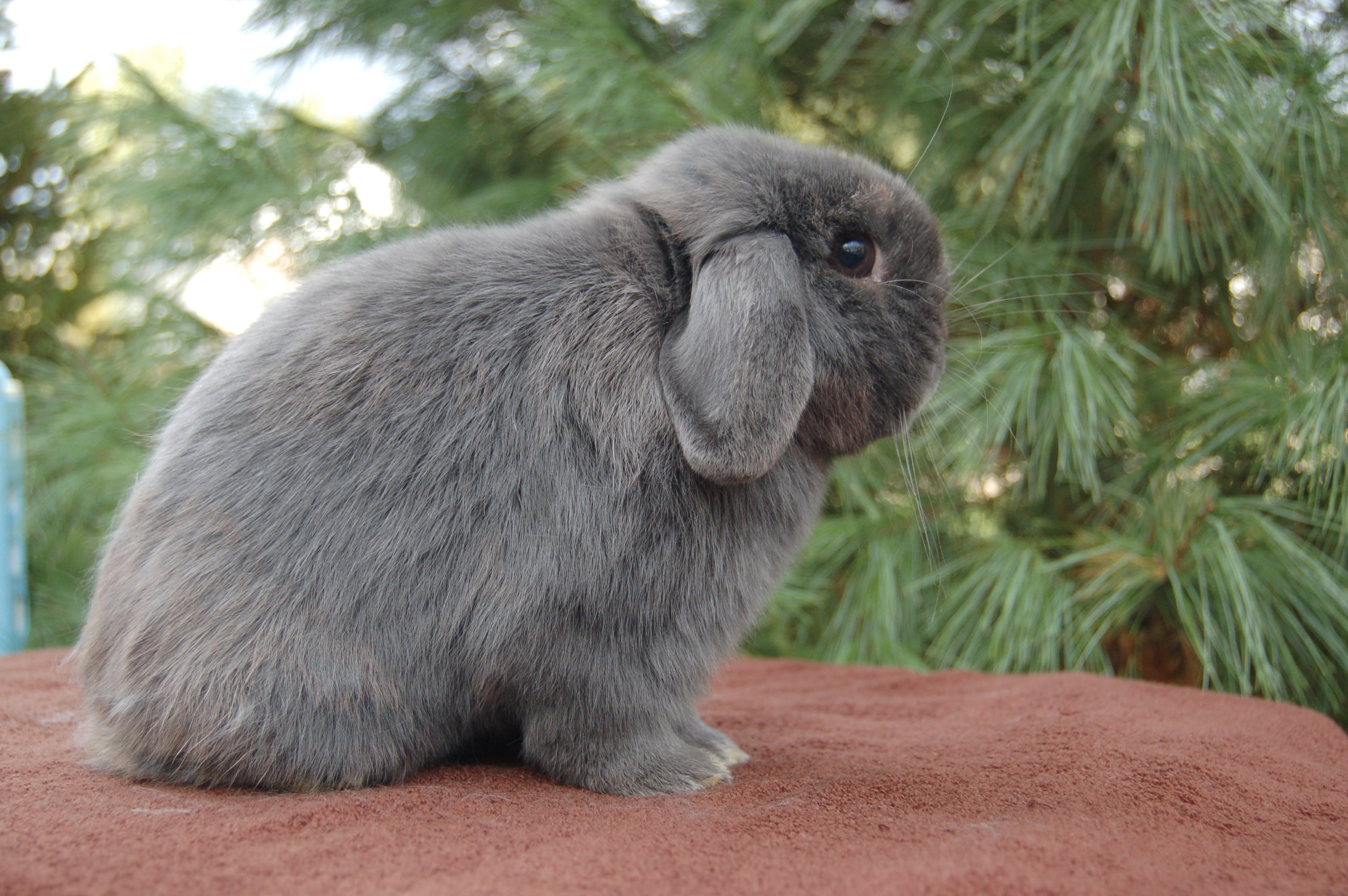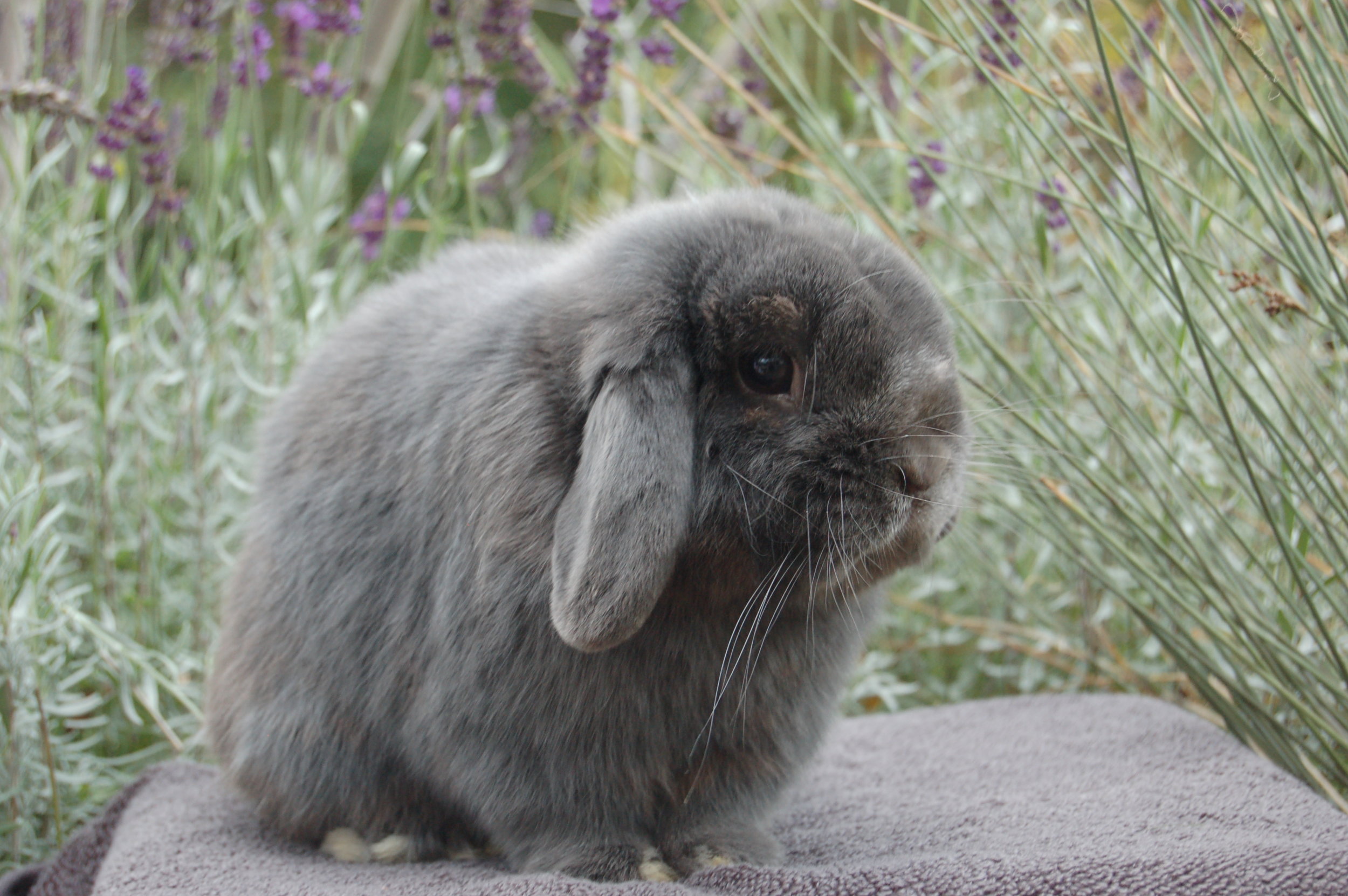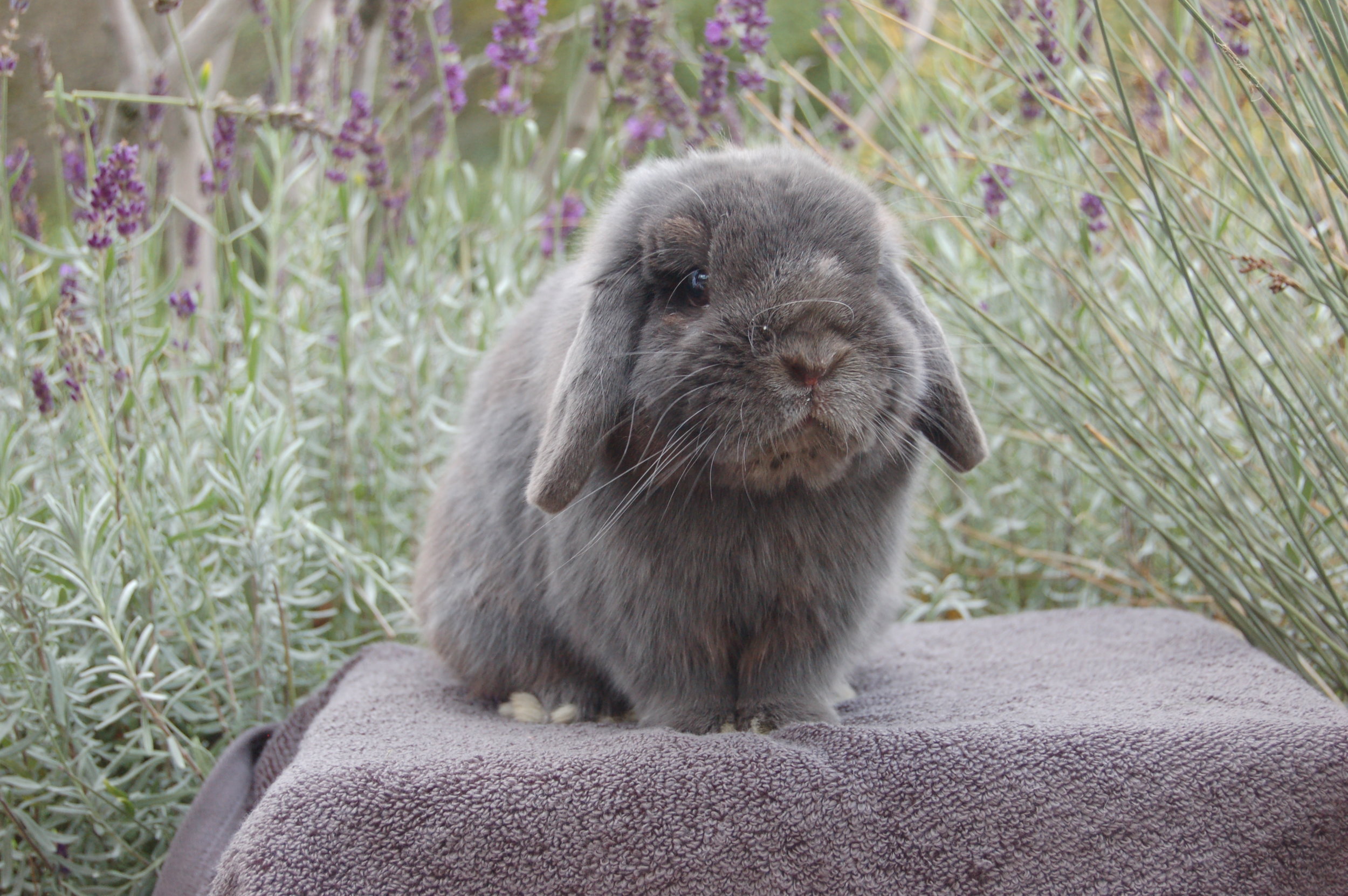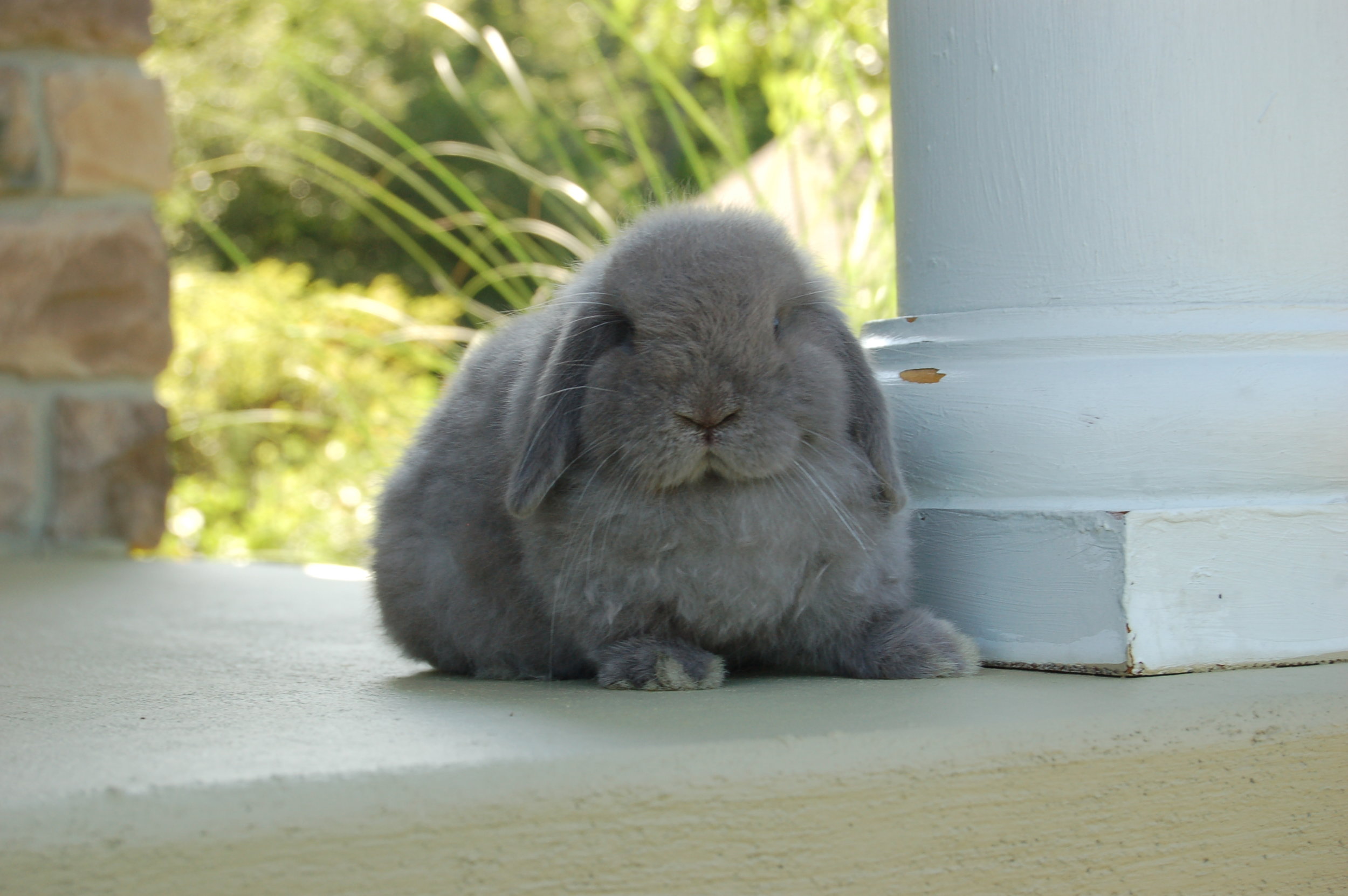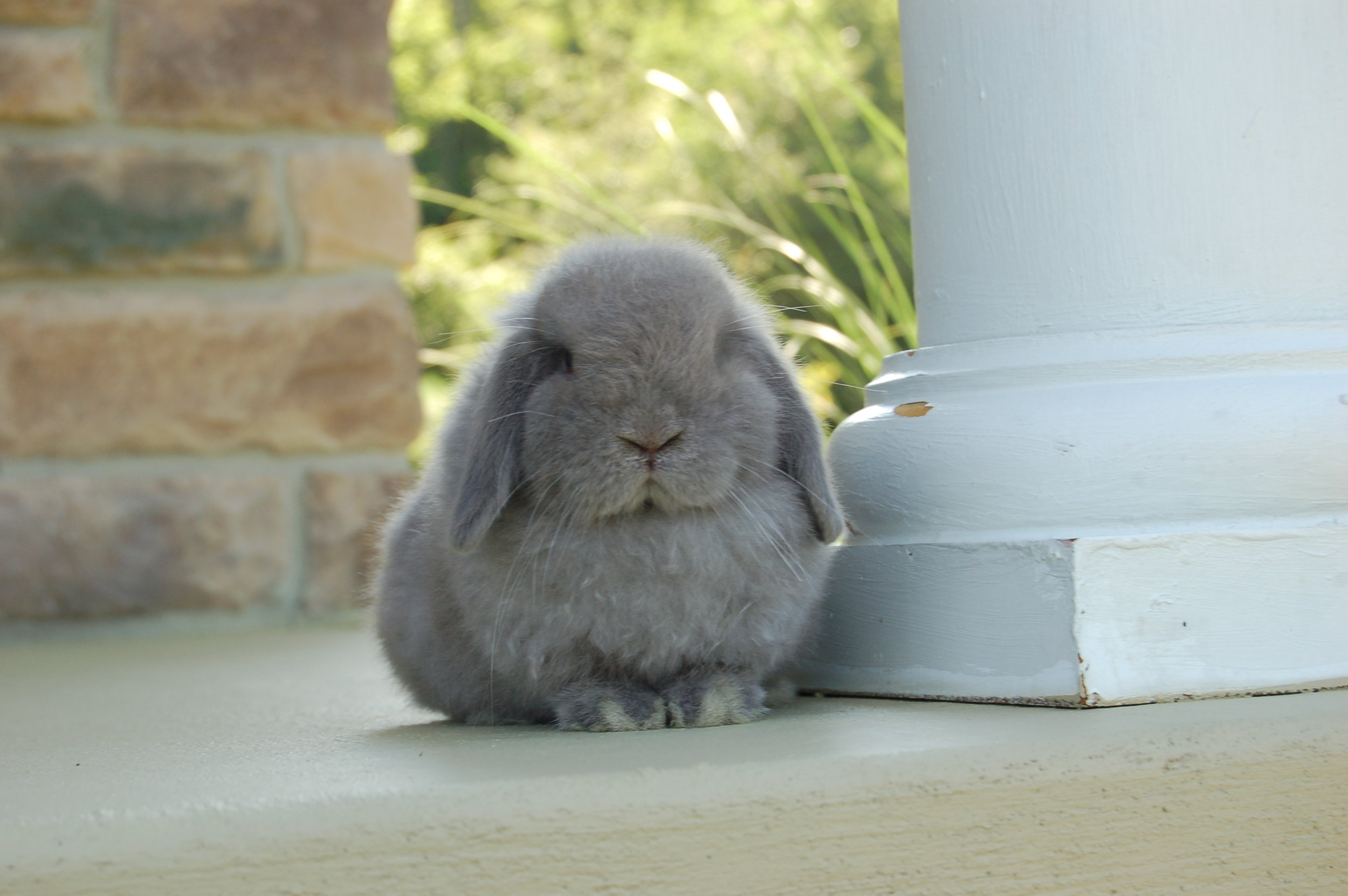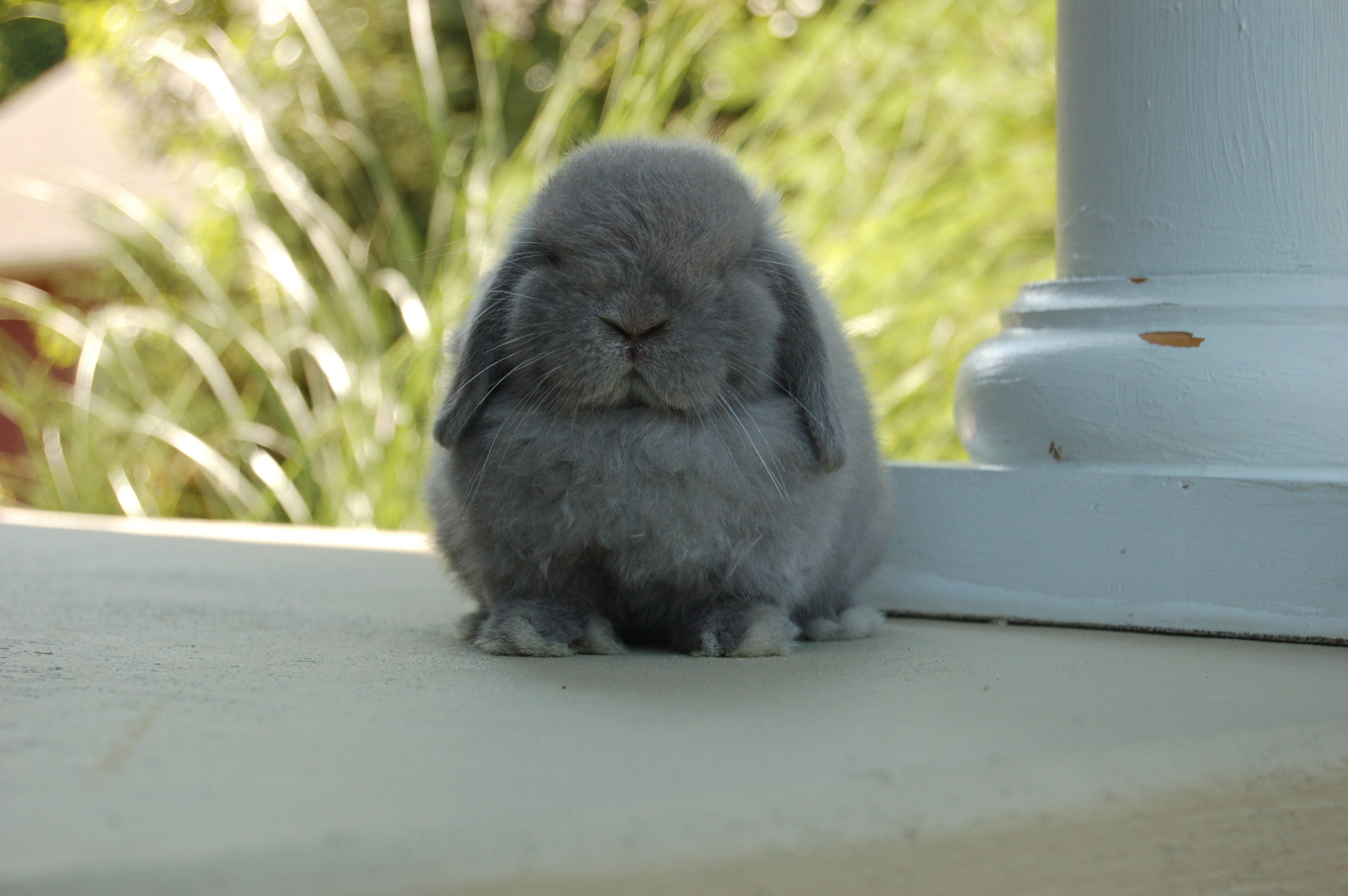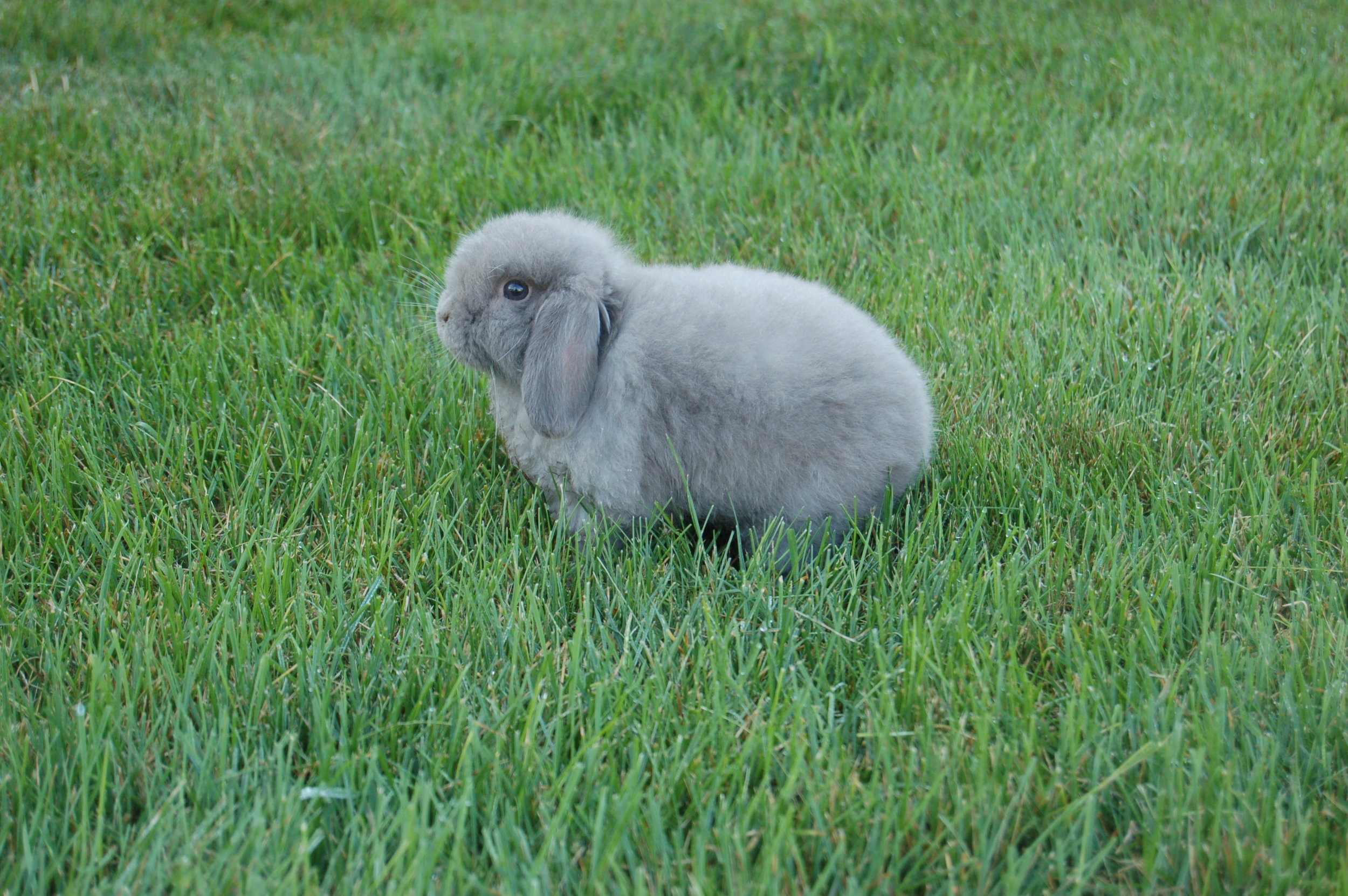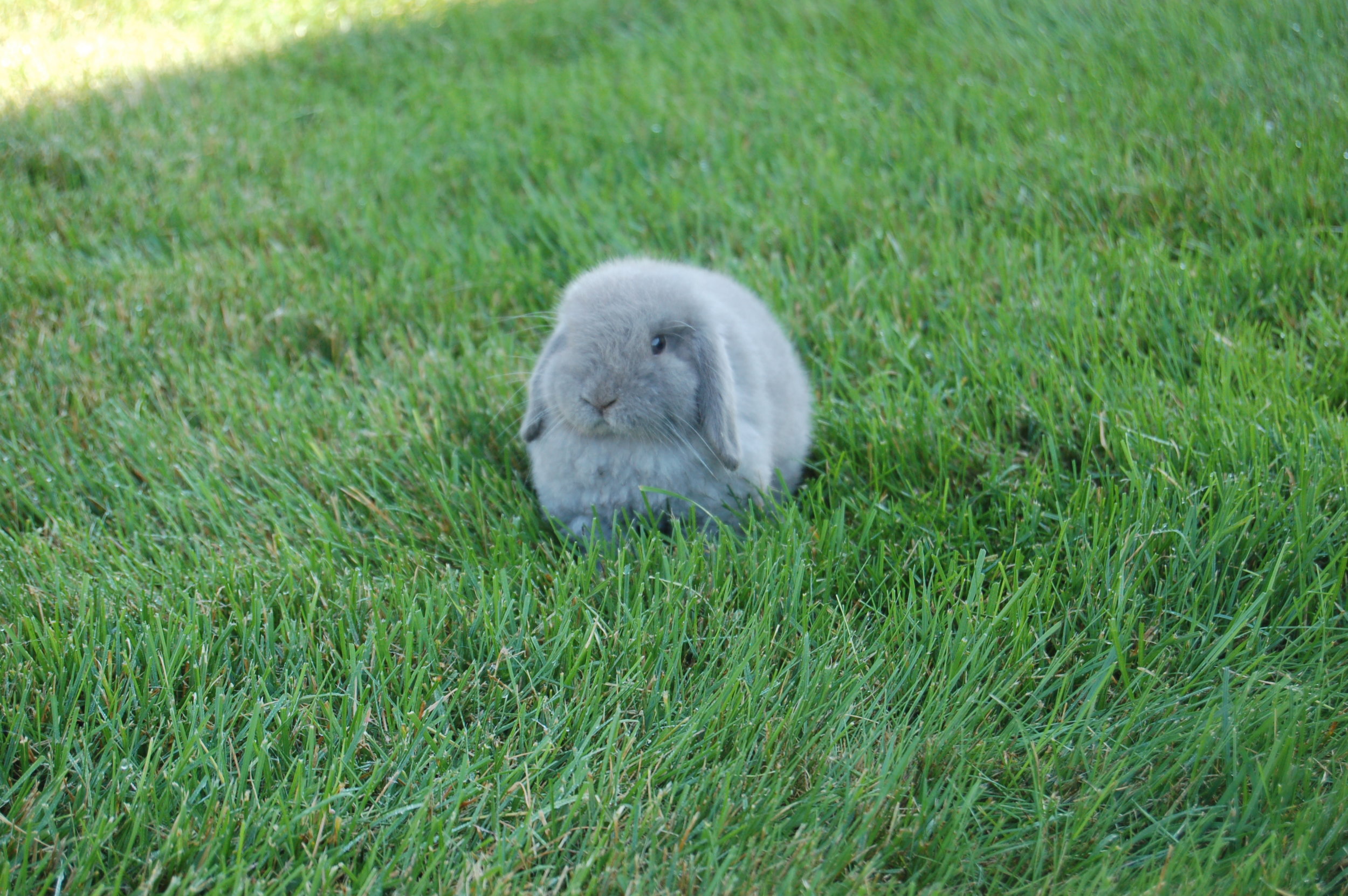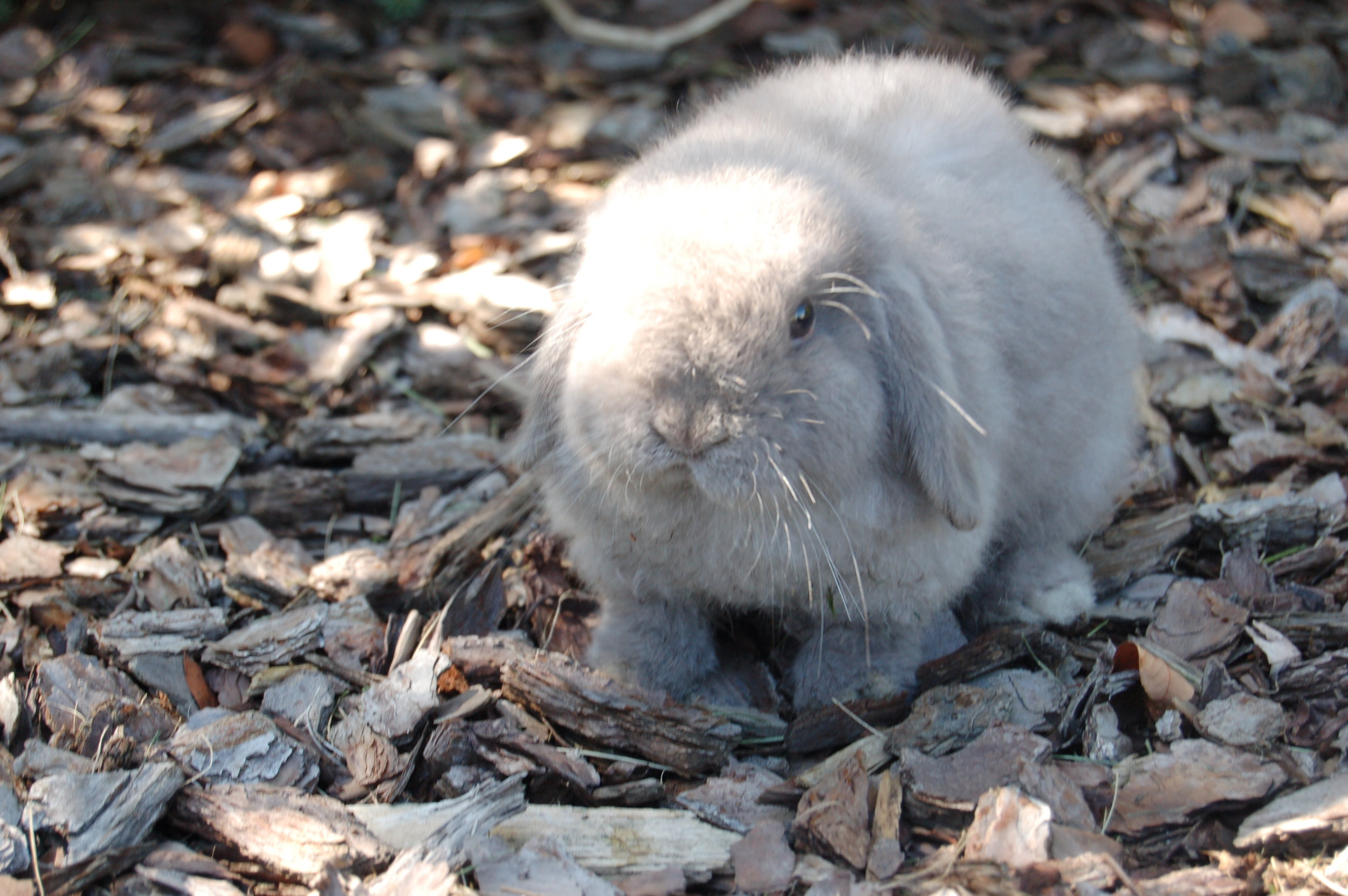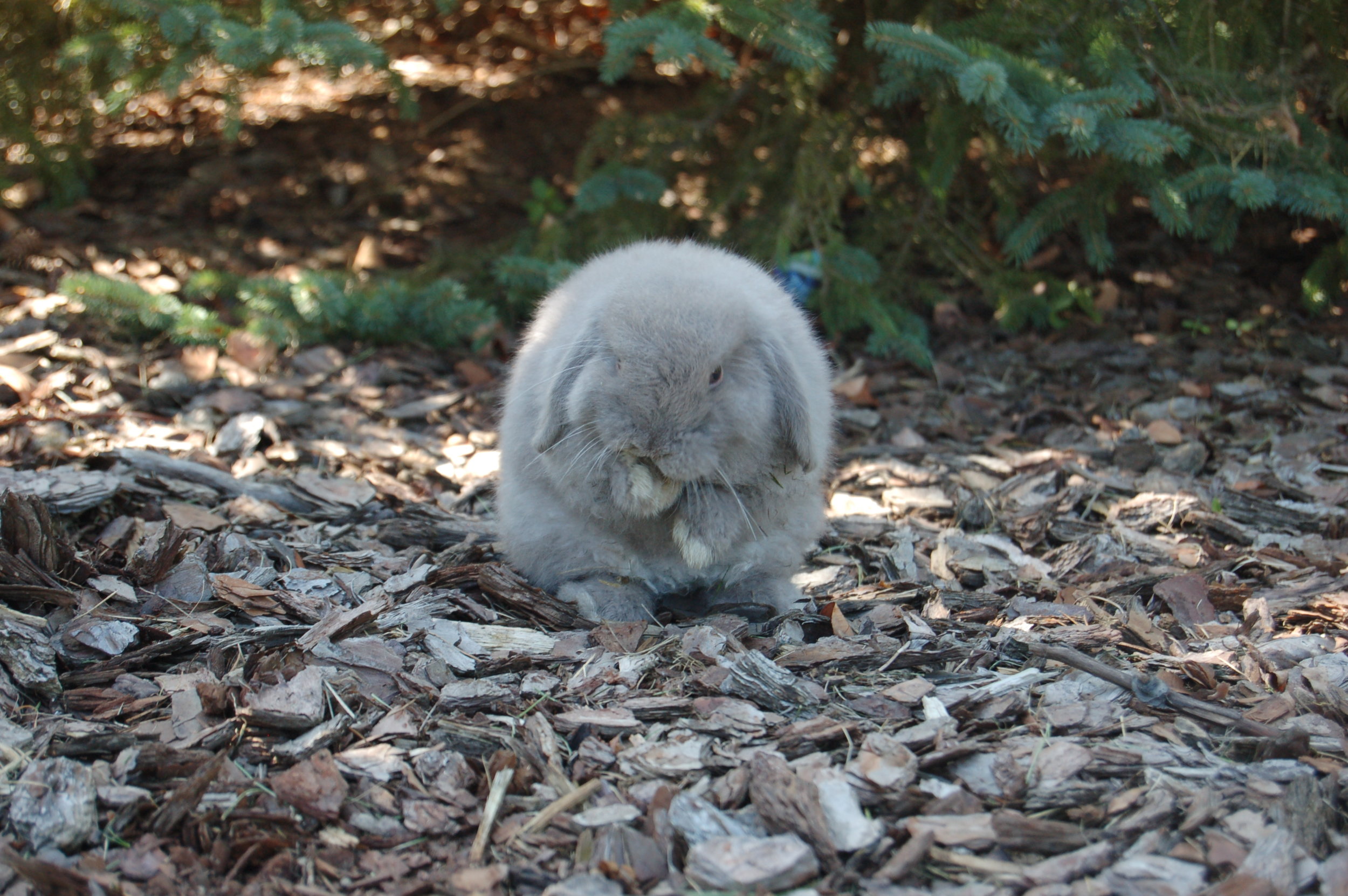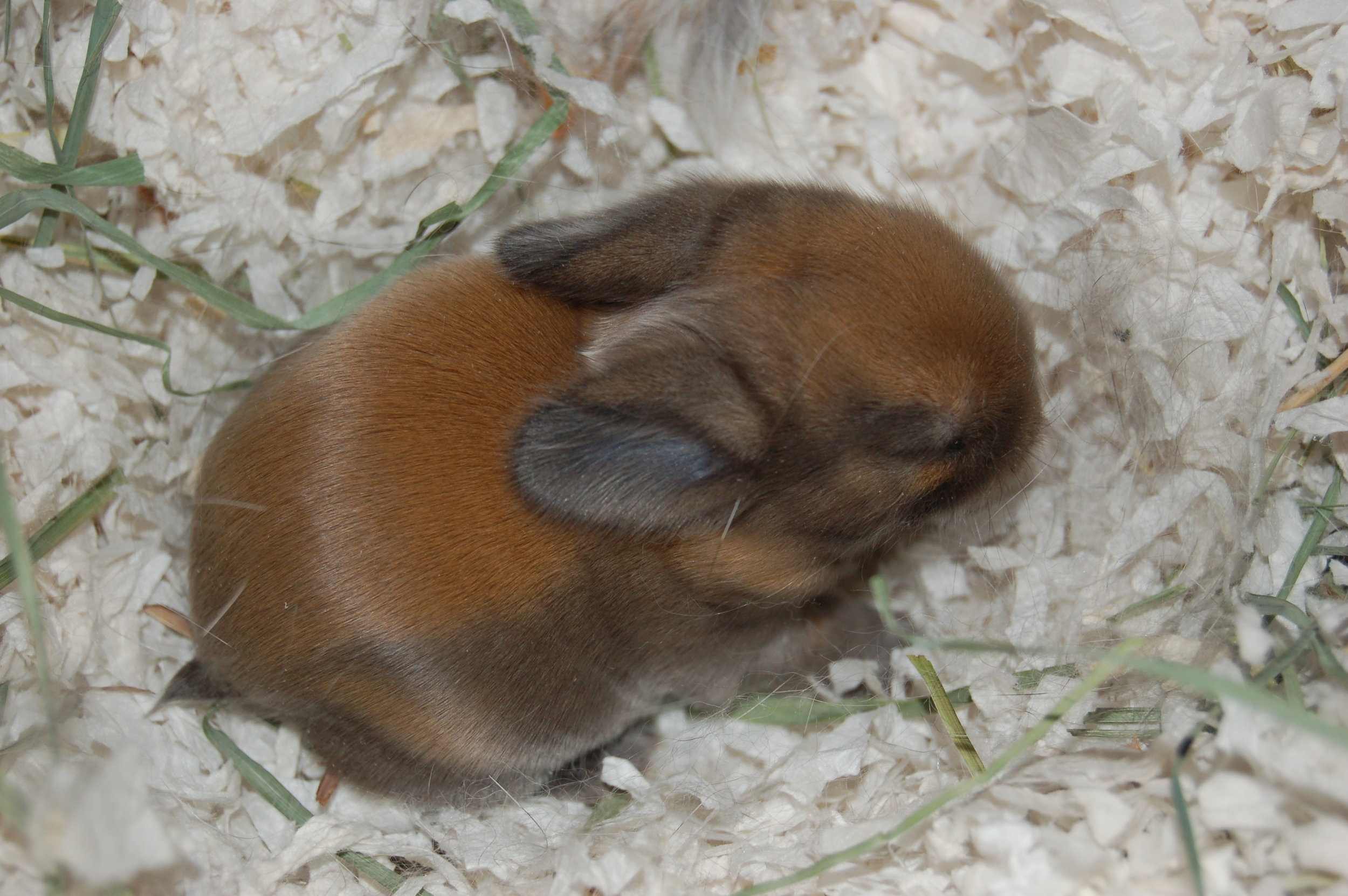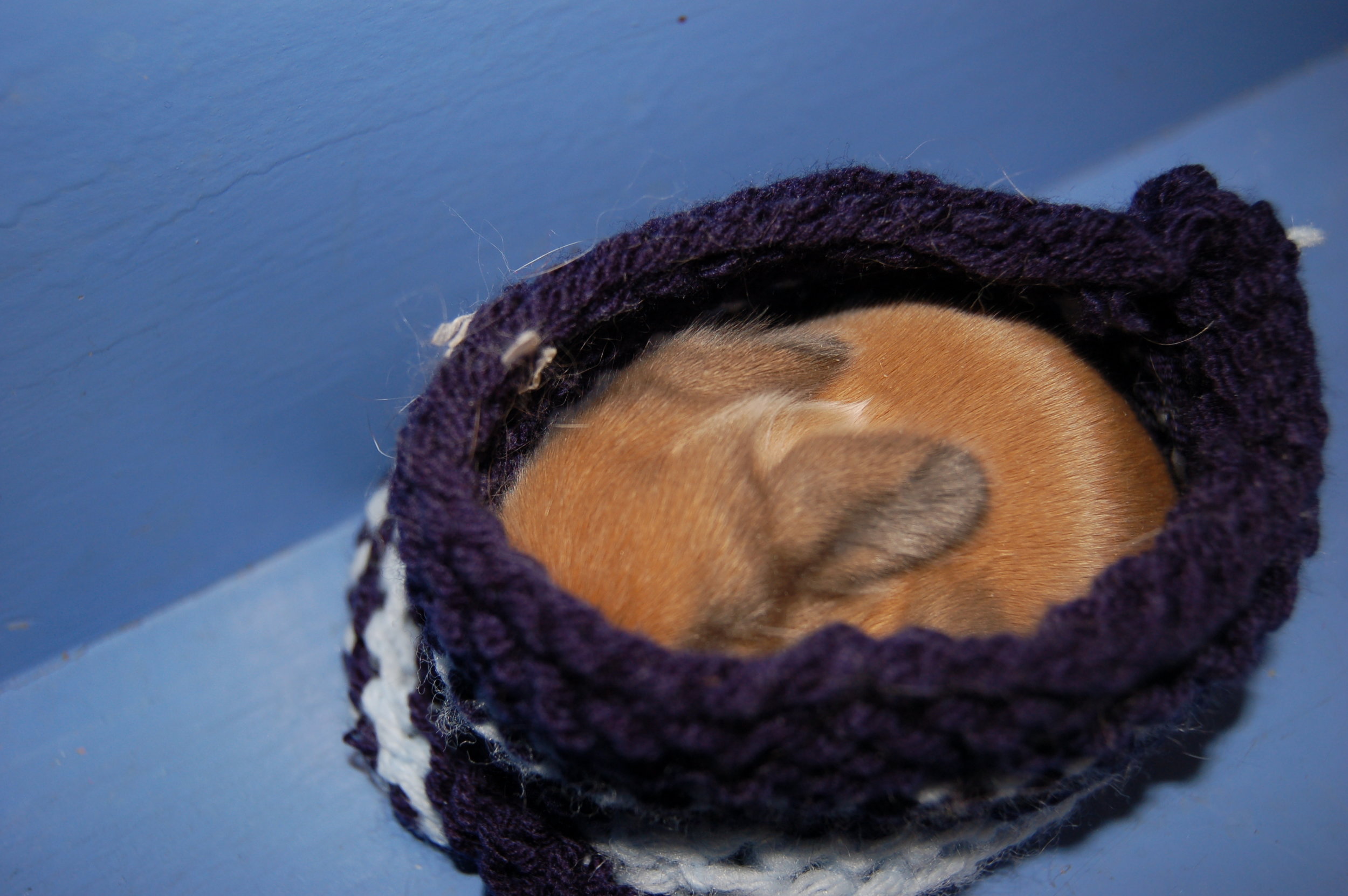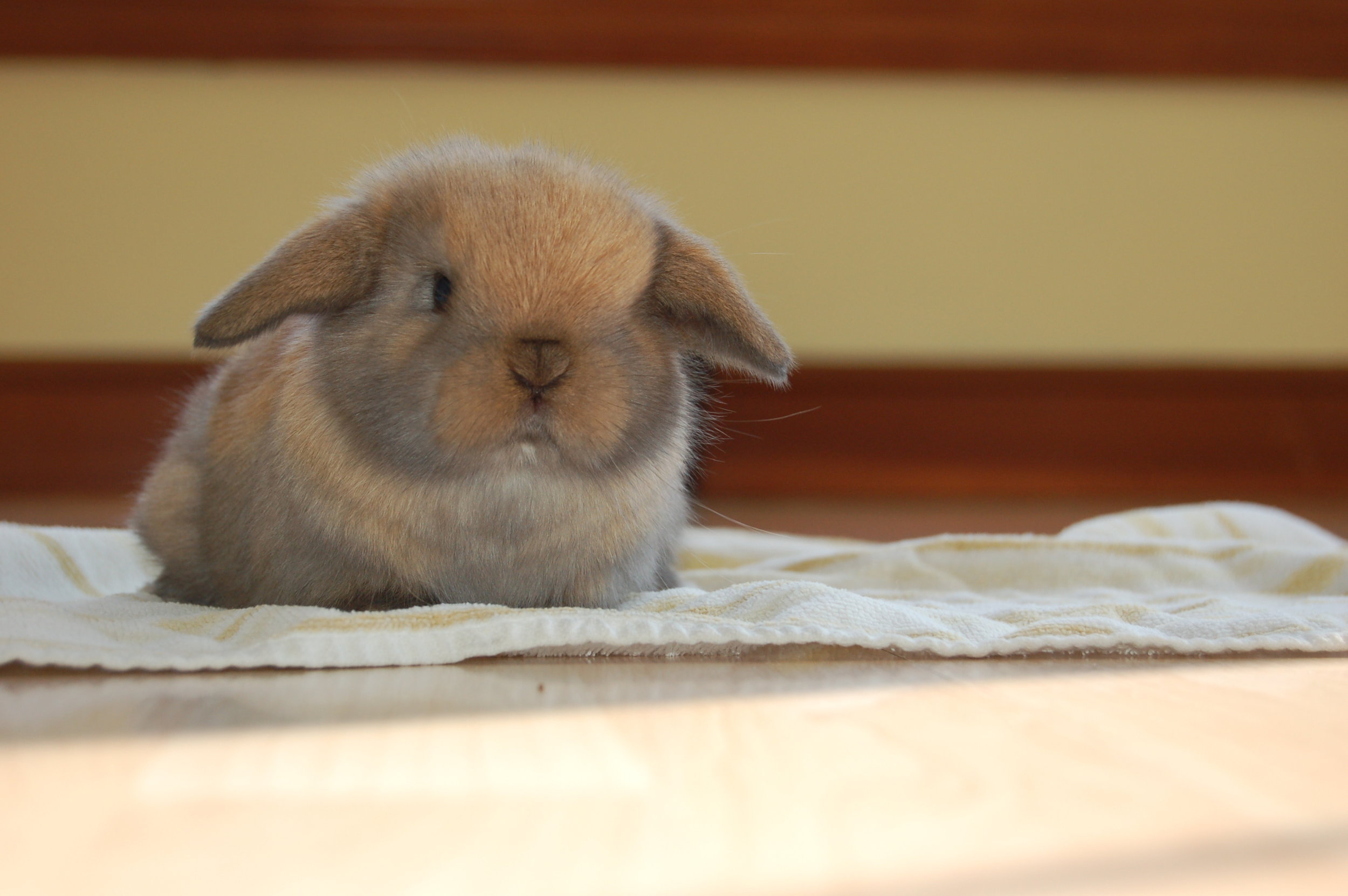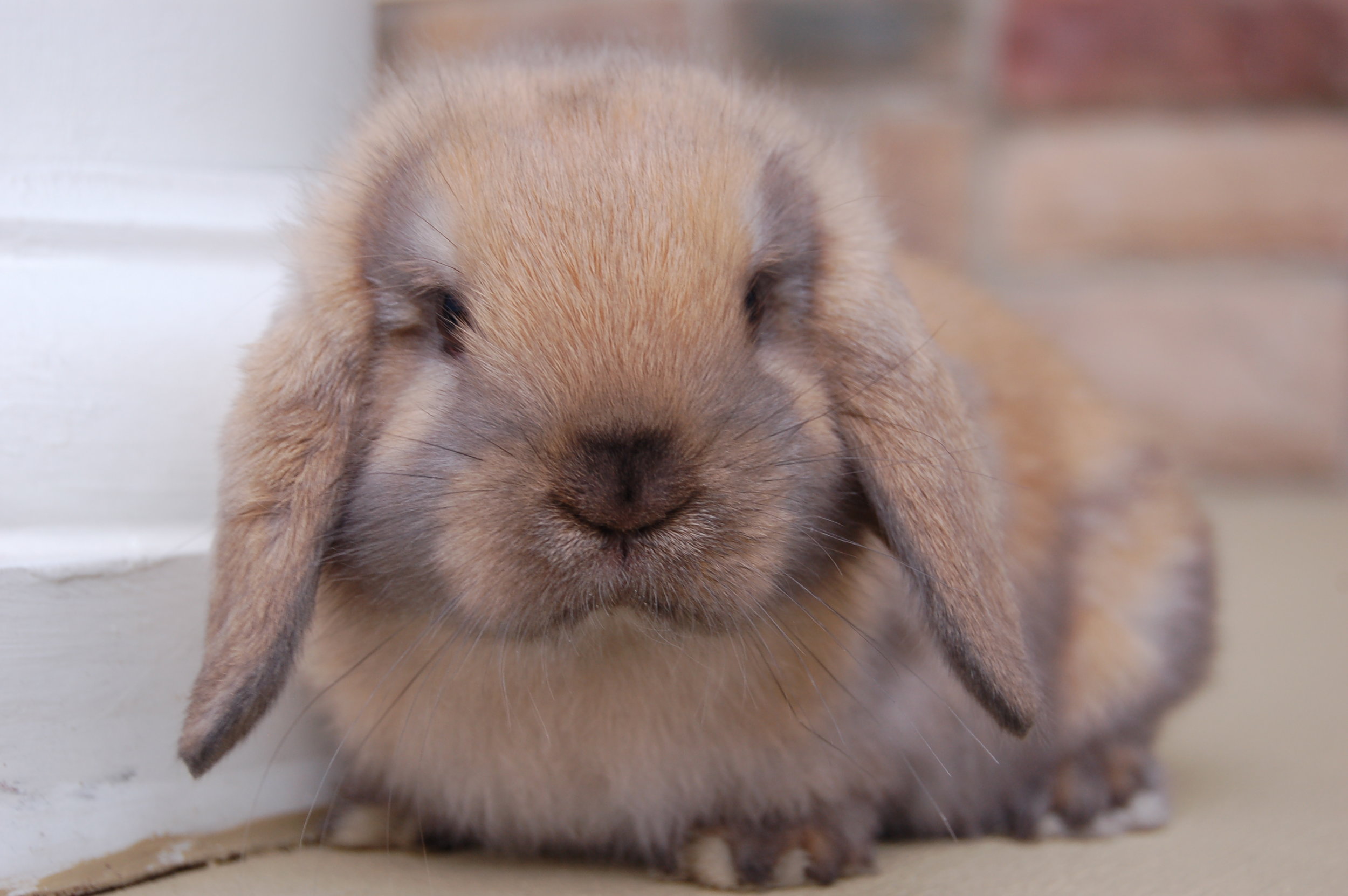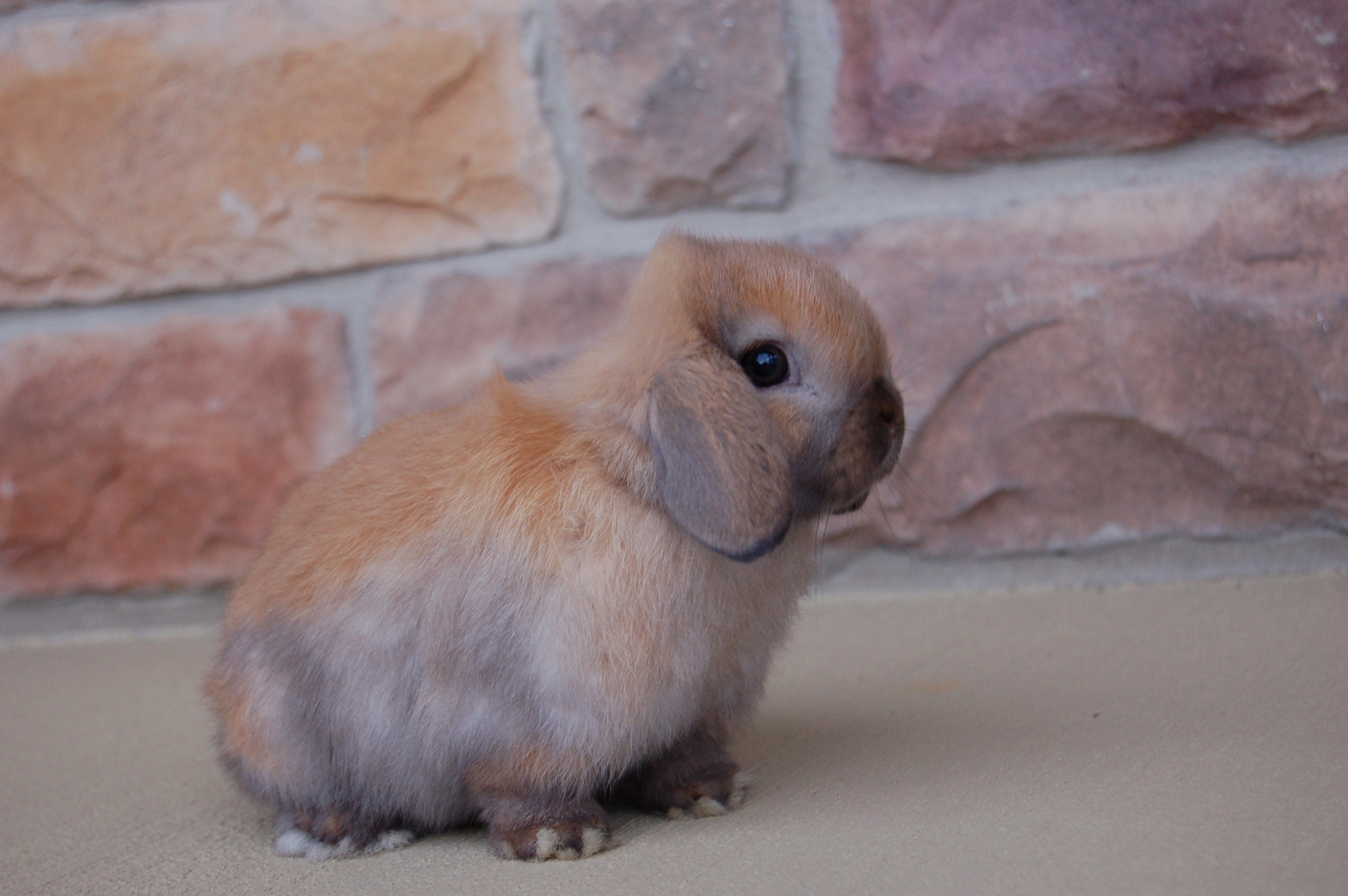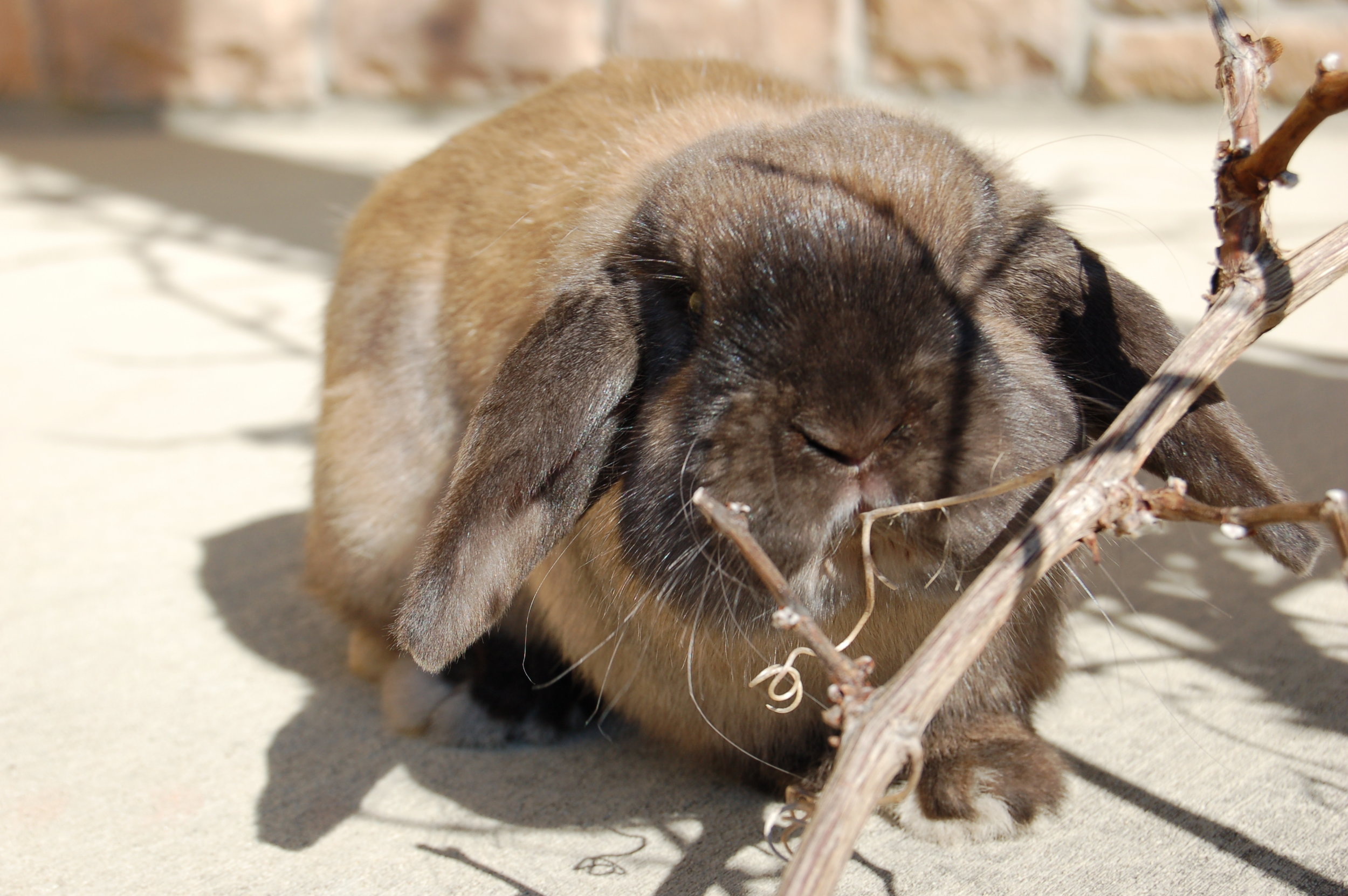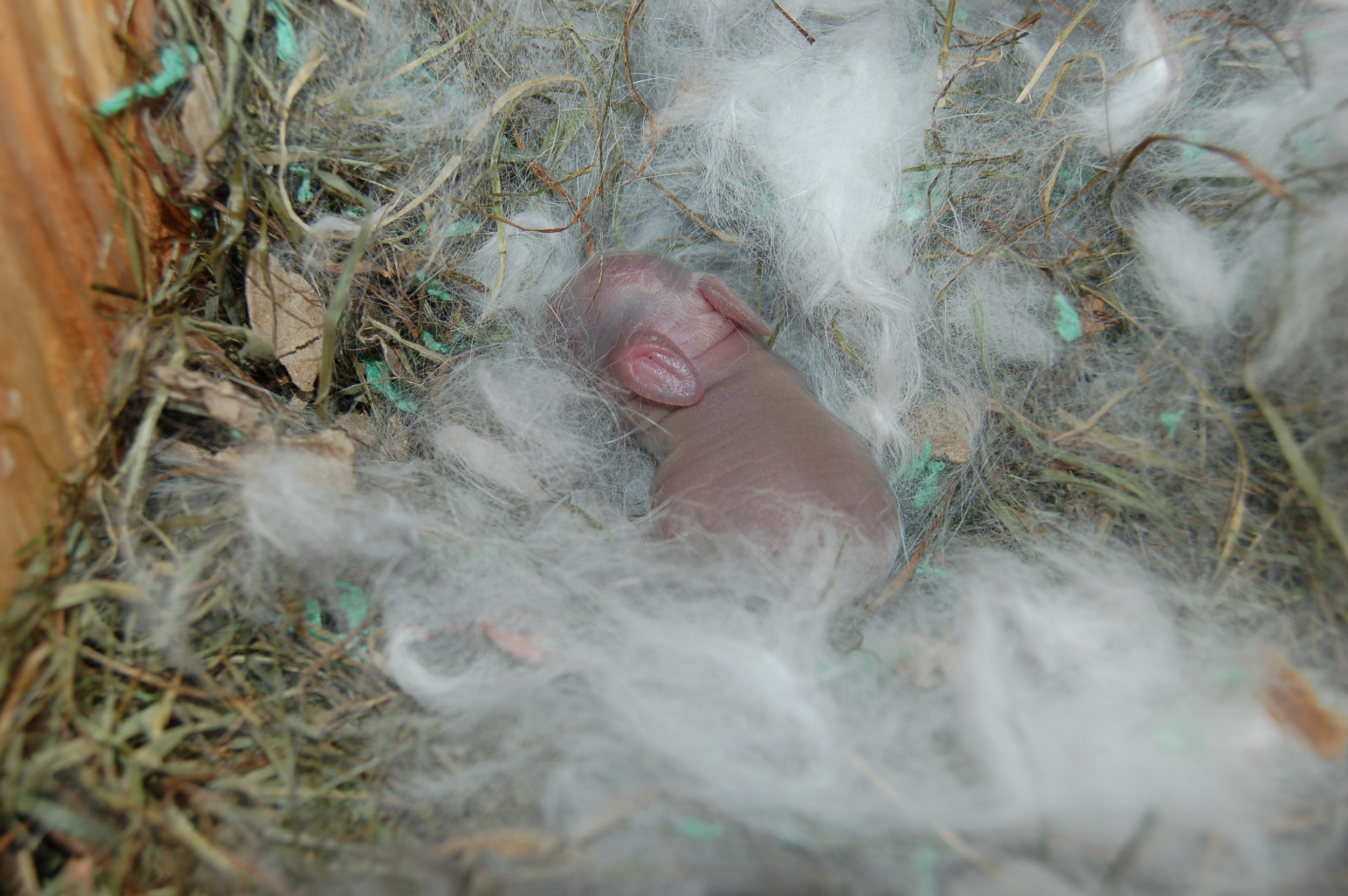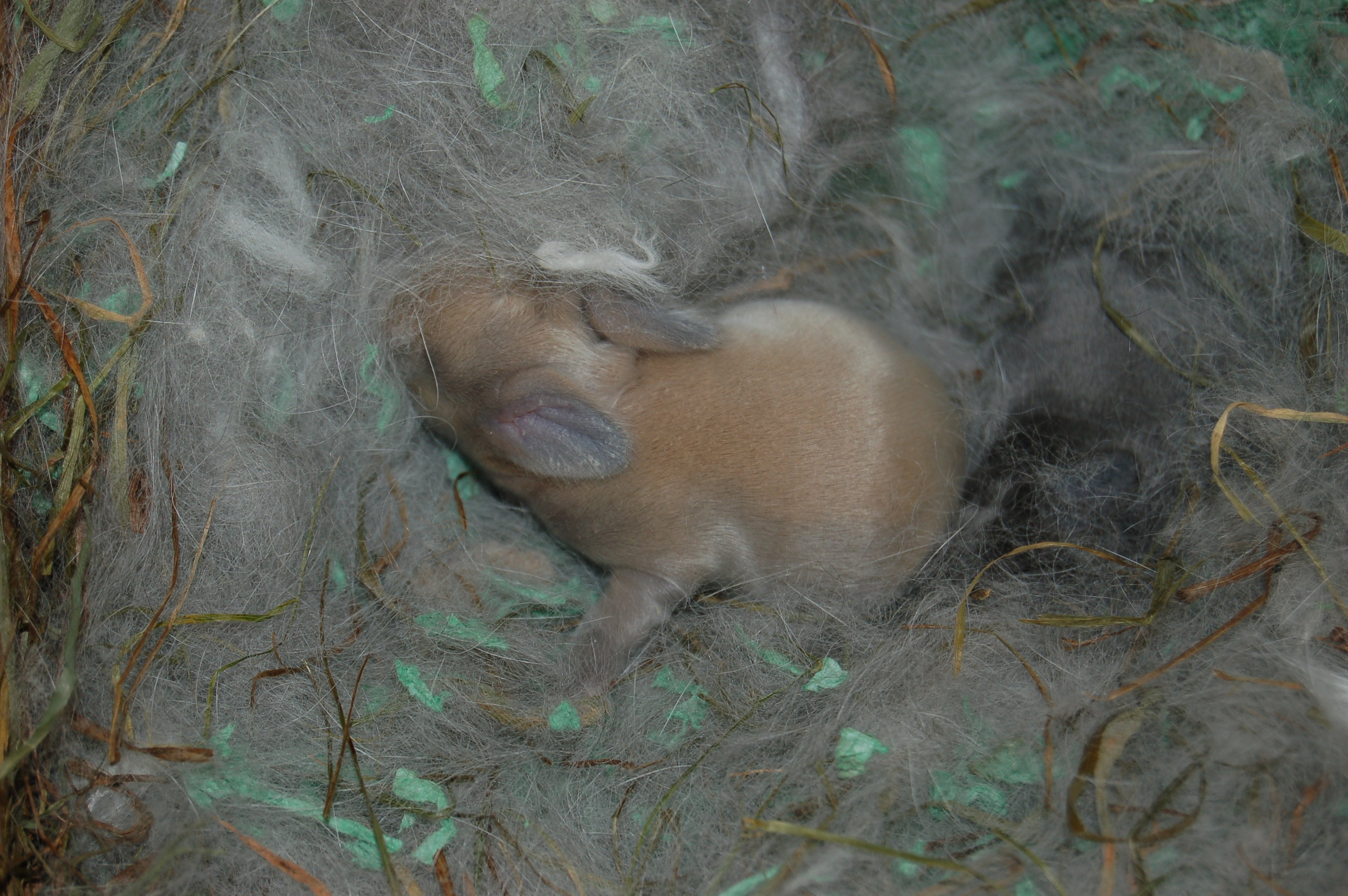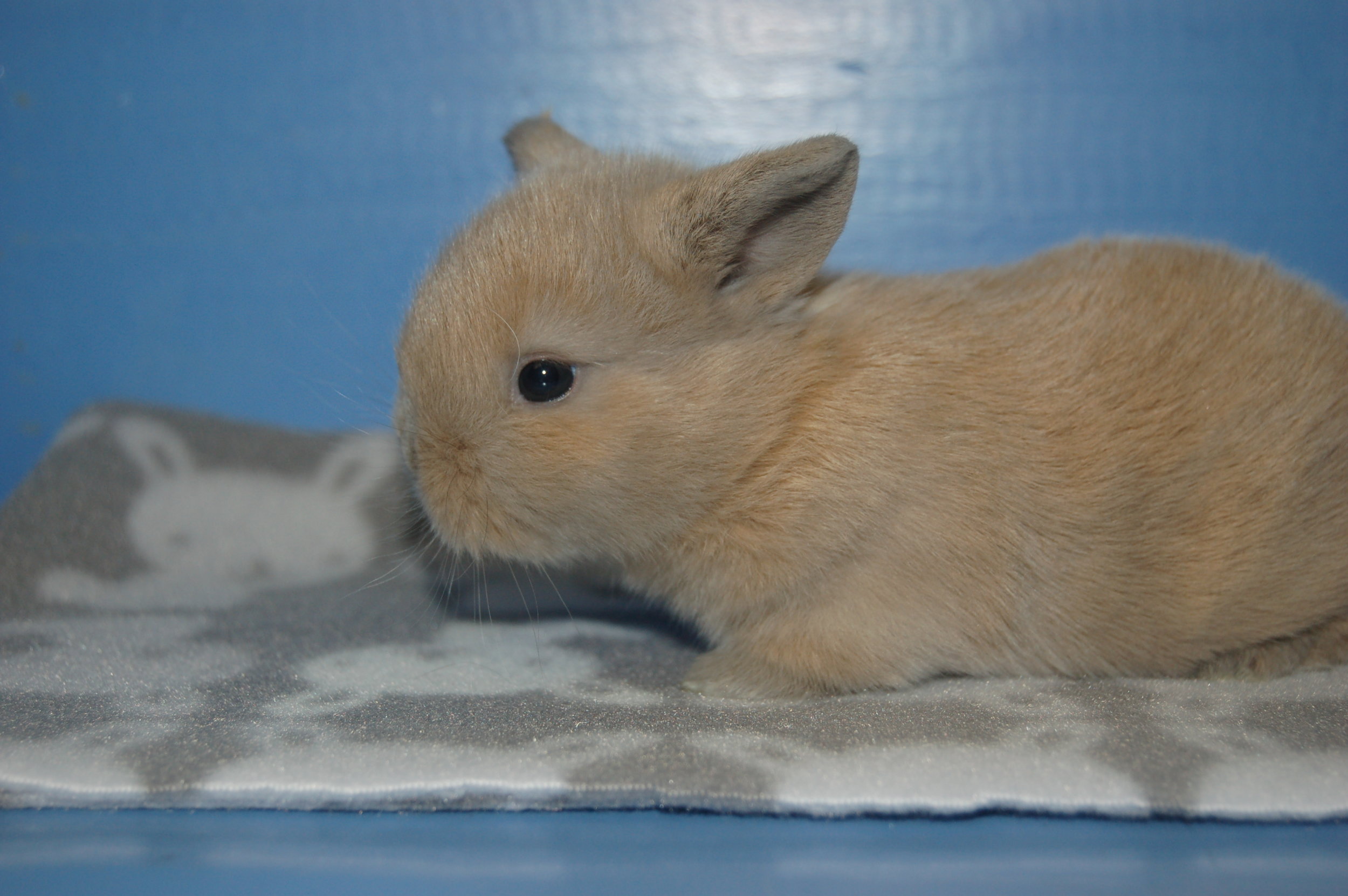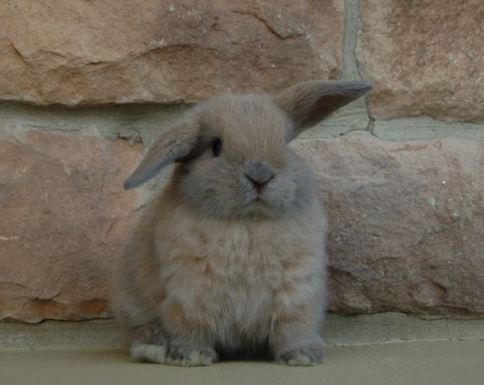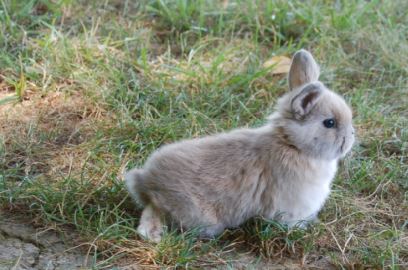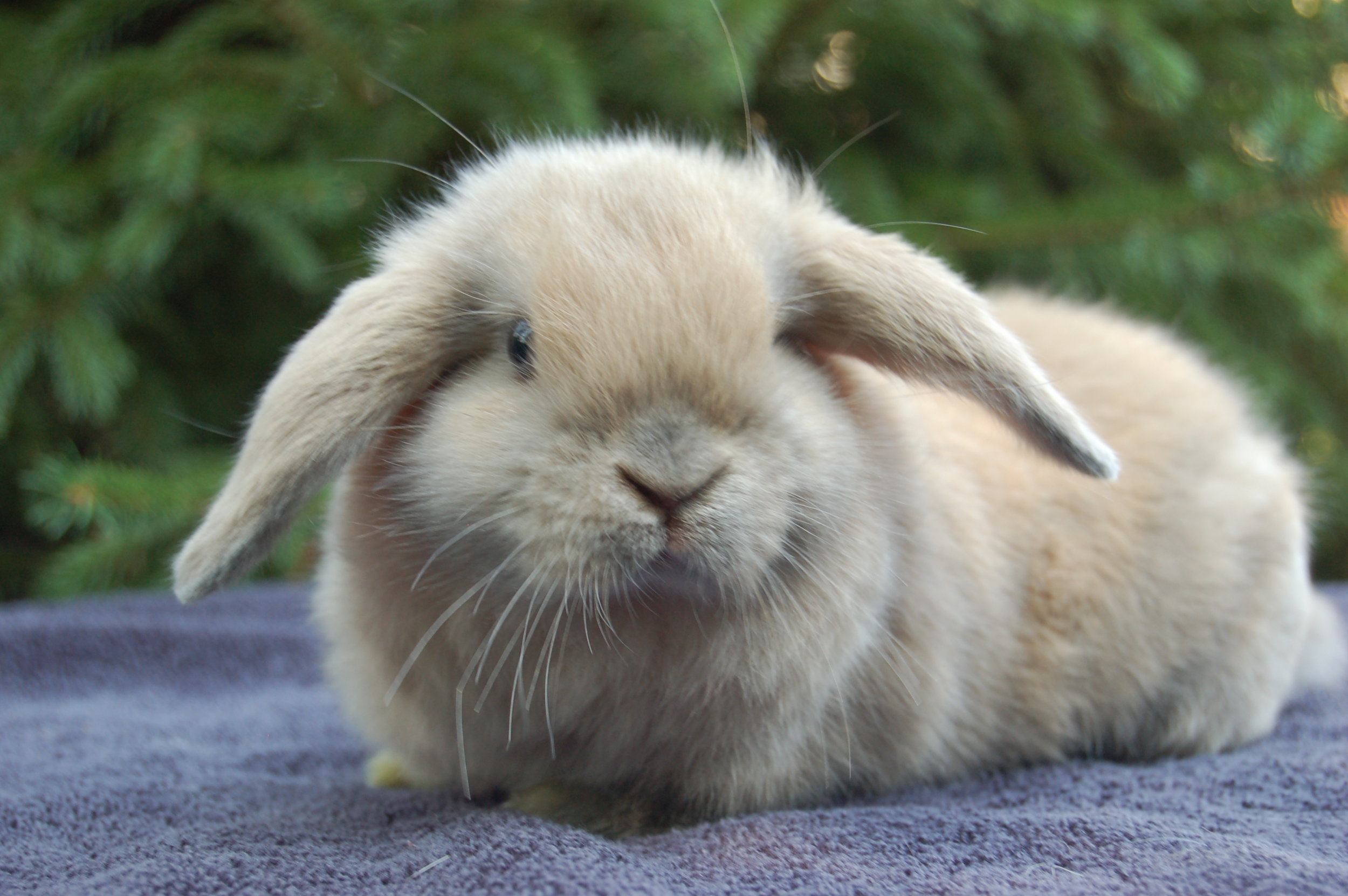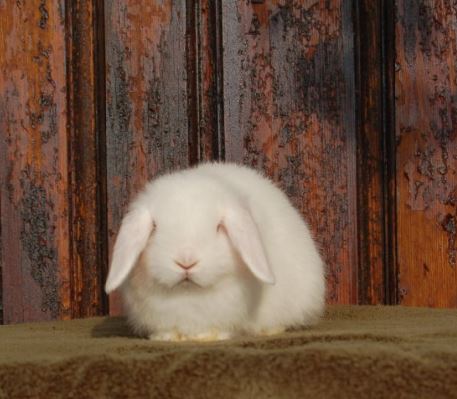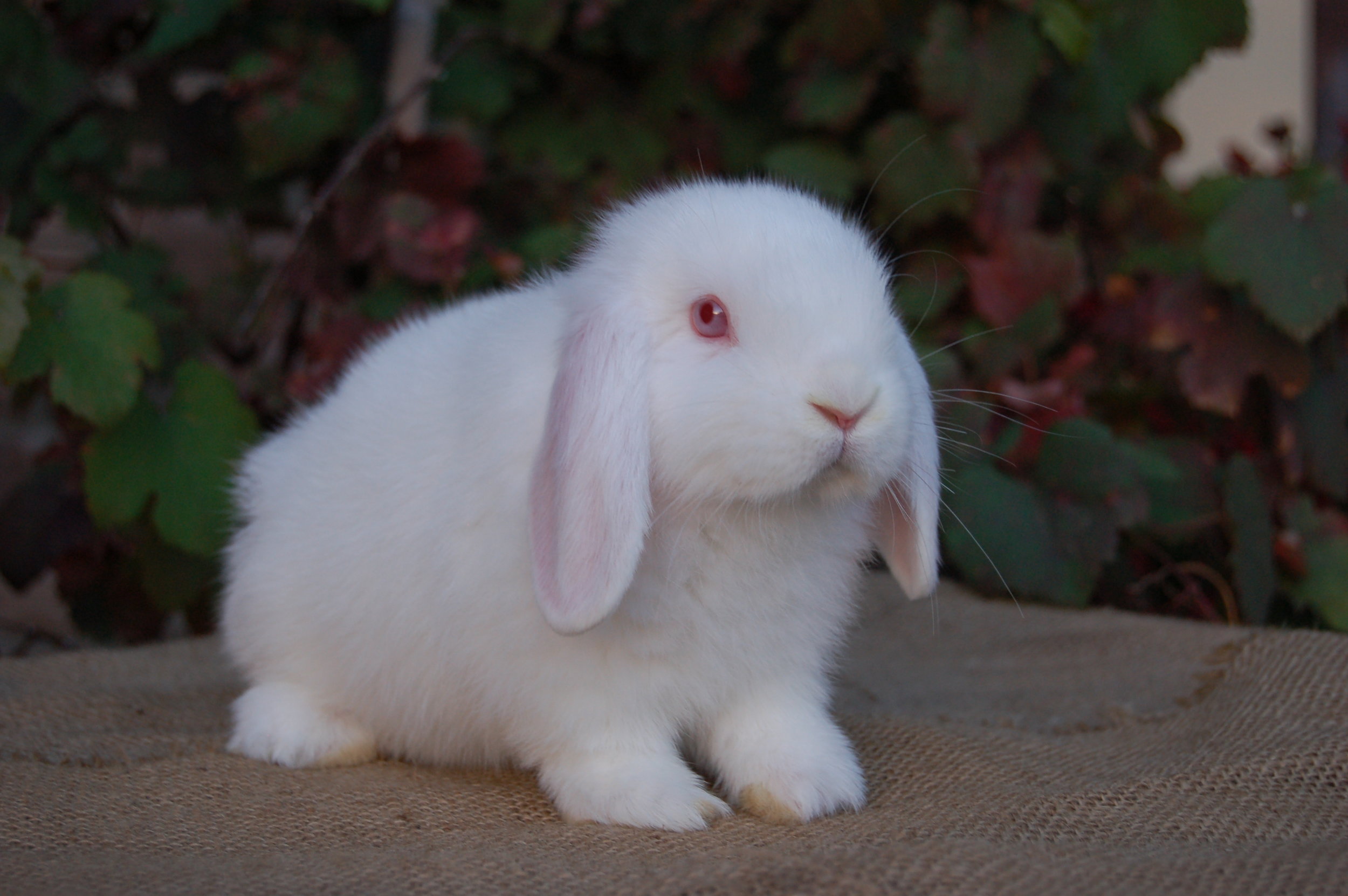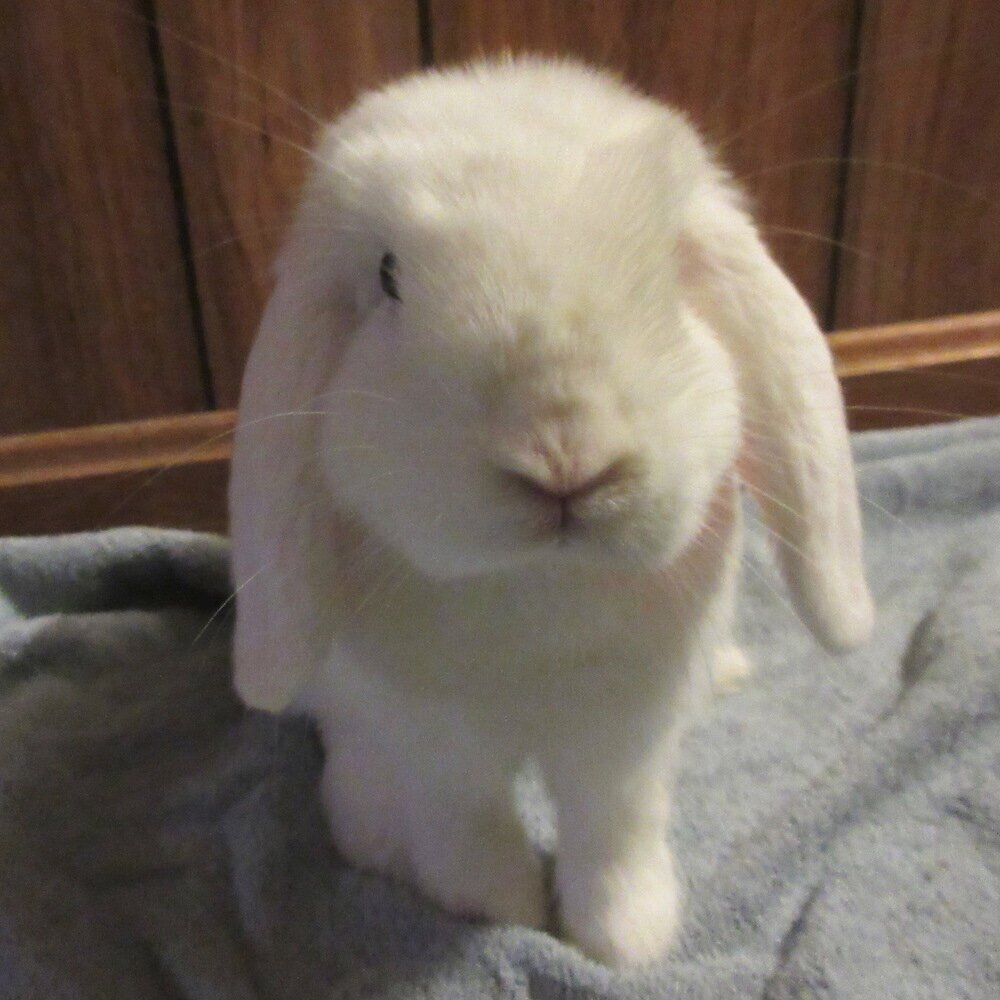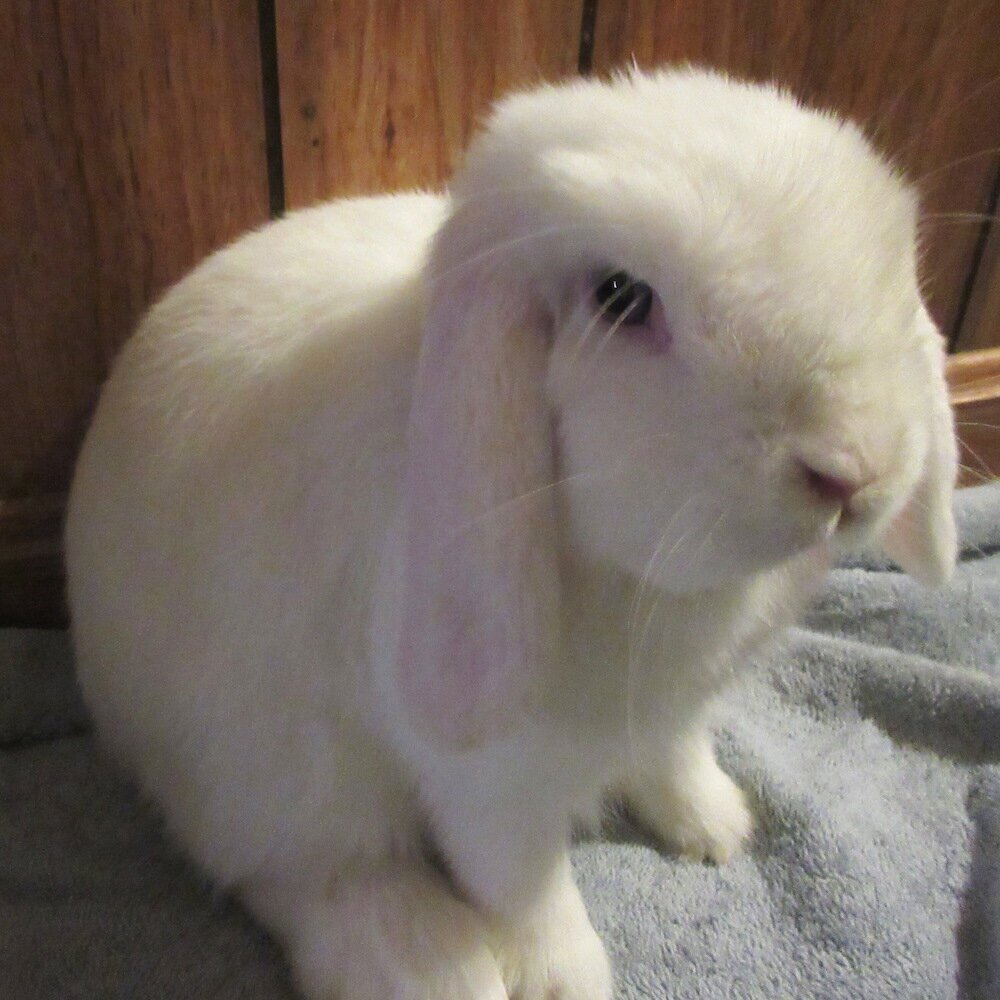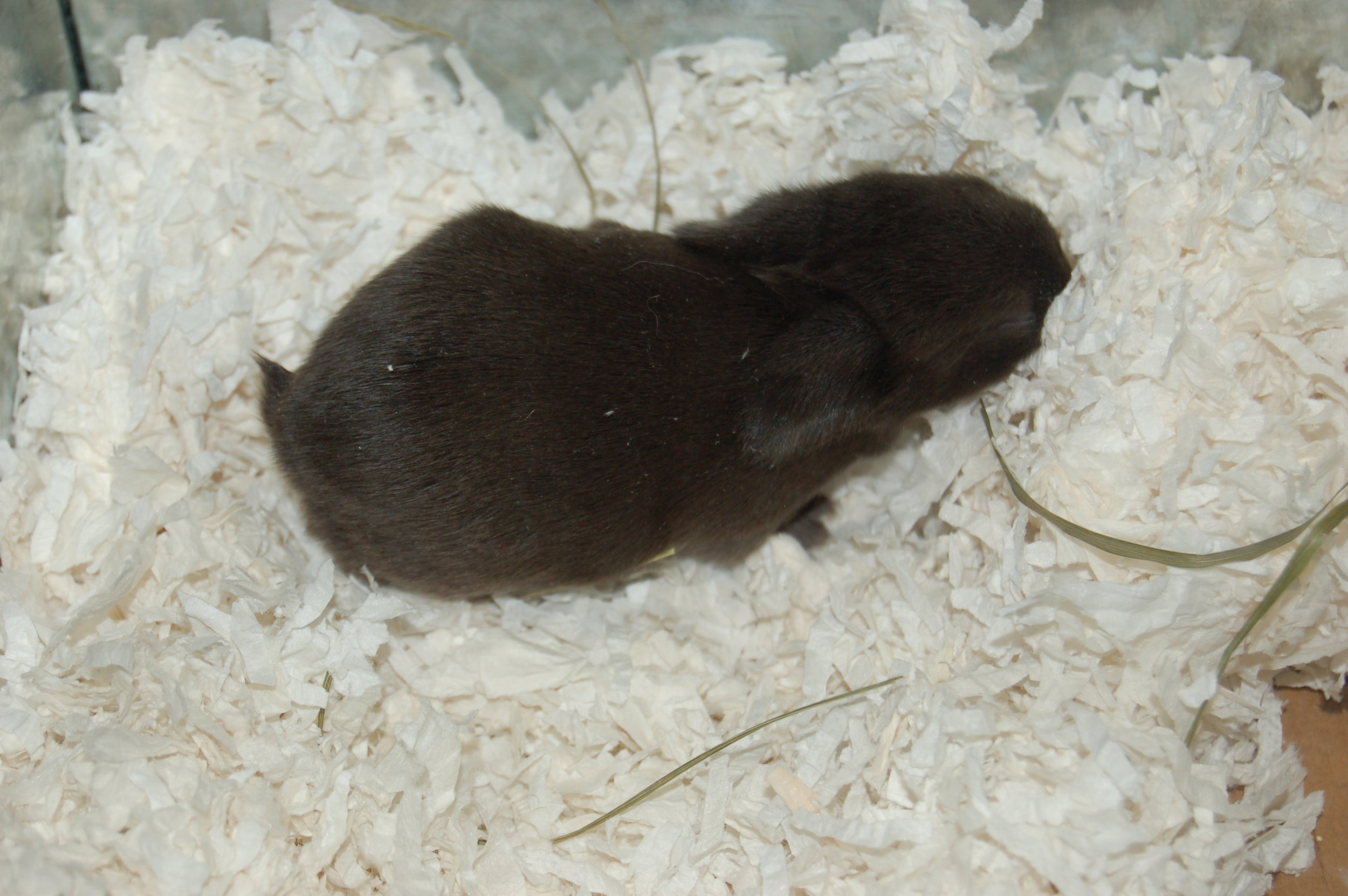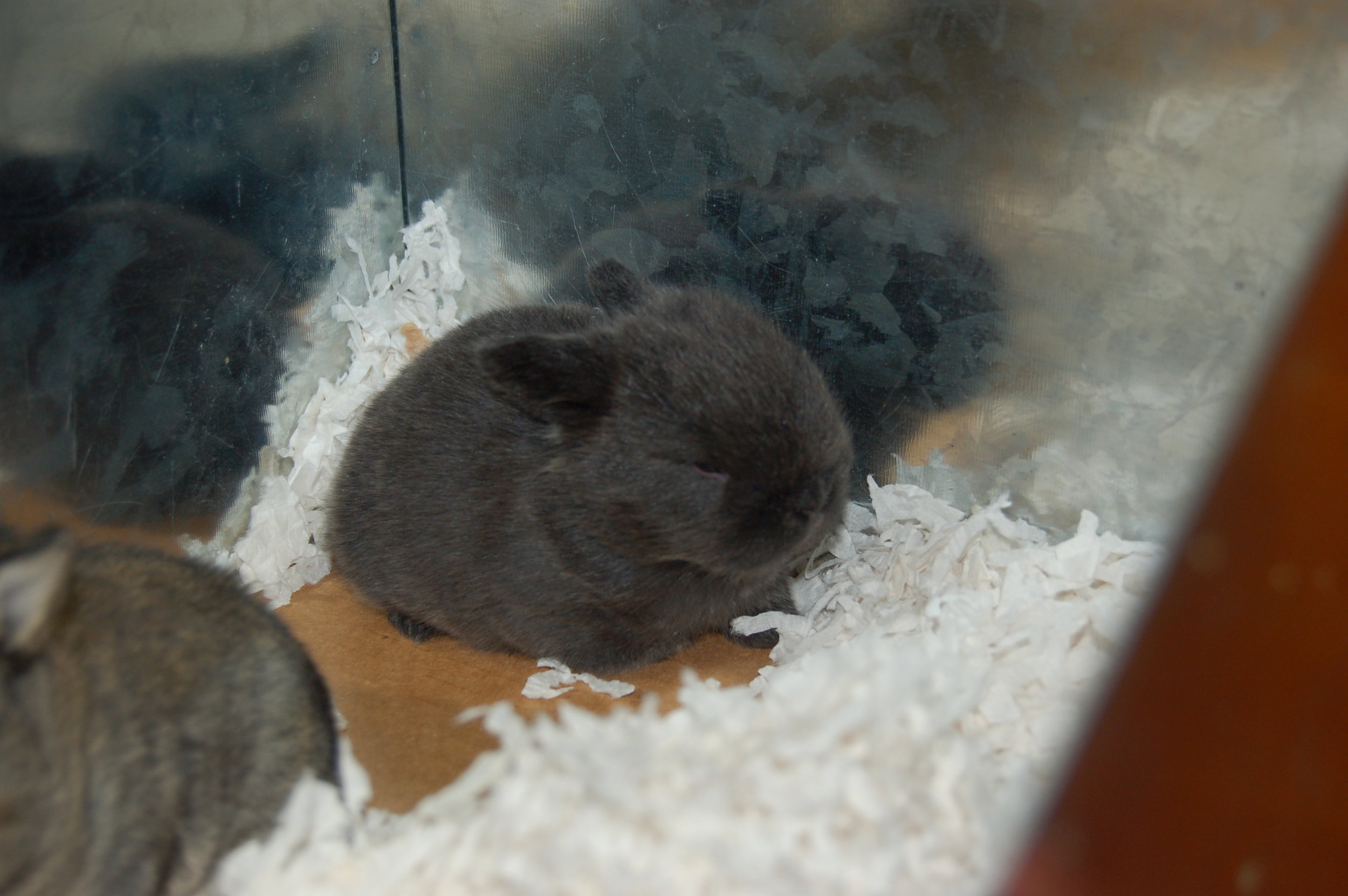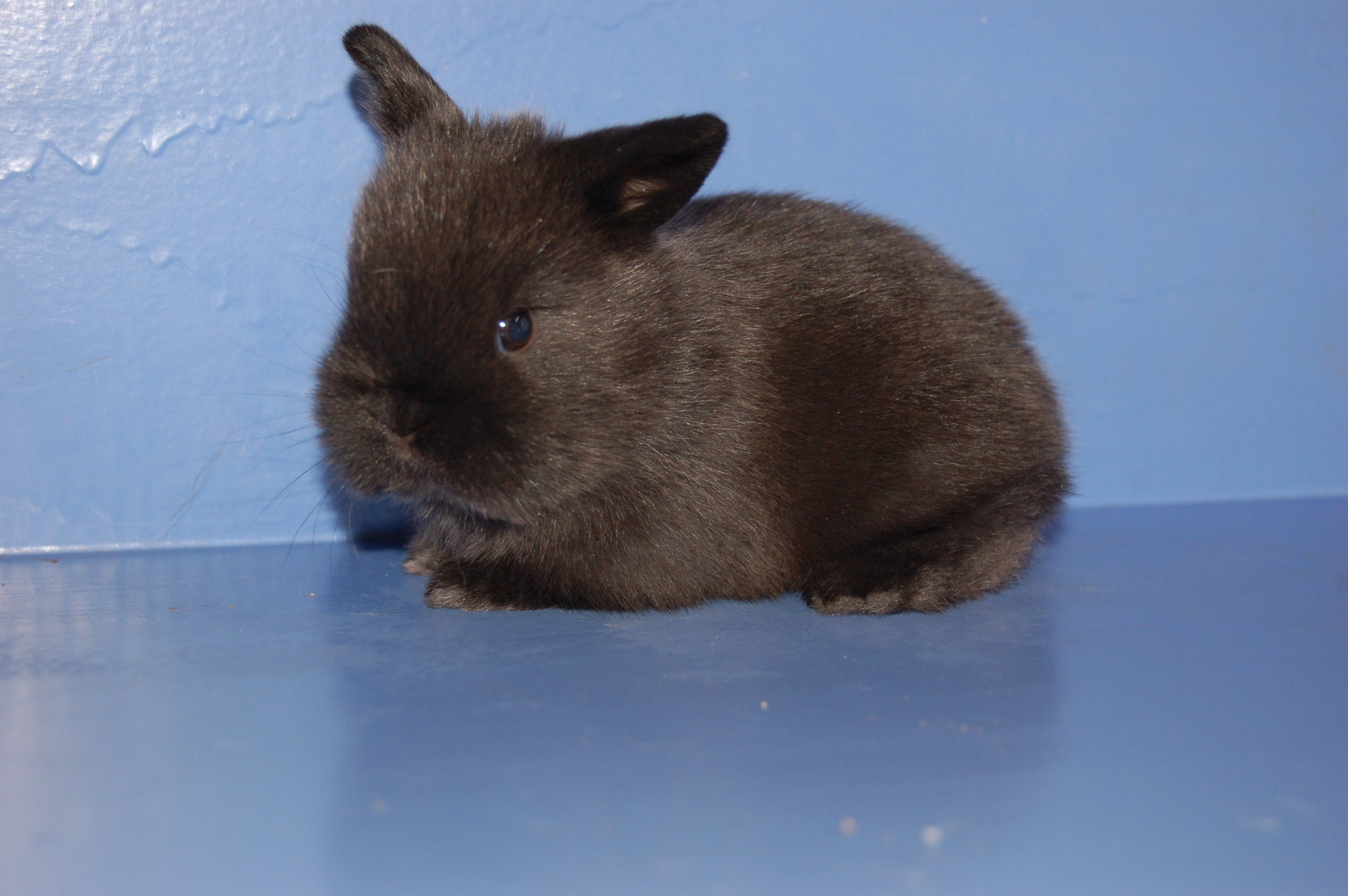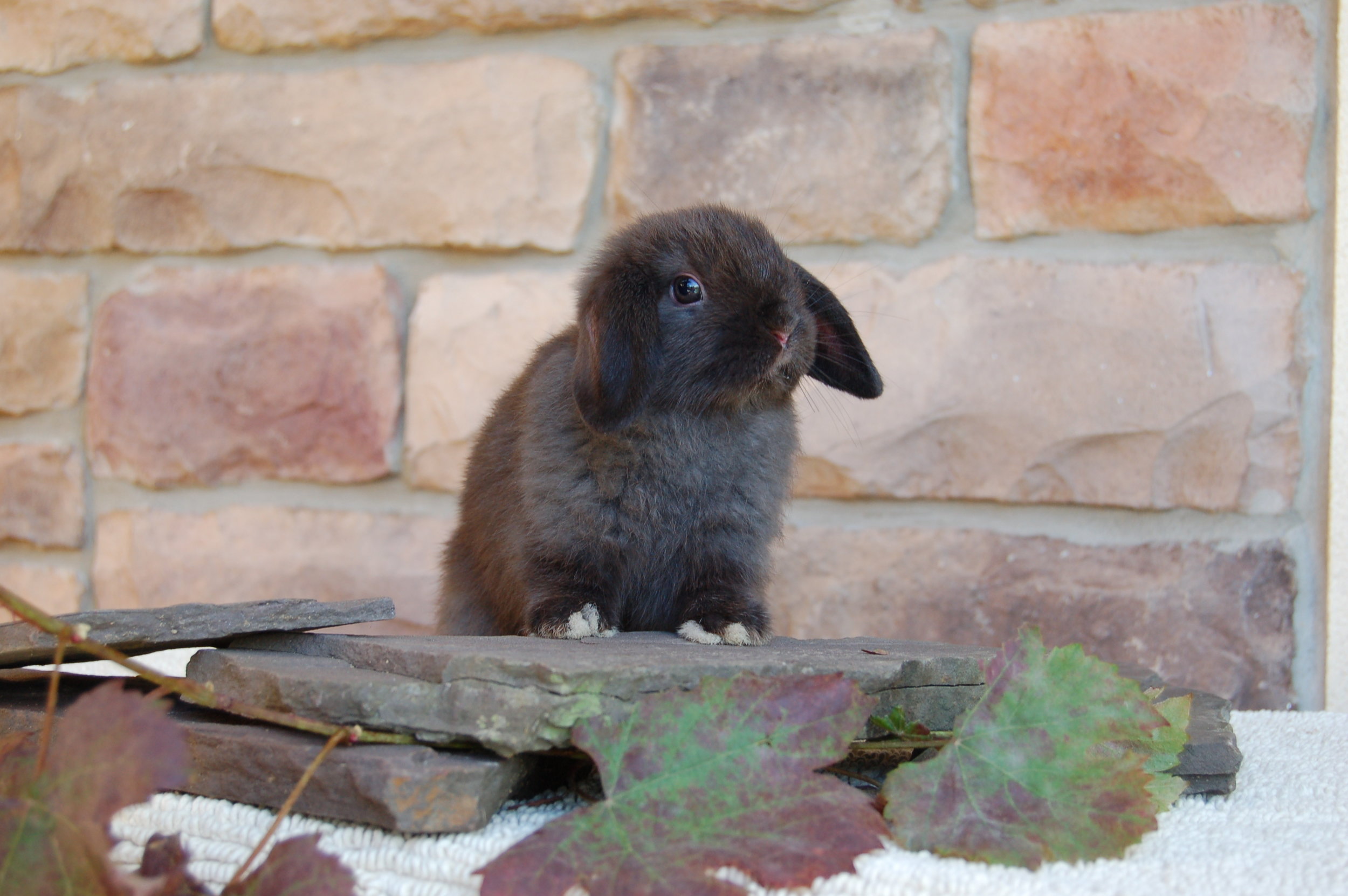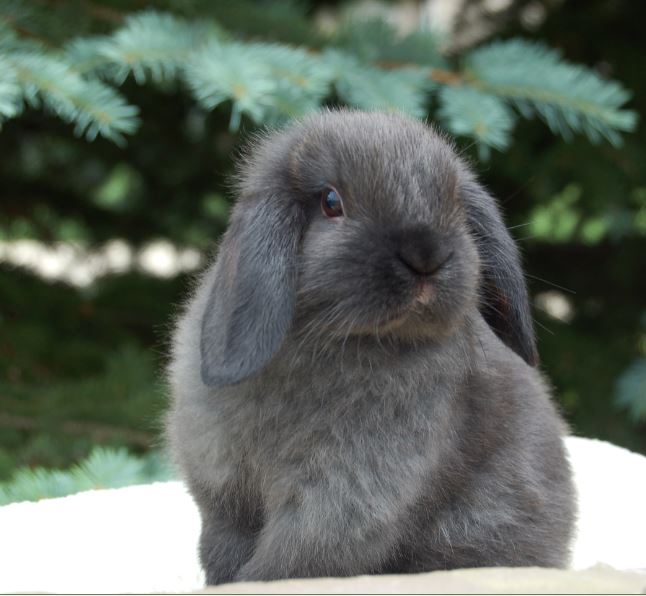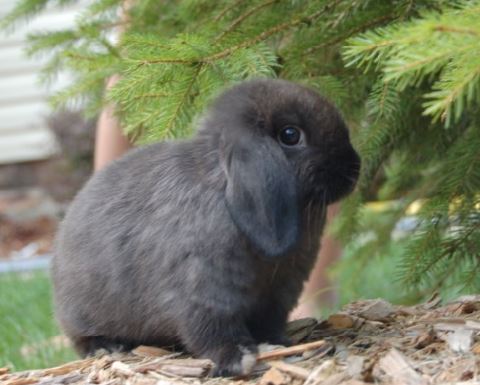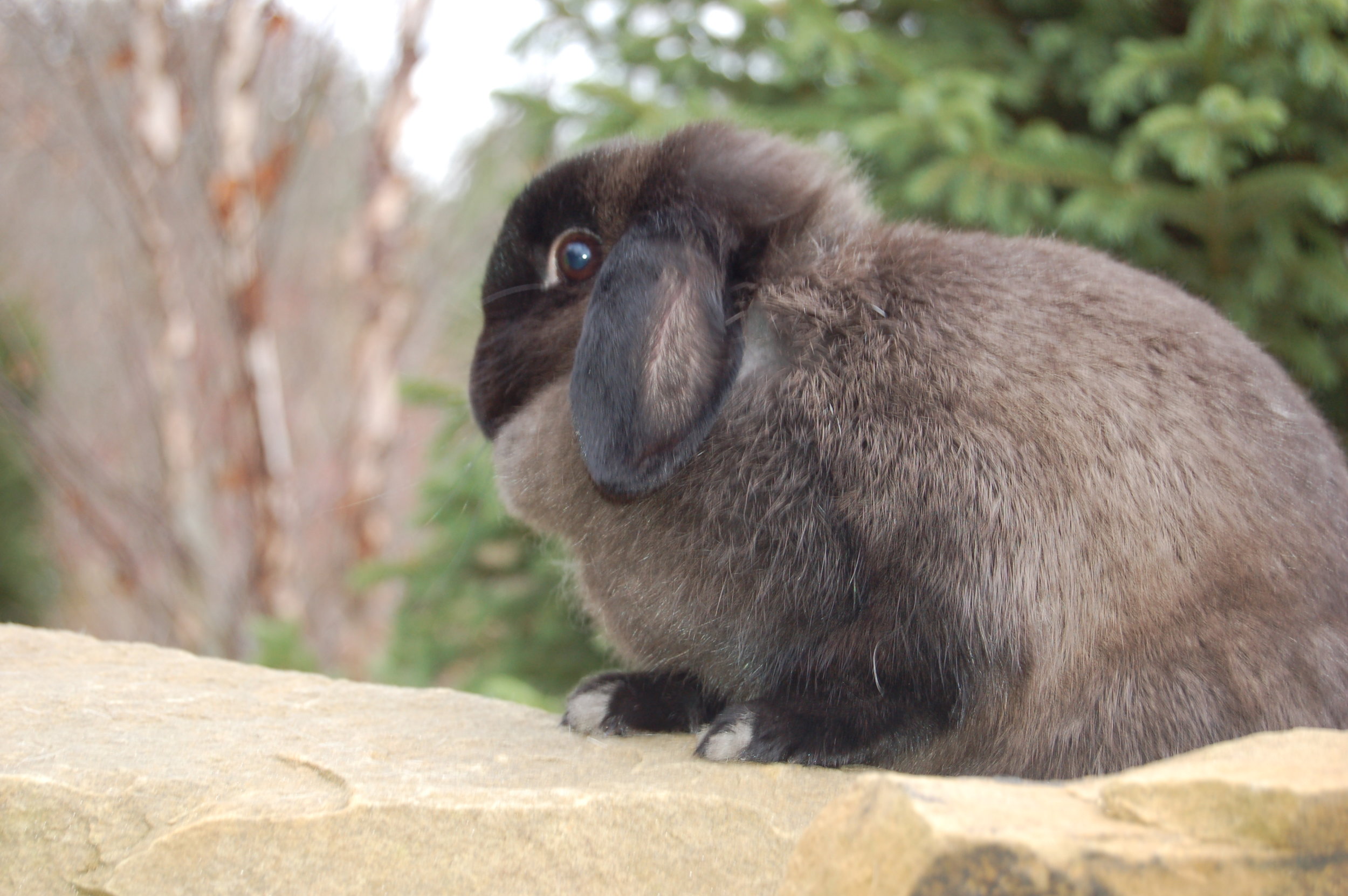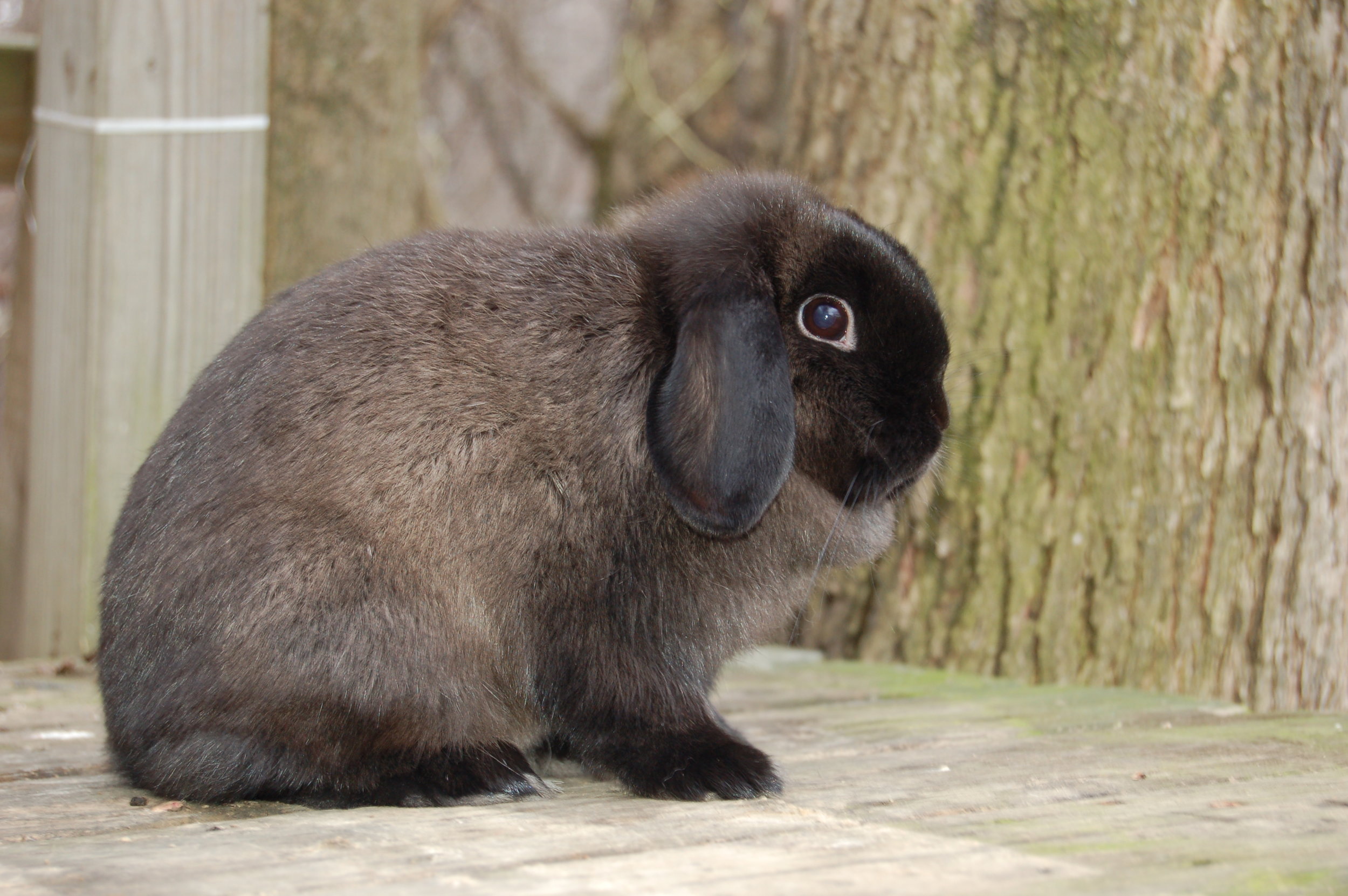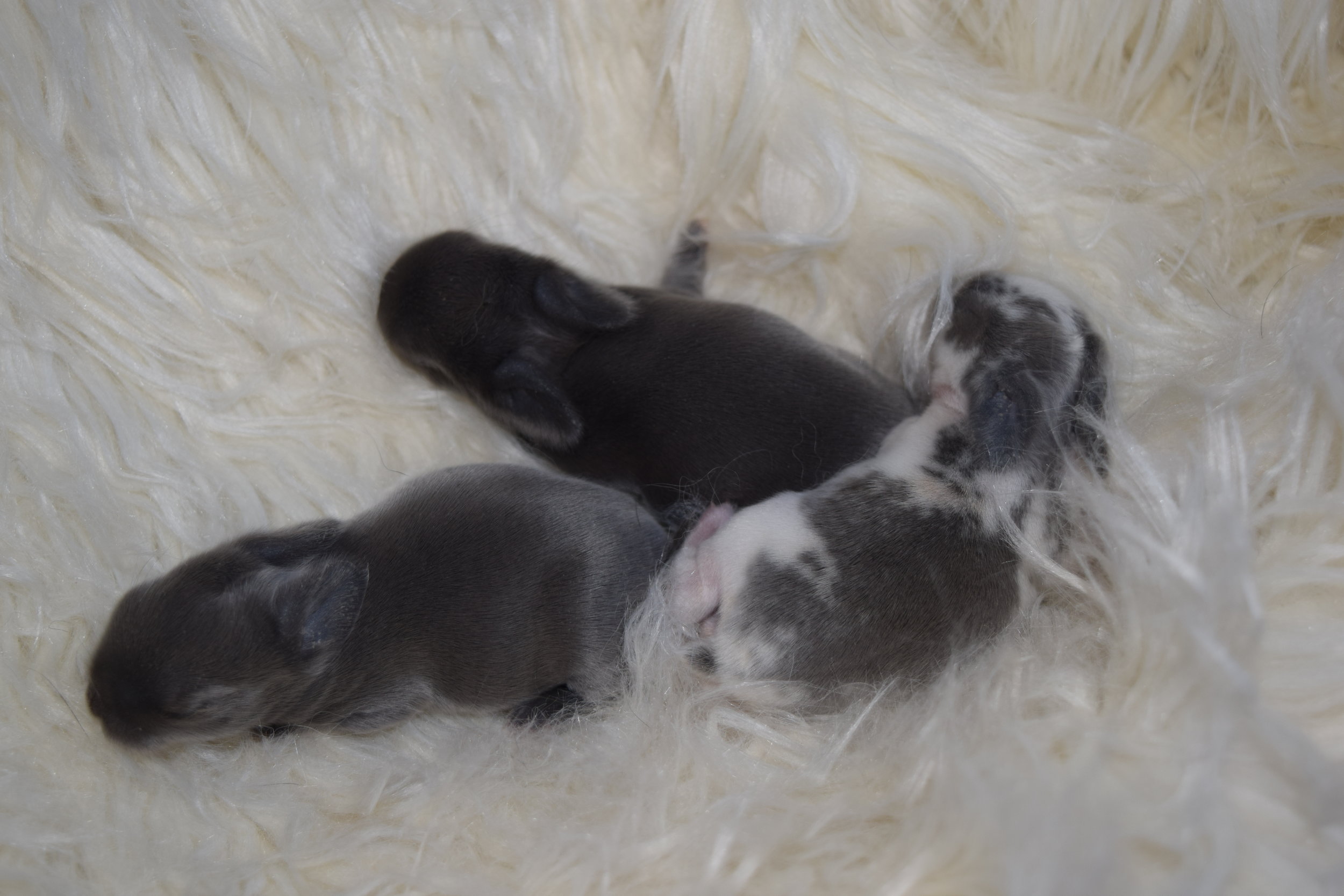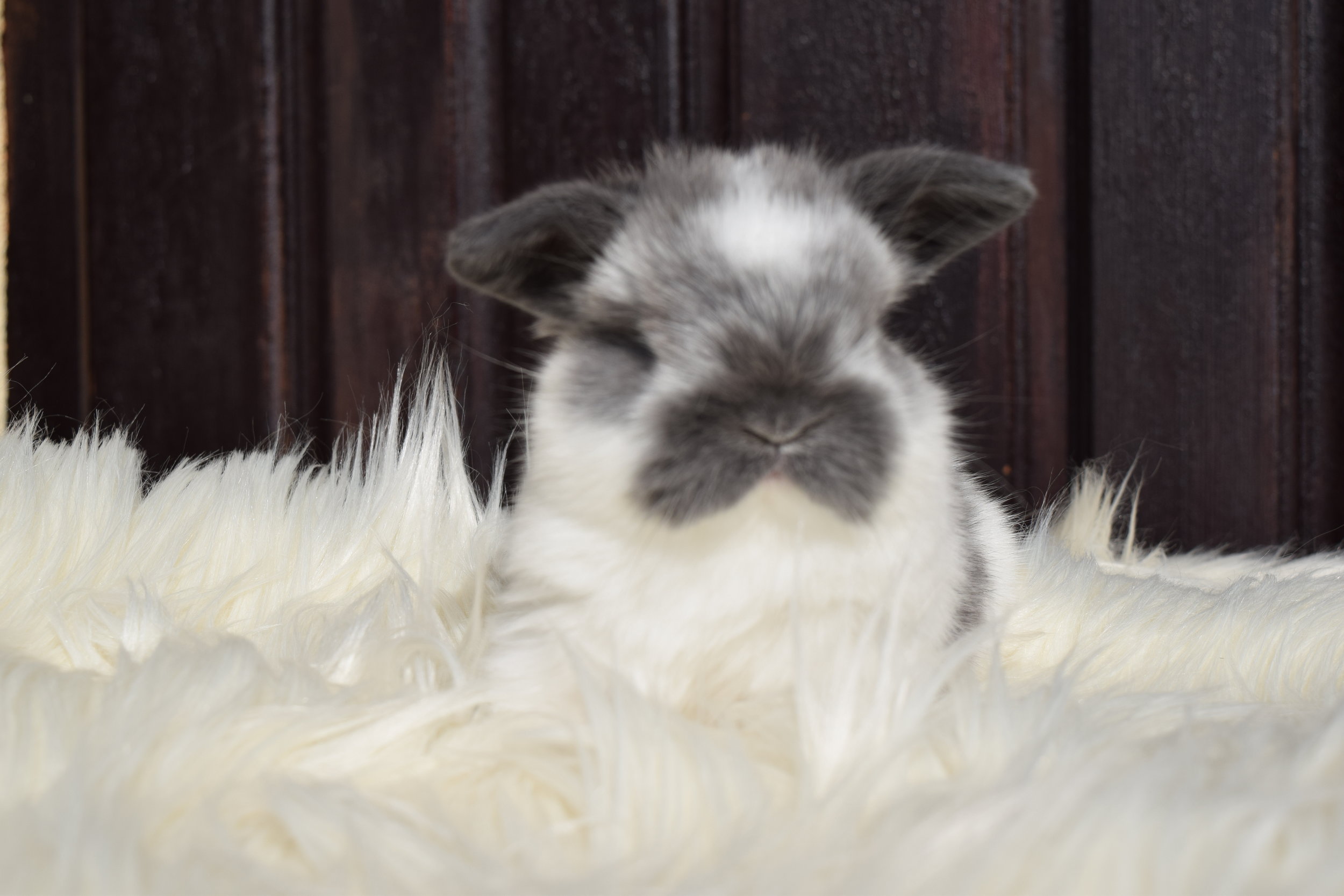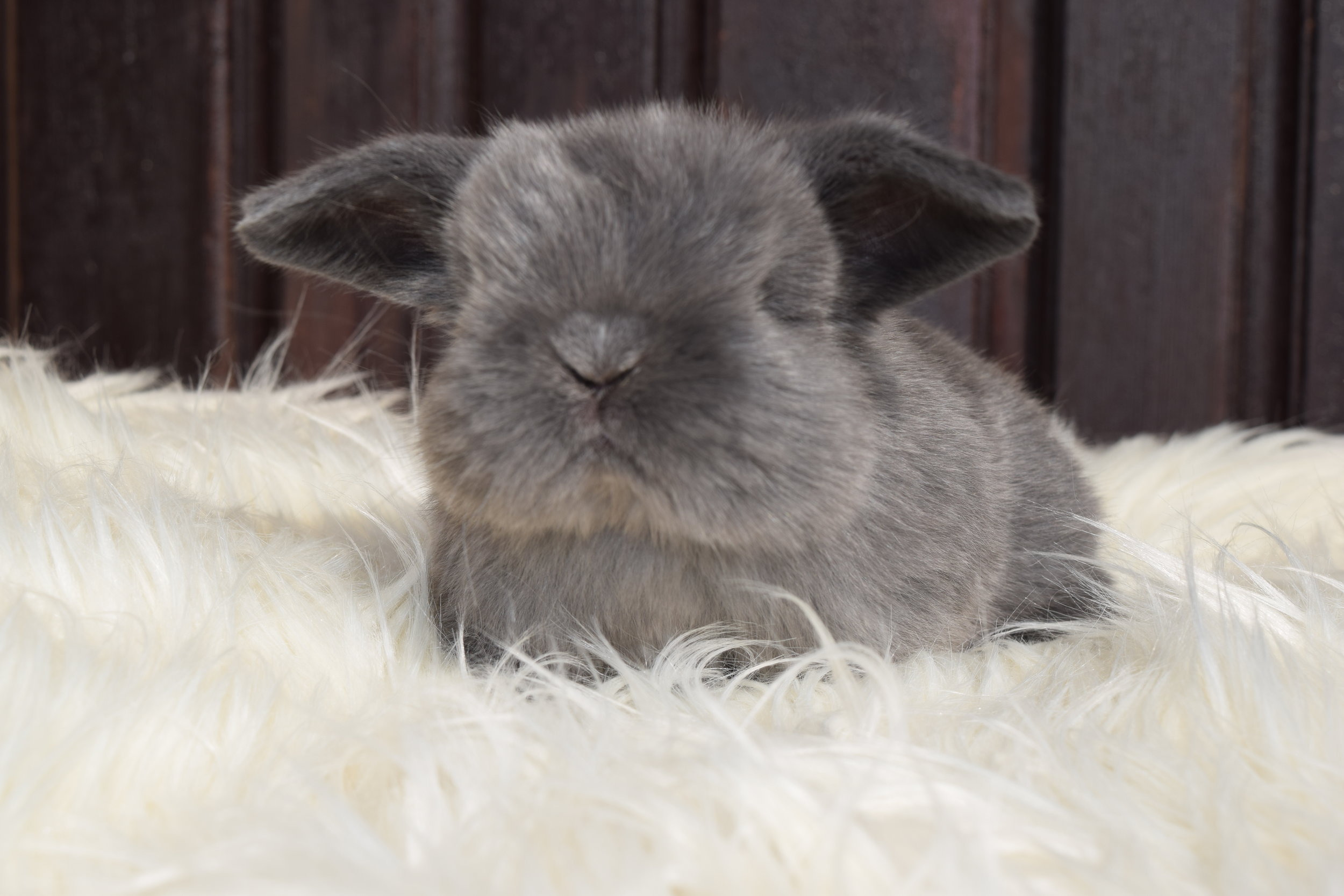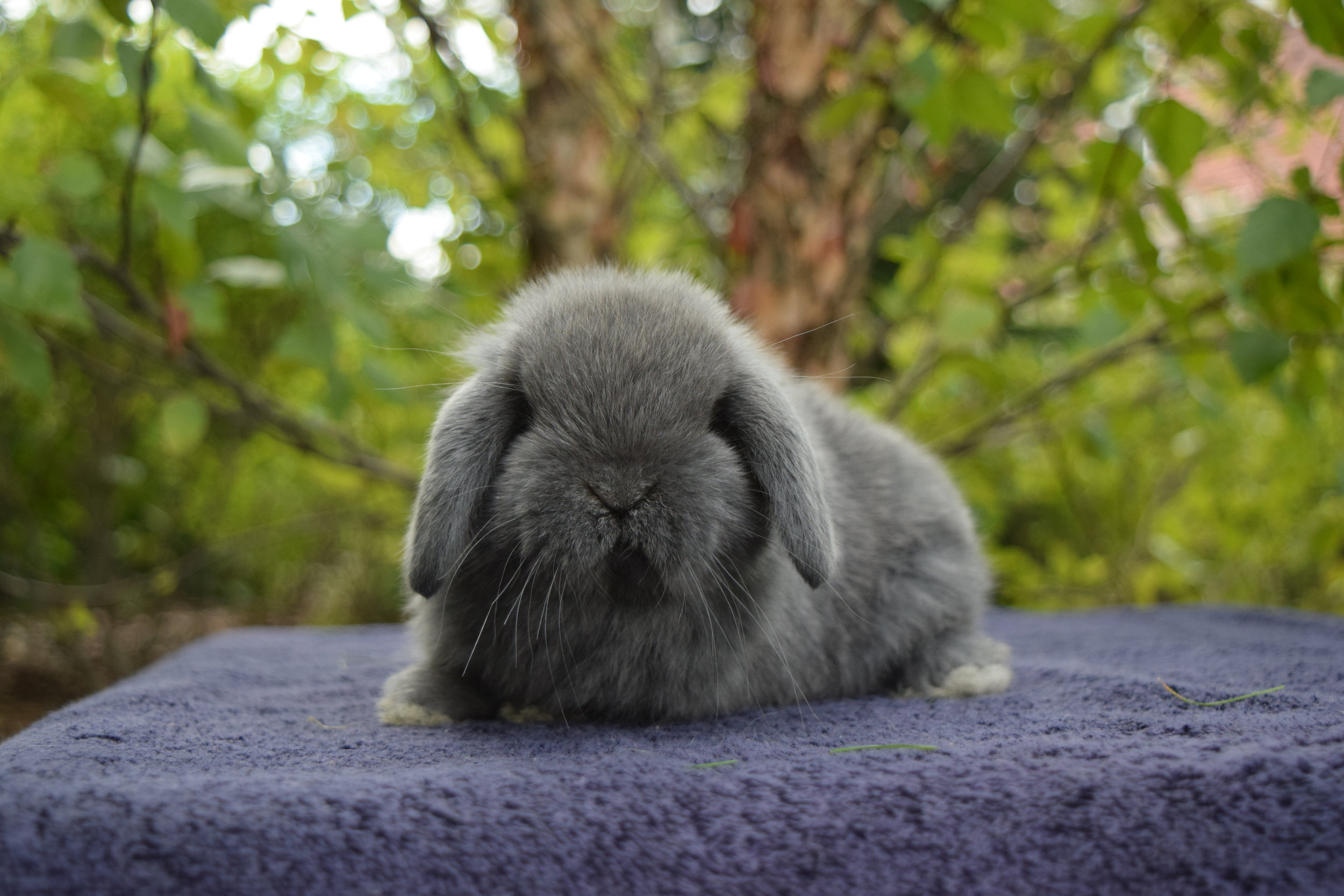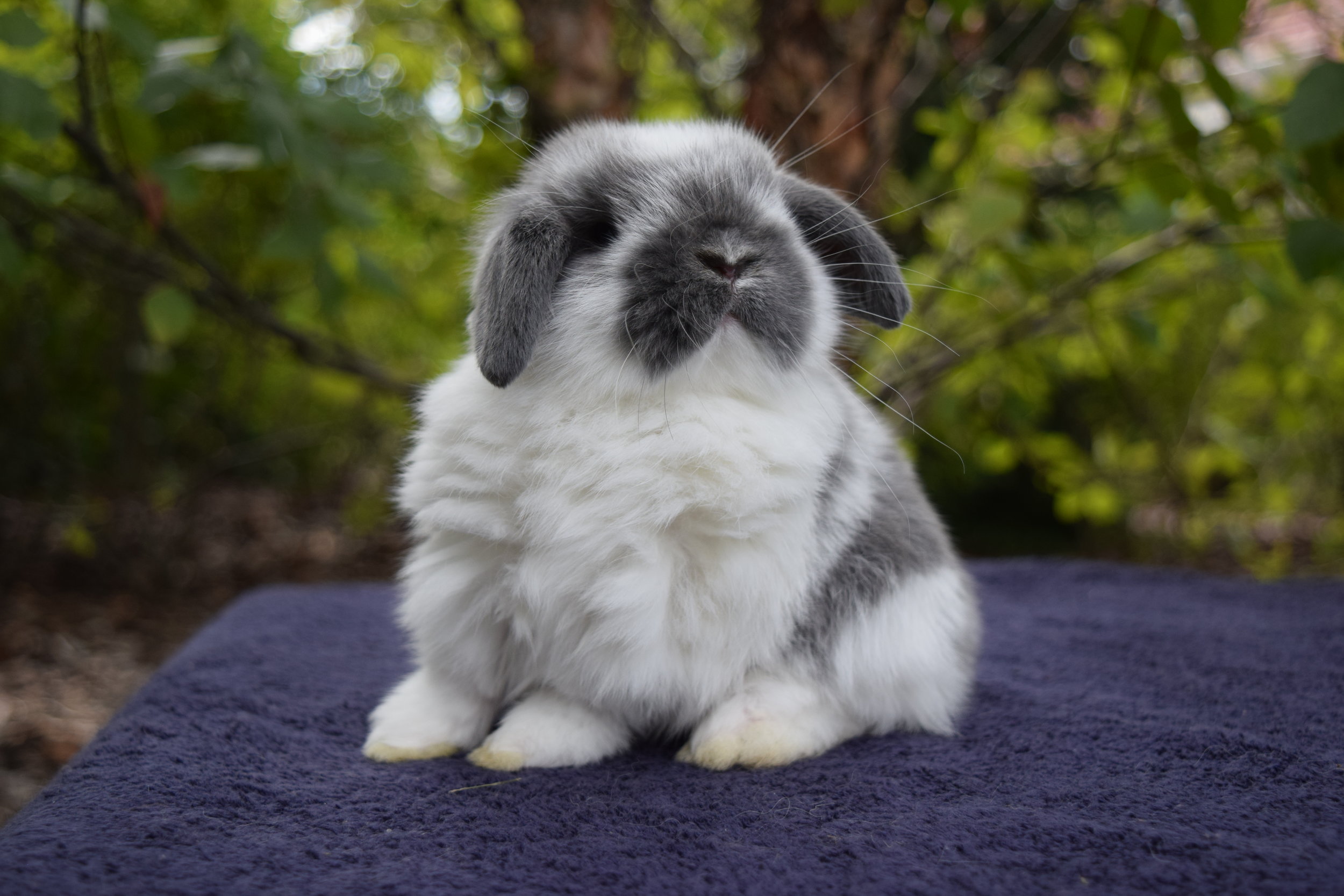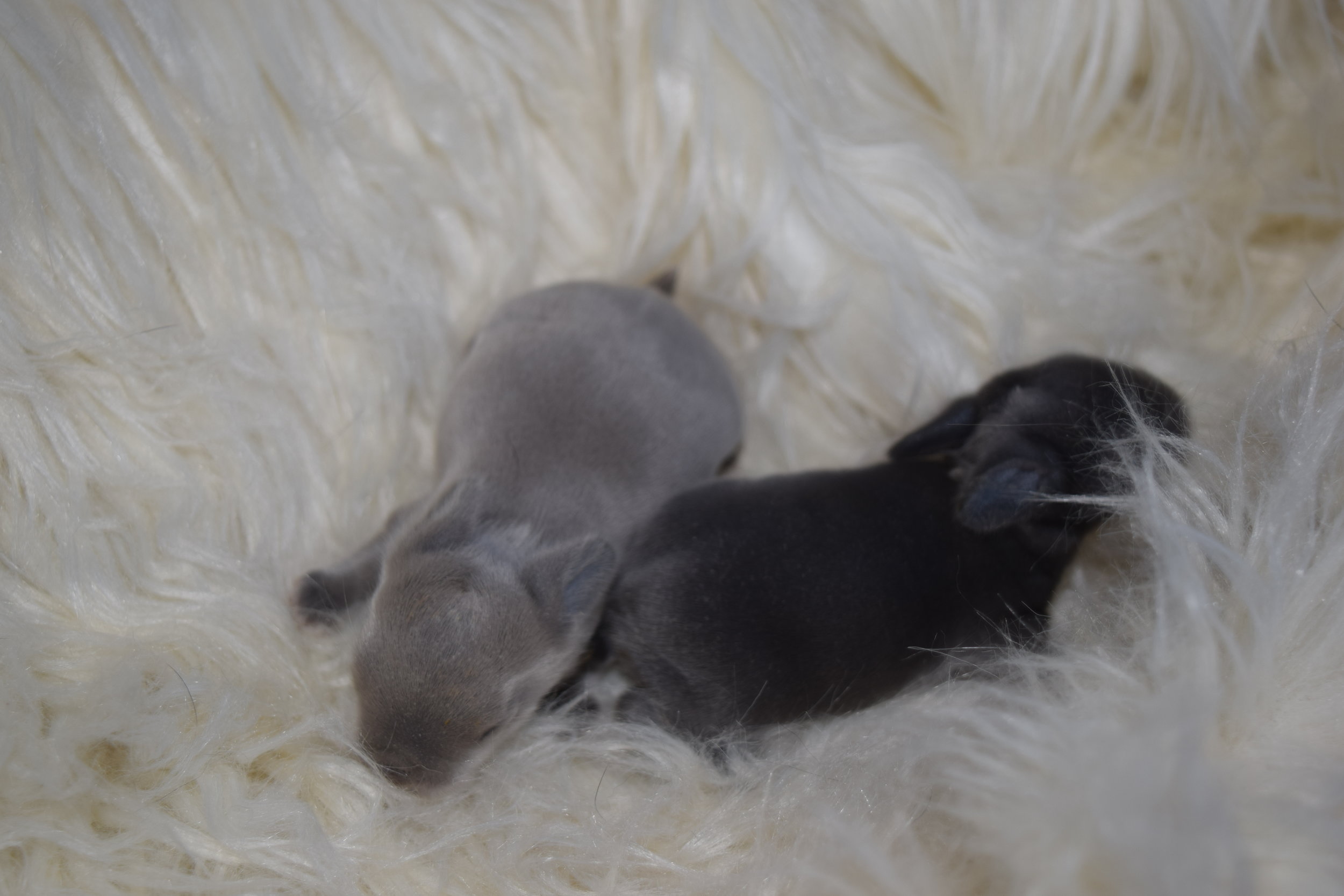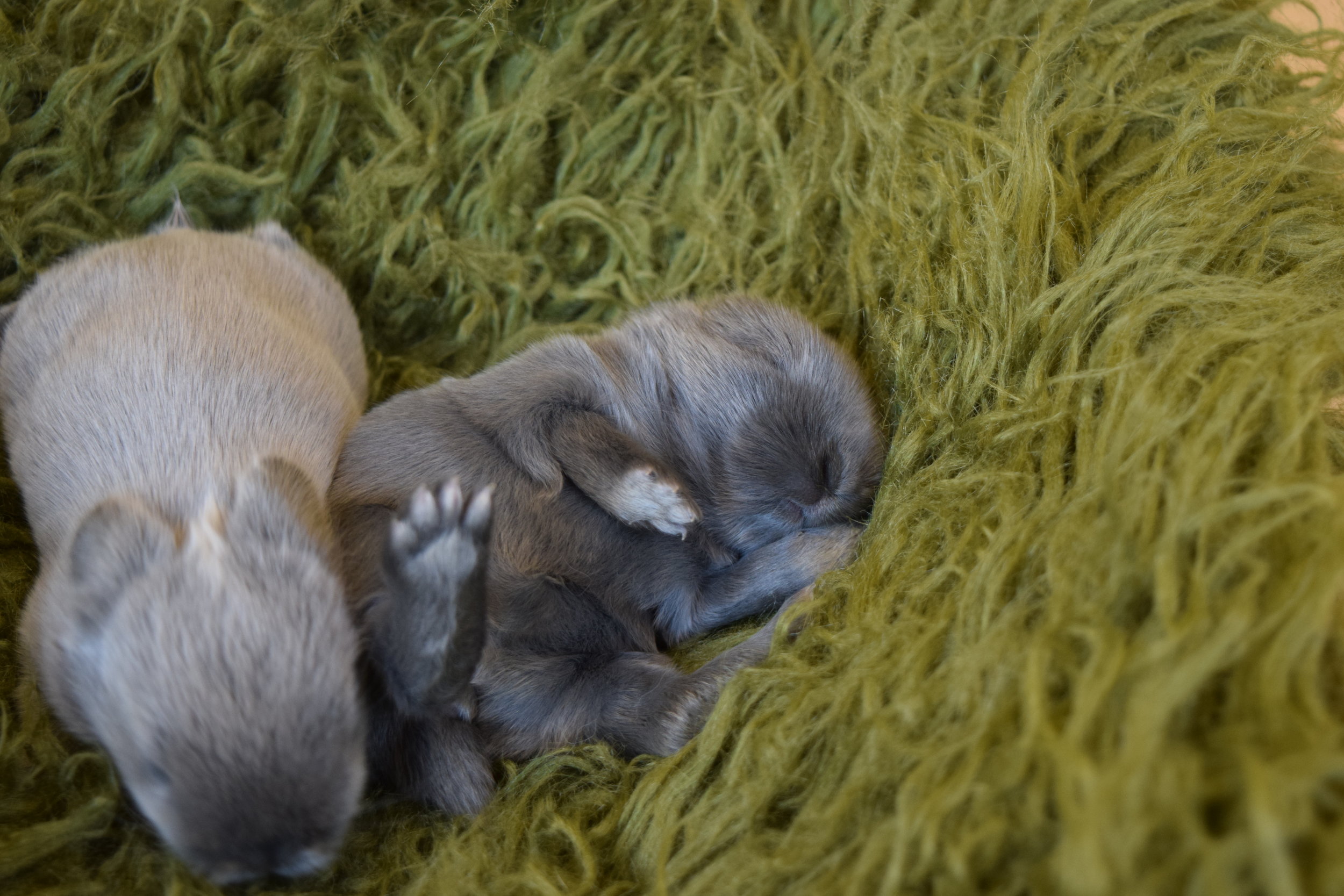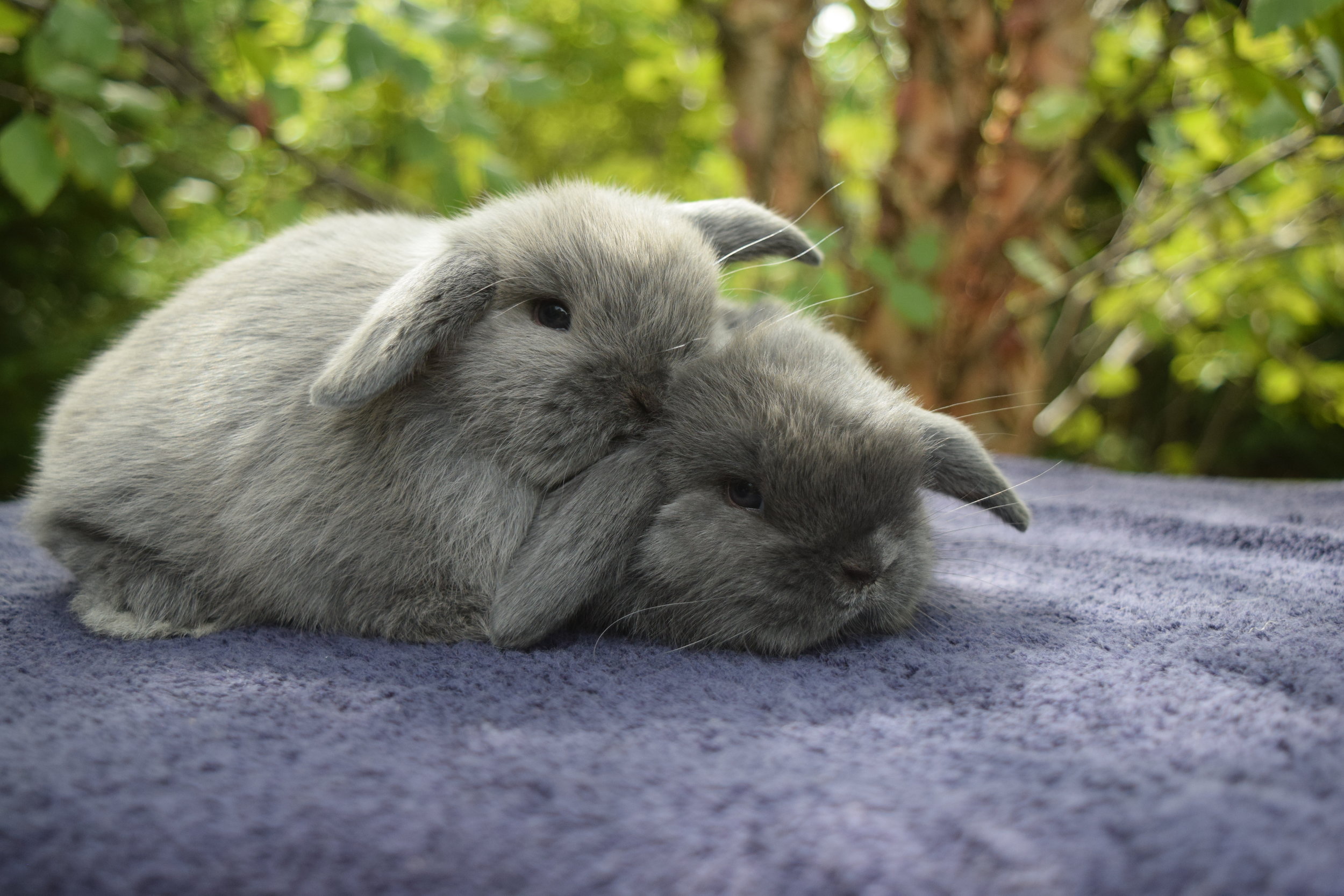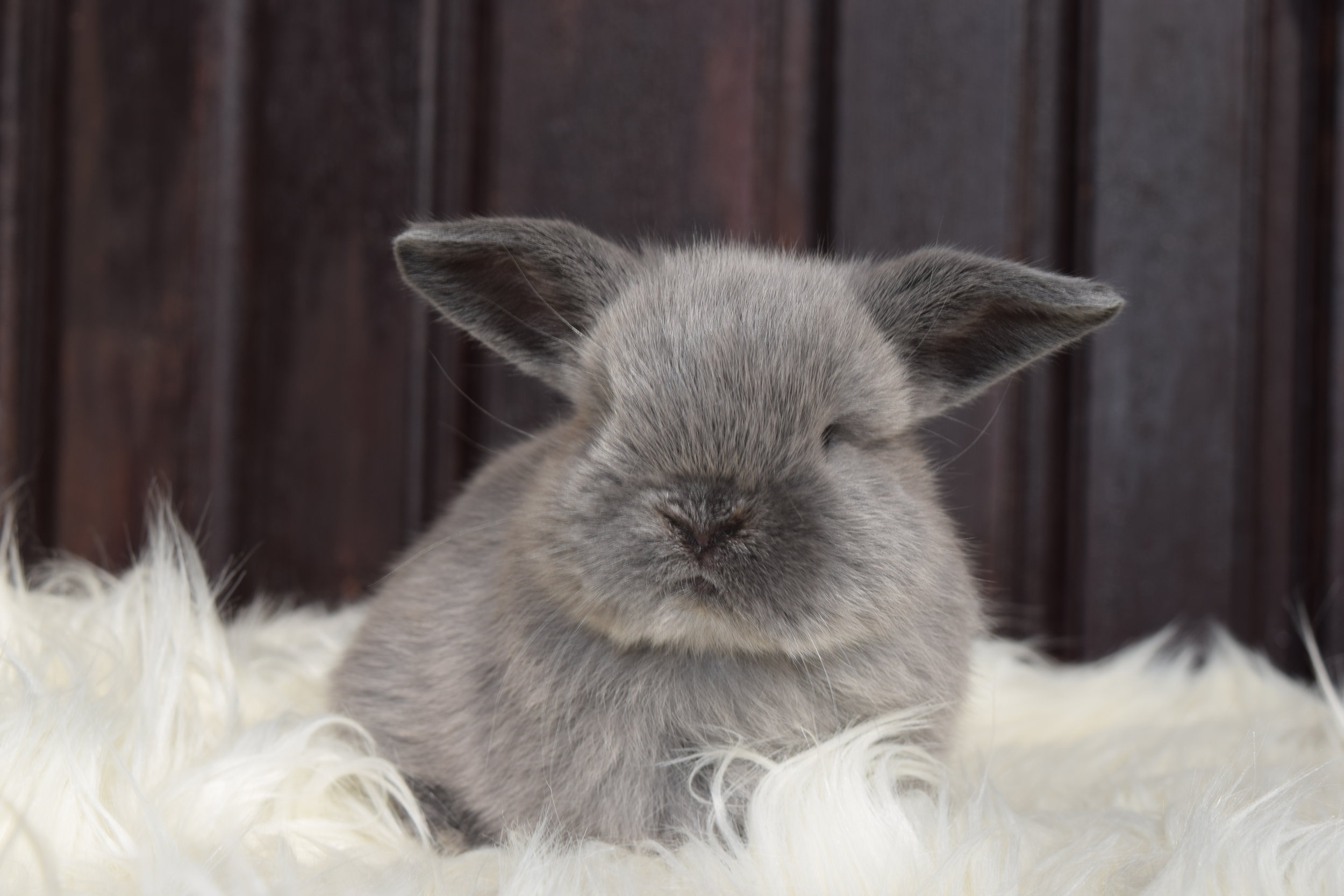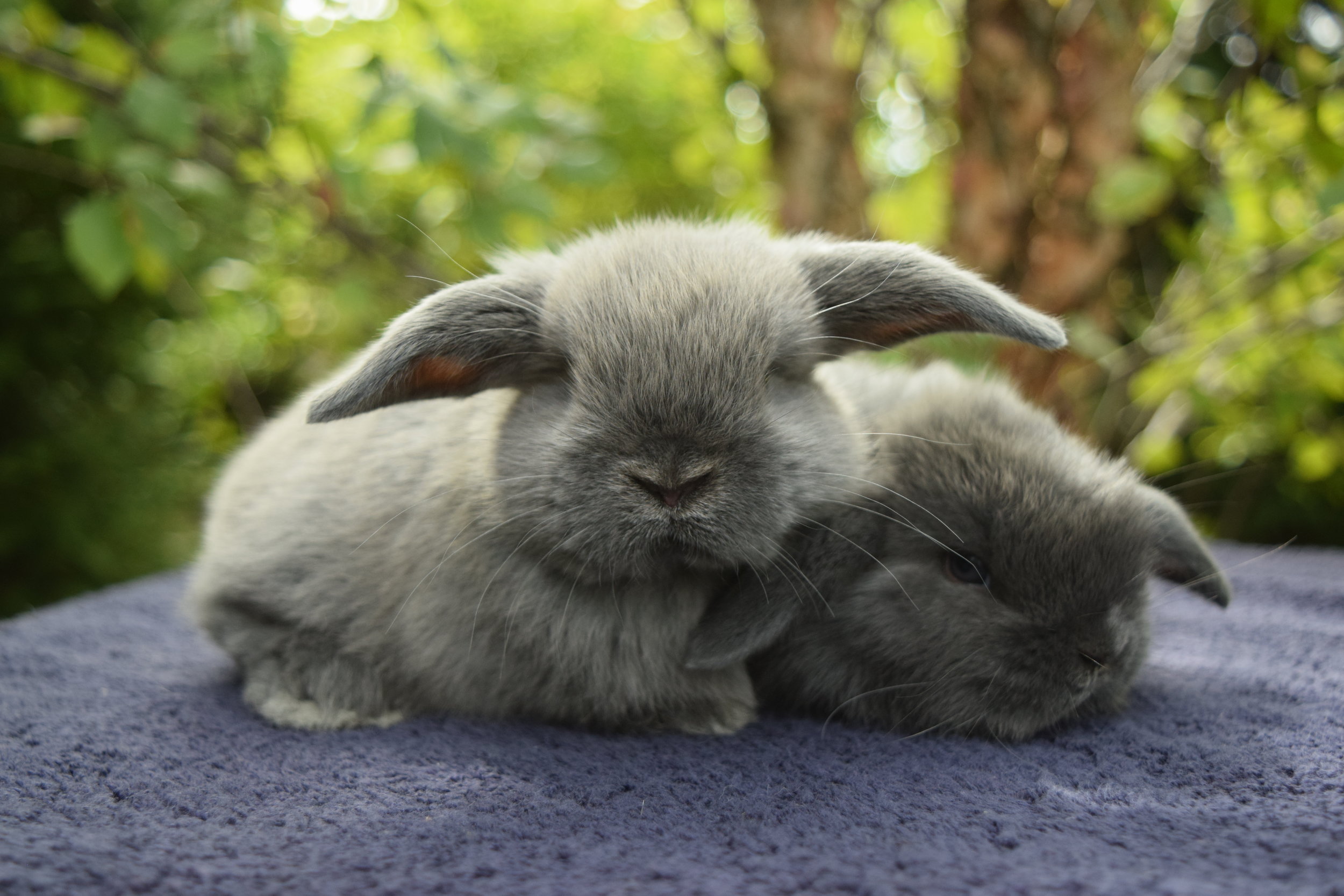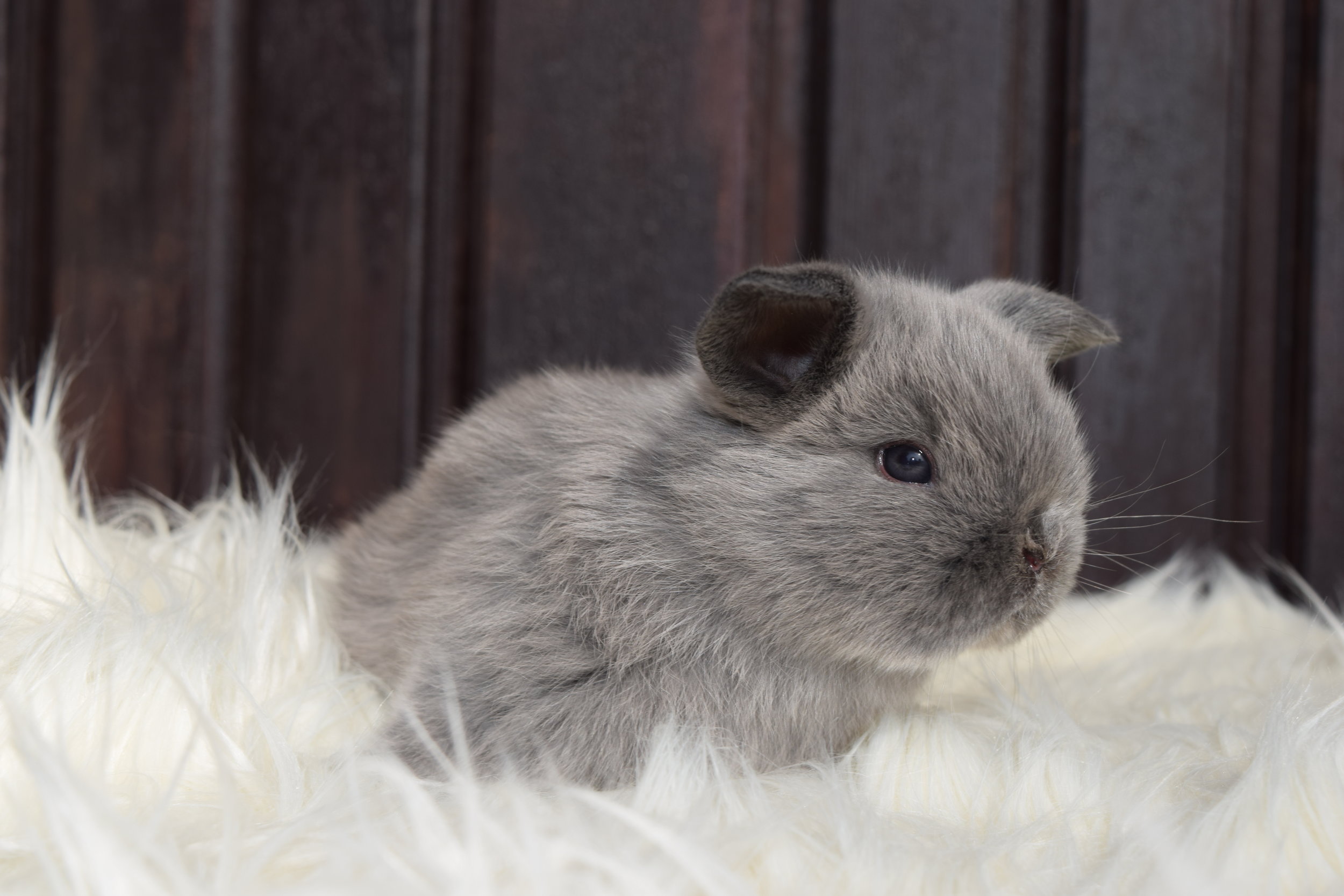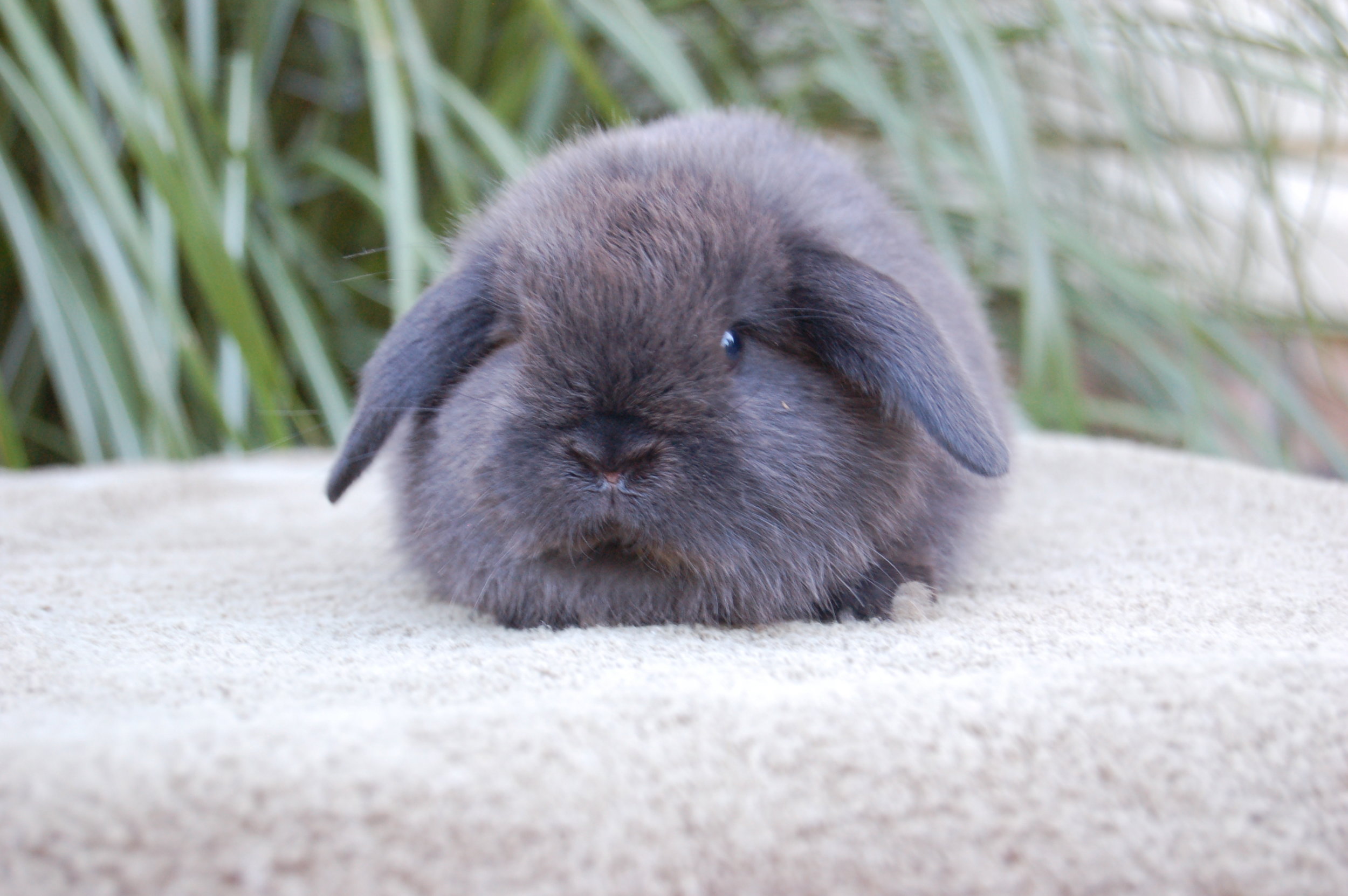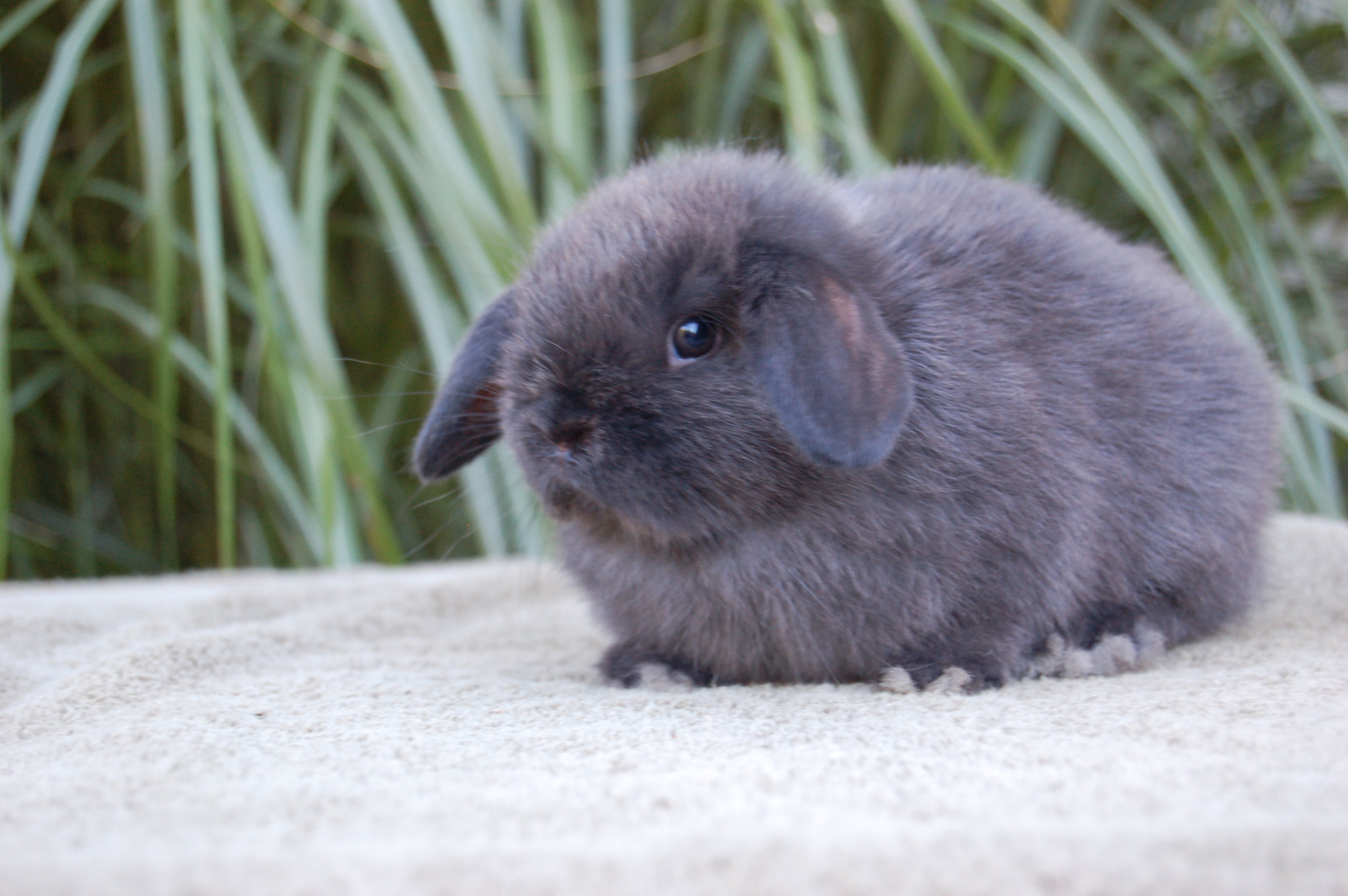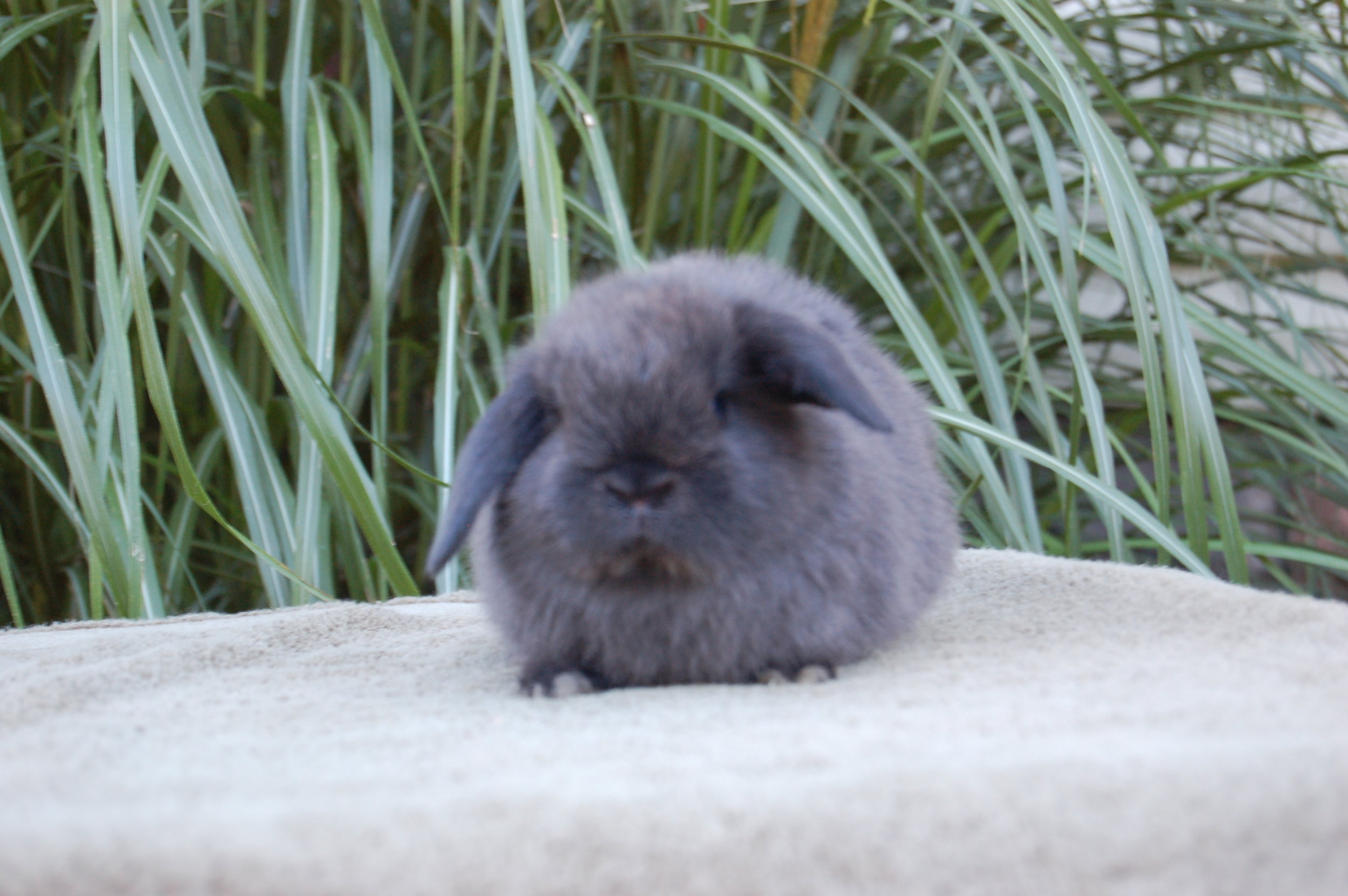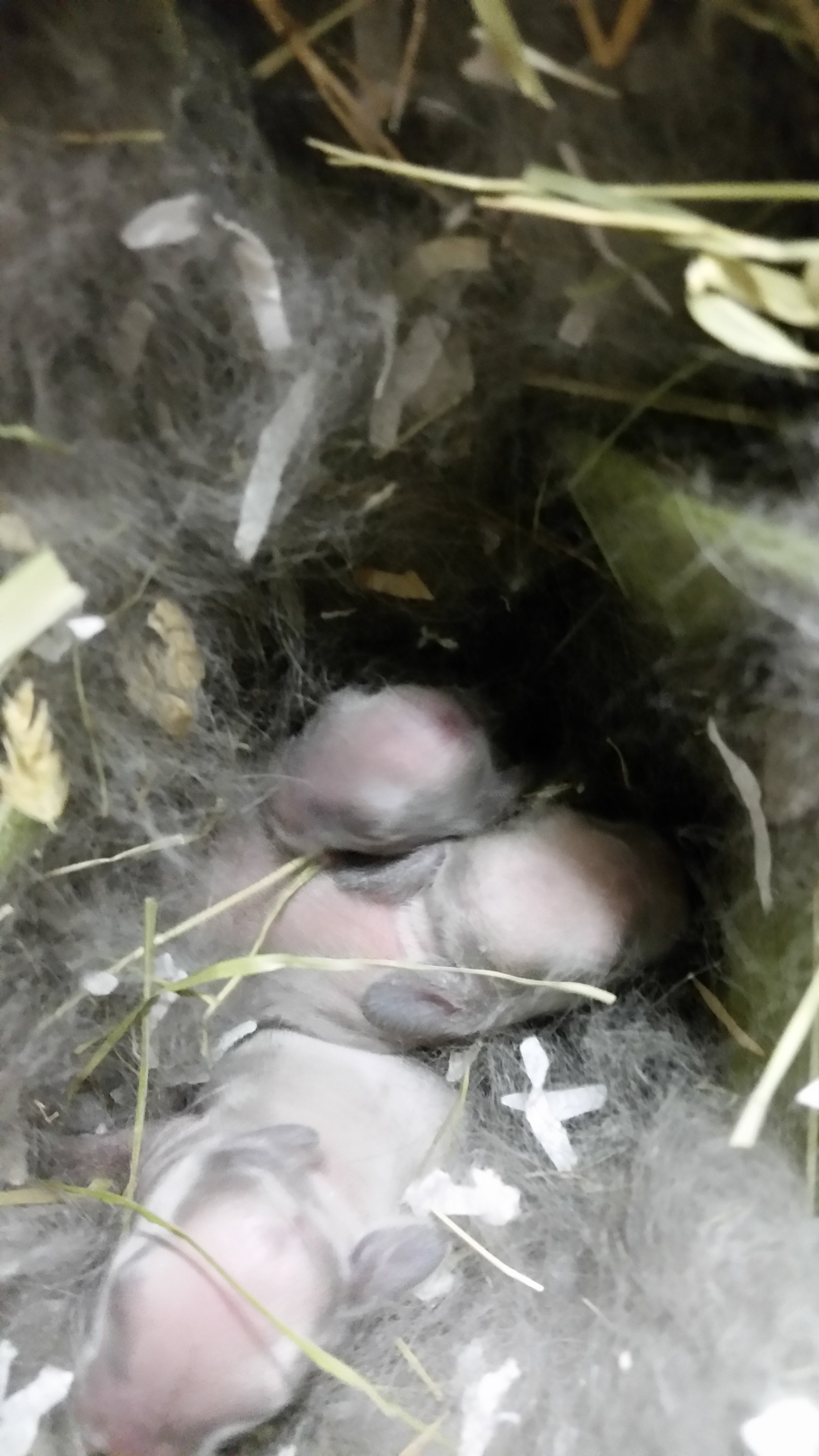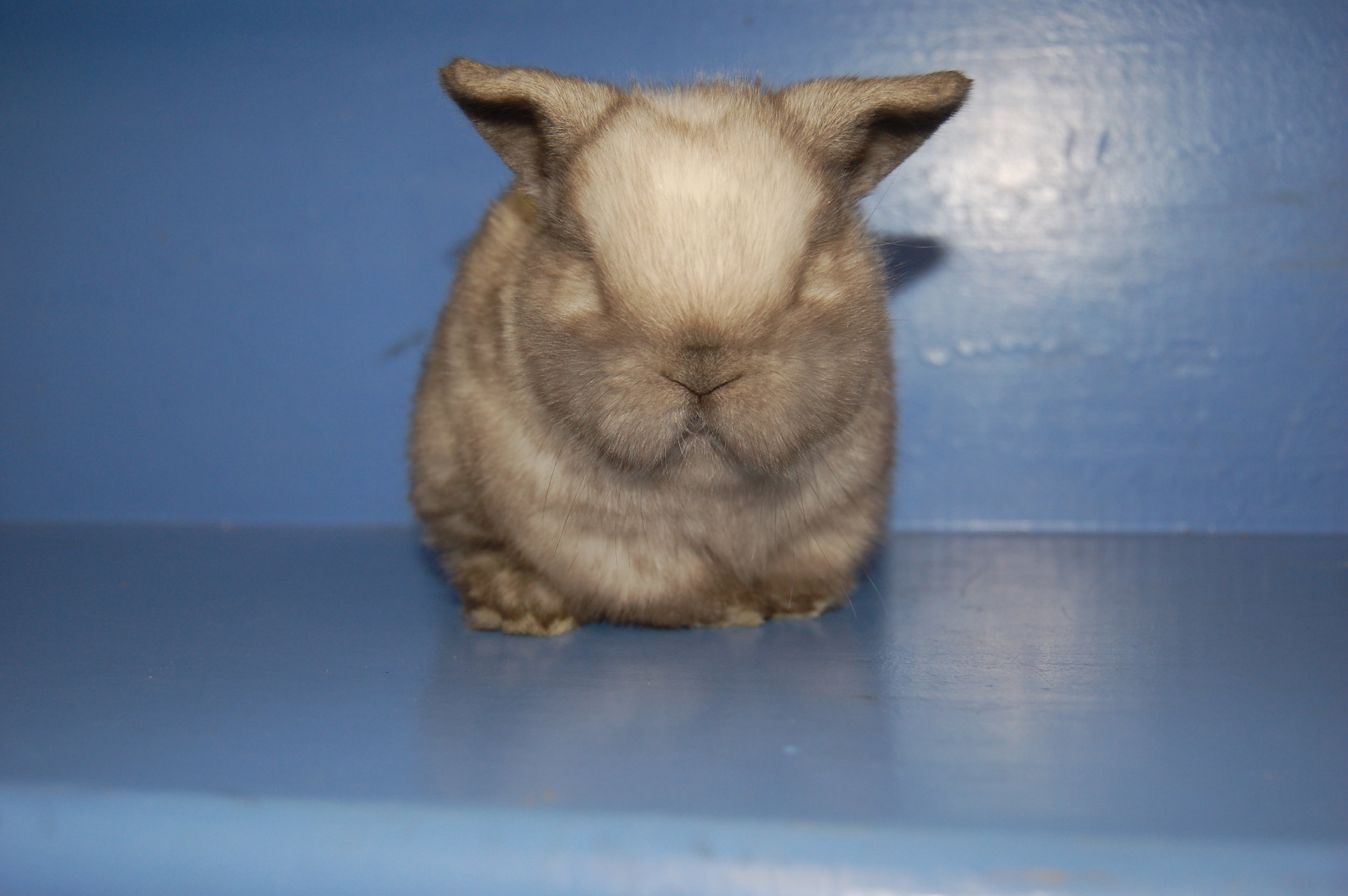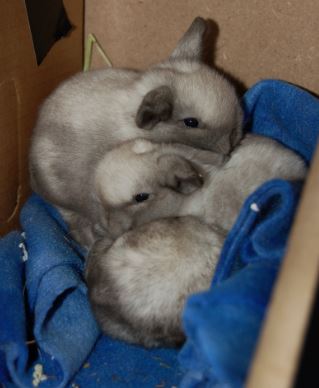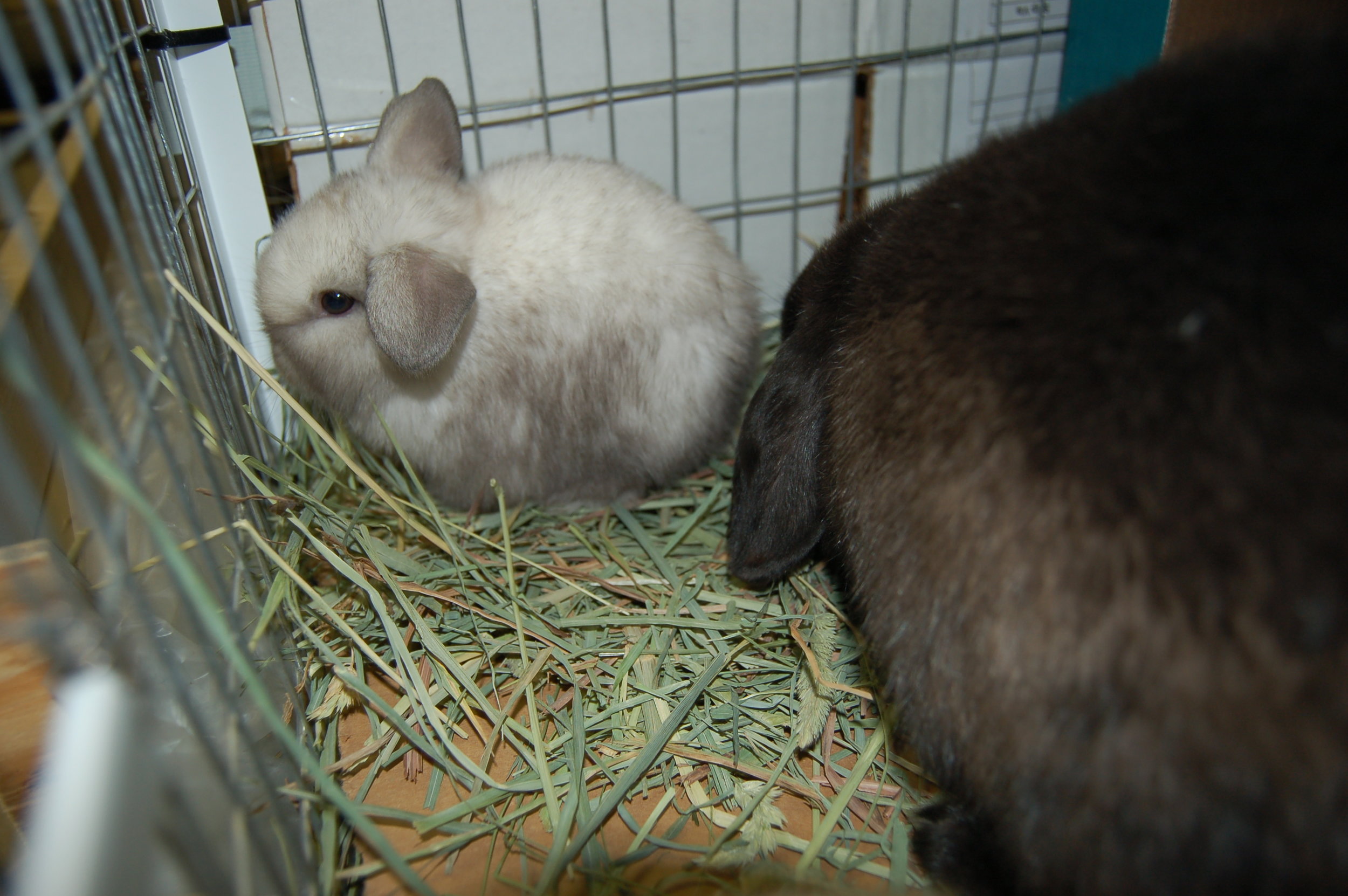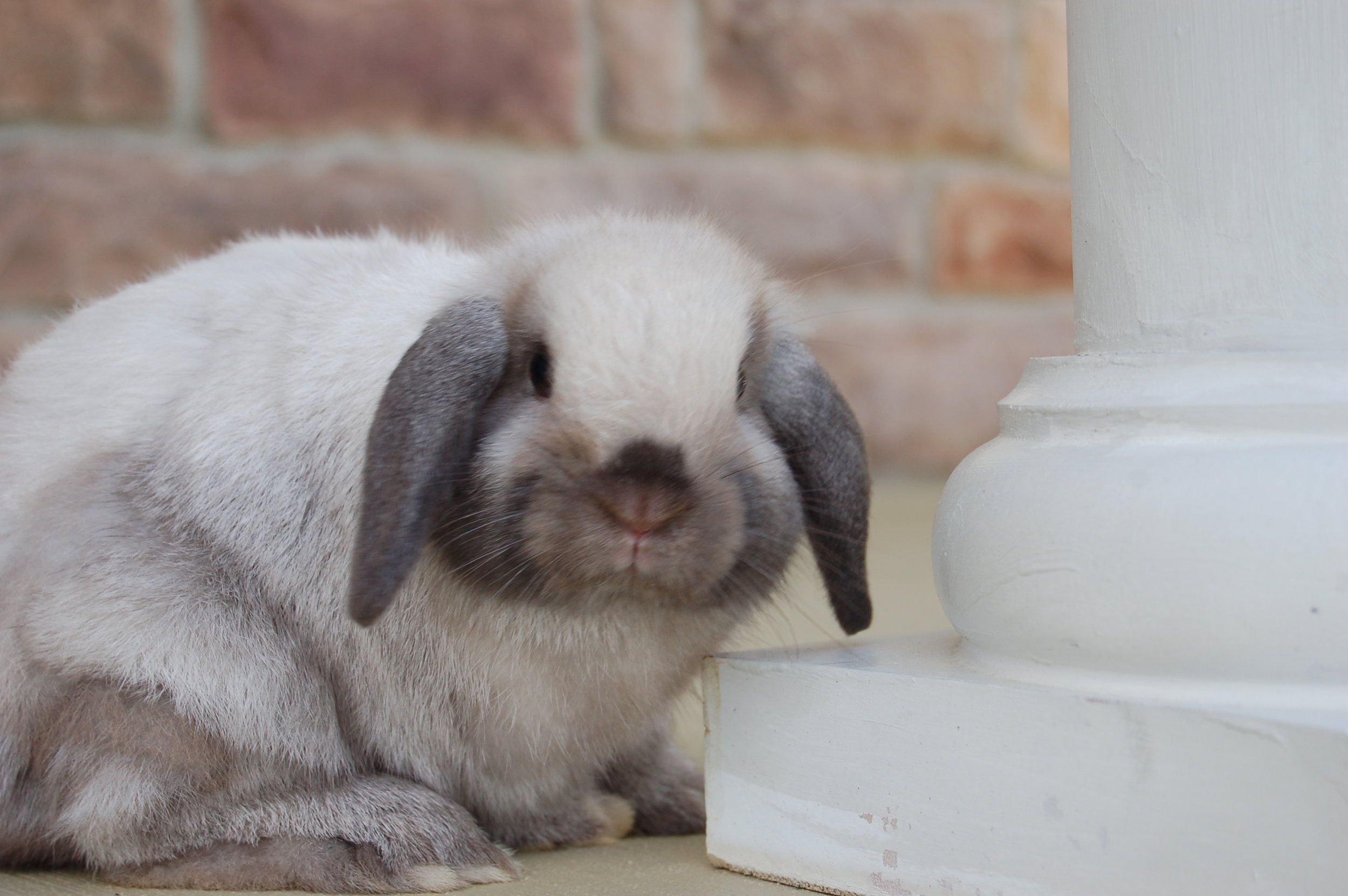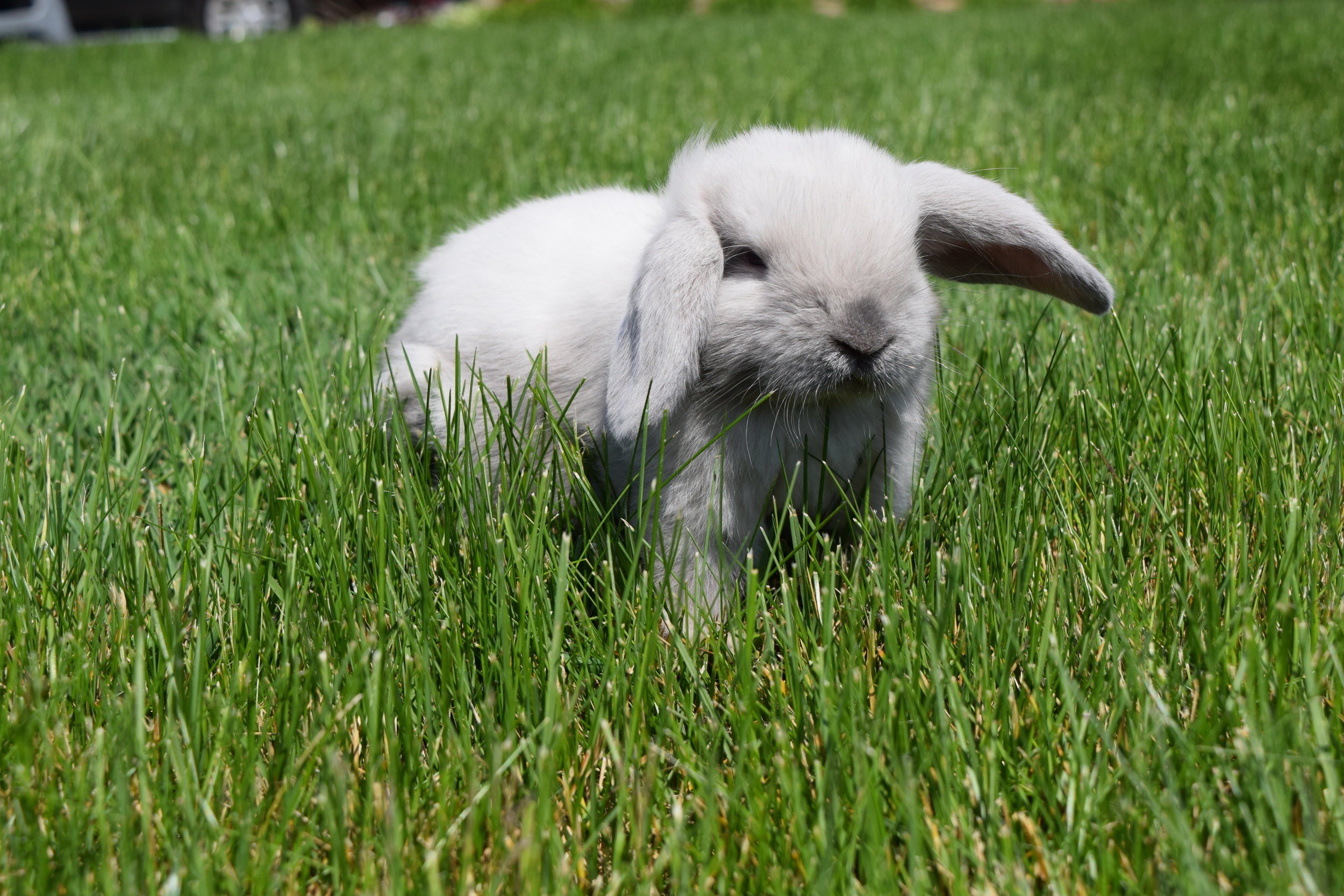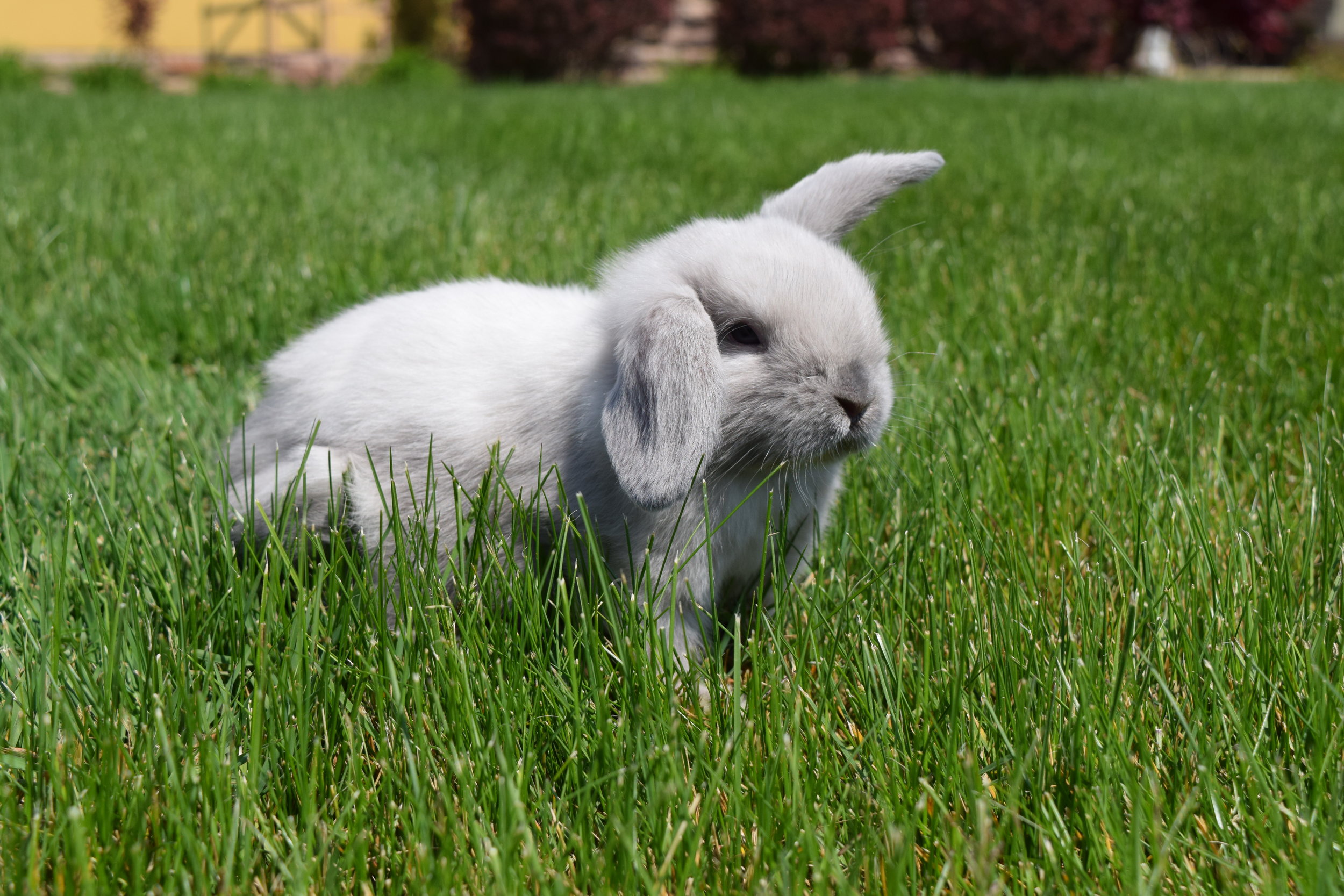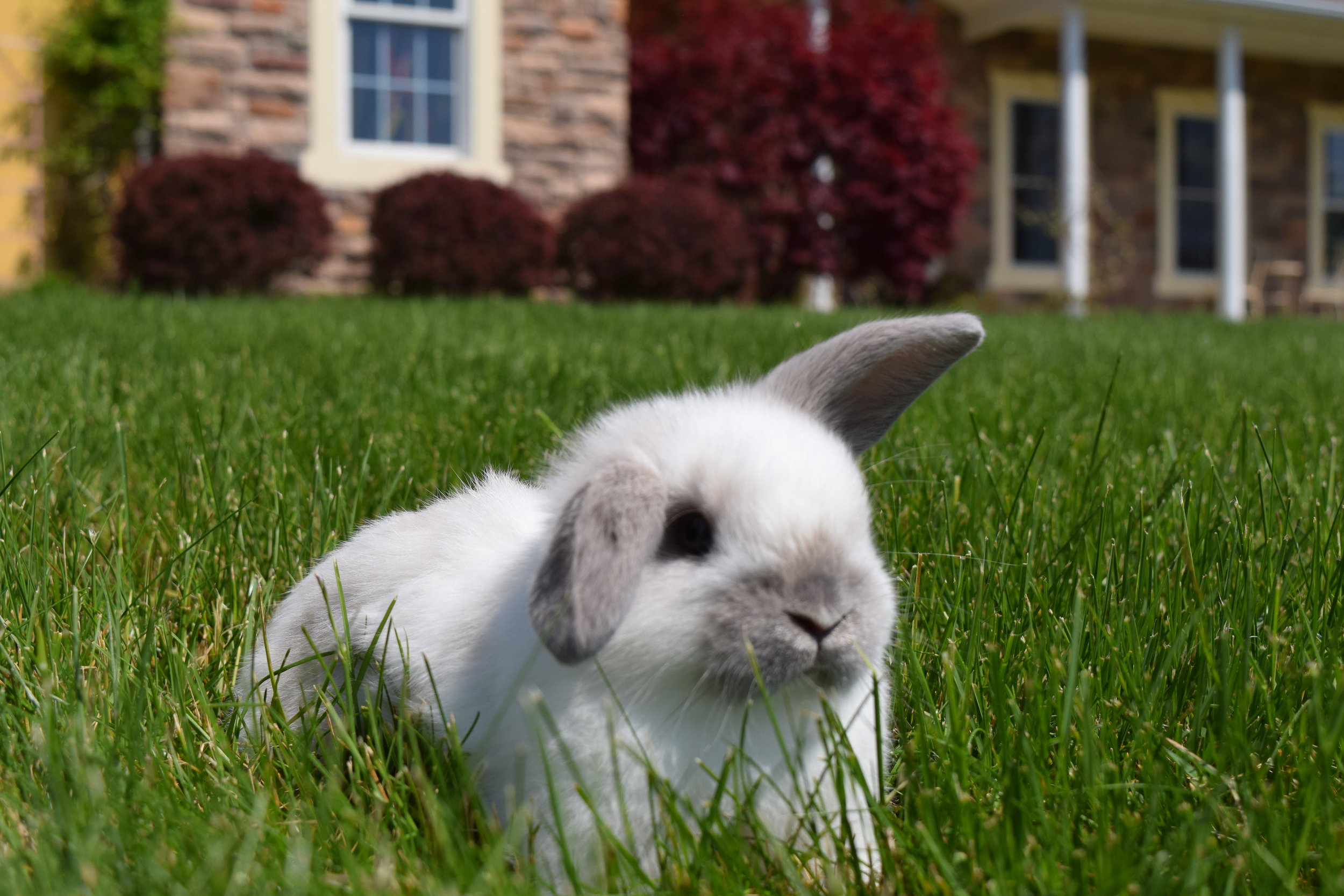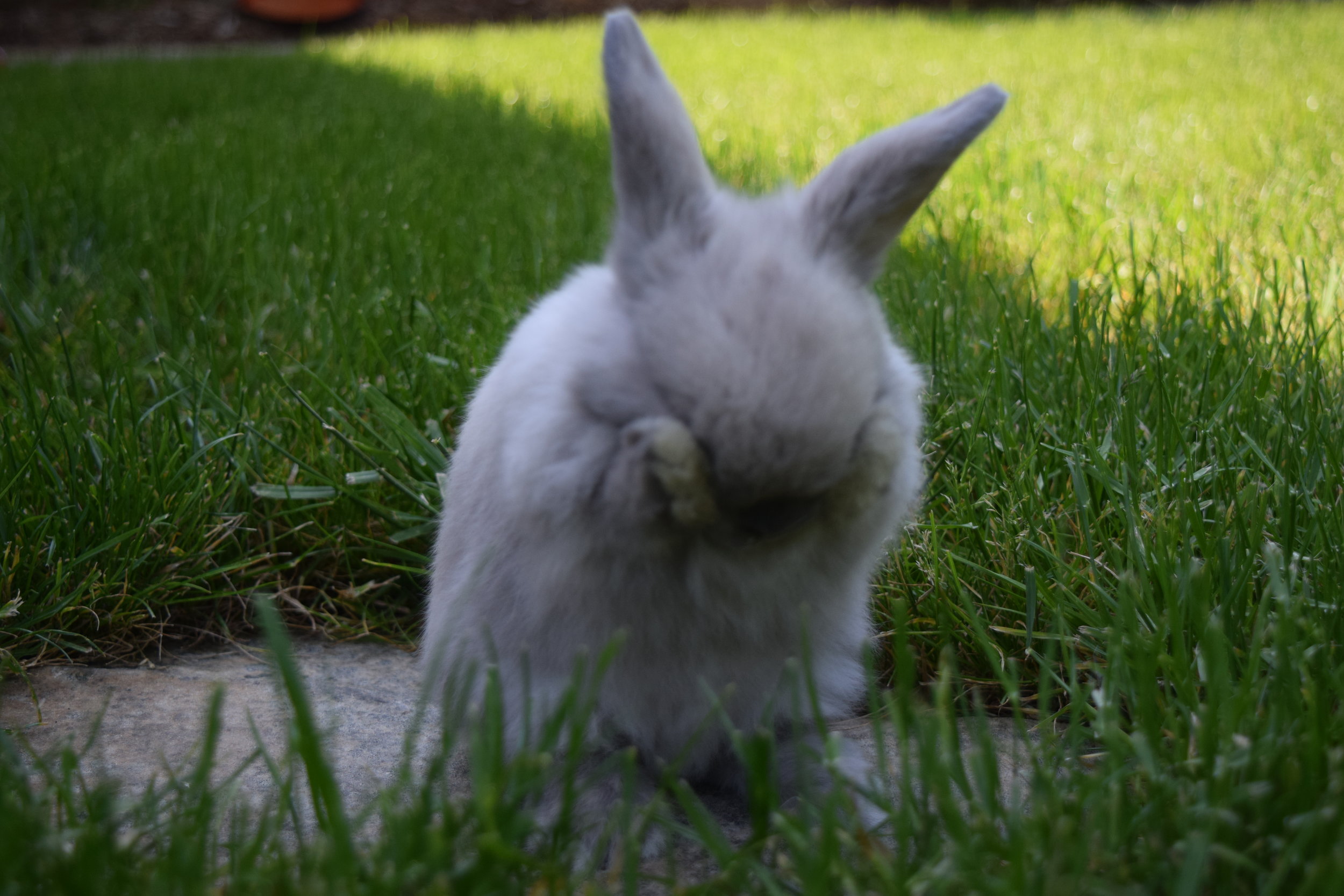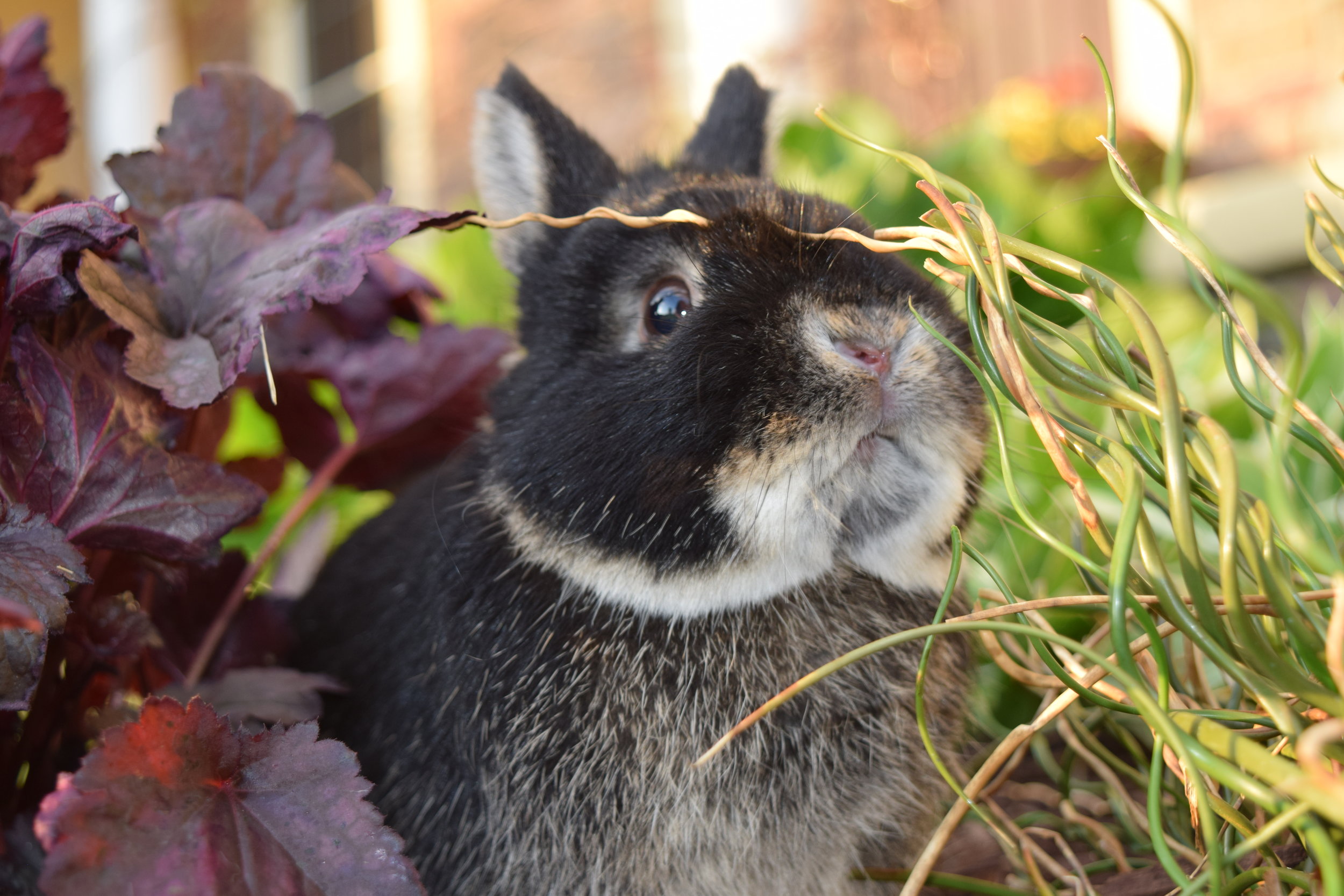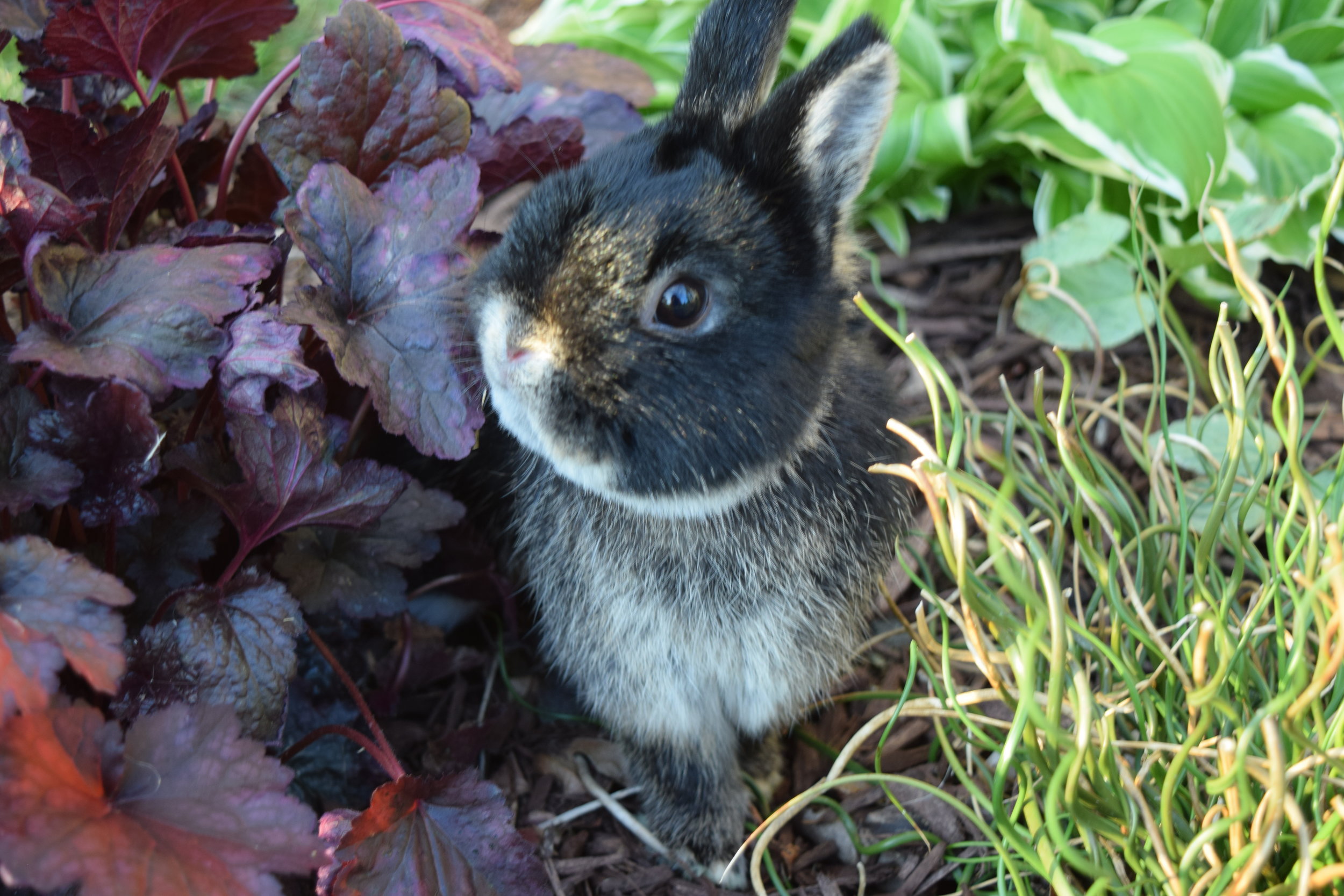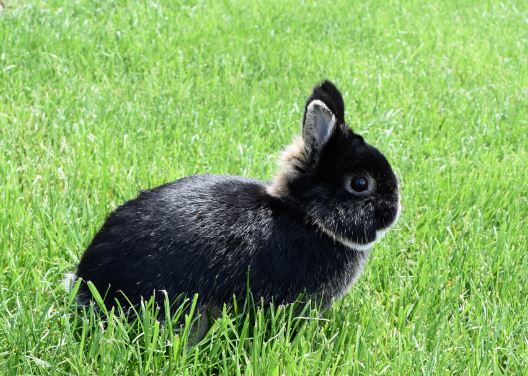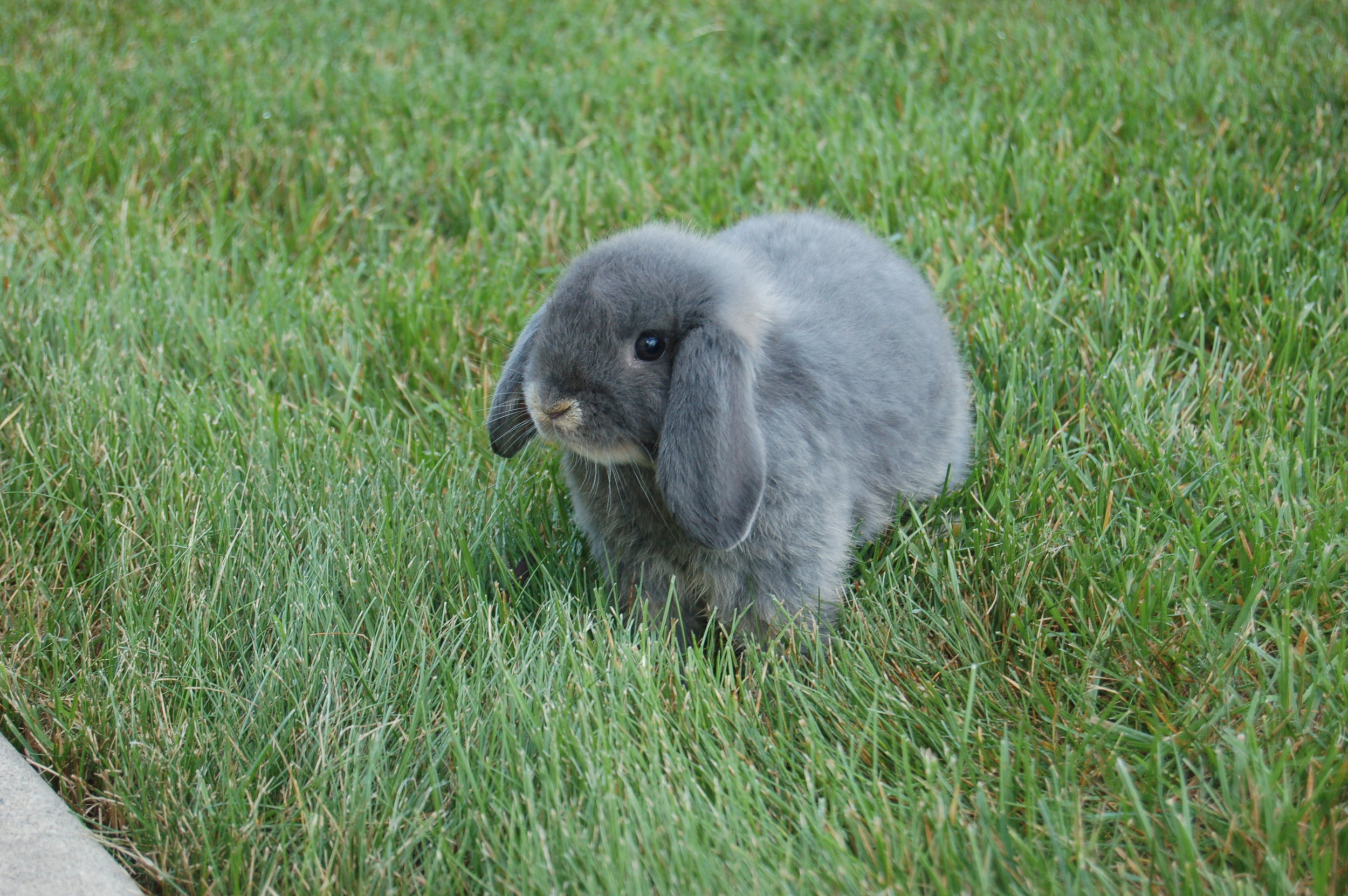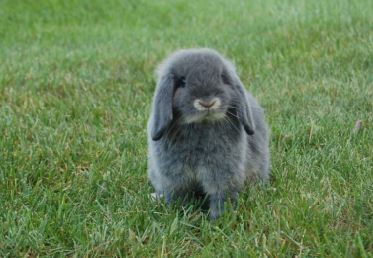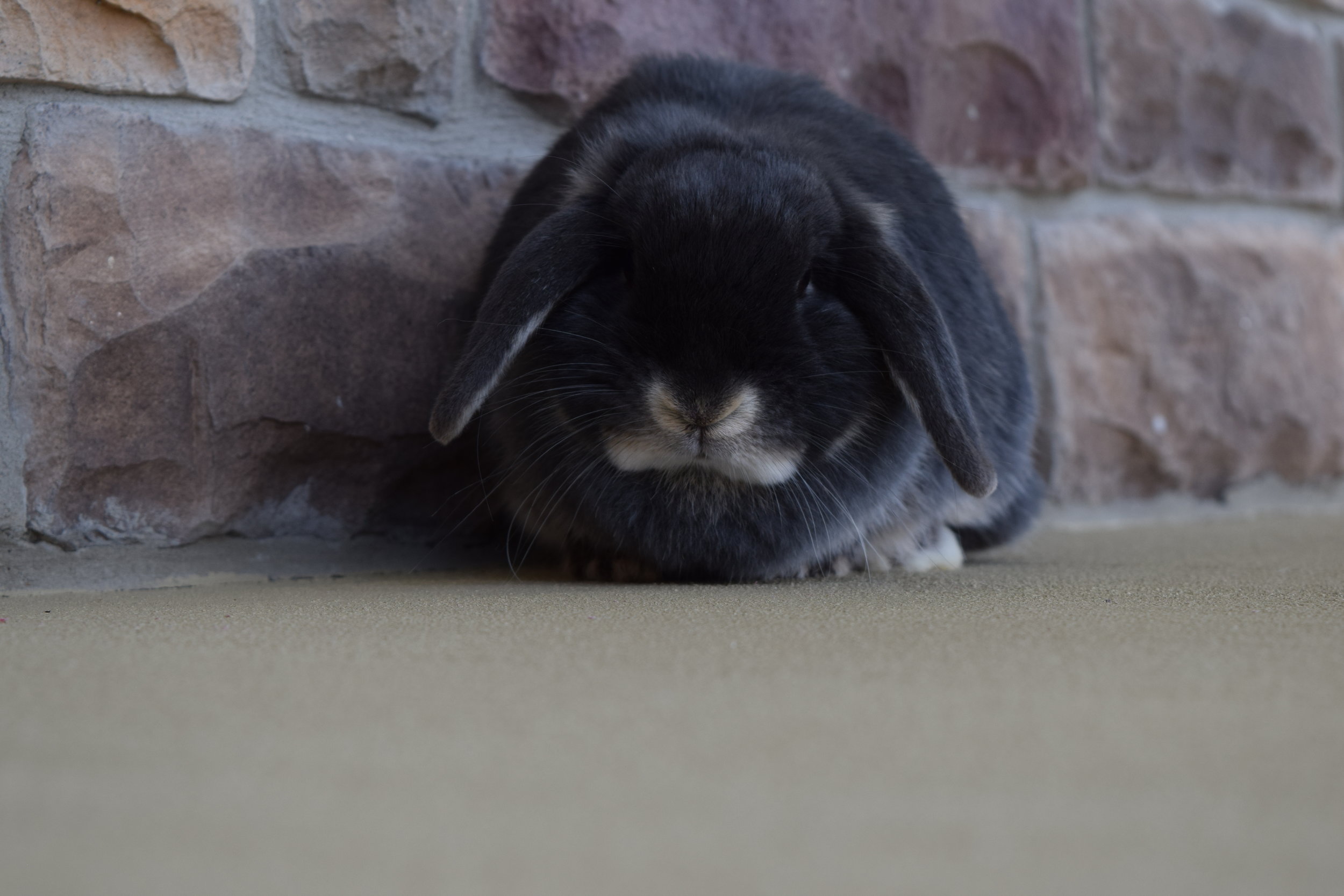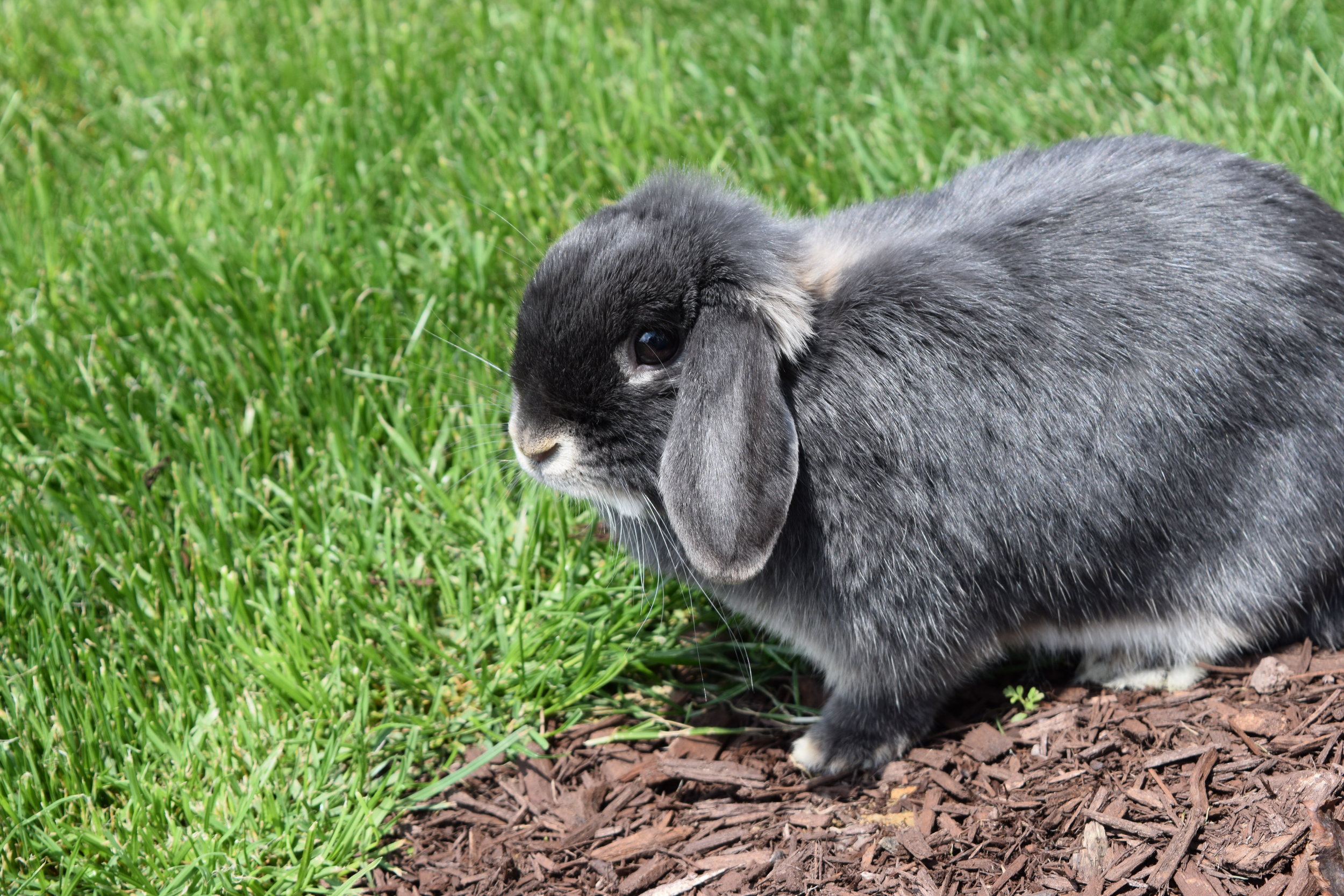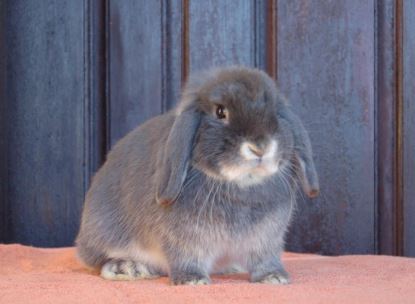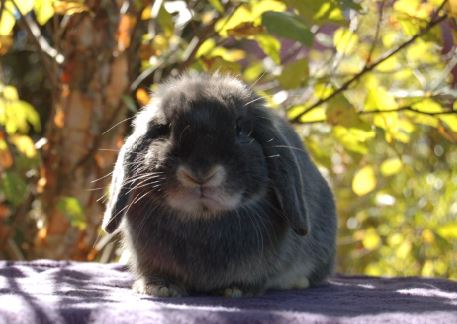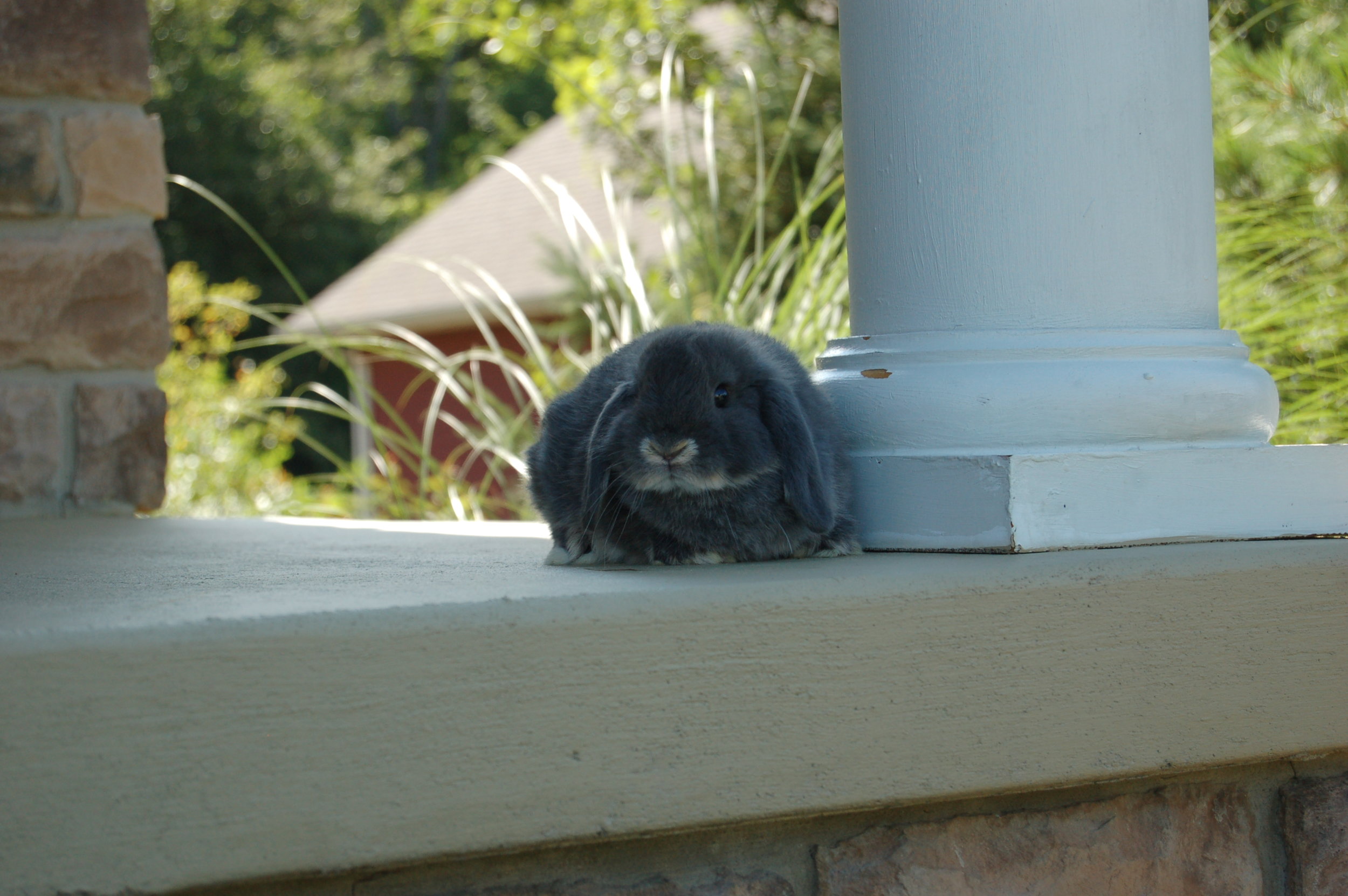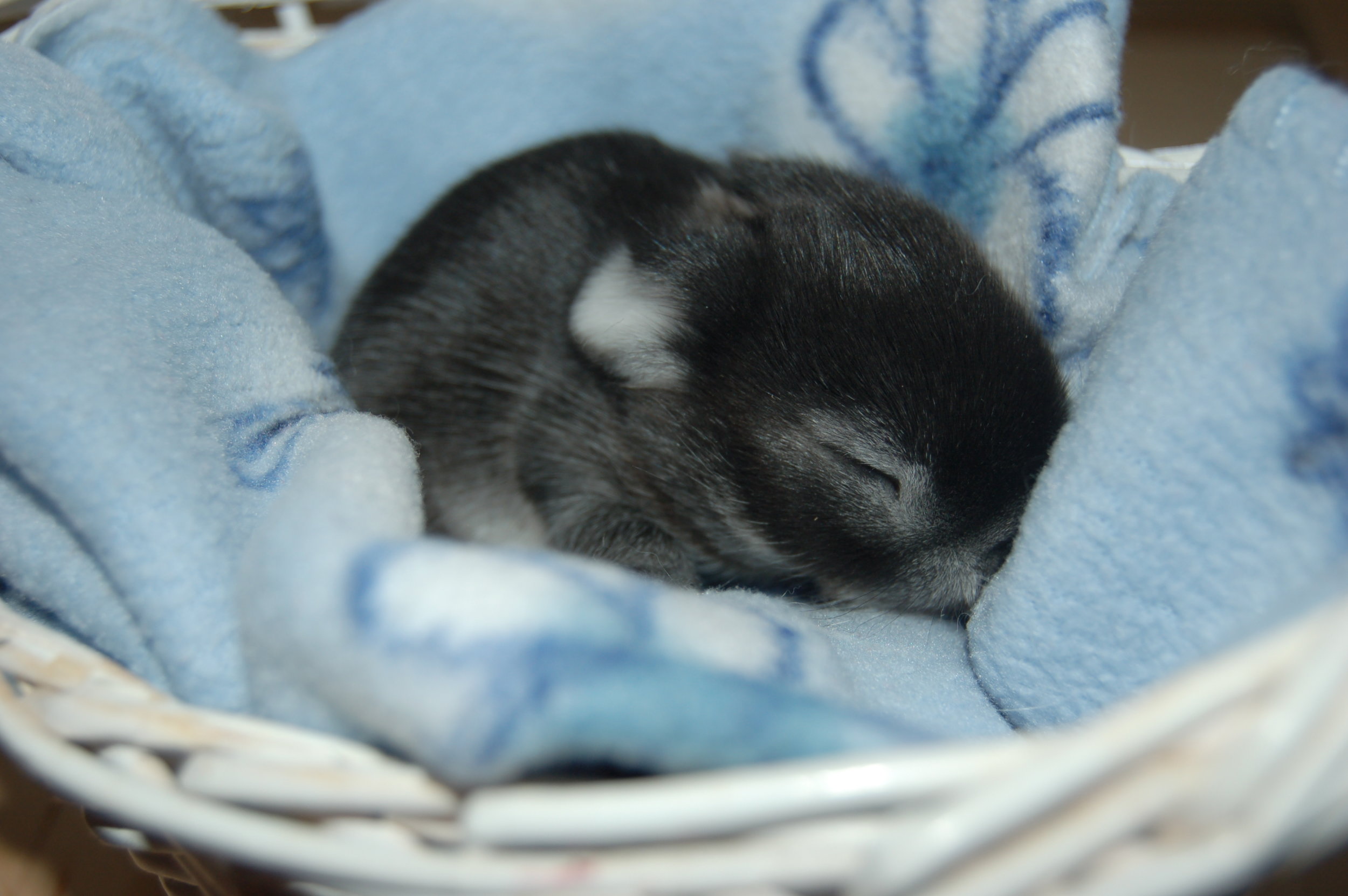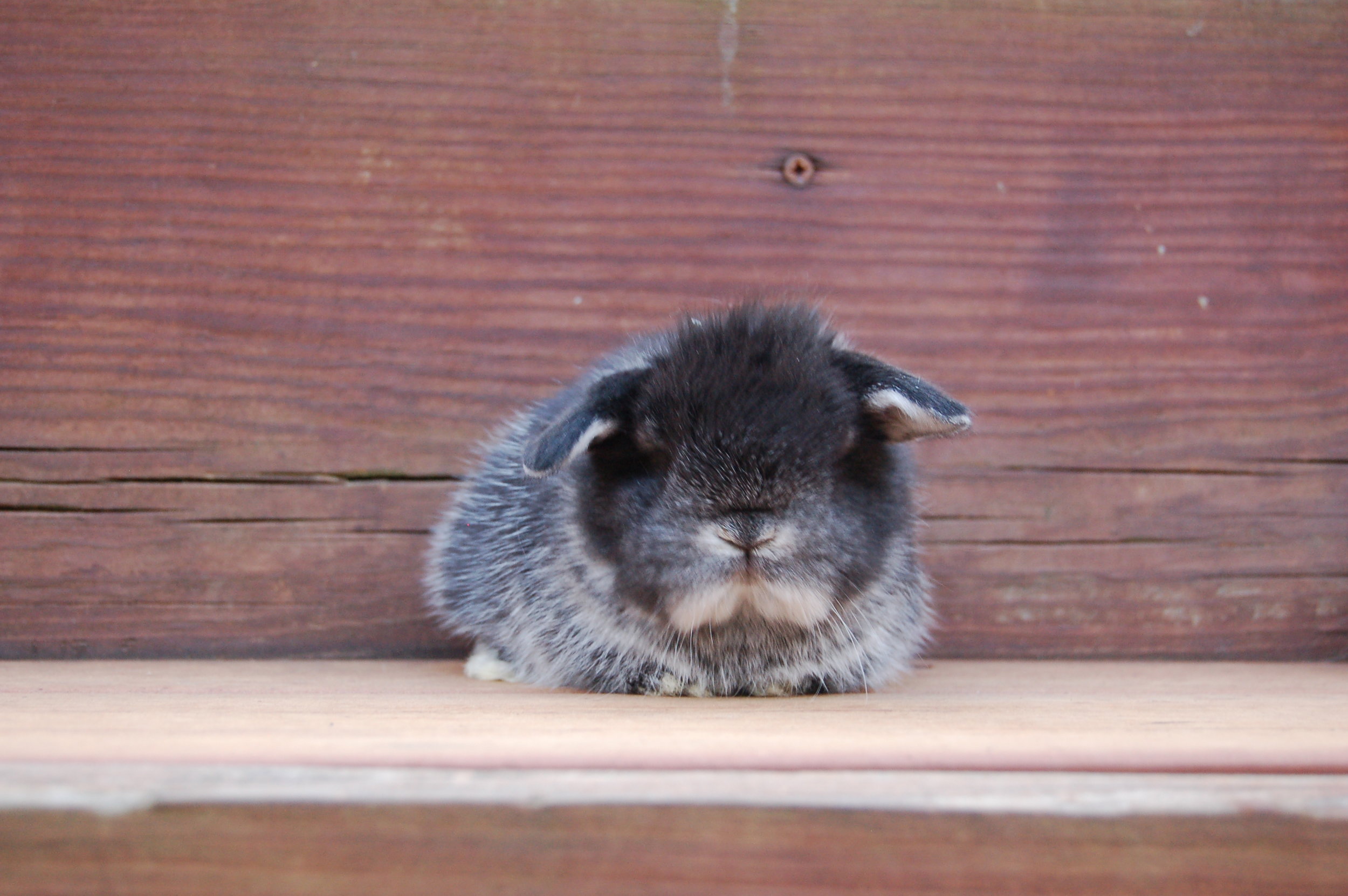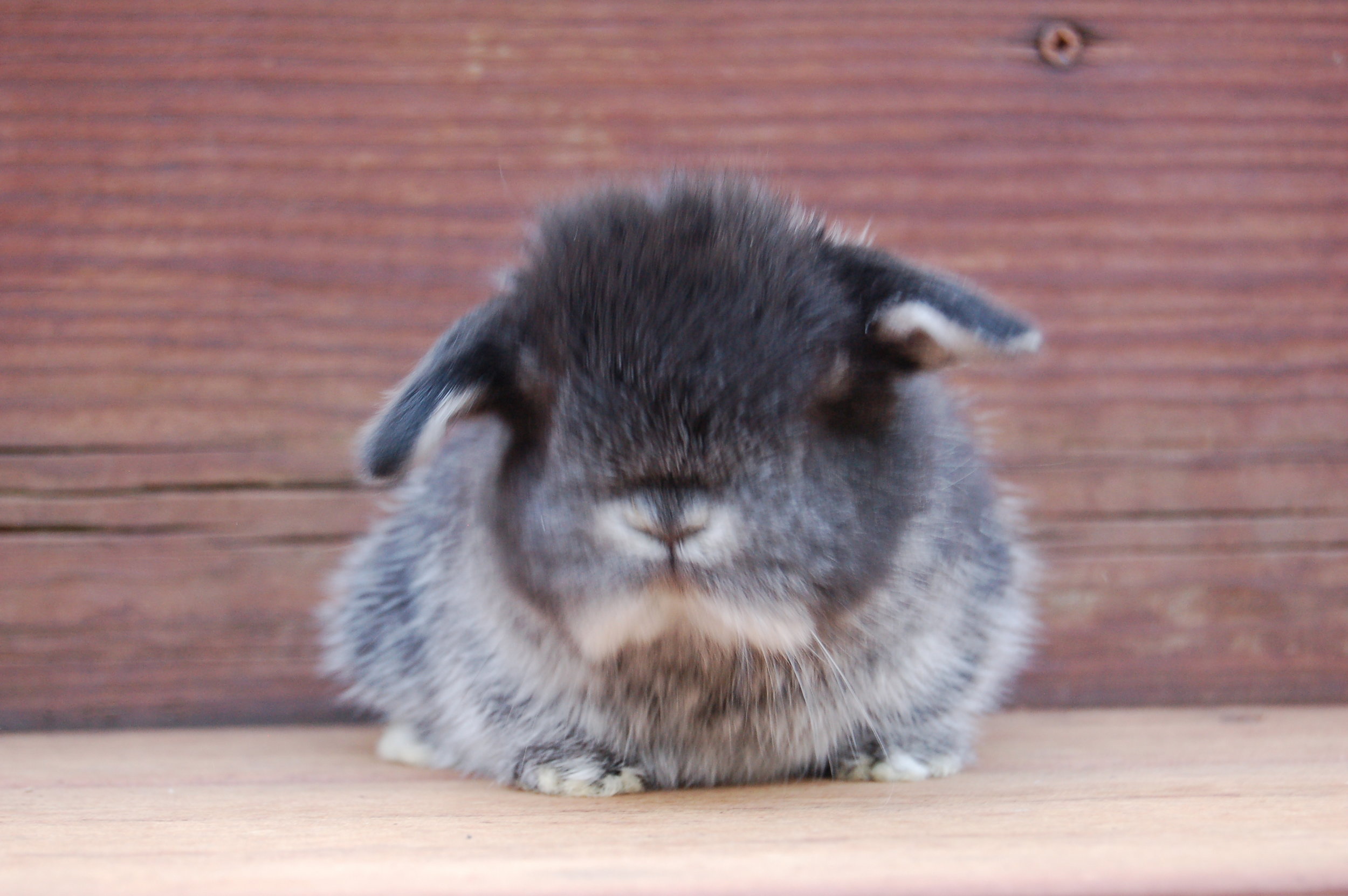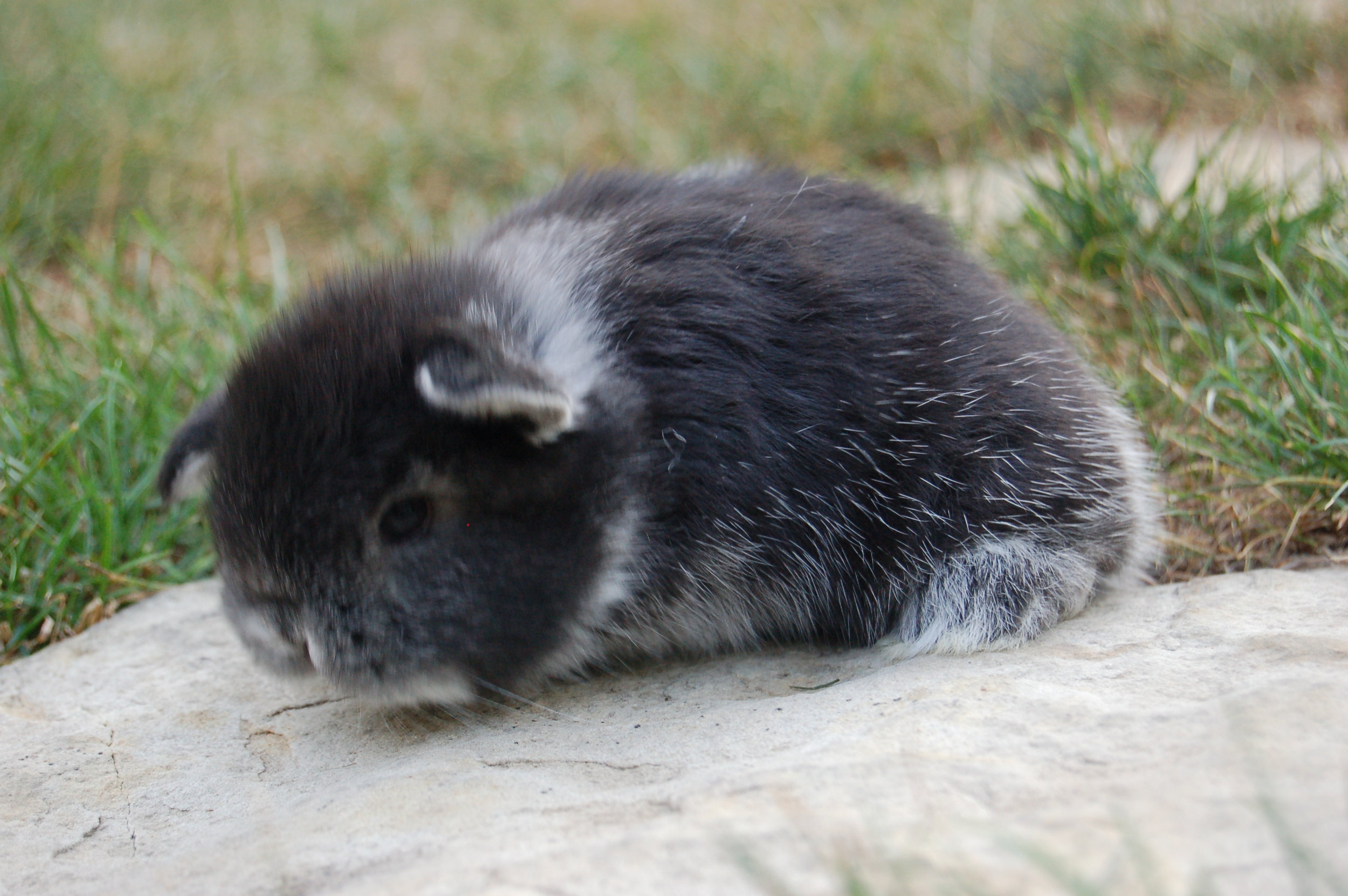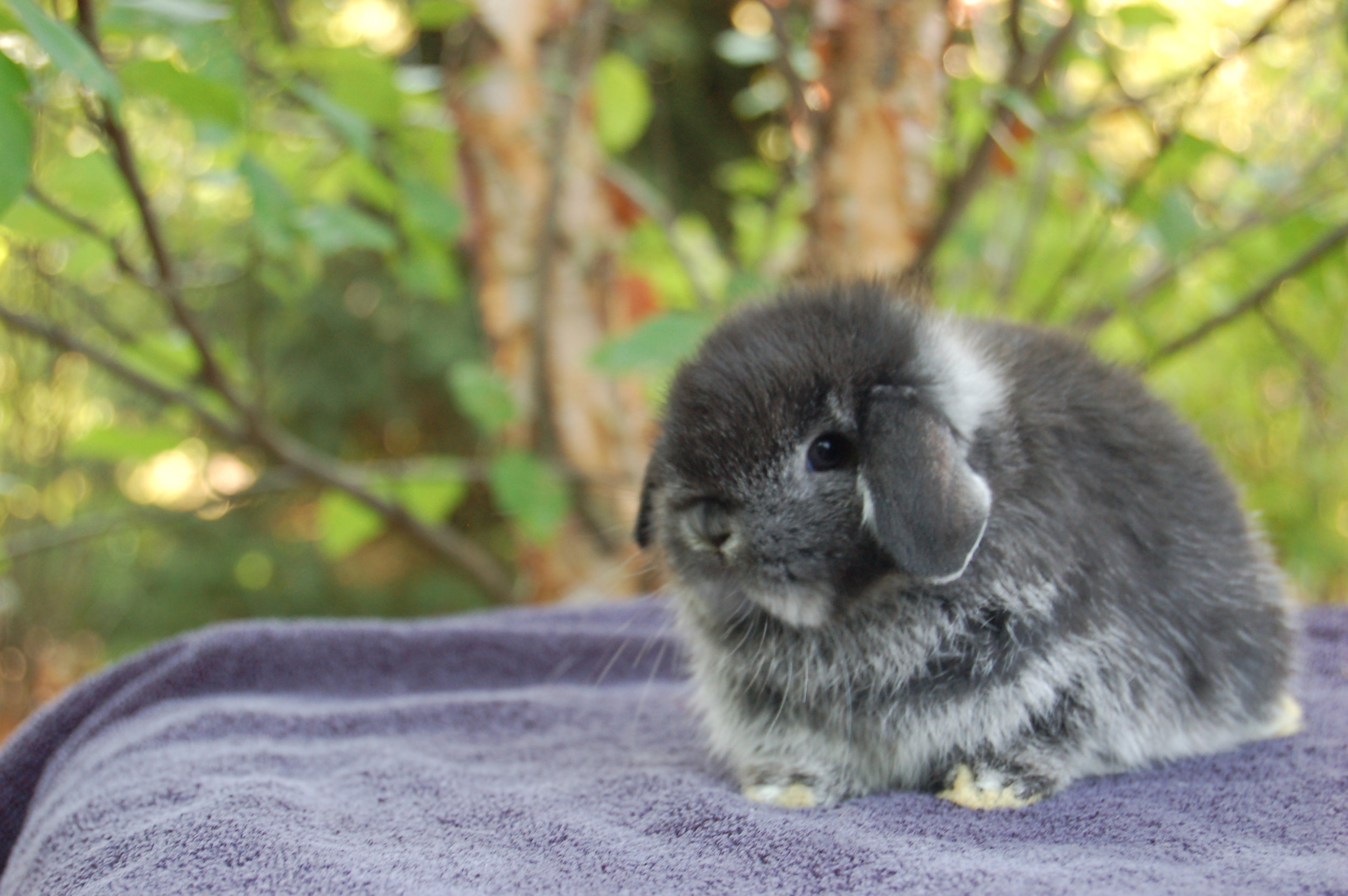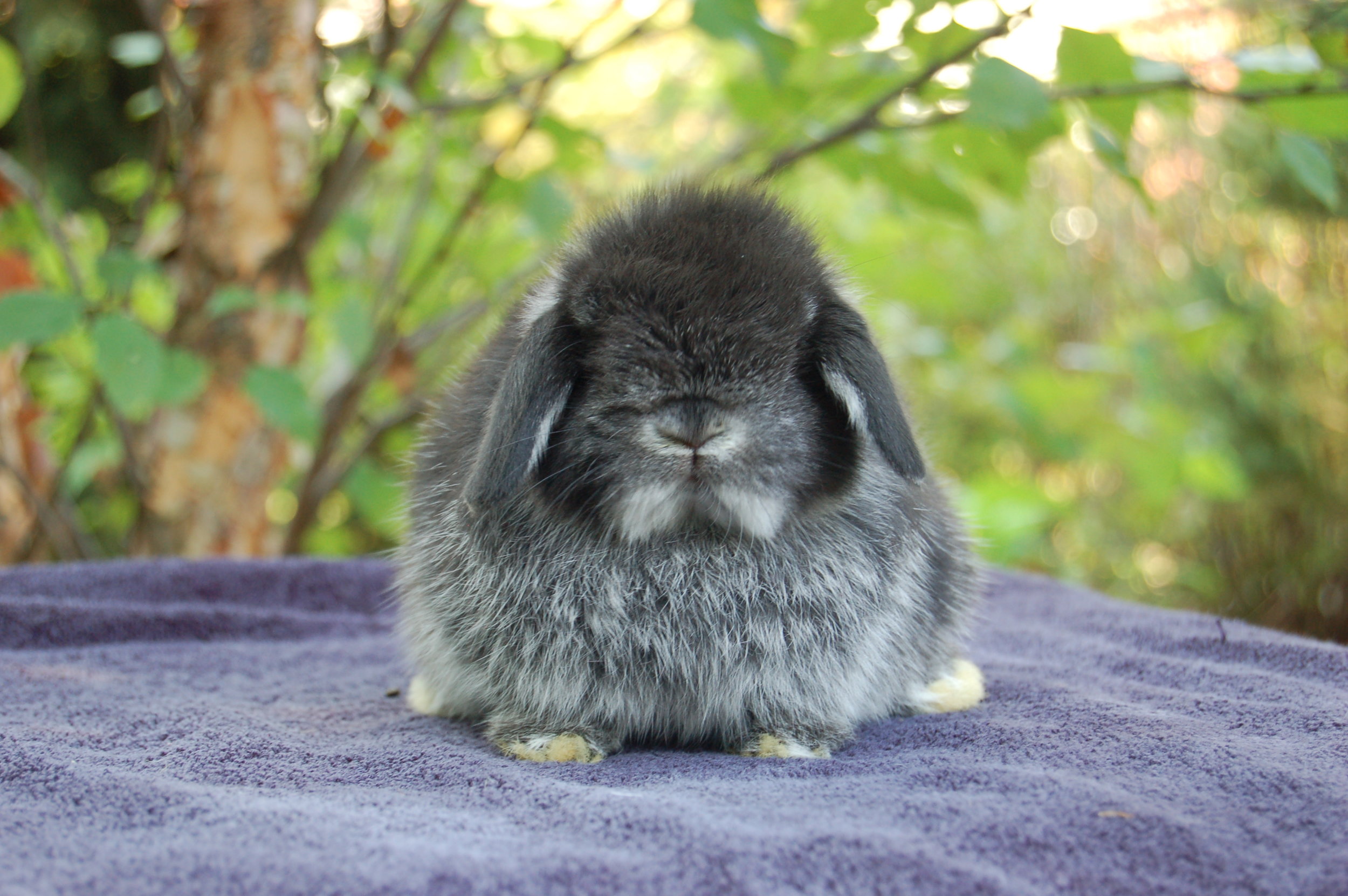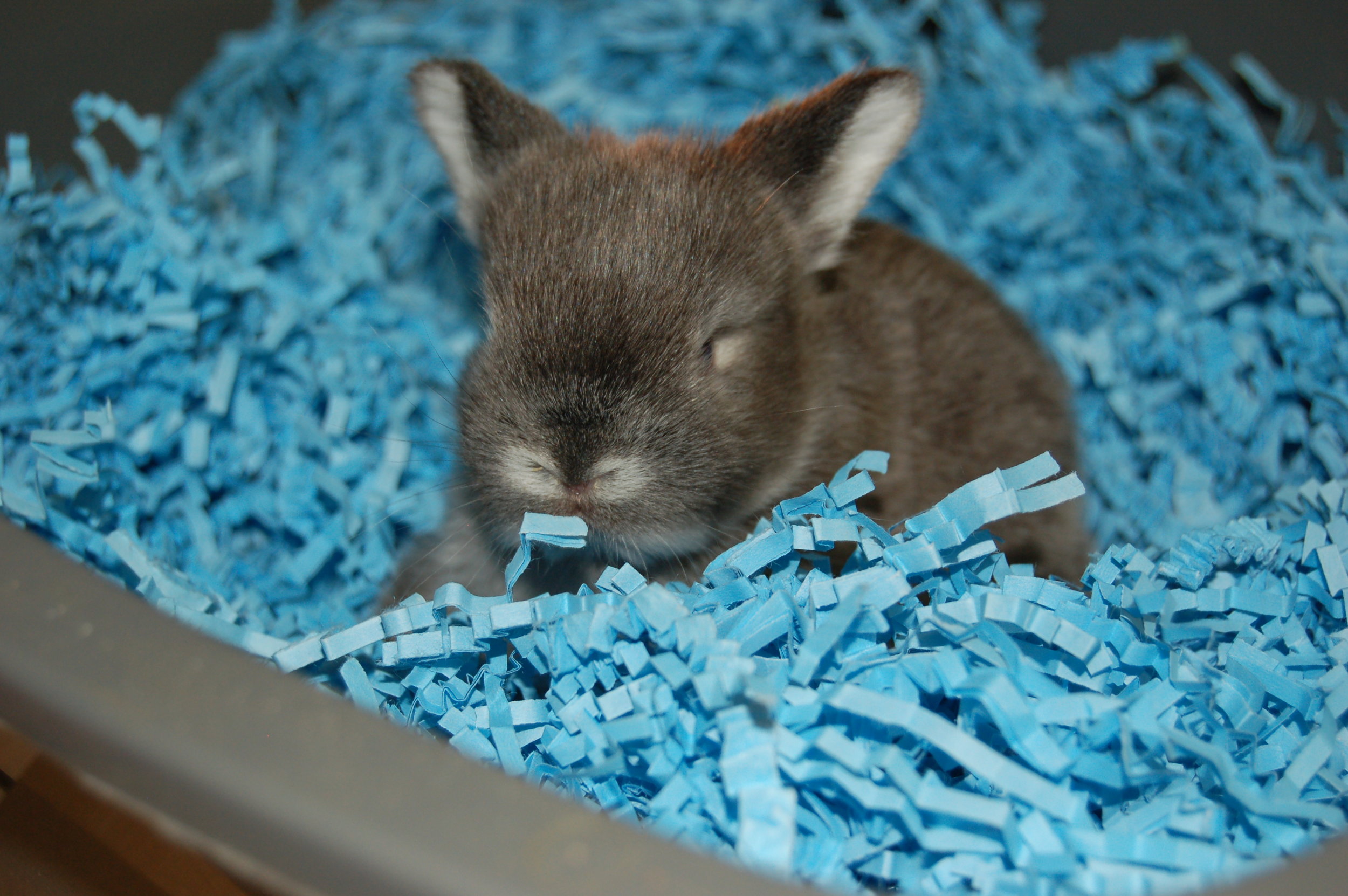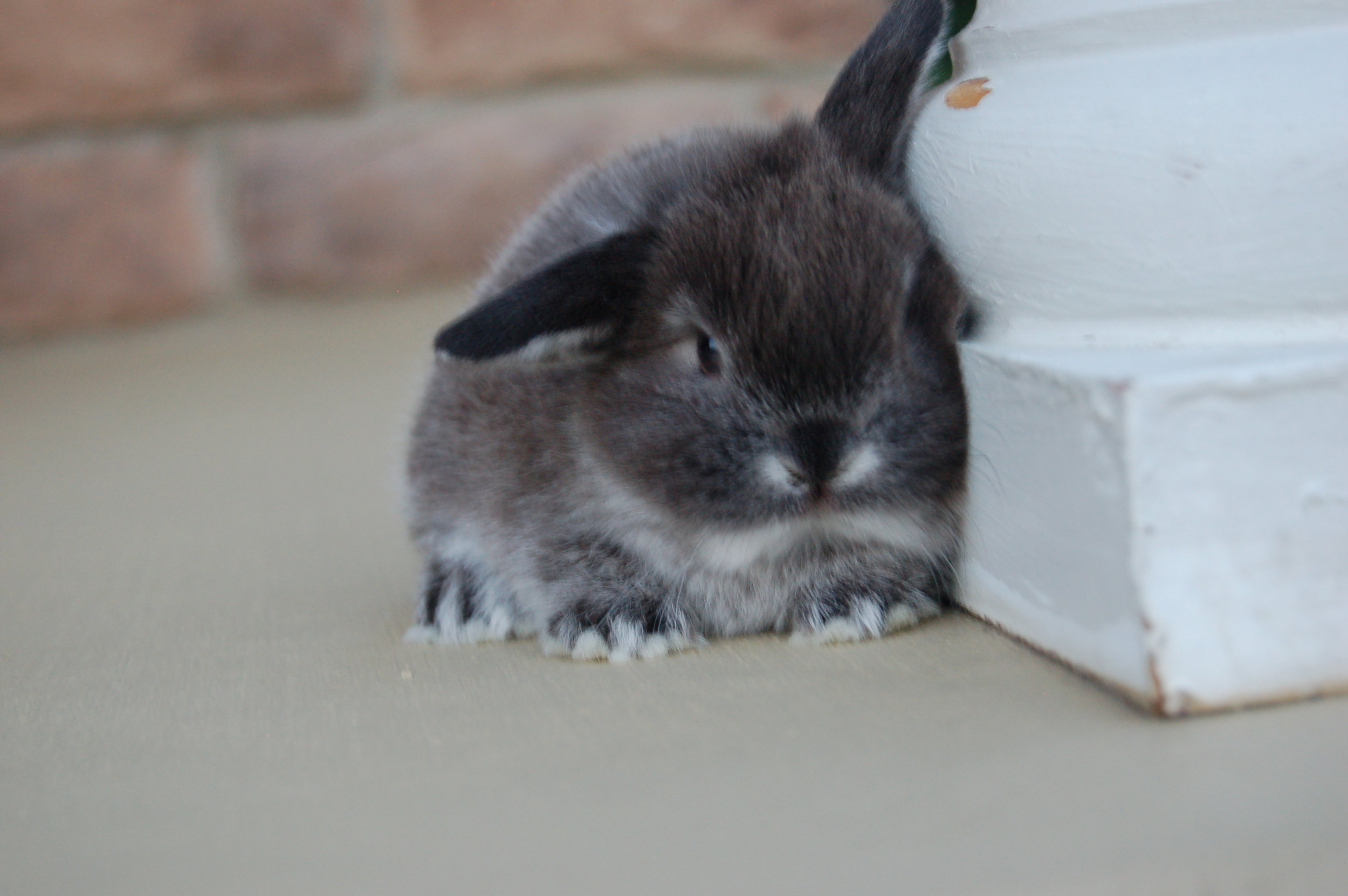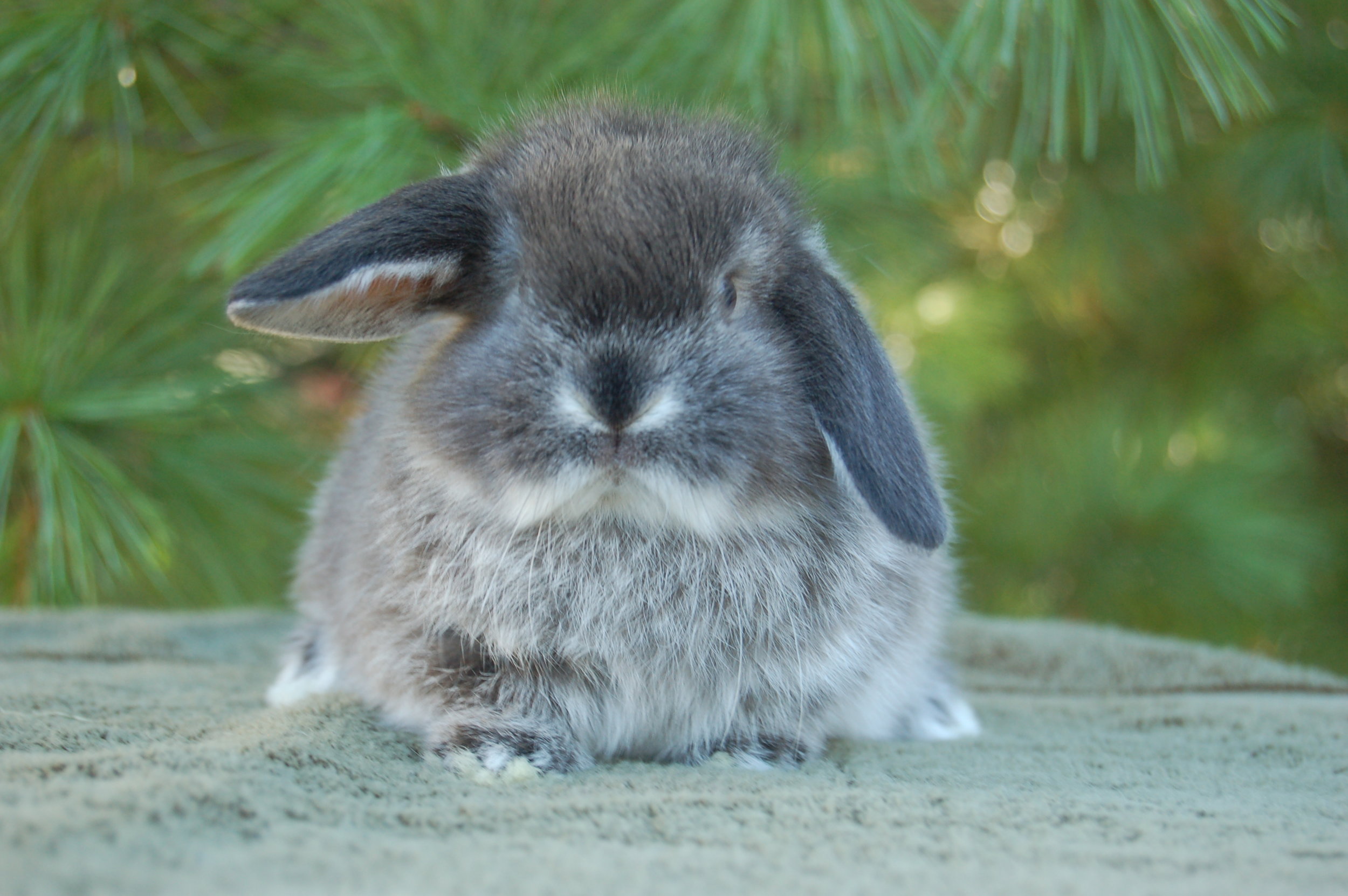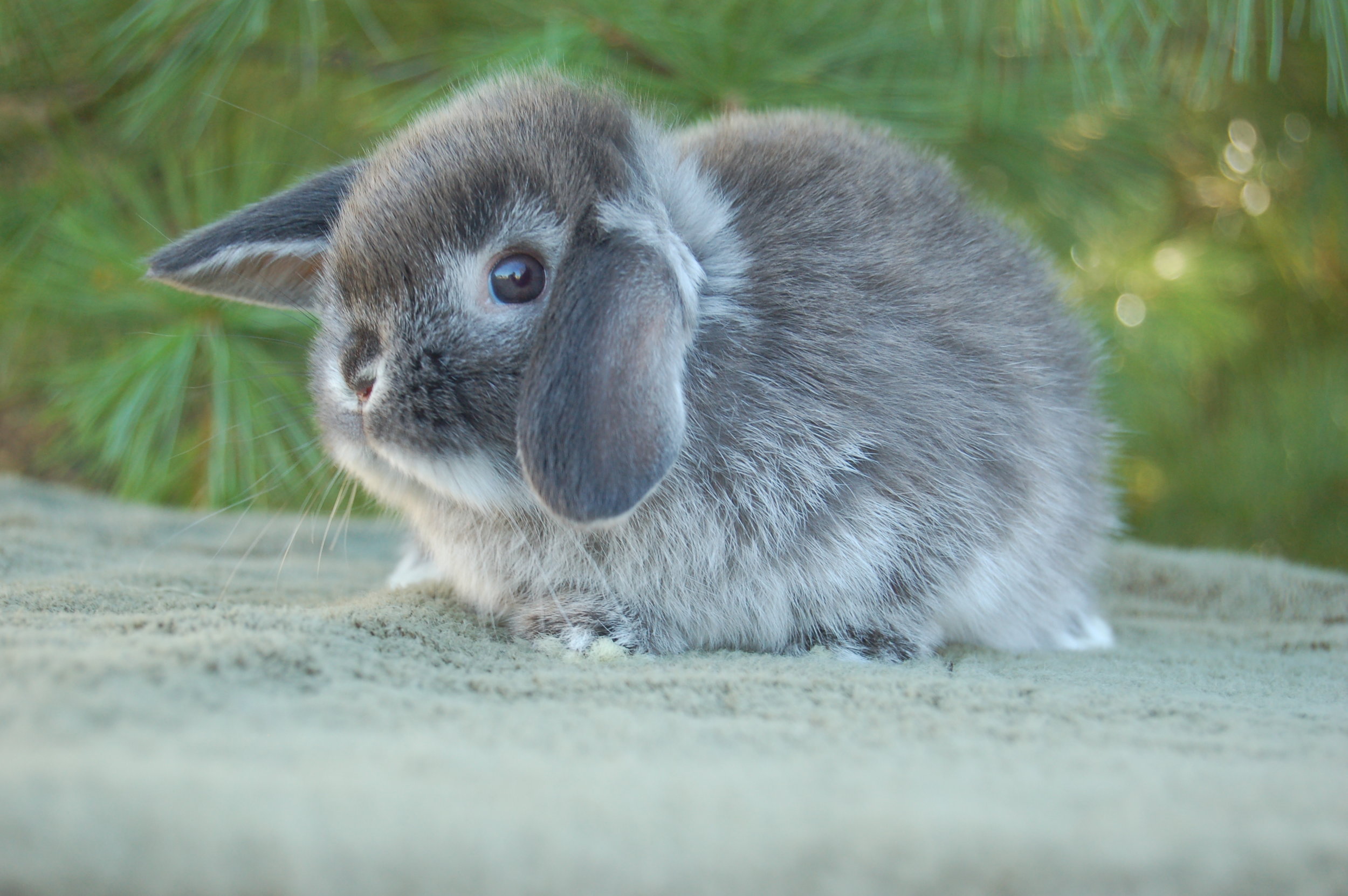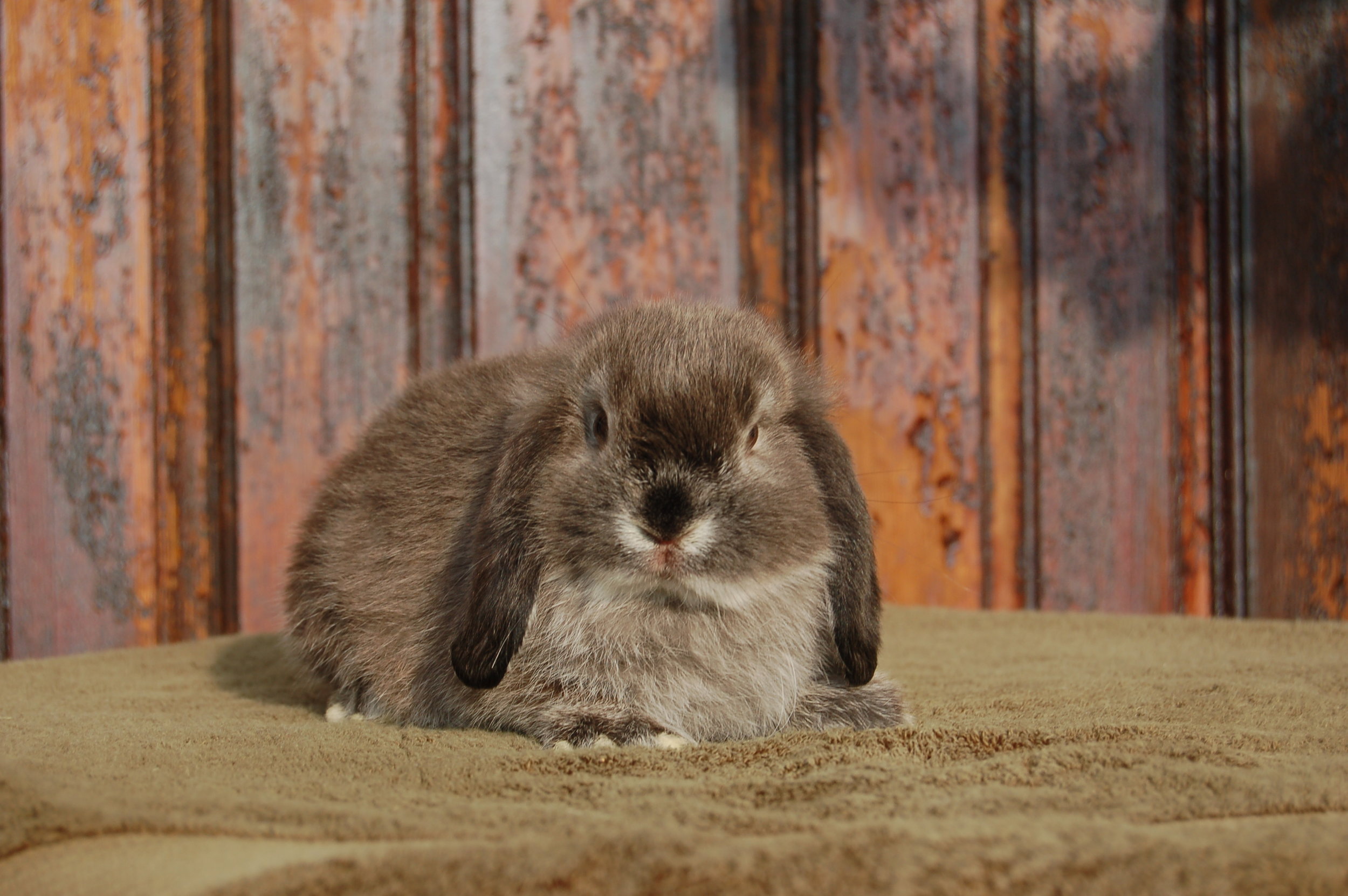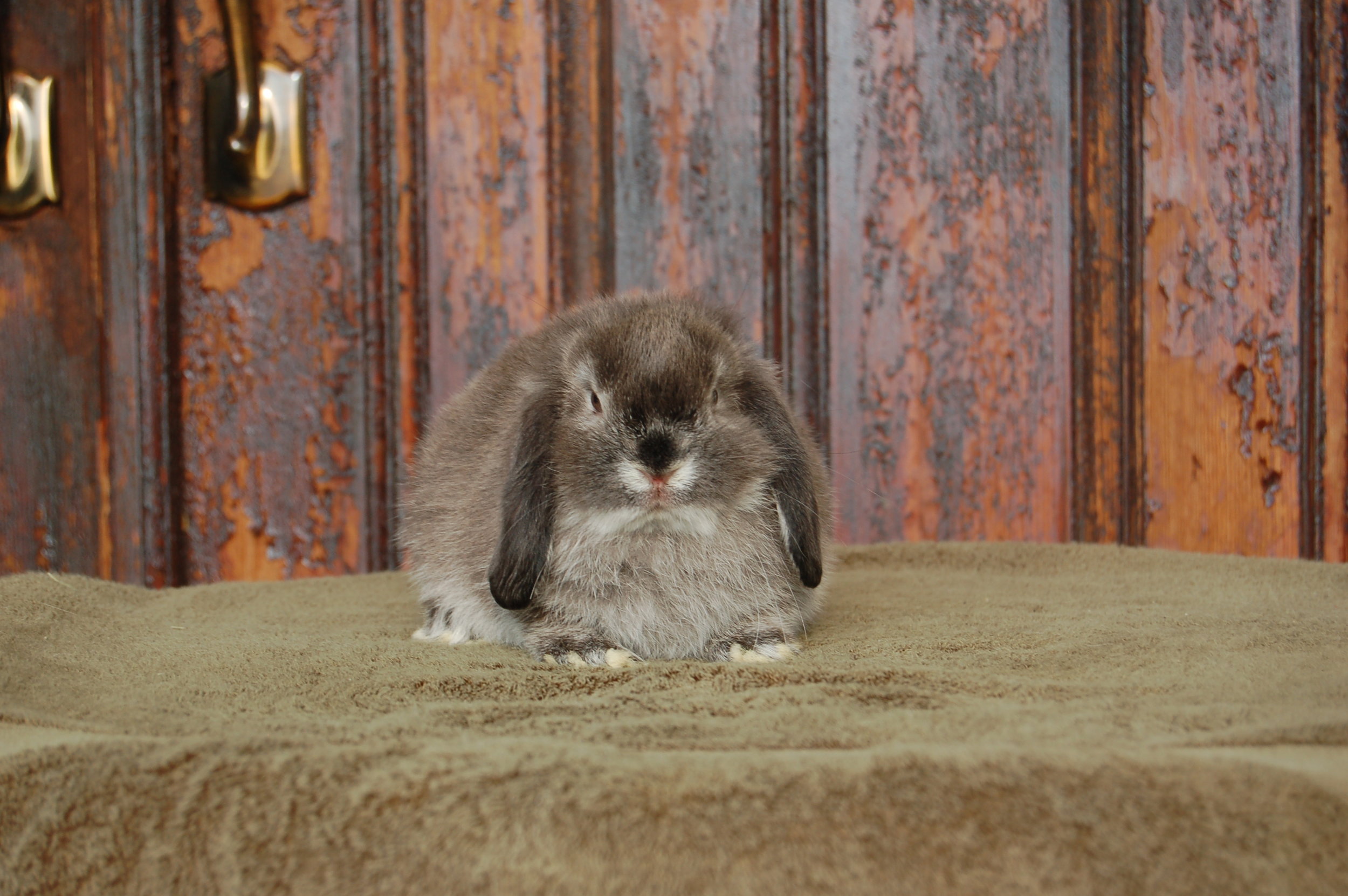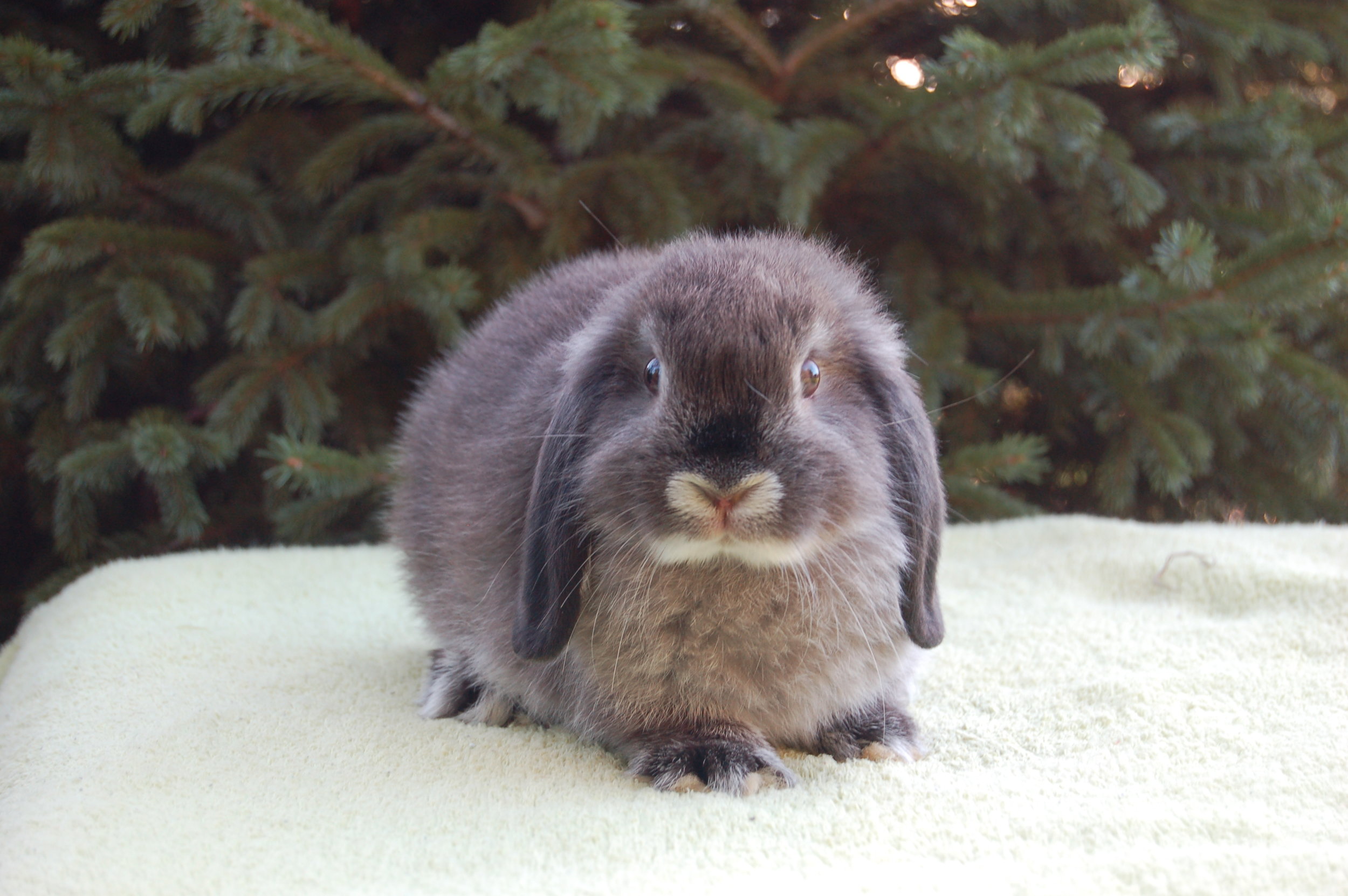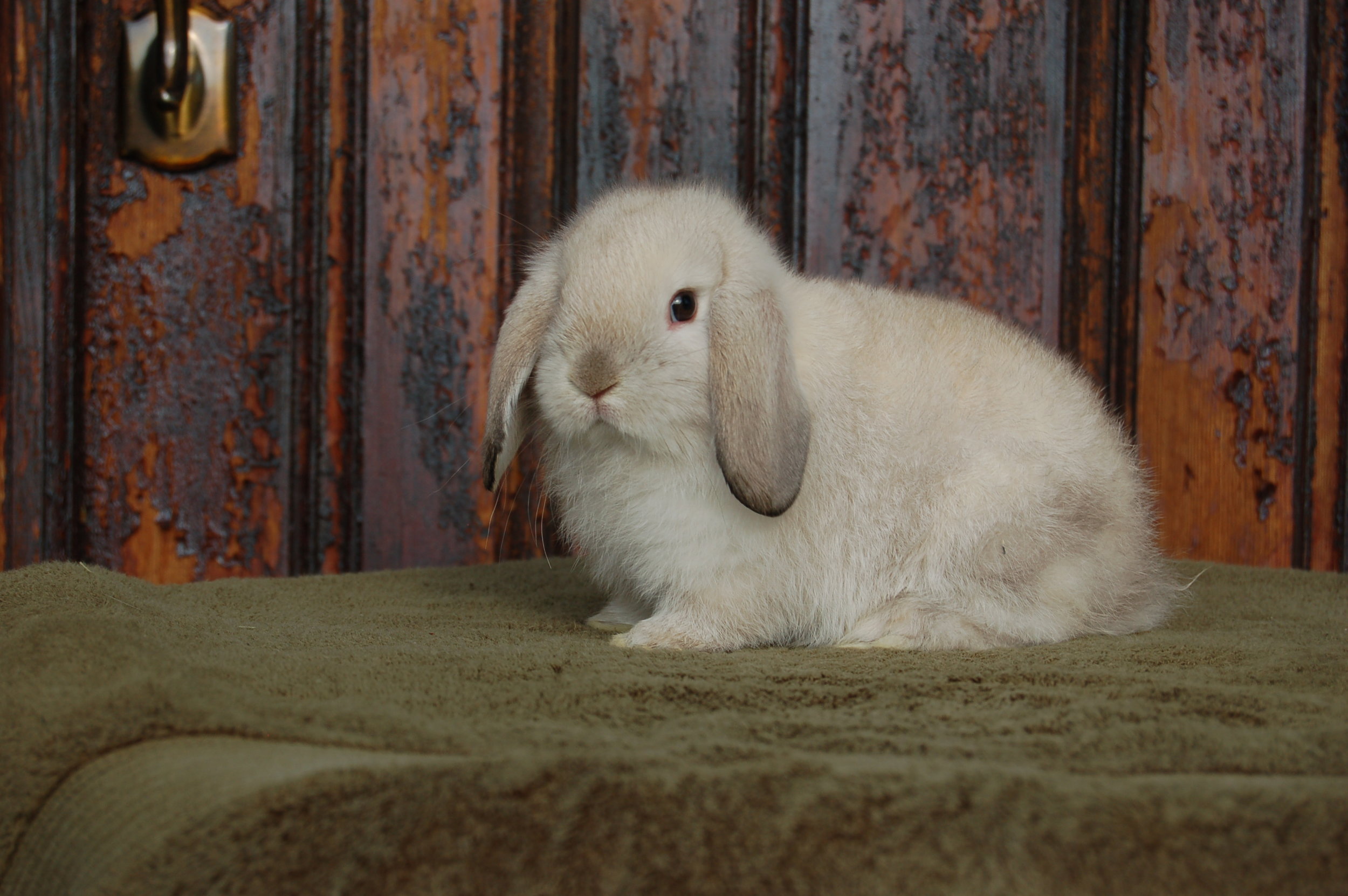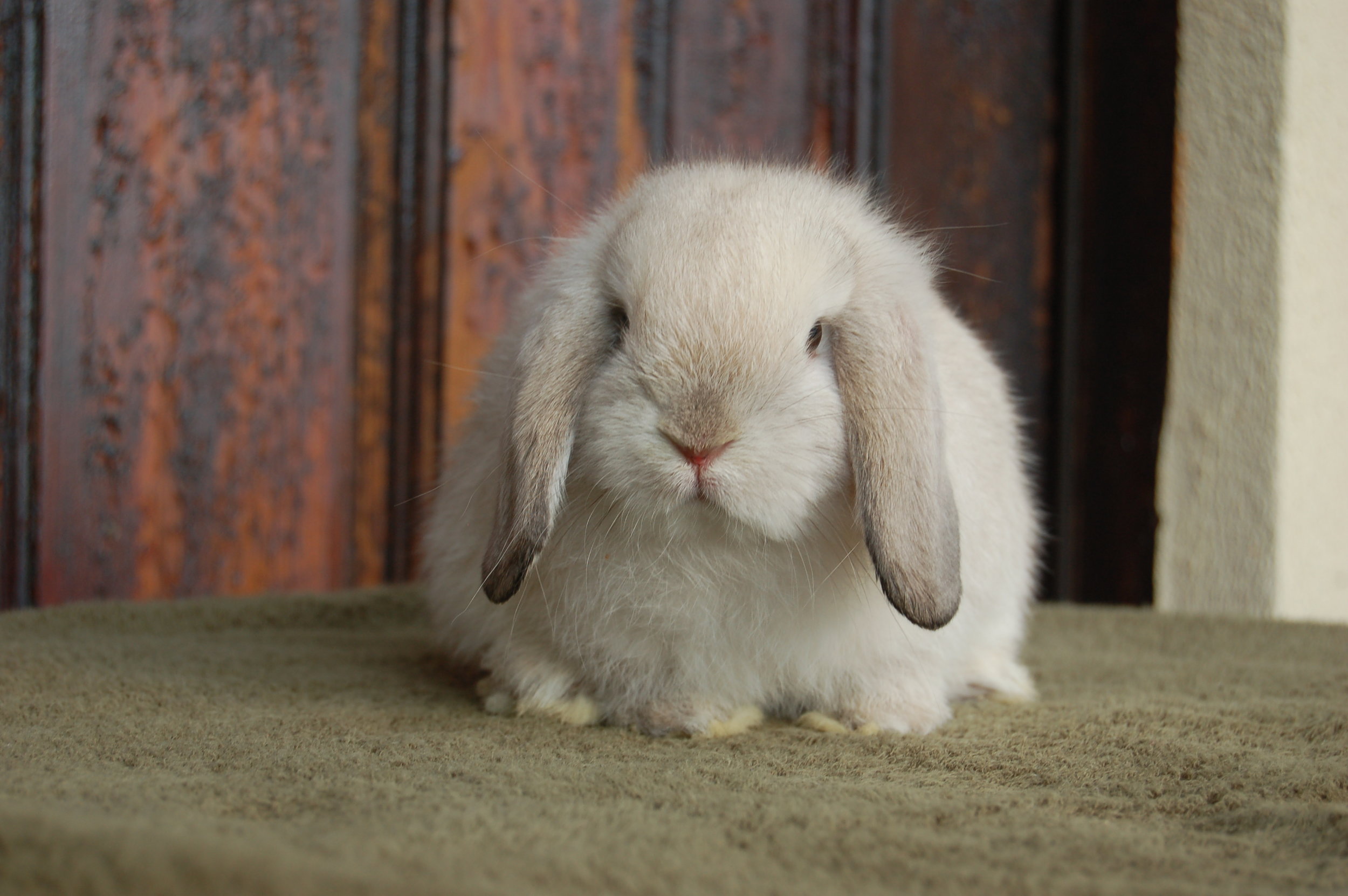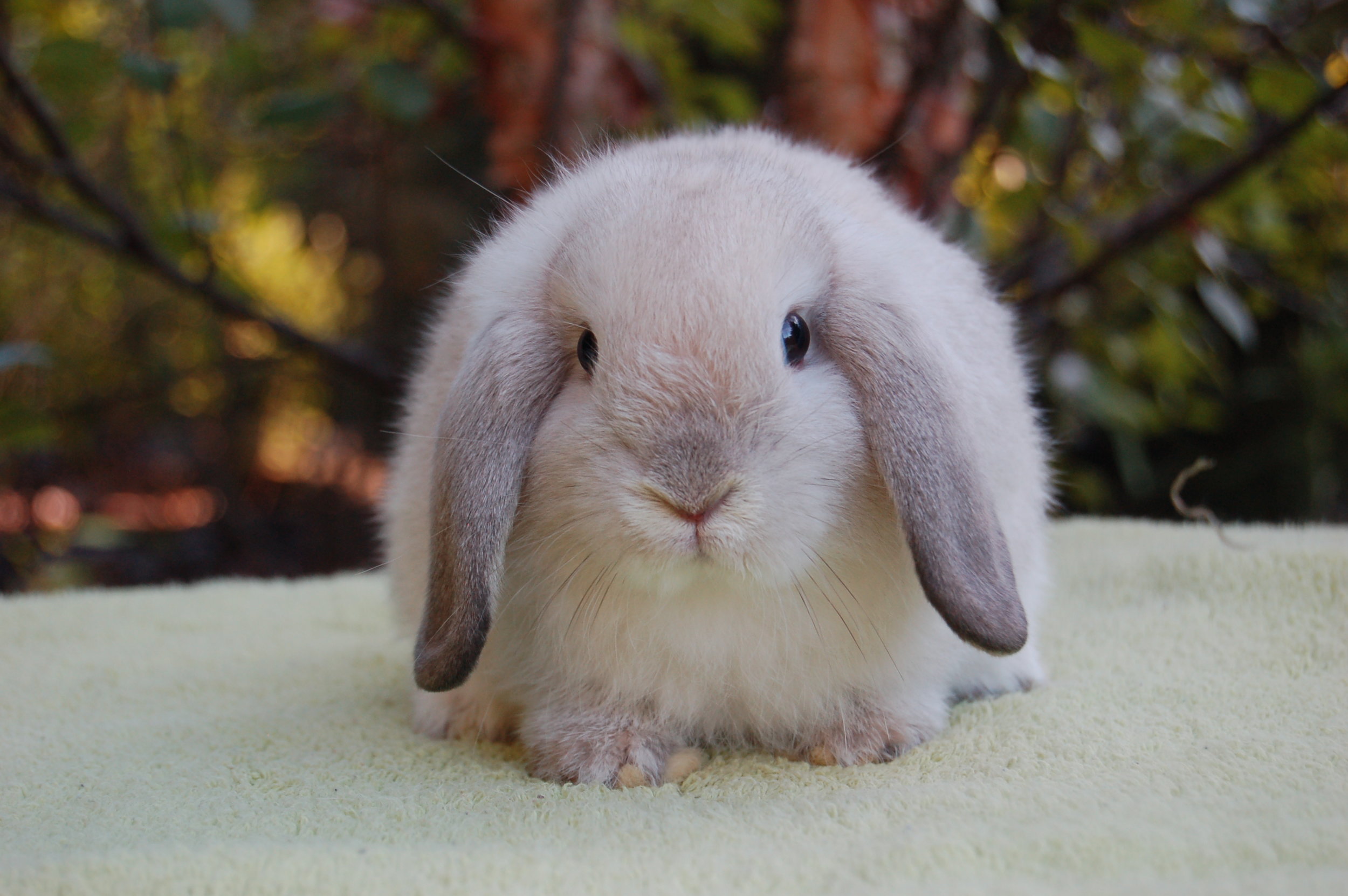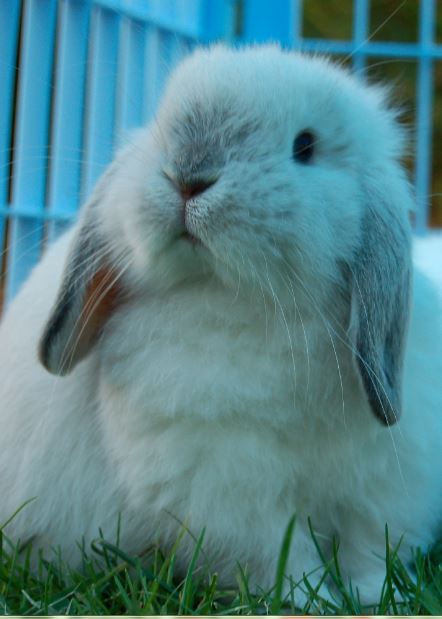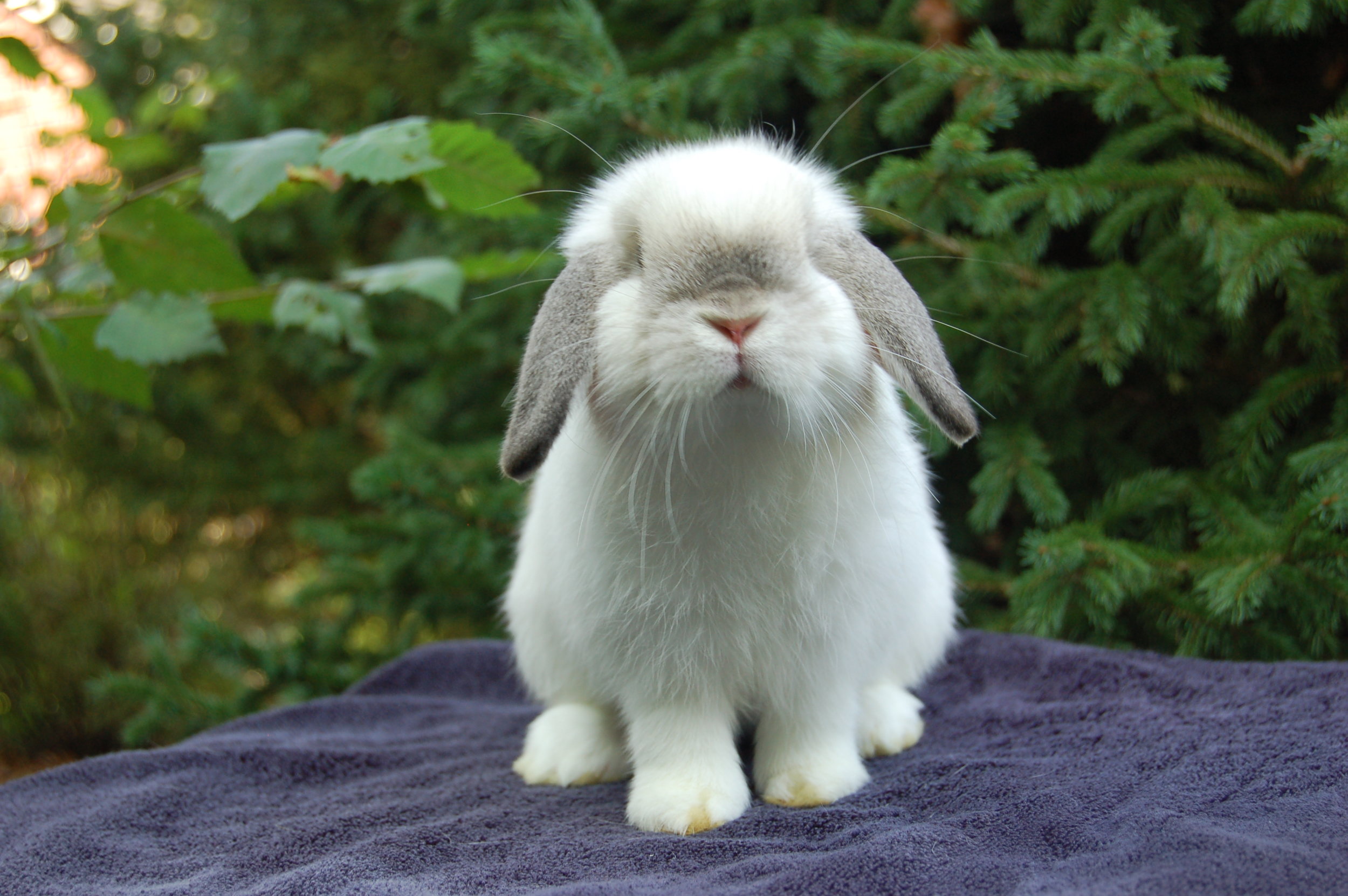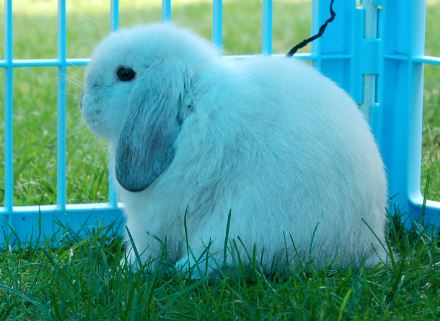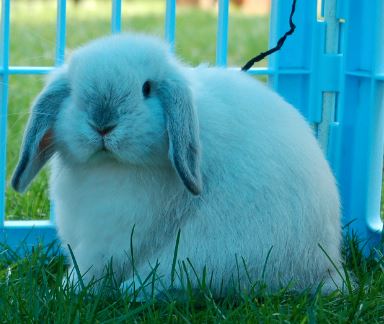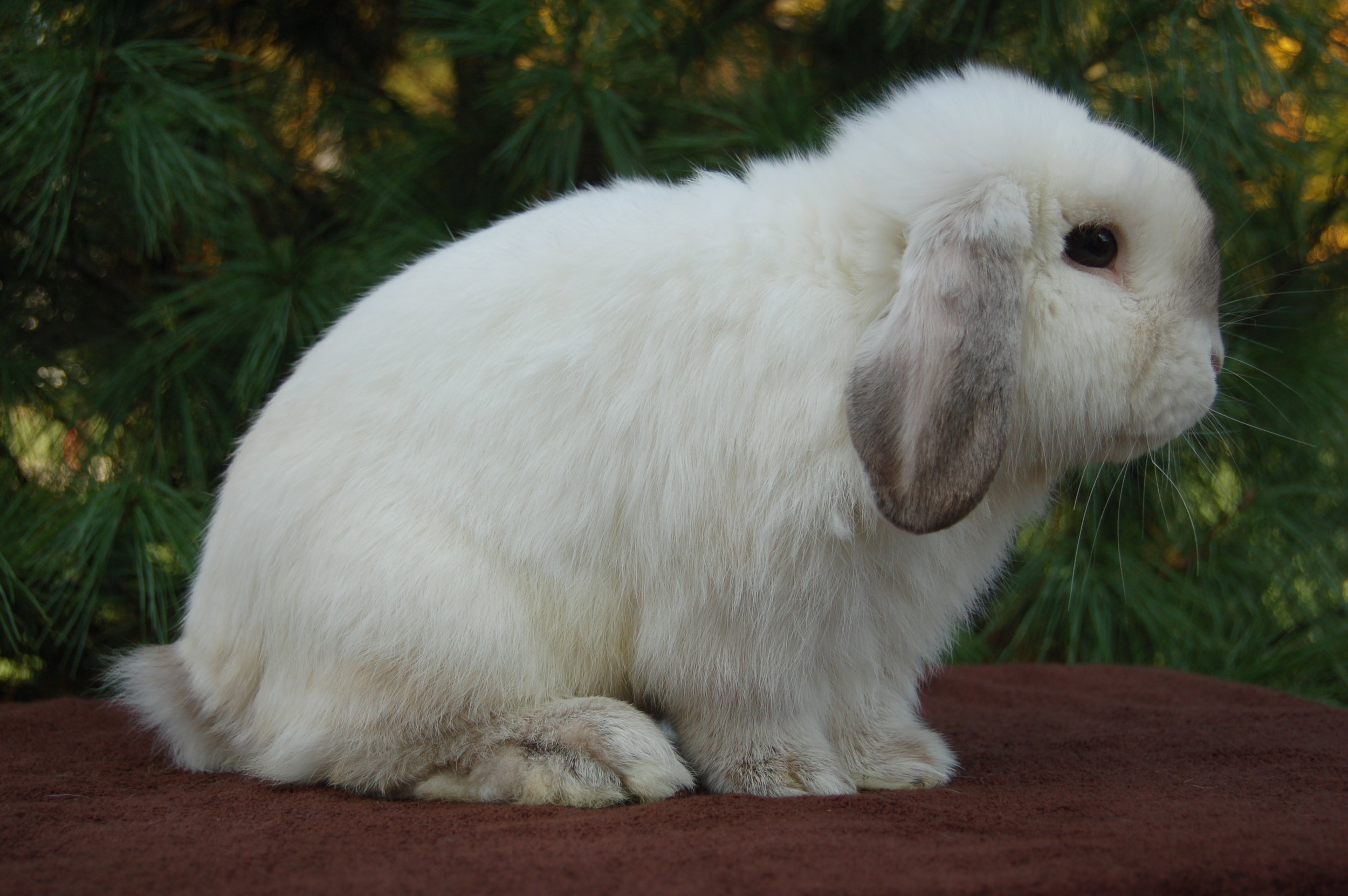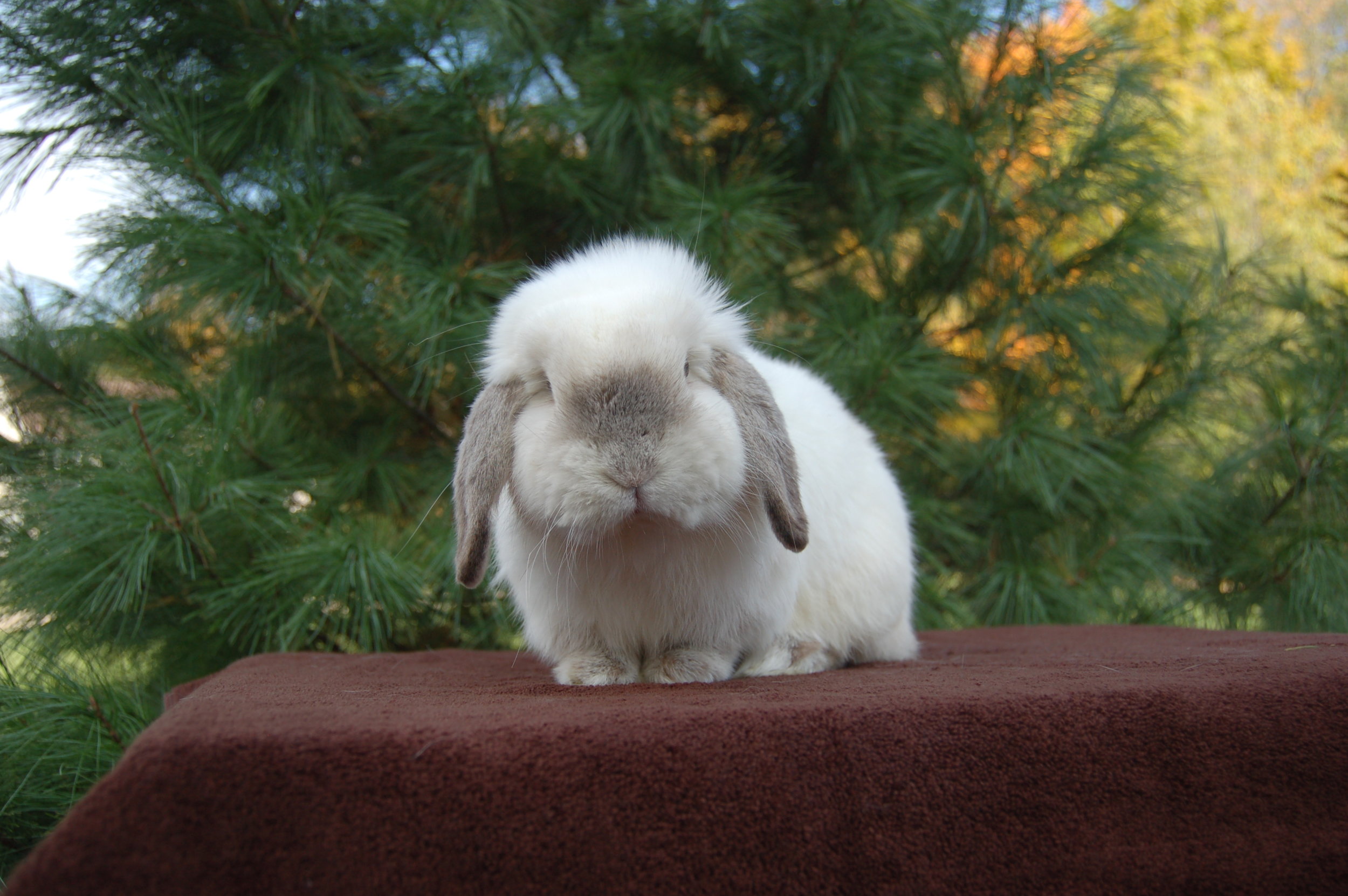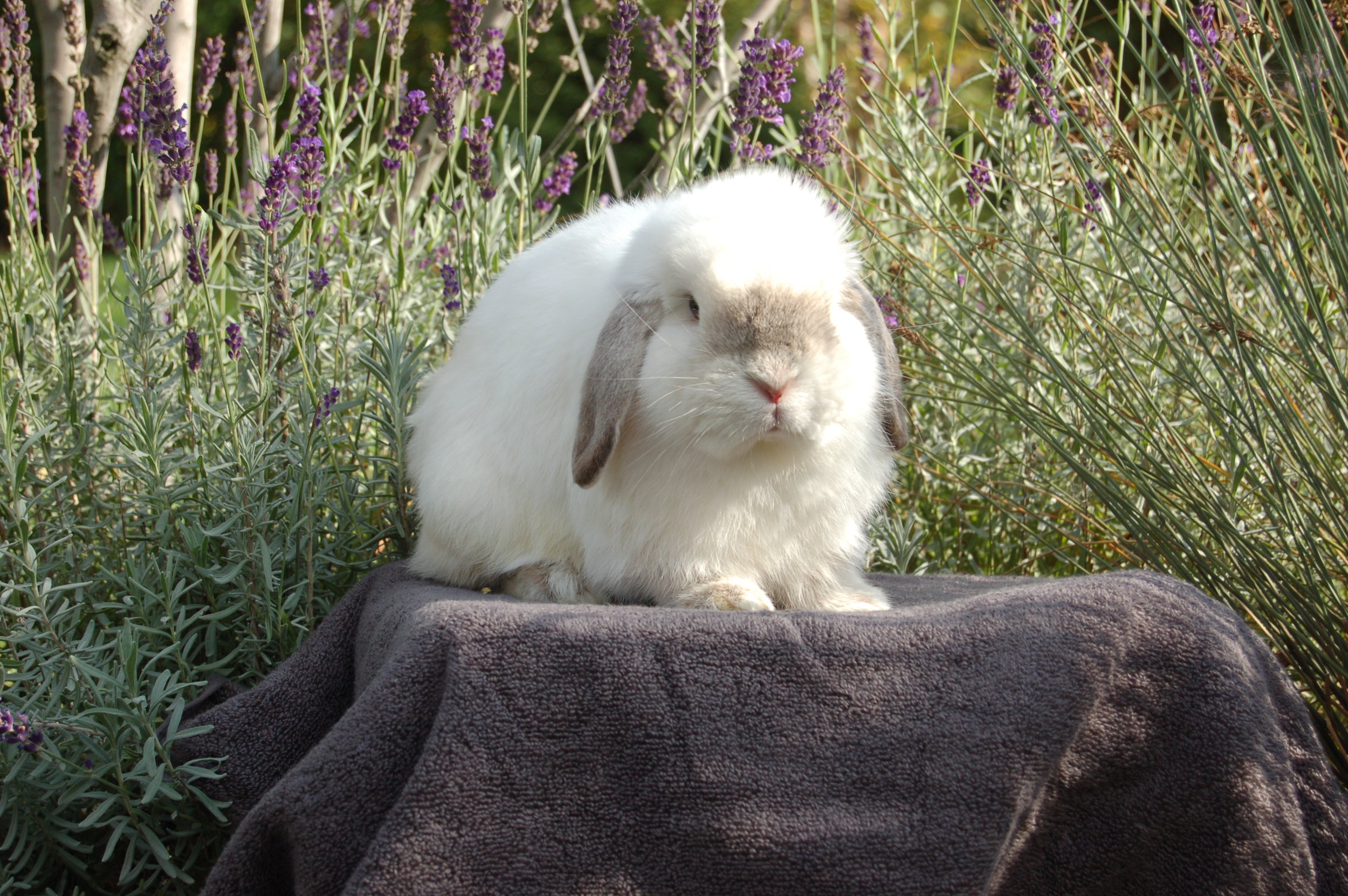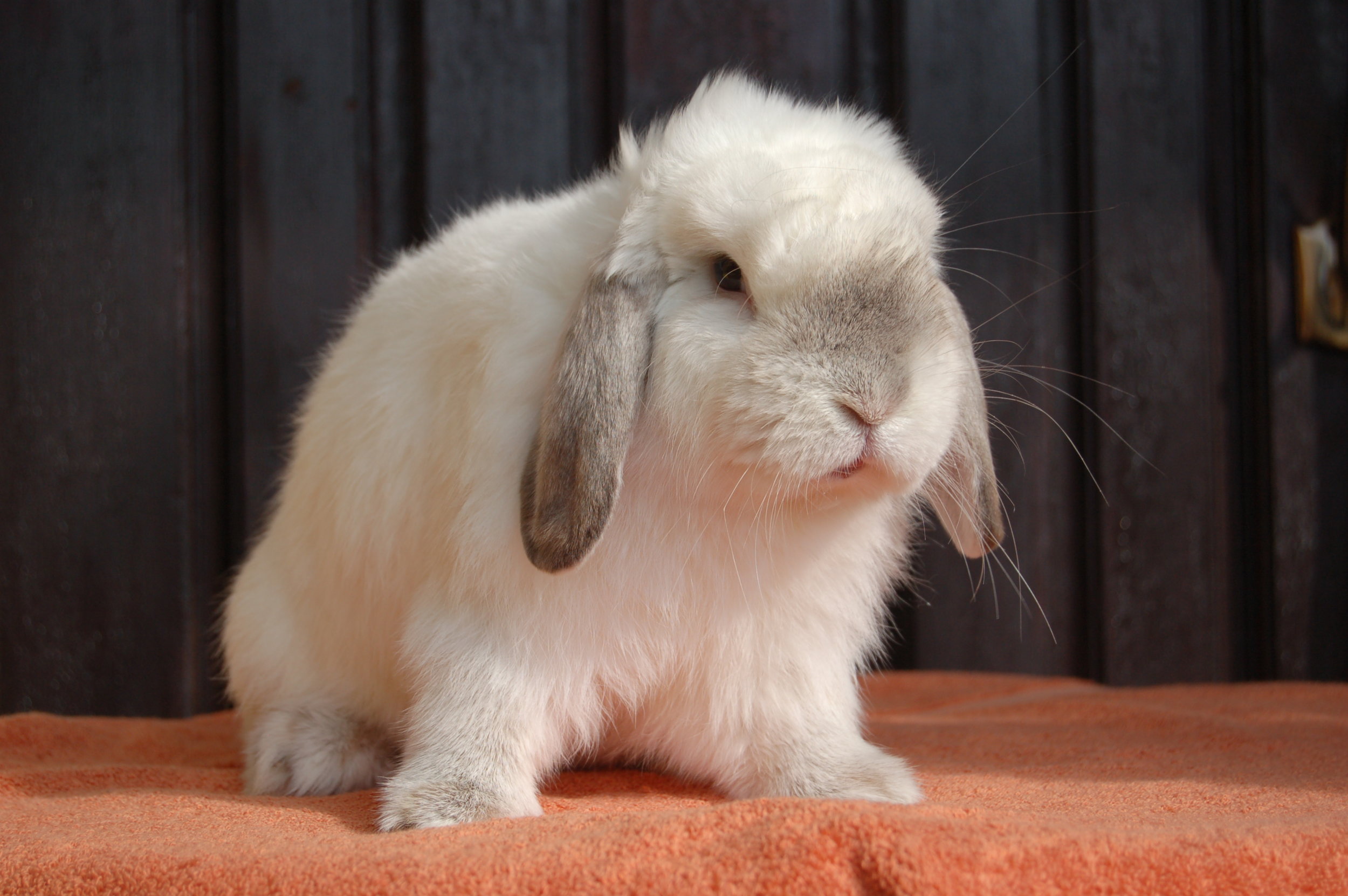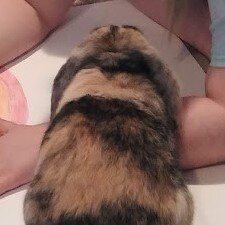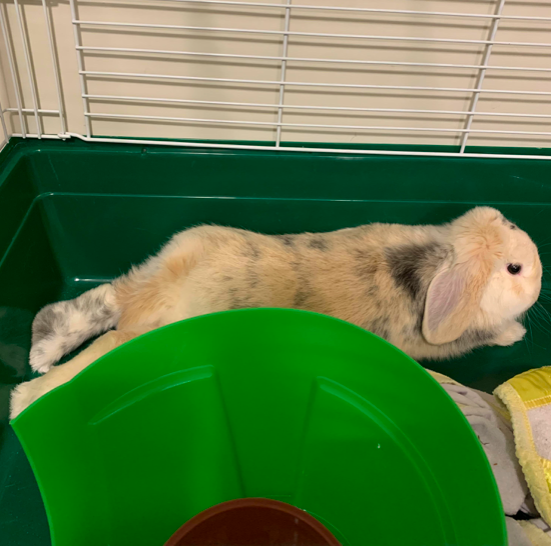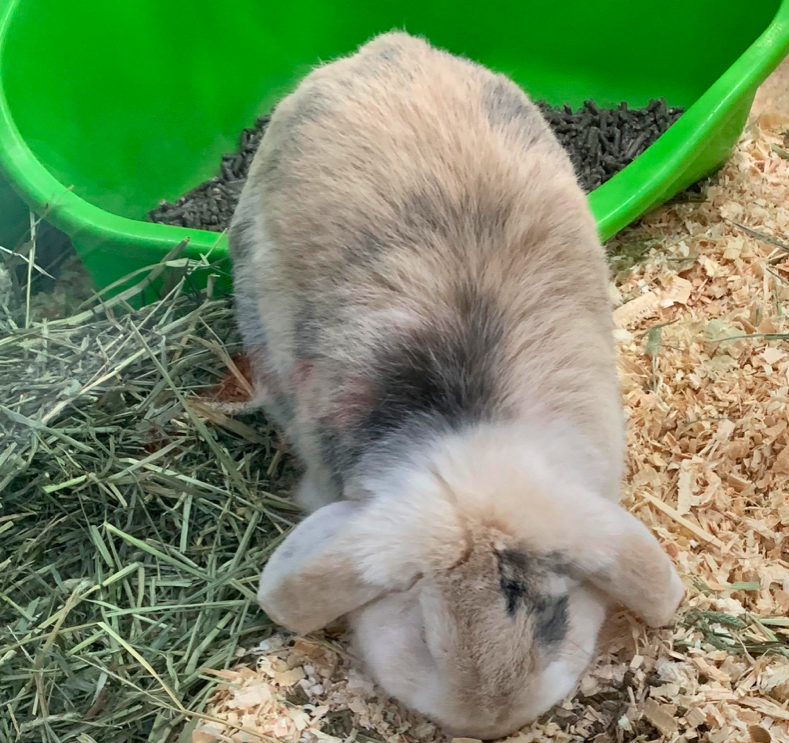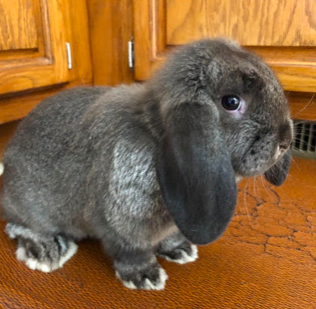Color Guide
Holland lops come in so many colors, it can be confusing trying to figure them out. Since we have had some pretty weird ones, we decided offer a guide to help you identify and learn about rabbit colors. It's not an exhaustive list, so feel free to email me at bunnyjeans101@gmail.com if you have questions or would like to add your bunny's picture to our guide.
Scroll down to the bottom of the page for a list of colors we don’t have pictures for.
Agouti
Chestnut:
A_B_C_D_E_
The classic wild rabbit color, chestnuts are the most common of all the agouti colors.
Eye color: Brown
Kit Coloring: Newborns are often entirely black with the exception of their agouti or broken markings. As they age, they lighten into a medium brown.
Adult Coloring: Adult chestnuts can range in shades of brown with dark ticking across their coat. An orange intermediate band of color is present on each hair, and can be seen on mid length fur near the nape and muzzle. They have a gray undercoat that may be visible on their sides, ears, and face where the fur is shorter.
Opal:
A_B_C_dd_E_
Opal rabbits have rich blue coats with agouti markings.
Eye color: Blue/gray
Kit Coloring: Newborns are blue with the exception of their agouti or broken markings. As they age, they grow out their ticked blue fur and fawn markings.
Adult Coloring: Adult opals have thickly ticked blue fur. A cream intermediate band of color is present on each hair, and can be seen on mid length fur near the nape and muzzle. They have a gray undercoat that may be visible on their sides, ears, and face where the fur is shorter.
Chinchilla
A_B_c(chd)_D_E_
Chinchillas, named after the South American rodent with a similar coloring, are often described as a gray version of chestnuts.
Eye Color: Brown
Kit Coloring: As newborns, chinchillas are dark gray with agouti markings. As their coat grows in, black tipping and white becomes apparent.
Adult Coloring: Adult chinchillas are primarily gray with black ticking across their coat and agouti markings. Two white intermediate bands of color are present on each hair, separated by a short black band. They have a dark gray undercoat that is visible on their sides, ears, and face where the fur is shorter.
Squirrel:
A_B_c(chd)_ddE_
Also known as blue chinchilla, squirrel is one of the rarer colors in holland lops.
Eye Color: Blue/Gray
Kit Coloring: As newborns, squirrels are light gray sometimes verging on pink. When their fur begins to grow in, they are a shimmery blue gray color.
Adult Coloring: Adult squirrels are a blue/gray color with agouti markings. Their darker gray undercoat is visible on their ears and face. Where fur is medium in length, on their chest, sides, and nape, their white intermediate band can be seen. Full length hair shows the white and gray tips to create a distinct look.
Sable Chinchilla:
A_B_c(chl)_D_E_
Sable chinchillas, also known as sable agoutis, combine the shaded genes with the agouti pattern to create a unique look.
Eye Color: Brown
Kit Coloring: As newborns, sable chinchillas are light gray to pink, and easily confused with squirrels. Once their fur begins to grow in, shading becomes visible. They usually develop their adult coloring by six months.
Adult Coloring: Sable chinchillas have a shaded coat with agouti markings. Their dark gray shading visible on their ears, face, and legs. Their coat is tipped with brown that mixes with their white intermediate band. Where fur is medium in length, on their sides, nape and chest, the white is more apparent.
Wideband
Orange:
A_B_C_D_ee
The most popular Wideband color, orange is a classic bright and cheery color.
Eye Color: Brown
Kit Coloring: Newborns are often entirely pink, but a smutty orange may have tort-like shading. As their coat grows in, any shading will become more apparent and their bright color develops.
Adult Coloring: Oranges have a - you guessed it - orange coat with agouti markings. They should have a light orange to off-white undercoat, and a bright orange band that colors the coat. Smutty oranges often have a gray undercoat, causing shorter hair to look darker.
Cream:
A_B_C_ddee
A dilute version of orange, creams are, in my opinion, one of the prettiest wideband colors
Eye Color: Blue/Gray
Kit Coloring: Newborns are usually pink, possibly with minimal shading. As they mature, they develop a the creamy tan color that gives them their name.
Adult Coloring: Creams are a beige color with agouti markings. Similar to oranges, they have a light tan undercoat with a darker outercoat. Smuttier creams may have a blue gray undercoat that can be seen where fur is shorter on their ears, face, and paws.
Frosty:
A_B_c(chd)_D_ee
Also known as frosted pearls, frosty is the lightest color in the wideband group.
Eye Color: Brown
Kit Coloring: Newborns are entirely pink. As they mature, their points will appear light gray, and there may be minimal gray throughout the coat.
Adult Coloring: Adult frosties have a white undercoat with a darker gray tip on their nose, ears, tail, and feet. They may have light gray bands on the tips of their fur where it is longest, on their back.
Sable Frosty:
A_B_c(chl)_D_ee
Because of their similarity to black frosties, sable frosties are often not recognized as a different color.
Eye Color: Brown
Kit Coloring: Newborns are entirely pink. Within the first week they may develop darker points.
Adult Coloring: Sable frosties have dark gray points and a white/gray ticked coloring across their body. Some may have a brown cast to their shading, allowing them to be distinguished from black based frosties.
Self
Black:
aaB_C_D_E_
The most basic of the self category, blacks are a classic color.
Eye Color: Brown
Kit Coloring: Newborn kits are entirely black with no markings. As they mature, their color intensifies.
Adult Coloring: Blacks have a dark slate undercoat and that extends into its jet black coloring. There are no markings.
Blue:
aaB_C_ddE_
The dilute version of black, blues capture the essence of dilute colors in an adorable way.
Eye Color: Blue/Gray
Kit Coloring: Newborn coats are entirely blue/gray with no markings.
Adult Coloring: Adult blues range in intensity. Some may express as dark slate gray, while others are lighter and almost silvery. Their undercoat is usually a lighter blue.
Chocolate:
aabbC_D_E_
Chocolates are just and rich and beautiful as the candy they are named after
Eye Color: Brown
Kit Coloring: As newborns, they have a chocolate coloring that deepens within the first few weeks of development.
Adult Coloring: Adult chocolates have a rich brown surface color with no markings. Their undercoat is a medium gray.
Pictures courtesy of Hot Cross Buns Rabbitry
Lilac:
aabbC_ddE_
Lilacs are a beautiful dusty color and one of the rarer self colors.
Eye Color: Blue/gray
Kit Coloring: Newborns are a light gray color that grows into a lilac shade as the kit matures.
Adult Coloring: Adult lilacs are a dove gray with a pink undertone with no markings. Their undercoat is a lighter dove gray.
Black Tort:
aaB_C_D_ee
The most common color in holland lops, Black torts are well developed and easy to find in good form. Though they may appear to be shaded, they do not possess any shaded genes.
Eye Color: Brown
Kit Coloring: Newborns range from pink to light brown with darker shading on their sides. As they mature, their coat darkens.
Adult Coloring: Adult black torts have a rusty brown surface color and a light slate blue undercoat. Their undercoat is visible where fur is shorter, on their sides and face. They have dark brown shading on their ears, muzzle, paws, and tail.
Blue Tort
aaB_C_ddee
Blue torts have a color similar to cream in its soft tan coloring.
Eye Color: Blue/gray
Kit Coloring: Newborn kits are usually pink with blue shading. As they mature, they quickly develop their adult coloring.
Adult Coloring: Blue torts have a creamy beige surface color and a blue/gray undercoat. Their points are shaded with a deeper blue color.
REW (Ruby Eyed White):
____cc____
Ruby eyed whites are what’s known as albino in other species. Their homogenous “cc” genes are able to mask all other genes to create an entirely white coats.
Eye Color: Red pupil with a pink iris
Kit Coloring: Newborn REW kits are entirely pink. After a week or two, their white fur grows in and red eyes open and allow for easy identification.
Adult Coloring: Adult REWs are pure white. Shorter fur on their ears and nose may cause their skin to show through and appear pink.
BEW (Blue Eyed White):
__________vv
Pure white with striking blue eyes, BEWs are a rare and unique color. Two Vienna (v) genes mask the rest of their genotype, similar to the albino gene.
Eye Color: Blue
Kit Coloring: Newborn BEW kits are entirely pink. After a week or two, their white fur grows in and red eyes open and allow for easy identification.
Adult Coloring: Adult BEWs have pure white fur with no markings.
Shaded
Seal:
aaB_c(chl)c(chl)D_E_
Seals are the darkest of the shaded colors, and can easily be confused with blacks as kits or darker adults. When trying to differentiate the two, there are a couple main differences if you do not see shading. Seals have chocolaty brown fur on the bottom of their feet, while blacks have gray. Seals also have a ruby cast to their eyes unlike blacks.
Eye Color: Brown
Kit Coloring: Newborns are entirely black. As their fur grows in, they may appear slightly shimmery and have a brown cast to their coat. Their adult shading often does not become apparent until around 5-6 months.
Adult Coloring: Adult seals have a dark back, ears, and paws. Their sides have a slightly lighter color. They do not have any bands in their fur, and the color dictated by the shading extends all the way down the hair shaft. Depending on the lighting and molt, their color may range in darkness. For example, Bear, the holland in the last two pictures, appears lighter than the average seal. Alvey, the holland pictured just before, has a more characteristic coloring.
Blue Seal:
aaB_c(chl)c(chl)ddE_
A lesser known color in the shaded family, blue seals are similar to blues but with similar traits as black seals.
Eye Color: Blue/gray
Kit Coloring: Newborn kits are dark blue with no markings. As the fur grows in, they develop a shimmery cast to their blue coat. There shading may not become apparent till 5-6 months.
Adult Coloring: Adult blue seals have shiny, sleek blue coats that lightens slightly on the sides and stomach. Their dark color extends through the entire hair shaft. They look similar to blues, but variation on their coat and the silver shine all seal kits have can help tell them apart.
Smoke Pearl:
aaB_c(chl)_ddee
Smoke pearls are named for their beautiful shimmery coloring.
Eye Color: Blue/Gray
Kit Coloring: Newborn kits are light gray with slightly darker points. As their coat grows in, they develop a shiny gray color.
Adult Coloring: Adult smoke pearls have a rich pearl gray color that lightens on their sides and belly. They have deeper blue shading on their ears, nose, paws, and tail. Their undercoat slightly lighter than the end of the hair shaft
Siamese Sable:
aaB_c(chl)_D_E_
Siamese sables are a beautiful dark brown silver with shaded variance throughout their coats.
Eye Color: Brown
Kit Coloring: Newborn kits usually have a dusty brown color with darker points. As they mature, their coat develops a slight shimmer. Their shading may not become apparent until around 5-6 months.
Adult Coloring: Adult siamese sables have dark points and light sides, chest, and stomach. Their undercoat is slightly lighter than the tip of the hair shaft.
Sable Point:
aaB_c(chl)_D_ee
Sable points vary in shade, but their dark points create a beautiful contrast.
Eye Color: Brown
Kit Coloring: Newborn sable points a primarily pink with darker shading on their points and sometimes side.
Adult Coloring: Adult sable points have an off-white color across their body with a lighter stomach and dark brown points. Smuttier sable points may have shading on their sides.
Blue Point:
aaB_c(chl)_ddee
Blue point, though not a showable color, is one of the prettiest of the shaded category.
Eye Color: Blue/gray
Kit Coloring: Newborn blue points are primarily pink with light gray shading on their points. As they mature, they develop a light cream coat with medium slate blue points.
Adult Coloring: Adult blue points have an off white coat with blue gray points. They should have a slightly lighter stomach and undercoat, and may have shading on their sides.
Tan Pattern
Black Otter:
a(t)_B_C_D_E_
One of the most distinct colors in the tan pattern category, black otter’s stark contrast and markings sets them apart.
Eye Color: Brown
Kit Coloring: Newborn black otters are black with tan pattern markings. As they mature, ticking and an orange nape may develop.
Adult Coloring: Adult black otters have shiny black coats, white bellies, and orange markings on their nape. They also have orange ticking on their chest, legs, and sides.
Blue Otter:
a(t)_B_C_ddE_
Eye Color: Blue/gray
Kit Coloring: Newborn kits have a light blue coloring with tan pattern markings. As their fur grows in, they develop a deeper coloring, brighter markings, and ticking.
Adult Coloring: Adult blue otters have a deep blue coat with white tan pattern markings and a fawn nape and ticking. The undercoat of the white fur is a slate blue color.
Black Silver Marten:
a(t)_B_c(chd)_D_E_
Black silver martens are similar to black otters genetically, but the c(chd) gene removes the orange coloring.
Eye Color: Brown
Kit Coloring: Newborns are black with tan pattern markings, often confused for black otters. Once their fur grows in, they will be entirely black and white with no orange.
Adult Coloring: Adult silver martens will have a self black coat and white tan pattern markings. Their white belly will have a gray undercoat. White ticking is usually substantial on the chest, face, lower back, and sides.
Black Seal Marten:
a(t)B_c(chl)c(chl)D_E_
Seal martens, though not a showable color, are not uncommon when breeding with tan pattern genes.
Eye Color: Brown
Kit Coloring: Newborns are usually gray with tan pattern markings. As their fur grows in, they develop a chocolate tinted color and light ticking.
Adult Coloring: Adult seal martens have a color pattern similar to that of a seal and white tan pattern markings. They have white ticking on their chest, sides, face, and lower back.
Black Sable Marten:
aaB_c(chl)_D_E_
Like seal martens, sable martens are unshowable. They are not uncommon in any tan pattern lines containing sable genes, however, so it is good to know what they look like.
Eye Color: Brown
Kit Coloring: Newborns have a light gray brown color with tan pattern markings. As their fur grows in, ticking and shading will become visible.
Adult Coloring: Adult Sable martens have gray shading with hints of brown throughout and white tan pattern markings. Their shading may vary depending on their molt or genetics, and some may be as contrasted as adult siamese sables.
Seal Point Marten:
aaB_c(chl)c(chl)D_ee
Sable point martens can easily be confused with sable points, but white tan pattern markings are a distinguishing factor.
Eye Color: Brown
Kit Coloring: Newborns will be mostly pink with light shading on their points and sides. As they develop, their points will darken and white ticking will be visible.
Adult Coloring: Adult seal point martens will have an off white coat with moderate shading and white tan pattern markings. White ticking can be seen in darker areas.
Sable Point Marten
a(t)_B_c(chl)_D_ee
Sable point marten is one of the lightest colors in the tan pattern category.
Eye Color: Brown
Kit Coloring: Newborns are usually entirely pink, but may have light shading on their points. When their fur grows in, their points darker substantially.
Adult Coloring: Adult sable point martens will be almost entirely white with brown/gray shading on their points. They can easily be confused for frosties, but white ticking on their points can distinguish them. If your frosty has been producing otters and martens rather than agouti colors, it is probably a sable point marten.
Harlequin/Tri
Black/Orange Harlequin
A_B_C_D_e(j)
One of the most endearing patterns, black orange harlis are the tigers of the bunny world. Admittedly they don’t have a striking resemblance to any fearsome wild cats, but Hollands rarely do.
Eye Color: Brown
Kit Coloring: Newborns are pink with dark stripes across their bodies. As their fur grows in, the pink becomes orange crossed with black stripes
Adult Coloring: Adult black/orange harlis are pretty much what their name suggests. An orange coat striped with full or partial black bands.
Blue Fawn Harlequin
A_B_C_dde(j)_
Blue fawn harlequins have a pattern identical to orange/black harlis, but have muted blue and tan tones instead.
Eye Color: Blue/gray
Kit Coloring: Newborns are pink with dark stripes across their bodies. As their fur grows in, the pink becomes cream crossed with blue stripes
Adult Coloring: Adult blue/fawn harlis are pretty much what their name suggests. A cream/fawn coat striped with full or partial blue bands.
Steels
Silver Tipped Steel:
A_ B_ c(chd_ D_ EsE
One of the most unique colors, silver tipped steels have thick black coats tipped with silver.
Eye Color: Brown
Kit Coloring: Newborns are dark gray to black. As their fur grows in, silver ticking will become apparent
Adult Coloring: Black fur ticked with silver.
Have a picture you would like to submit to our color guide? Email us at hickoryridgehollands@gmail.com
Most of the pictures we display here are from our own rabbitry. Since there are hundreds of recognized and unrecognized genotypes, we do not have every color. If you have pictures from the following categories, or of other colors we do not have listed, send them to us to be featured!
Tri/Harlequin family
Steel family
Pointed white family
Chocolate based colors
Dilute martens
BEW
Lynx
Opal
Red

